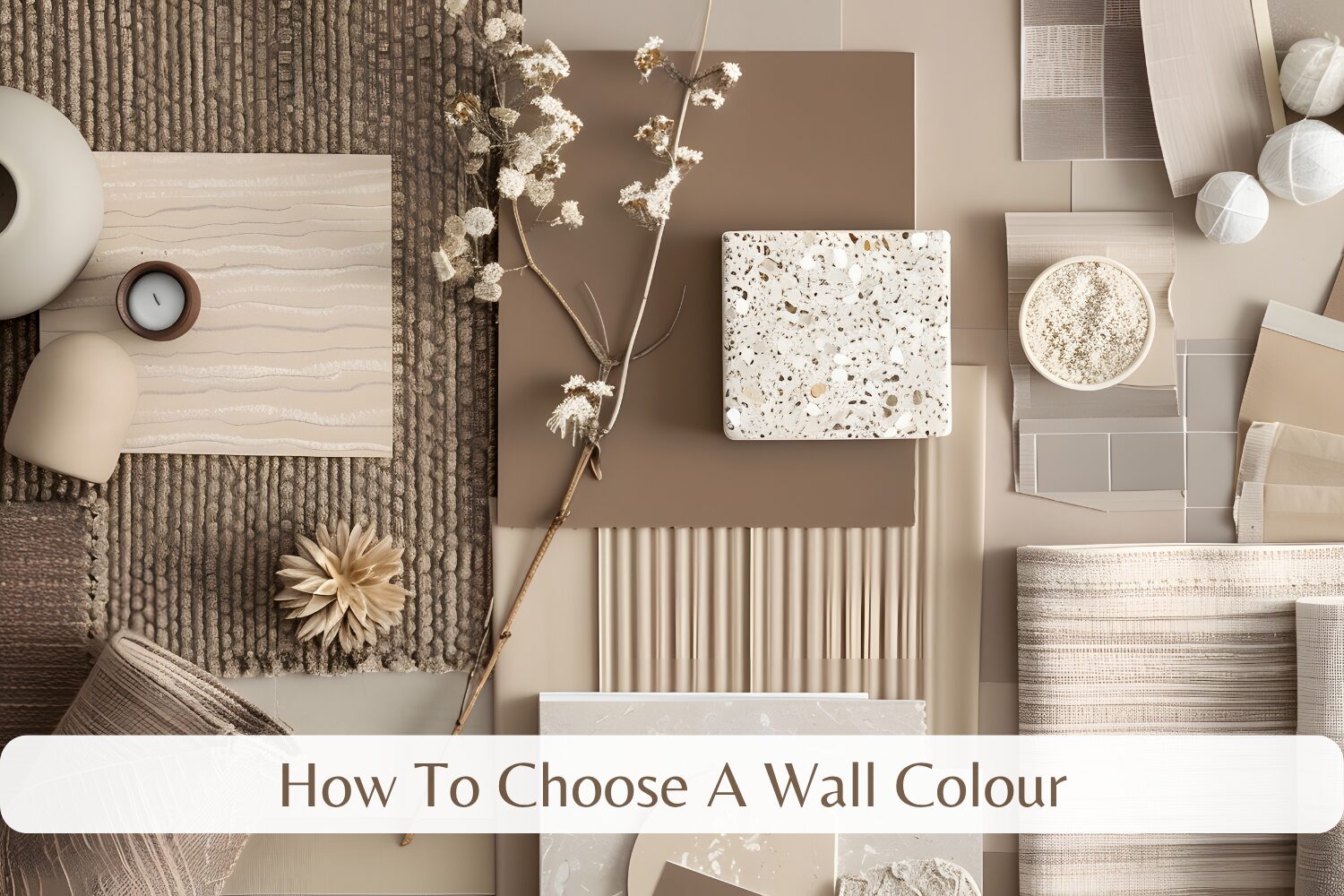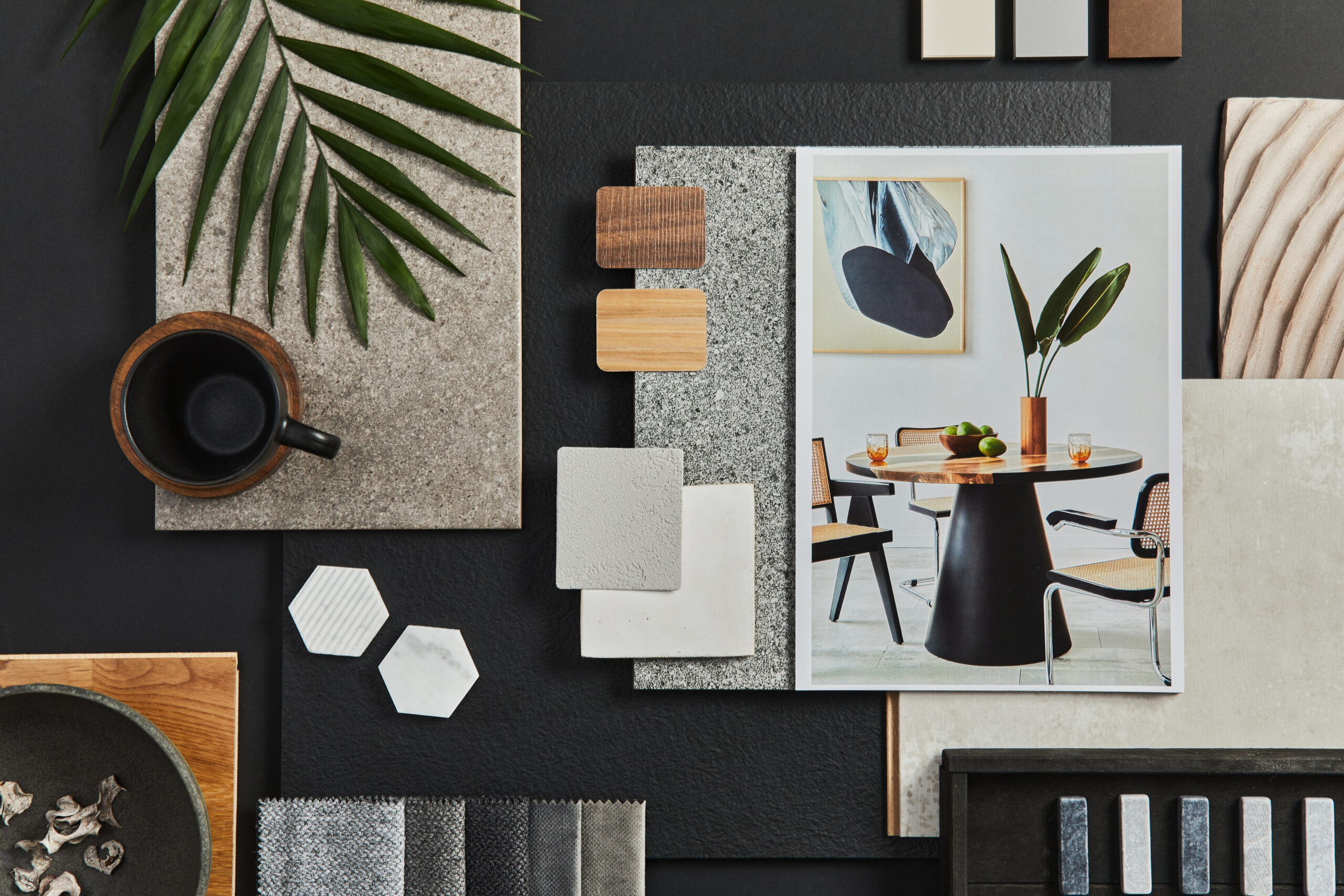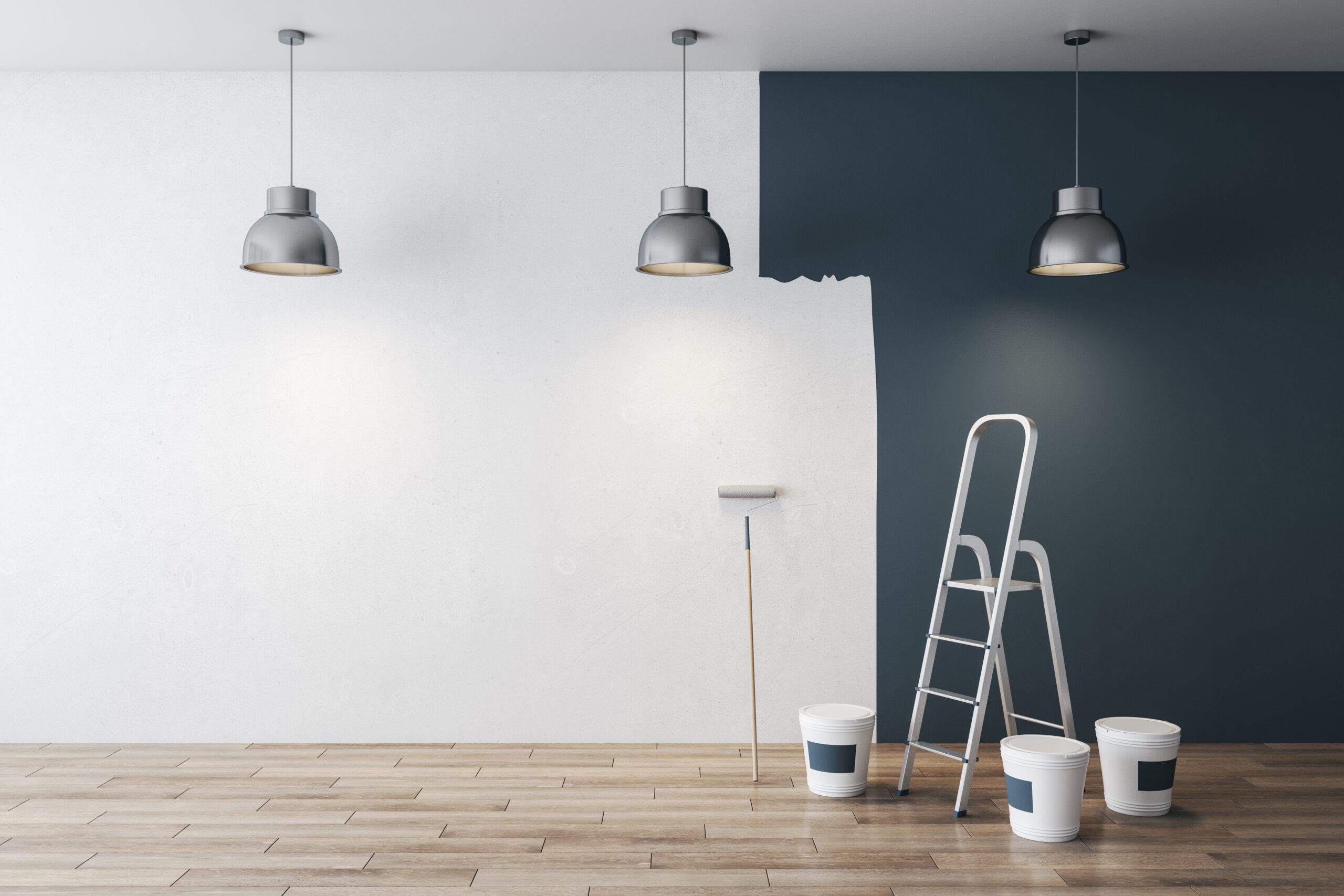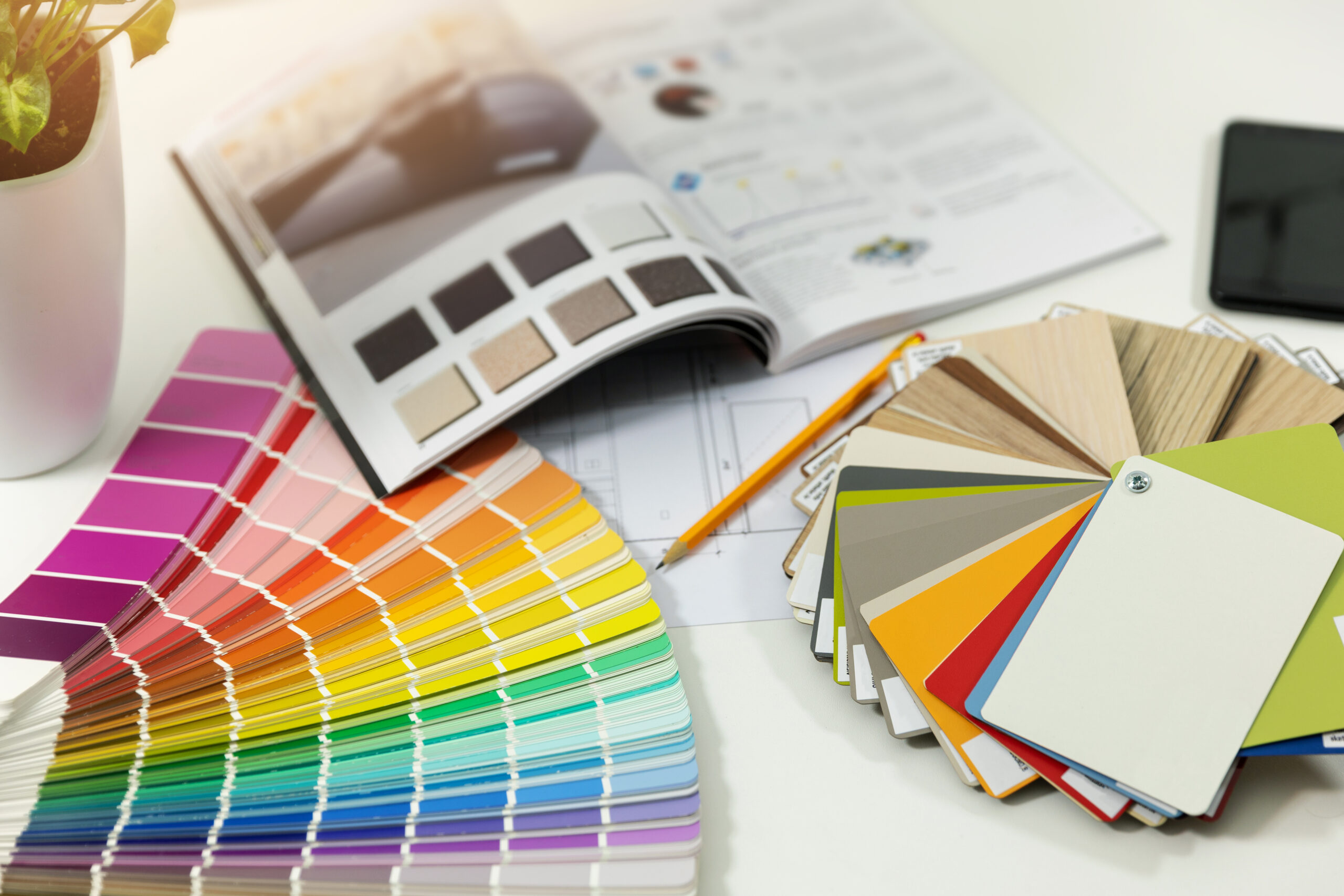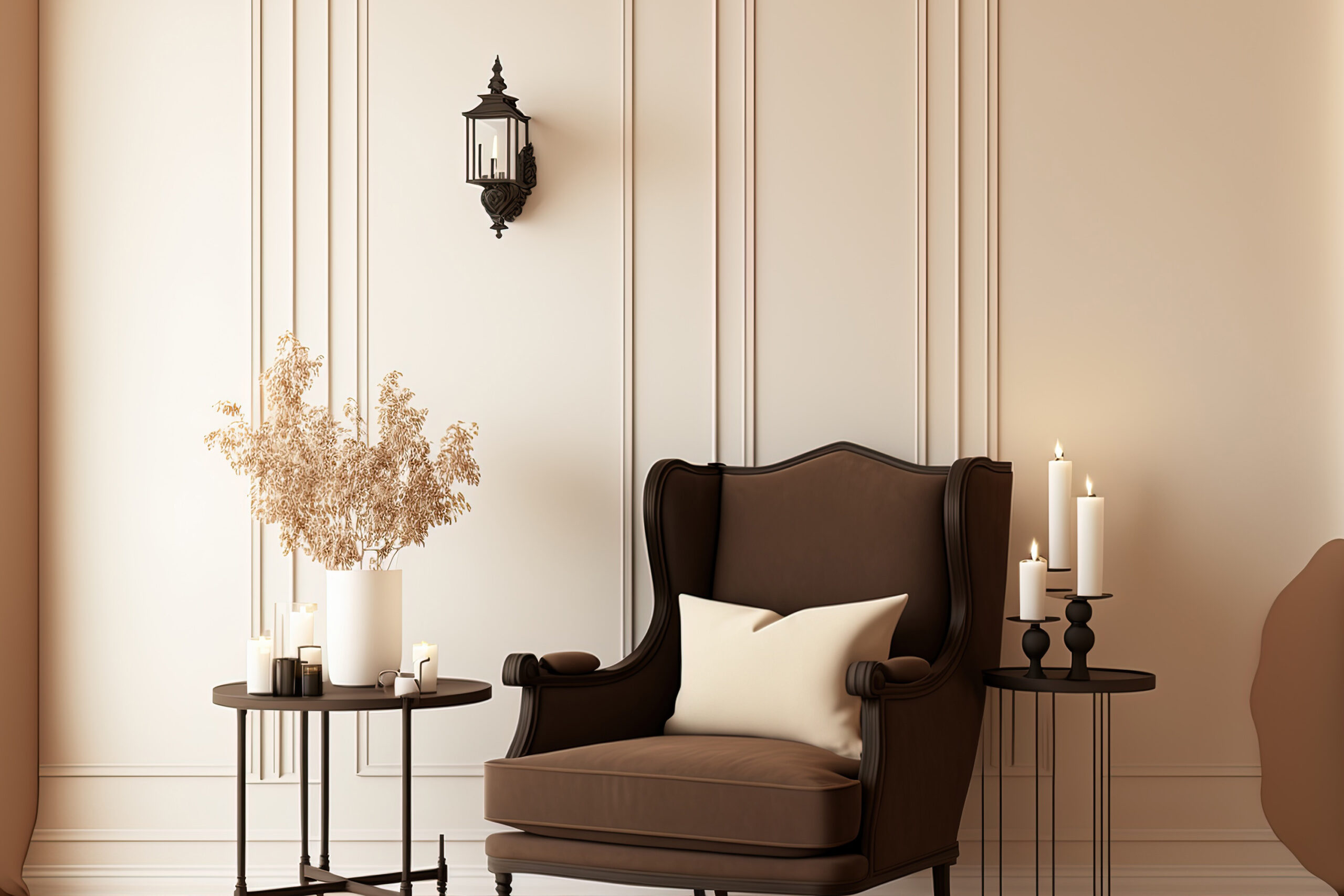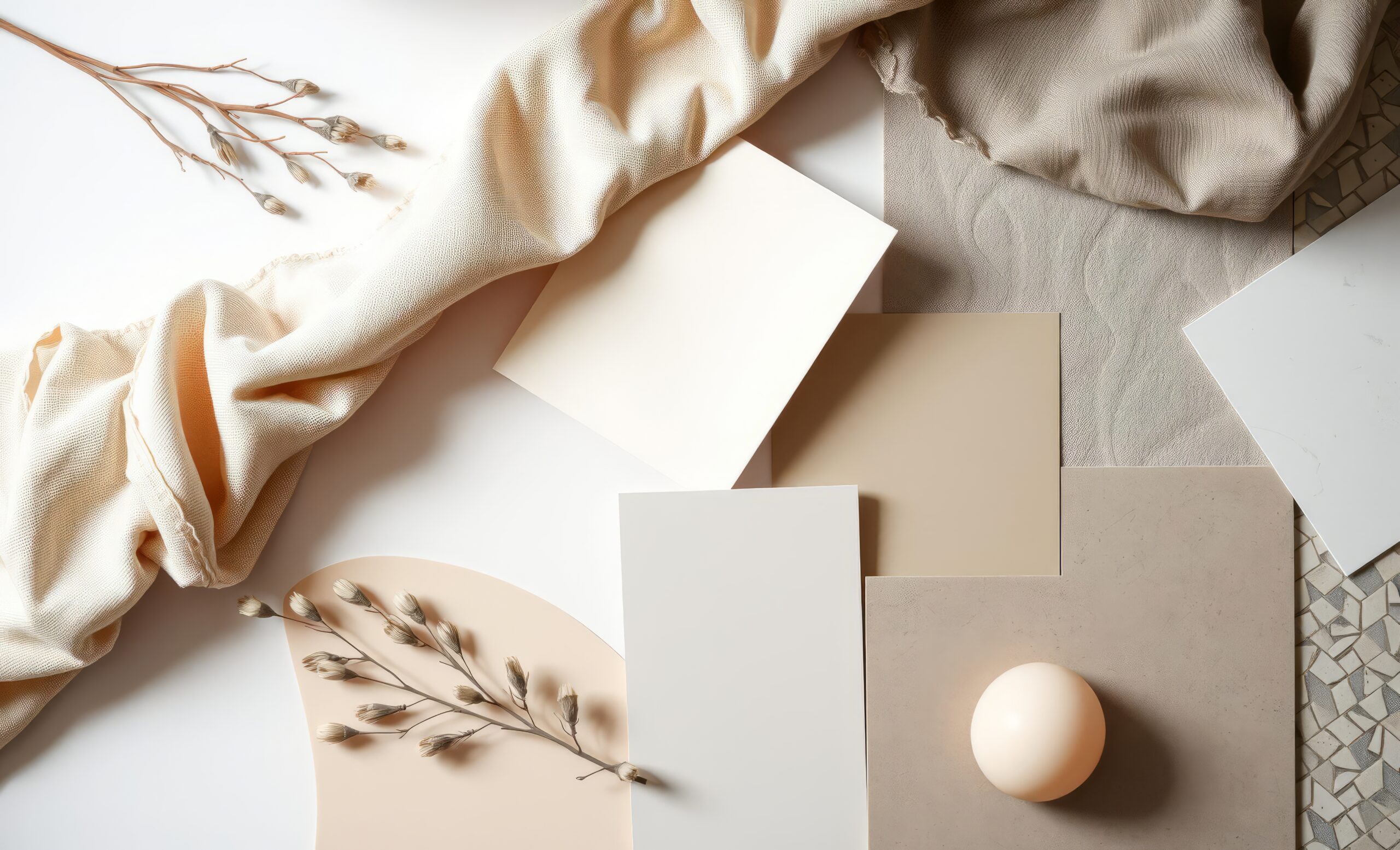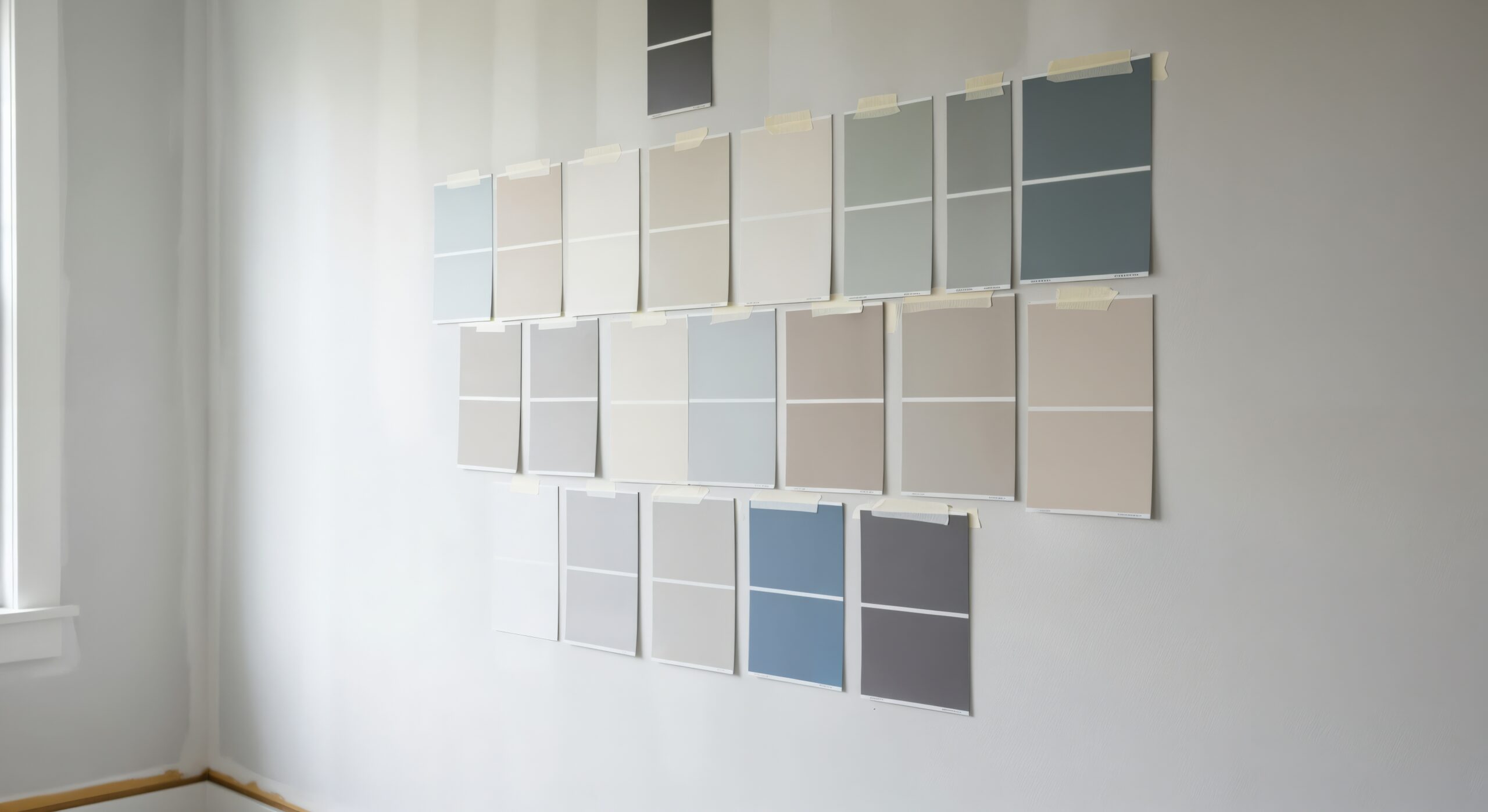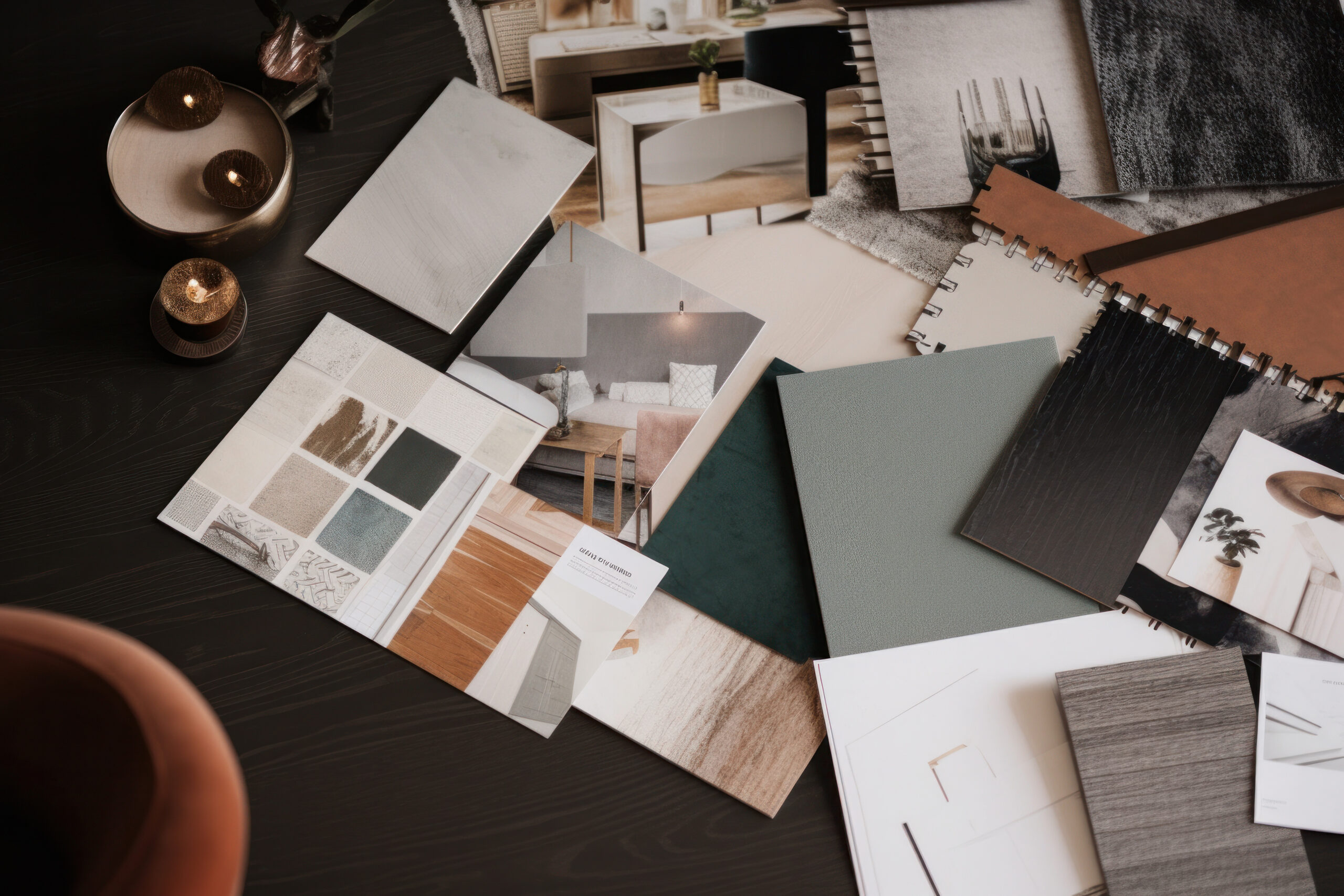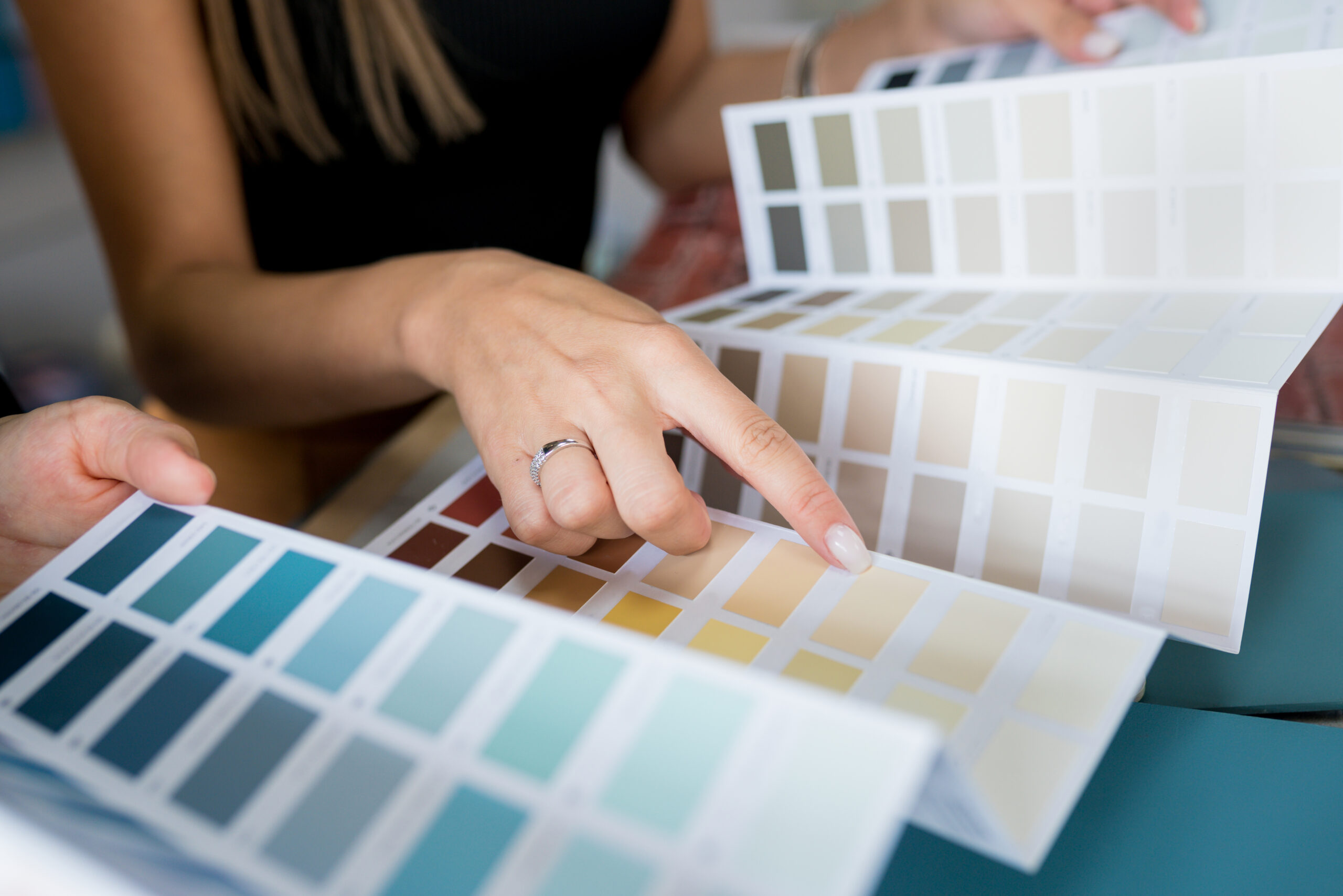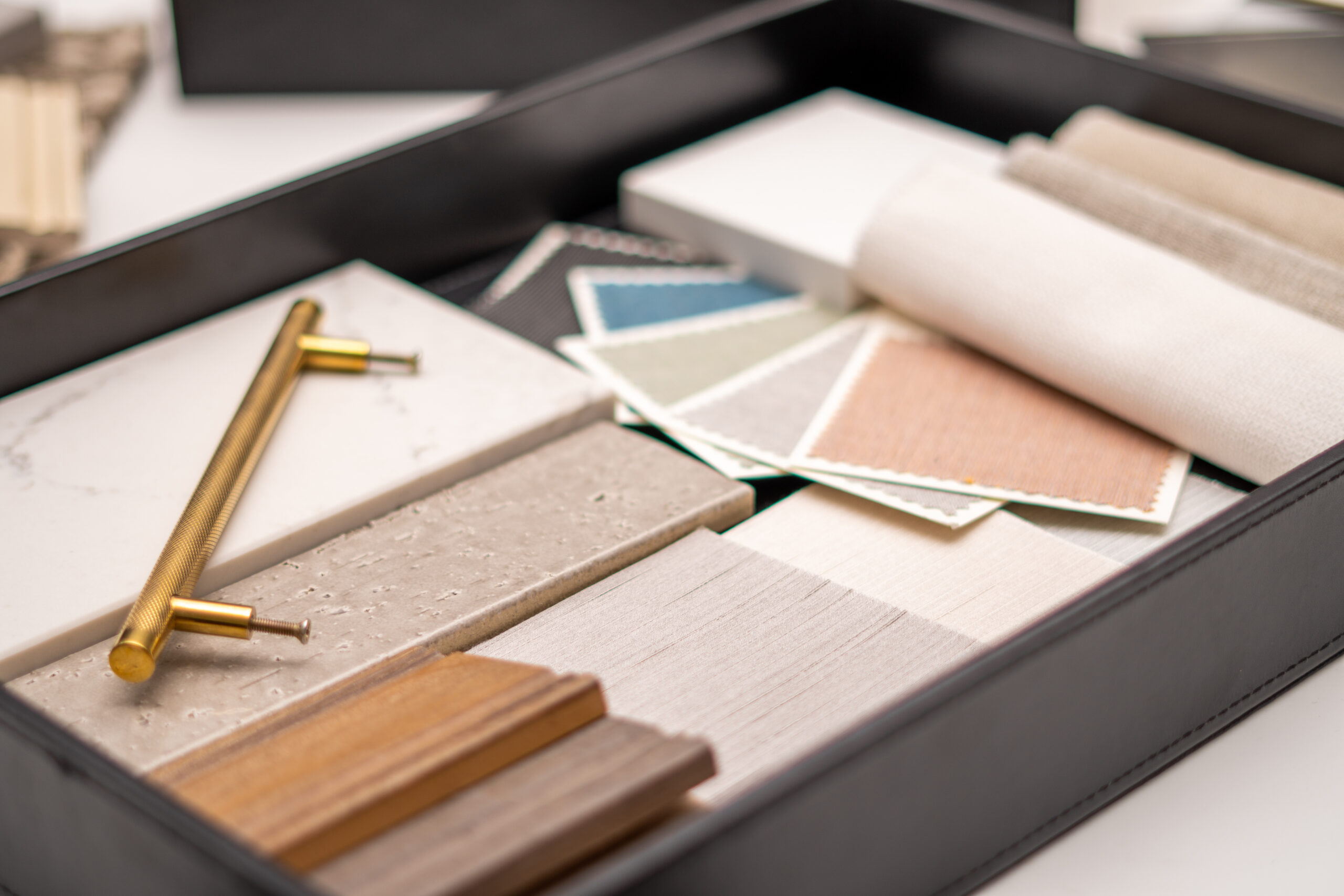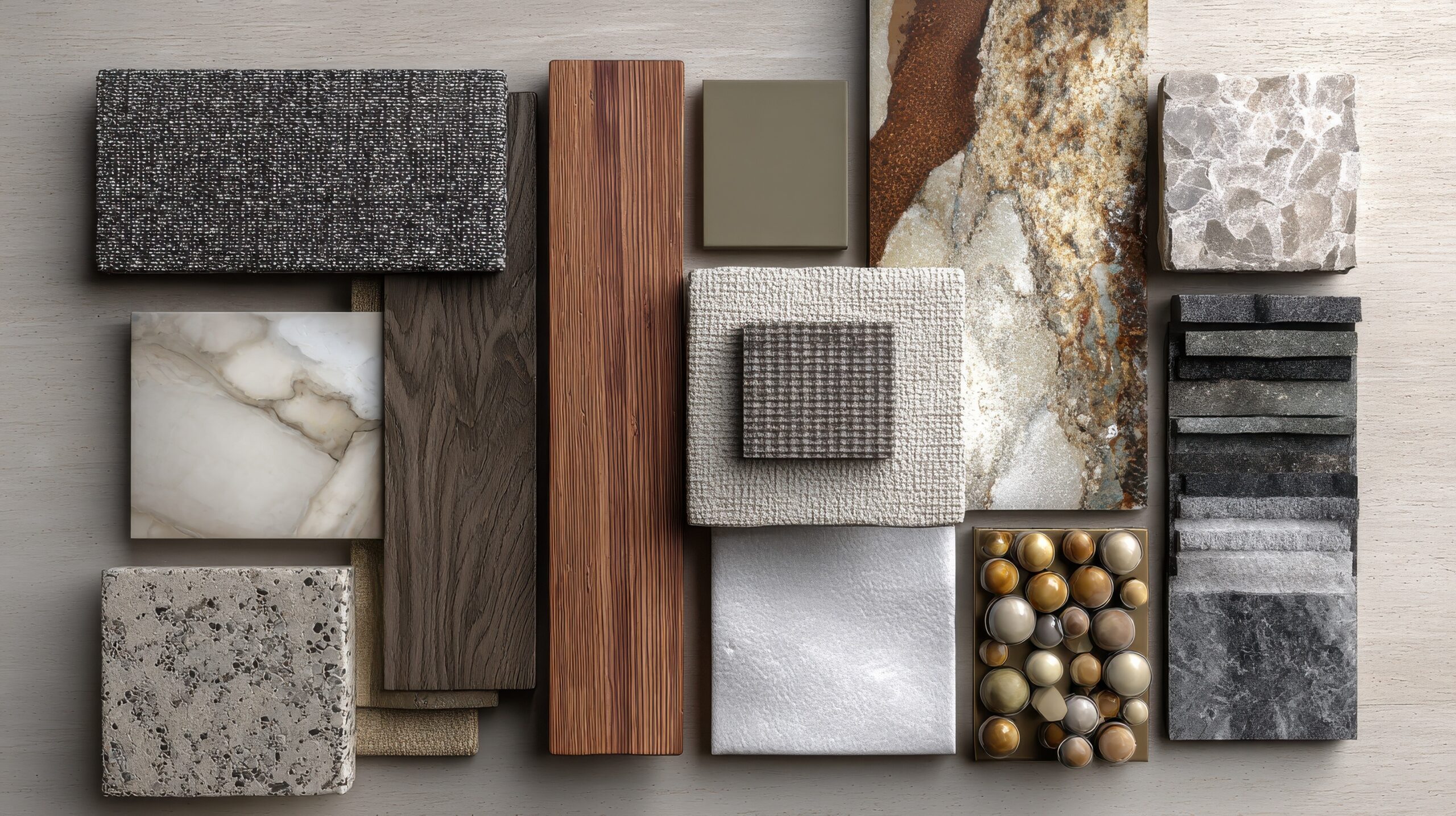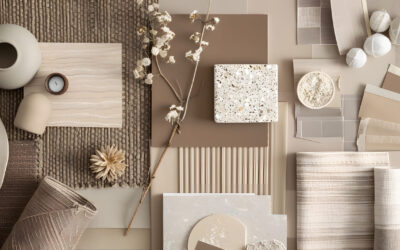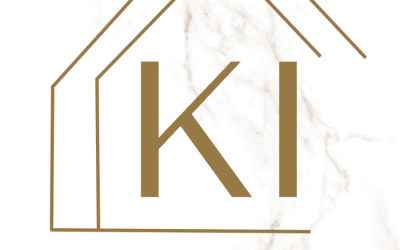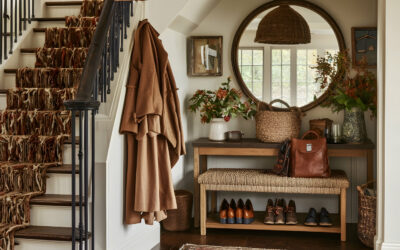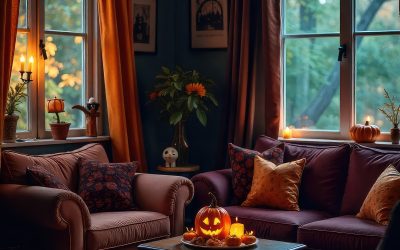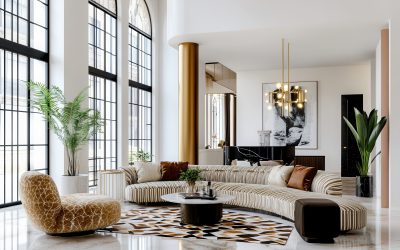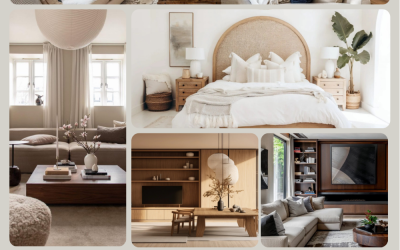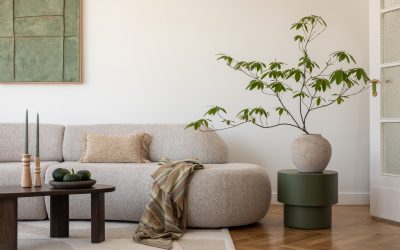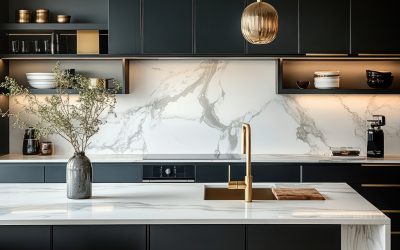
by Kesaa Interiors | Colour & Material Trends, STYLES & TRENDS
Introduction
One of the most exciting parts of decorating your home is learning how to choose a wall colour that truly fits your space. The right shade can make a room feel calm, warm, bold, or bright; it sets the tone for everything else in your design.
Choosing paint isn’t just about what looks good on a swatch. It’s about how colour interacts with light, furniture, and the overall mood of your home. With so many options out there, it’s easy to feel unsure where to start, but by following a simple step-by-step approach, you can make smart choices that look and feel right. This guide breaks down the 9 steps that will help you confidently find a wall colour that complements your space and your personal style.
Read Along To Learn How To Choose A Wall Colour.
Step 1 – Get Inspired by Your Space
Before you even think about paint chips or sample pots, start by looking at what’s already in your room. Every element in your space, furniture, flooring, fabrics, and artwork, offers clues to the colours that will naturally work well together.
When figuring out how to choose a wall colour, let your current space be your guide.
A few ways to find colour inspiration:
- Look closely at your furniture and décor. What tones stand out in your favourite pieces?
- Notice your flooring. Warm timber floors often pair beautifully with earthy neutrals, while cool tiles look great with soft greys and blues.
- Study your artwork or textiles. Cushions, rugs, and wall art can inspire accent tones or overall palettes.
- Save what catches your eye. Use Pinterest or mood boards to collect images that capture the feeling you want in your room.
Once you’ve gathered some inspiration, notice any patterns; are you drawn to warm, earthy tones or cooler, coastal shades? This gives you a good starting point for exploring specific paint colours later on.
Pro Tip:
Hold paint cards or small colour samples next to key items in your room (like your sofa, flooring, or curtains). Seeing tones side by side helps clarify which direction to take before you even open a tin of paint.
Step 2 – Understand Natural and Artificial Light
Light is one of the biggest influences on how a wall colour looks once it’s on your walls. The same shade can appear completely different in a north-facing room compared to a cosy, low-light space. This is why understanding how light affects colour is a key part of learning how to choose a wall colour that actually works for your home.
Start by observing your space at different times of day. Watch how the light moves and shifts, and notice whether it tends to be warm and golden or cooler and more neutral.
Here’s how to factor light into your choice:
- North-facing rooms: Usually receive softer, cooler light. They often suit warmer tones like beige, taupe, or creamy whites that add warmth.
- East-facing rooms: Catch the morning sun, which can make colours look brighter early in the day and cooler in the afternoon.
- West-facing rooms: Tend to glow in the afternoon with a warmer hue, so soft blues and greys can balance that richness.
- South-facing rooms: Get strong, consistent light, so most colours work well, though you may want to avoid pure whites that can feel stark.
Artificial light plays a role too. Bulbs with a yellow tint (warm light) will bring out warm undertones in your paint, while cool LED lighting can make blues or greys appear sharper.
Pro Tip:
Always test your paint samples on at least two walls and look at them during different times of day. What looks perfect in daylight might feel completely different under evening light, so take the time to live with your samples before deciding.
Step 3 – Learn About Undertones
Once you’ve considered light, it’s time to understand what’s really happening underneath each colour. Undertones are the subtle hues within a paint colour that can shift its overall look, and they’re often what makes or breaks your decision when learning how to choose a wall colour.
Even when two paints look “white” or “grey,” they may have very different undertones. One might lean slightly blue, while another has a hint of yellow or pink. The key is noticing these subtle variations and understanding how they interact with your furnishings and light.
A simple guide to undertones:
- Warm undertones: Include red, yellow, or orange bases. These create a cosy, welcoming feel.
- Cool undertones: Include blue, green, or violet bases. These tend to feel fresh, calm, and airy.
- Neutral undertones: Sit somewhere in between. Ideal when you want a balanced backdrop that works with both warm and cool décor.
When comparing paint cards, place them next to a true white sheet of paper to reveal their undertones more easily. This trick helps you see which direction the colour leans without being influenced by surrounding tones.
Pro Tip:
If you’re unsure, test a few shades within the same colour family on your wall. Seeing them side by side will quickly show which feels best with your natural light and existing décor.
Step 4 – Align Colour with Mood and Purpose
Every room in your home has a purpose, and the colour on the walls should support that. When you’re deciding how to choose a wall colour, think beyond just how it looks; consider how you want the space to feel. Colour affects mood more than most people realise. A soothing tone can calm a busy mind, while something more vibrant can uplift your energy.
Here’s a quick guide to matching mood with space:
- Bedrooms: Soft, muted tones like warm greys, sage greens, or gentle blues encourage rest and relaxation.
- Living areas: Warm neutrals and mid-tone colours make spaces feel inviting and cosy.
- Kitchens: Crisp whites, light greys, or pale yellows can create a sense of cleanliness and vibrancy.
- Home offices: Greens and blues support focus and balance, both calming yet slightly energising.
- Bathrooms: Lighter, airy shades can make small areas feel more open and fresh.
When it comes to how to choose a wall colour, the goal is to match the emotional energy of the room to the function of the space. A colour that’s perfect for your study may not suit the relaxed, restful vibe of a bedroom.
Pro Tip:
If you’re drawn to a bold or dark shade, consider using it on one feature wall rather than the entire room. It gives character and depth without overpowering the space.
Step 5 – Consider the Room’s Style and Architecture
The architectural design of your home plays a big role in how different colours behave. A wall colour that looks stunning in a sleek apartment might feel completely out of place in a heritage-style home. This step in how to choose a wall colour is about letting the structure and style of your home guide your palette.
Consider these points:
- Classic or heritage homes: Rich creams, muted greens, and soft blues often complement traditional details like wainscoting or high ceilings.
- Modern spaces: Clean neutrals, crisp whites, or dramatic contrasts such as charcoal and pale grey align well with streamlined designs.
- Coastal or relaxed interiors: Natural tones like sand, stone, and muted aqua enhance light and openness.
- Industrial-style settings: Charcoal greys, muted browns, and warm whites tie in with the textures of concrete and metal.
By aligning your choices with your home’s features, you’ll create a colour story that feels organic and unified rather than forced.
Pro Tip:
Don’t forget fixed features like flooring, cabinetry, and trim. These are often expensive to change, so choose a wall colour that complements them instead of competing.
Step 6 – Test Paint Samples Properly
Even the most carefully chosen paint colour looks different once it’s on your actual walls. Light, texture, and the size of the space all influence perception. This is one of the most important parts of learning how to choose a wall colour that truly fits your space.
How to test your samples effectively:
- Paint directly on the wall: Use at least a 60cm patch on different walls, especially where light changes.
- Label your samples: Include both colour name and brand so you can easily compare later.
- View at different times: Look at the samples in morning light, midday brightness, and evening lamplight.
- Live with it: Spend a few days around the samples to see how they feel before committing.
Stepping back and seeing those patches under different conditions gives a realistic idea of how the colour interacts with the rest of your room.
Pro Tip:
Avoid painting over old colours when testing, as they can distort how your new sample reads. Instead, prime a small area first or use large sample sheets to get a true sense of tone.
Step 7 – Balance with the Rest of Your Palette
Once your wall colour samples are looking promising, it’s time to step back and see how they fit within your room’s overall palette. A paint colour never stands alone; it needs to work in harmony with every other tone in the space. Getting this balance right is central to understanding how to choose a wall colour that feels cohesive and intentional.
Think about these key points:
- Use the 60-30-10 rule:
- 60% main colour (usually the walls)
- 30% secondary colour (like furniture or curtains)
- 10% accent colour (decor, cushions, artwork)
- Check the undertones across materials: Make sure your wall colour’s undertone doesn’t clash with flooring, cabinetry, or metal finishes.
- Repeat colours subtly: Pull a shade from artwork, fabric, or a rug into your wall colour to create a sense of flow.
- Keep contrast in mind: A bit of difference between your wall colour and trim or ceiling colour adds dimension and polish.
Balancing colours doesn’t mean everything has to match; rather, it’s about creating an easy visual rhythm throughout the room. When learning how to choose a wall colour, trust that small details, like the reflection of a rug’s tone or brass hardware, can subtly affect how a paint colour reads.
Pro Tip:
If you’re unsure about how your colour palette ties together, lay fabrics, materials, and paint swatches side by side on a flat surface. Step back and look at them as a single unit; this simple trick can reveal imbalances before you commit.
Step 8 – Think About Finish and Paint Quality
Finish can completely change how a wall colour looks and performs. Even with the perfect shade, the wrong finish can alter the feel or practicality of your space. When exploring how to choose a wall colour, make sure to also think about sheen, durability, and how each finish behaves under light.
Common paint finishes and where they work best:
- Matte / Flat: Hides imperfections beautifully, ideal for bedrooms and living rooms.
- Low Sheen / Eggshell: A soft glow that’s easy to maintain, perfect for hallways and family areas.
- Satin: Smooth and slightly reflective, great for kitchens or bathrooms due to its washable surface.
- Semi-gloss / Gloss: Best for trims, doors, and cabinetry — durable and easy to wipe clean.
Higher-quality paint often has stronger pigments and better coverage, which means fewer coats and a longer-lasting result. If you want a rich, even finish that truly shows off your chosen shade, investing in good paint quality pays off.
Pro Tip:
When testing samples, try them in the finish you plan to use. The sheen level can subtly lighten or darken how you perceive the colour once it’s fully dry.
Step 9 – Trust Your Gut
After all the testing, comparing, and analysing, sometimes the best decision is the one that simply feels right. Decorating is both art and intuition, and the process of learning how to choose a wall colour should always reflect your personal taste and connection to your home.
A few things to keep in mind:
- You’re the one living in the space, pick what feels comfortable to you.
- Trends come and go, but timeless combinations rooted in what you love always last.
- If a colour makes you smile when you walk into the room, that’s usually the one.
Design decisions blend logic with emotion. You’ve considered light, undertones, style, and balance; now give yourself permission to enjoy the choice rather than second-guess it.
Pro Tip:
Paint is one of the simplest things to change in a home, so don’t stress too much. If your first choice doesn’t feel perfect, you can always adjust the tone later.
Bonus Tips – Bringing Your Wall Colour Choice to Life
Once you’ve followed all nine steps and found a colour you love, the next phase is making it work in your home. Choosing paint is one thing, but applying it thoughtfully and styling the room around it can make all the difference. Here are a few expert tips to help bring your chosen shade to life.
1. Start with a Clean Canvas
Before painting, make sure your walls are properly prepped; clean, smooth, and primed if necessary. A well-prepared surface helps your paint go on evenly and makes the true colour shine through.
2. Use Paint in More Creative Ways
You don’t have to limit your colour to walls. Consider:
- Painting trim or ceilings in a softer or bolder version of your wall colour for subtle depth.
- Using colour zoning to define areas in an open-plan space, like painting half a wall or framing a workspace.
- Creating contrast with painted features, such as doors or shelving, to give visual interest.
3. Test Paint in the Largest Format Possible
If small swatches still leave you uncertain, try painting large sample boards instead. You can move them around the room without committing right away. Seeing a bigger sample makes undertones and lighting shifts much easier to notice.
4. Don’t Forget the Ceiling and Trim
Your ceiling and trim colours can dramatically influence how the wall shade reads.
- A white or light ceiling makes a room feel higher and more open.
- Matching the ceiling and walls in a soft neutral creates a cocooned, modern look.
- Choosing an off-white trim instead of bright white avoids stark contrast and feels softer overall.
5. Give Your Eyes Time to Adjust
Colours interact with everything around them, and your perception may shift once the whole room is painted. Live with the colour for a few days before deciding whether it feels just right. Sometimes it takes time to appreciate how it transforms with different light and furnishings.
Choosing your wall colour doesn’t need to be overwhelming. With the right process, it can be a creative, rewarding experience. These nine steps show how to choose a wall colour is really about understanding your space, balancing light and texture, and trusting your instincts.
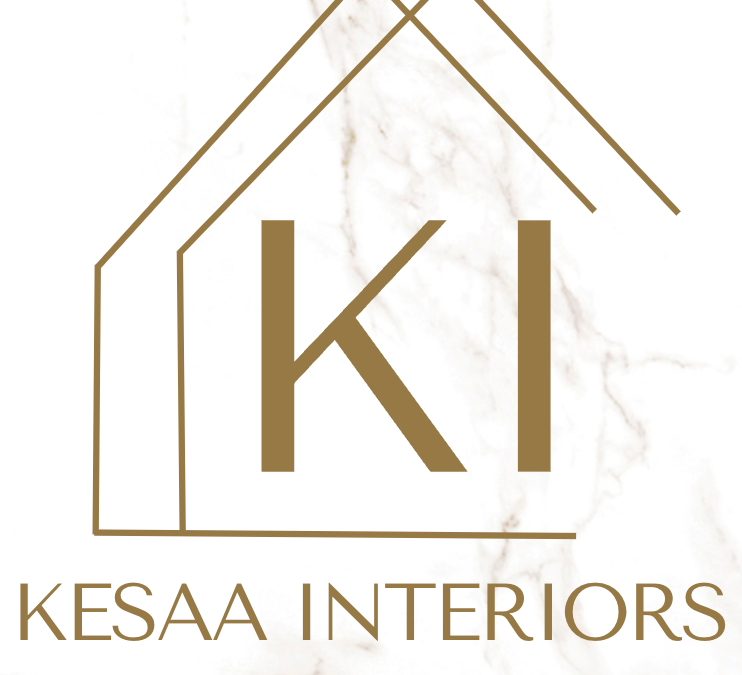
by Kesaa Interiors | STYLES & TRENDS
by Kesaa Interiors | December 3, 2025 | Dining Room, ROOMS | 0 Comments
This post is all about Dark Dining Room Ideas. There’s something undeniably captivating about a dark dining room. The depth, the mood, the quiet confidence, it all creates a sense of intimacy that lighter spaces sometimes struggle to achieve. Designing with darker...
by Kesaa Interiors | November 17, 2025 | Bathroom, DECOR & DIY, ROOMS, Storage & Organisation | 0 Comments
This post is all about Bathroom Vanity Organiser Under Sink. A bathroom vanity organiser under the sink can make an incredible difference in how your bathroom looks and functions. It’s often one of the most overlooked spaces in the home, yet it has the...
by Kesaa Interiors | November 7, 2025 | Living Room, ROOMS | 0 Comments
This post is all about Modern Minimalist Interior Design Living Room. A modern minimalist interior design living room is more than just a trend; it’s a reflection of how we live today. Clean lines, open spaces, and thoughtful details come together to create...
by Kesaa Interiors | November 4, 2025 | Kids & Nursery, ROOMS | 0 Comments
This Post Is All About Bedroom Ideas For Girls Designing a space that feels personal and full of character starts here, and these bedroom ideas for girls are the perfect inspiration. Whether you’re refreshing a cosy nook or planning a complete makeover, finding the...
by Kesaa Interiors | November 2, 2025 | DECOR & DIY, Kitchen, ROOMS, Storage & Organisation | 0 Comments
This post is all about Kitchen Pantry Door Storage. A well‑designed kitchen makes everyday life easier, and that’s exactly where kitchen pantry door storage comes in. It’s one of those clever interior design tricks that turns overlooked space into something...
by Kesaa Interiors | October 31, 2025 | ROOMS | 0 Comments
This post is all about spring home decor ideas. Spring is the perfect time to breathe new life into your home. As the days get brighter, interiors naturally feel ready for fresh energy, lighter colours, and simple updates that make each room feel inviting again. If...
by Kesaa Interiors | October 29, 2025 | DESIGN GUIDES, How-To Guides, ROOMS | 0 Comments
This post is all about How To Arrange Furniture In A Room. I’ve always believed that the way furniture is arranged can completely change how a room feels. It’s not just about where you put the sofa or how far a chair sits from the coffee table; it’s about creating a...
Put in your email and sign up for weekly emails updating you on everything happening in the design world
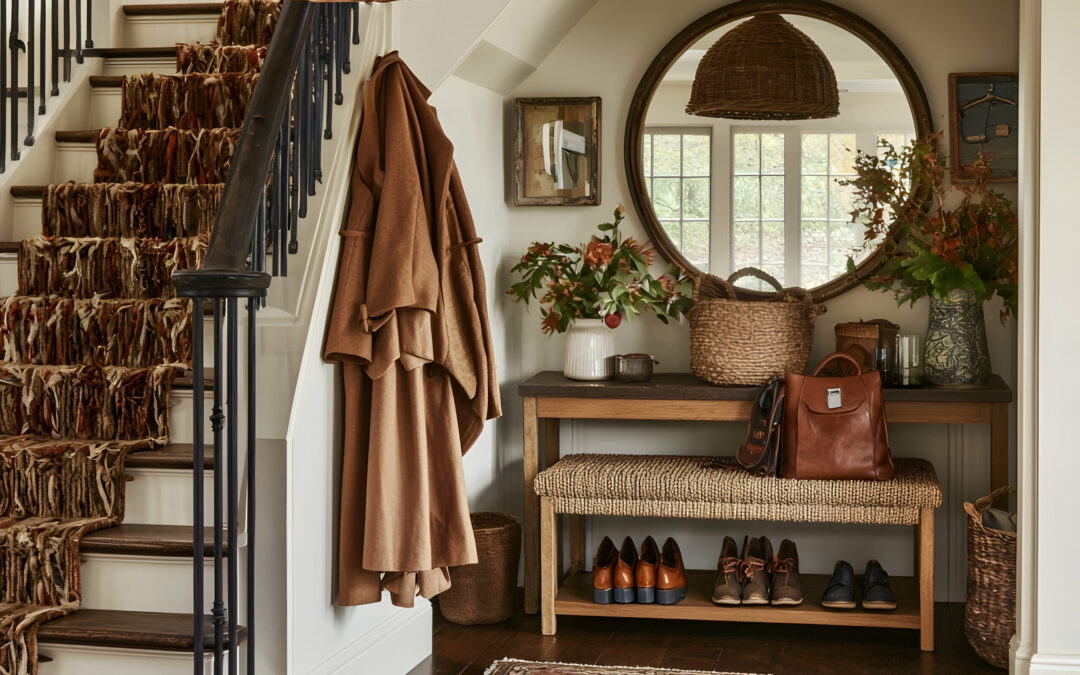
by Kesaa Interiors | Seasonal & Holiday Decor, STYLES & TRENDS
This post is all about Fall Decor Inspiration.
Every year, when September rolls around, I find myself drawn to richer textures and warmer tones in my design work. It’s that distinct shift in natural light—softer, more golden—that signals it’s time to help homes transition into their cosiest season. As an interior designer, I’ve learned that great fall decor inspiration comes from understanding how to layer warmth into spaces that already function well.
The beauty of autumn decorating lies in its ability to make any room feel more inviting without requiring a complete overhaul. Whether you’re working with a modern minimalist space or a traditional home full of character, the right seasonal touches can transform a room’s feel. In this guide, I’ll share the fundamental principles I use when creating fall atmospheres, room-specific strategies that actually work, and practical tips for achieving that perfectly balanced autumn look—all without breaking your budget or cluttering your space.

Essential Elements of Fall Decor: A Designer’s Foundation
Before diving into specific rooms or trendy ideas, let’s establish the core elements that make fall decorating work. These fundamentals will guide every decision you make, ensuring your fall decor inspiration translates into cohesive, livable spaces.
The Fall Colour Palette
The right colour palette forms the backbone of any seasonal design. For fall, I build around three categories that work harmoniously together:
Warm Neutrals serve as your foundation—think creamy whites, soft beiges, warm greys, and rich taupe tones. These colours ground your space and prevent it from feeling too themed or temporary. They’re particularly important if you have existing furniture or architectural elements you’re working around.
Rich Jewel Tones bring in that quintessential autumn depth. Burgundy throw pillows, burnt orange accents, deep gold accessories, and forest green elements add layers of sophistication. The key is choosing one or two of these stronger colours as accents rather than overwhelming the space with all of them.
Natural Wood Tones and Metallic Accents provide the finishing touches. Warm woods like walnut and oak naturally complement fall palettes, while brass, copper, and aged bronze metallics add subtle glamour that catches autumn’s golden light beautifully.

Textures That Define Autumn
Texture is where fall decor inspiration really comes to life. The goal is to create visual and tactile warmth through strategic layering:
Chunky Knits and Cable Patterns immediately signal cosiness. A substantial cable-knit throw draped over a sofa arm or chunky knit pillows nestled in chairs transform seating areas into inviting retreats. Look for pieces with interesting stitch patterns that add visual depth.
Velvet and Corduroy Fabrics bring luxurious warmth to any space. These materials work particularly well on accent pillows, ottoman covers, or even as table runners. The way they catch and reflect light adds dimension that flat fabrics simply can’t achieve.
Natural Materials ground your fall decor in authenticity. Incorporate dried botanicals, wood slices, woven baskets, jute rugs, and linen fabrics. These elements prevent your seasonal decorating from feeling artificial or overdone. I often use branches from my yard or dried hydrangeas from the garden—they’re free and add genuine seasonal character.
The secret to successful texture layering is variation. Combine smooth velvets with nubby linens, soft wools with rough natural wood, shiny metallics with matte ceramics. This interplay creates the visual interest that makes a room feel professionally styled.
Key Patterns for Fall
Patterns add personality to your fall decor inspiration, but restraint is crucial. Choose one dominant pattern and support it with solids or very subtle secondary patterns:
Plaid and Tartan remain fall classics for good reason. Whether you prefer traditional Scottish tartans or modern buffalo checks, these patterns instantly evoke autumn. Use them on throw pillows, blankets, or even lampshades—but typically not all three in the same space.
Herringbone and Tweed offer sophisticated pattern options that feel less expected than plaid. These work beautifully in upholstery, throw pillows, or even as textured wallpaper in powder rooms.
Botanical Prints featuring fall leaves, branches, or abstract natural motifs can soften a space dominated by geometric patterns. Look for prints that feel artistic rather than literal—think watercolour or oak leaves rather than photographic maple leaves.
Remember that patterns should enhance your existing decor, not compete with it. If your room already features bold patterns, keep fall additions more subdued. If your space is primarily solid colours, this is your opportunity to introduce pattern through seasonal elements.

Room-by-Room Fall Decor Inspiration
Now that we’ve established the foundational elements, let’s explore how to apply these principles throughout your home. Each room presents unique opportunities for seasonal styling, and understanding these nuances makes all the difference between a space that feels thoughtfully designed versus one that’s simply decorated.
Living Room Transformation
The living room typically serves as the heart of fall gatherings, making it the perfect starting point for your seasonal updates. The key is working with what you already have while adding strategic layers.
Layering Throw Pillows and Blankets is perhaps the easiest way to bring fall decor inspiration to life. Start with your largest pillows in solid, neutral tones as anchors. Add medium-sized pillows in your chosen pattern—maybe that herringbone or plaid we discussed. Finish with smaller accent pillows in rich jewel tones or interesting textures. The magic number is usually odd—three or five pillows per sofa end creates better visual balance than even numbers.
For throws, drape rather than fold. A casually draped chunky knit blanket over the back corner of a sofa looks infinitely more inviting than one folded into a perfect rectangle. Keep additional throws in a basket nearby—both practical for chilly evenings and visually appealing.
Switching Summer Slipcovers might seem like a bigger commitment, but if you already use slipcovers, the seasonal swap makes a dramatic difference. Trade white or light linen covers for warmer tones like camel, rust, or deep grey. The entire room’s atmosphere shifts with this single change.
Creating a Focal Point with Fall Mantel Styling requires restraint and intention. Start with varying heights—perhaps birch logs stood on end, hurricane lanterns of different sizes, and cascading greenery. Add preserved fall leaves or branches for natural movement. The trick is creating depth by layering items at different distances from the wall rather than lining everything up like soldiers.
Coffee Table Styling offers another opportunity for fall decor inspiration. Use a wooden tray to corral smaller items—perhaps a trio of small white pumpkins, a brass candlestick, and a small potted succulent. Stack relevant books with warm-toned covers, and add a textural element like a small wooden bowl filled with acorns or pinecones. Keep it functional—leave space for drinks and remotes.

Dining Room Fall Touches
The dining room often gets overlooked between holidays, but fall presents the perfect opportunity to make this space feel special for everyday meals and intimate gatherings alike.
Centrepiece Ideas Using Natural Elements work best when they don’t obstruct conversation. Create a low, linear arrangement down the table’s centre using a mix of mini pumpkins, gourds, and preserved eucalyptus. Weave in battery-operated fairy lights for evening ambience. For round tables, a single elevated arrangement—perhaps branches in a tall vase surrounded by votives—maintains sight lines while adding vertical interest.
Table Setting Inspiration doesn’t require new dishes. Layer what you have: start with natural woven placemats, add your everyday white plates, then top with salad plates in warm metallics or rich colours. Cloth napkins in autumnal tones, tied with jute twine and a sprig of rosemary, elevate even casual dinners. The goal is creating moments of beauty in daily life, not just special occasions.
Updating Dining Chairs can be as simple as adding seat cushions in seasonal fabrics. If your chairs already have upholstered seats, consider having slipcovers made in a fall-appropriate fabric—it’s less expensive than reupholstering and completely reversible.
Lighting Adjustments make an enormous impact on ambience. If you have a dimmer switch, use it. If not, swap clear bulbs for warm-toned ones, and incorporate candles. Taper candles in brass or wooden holders add height and elegance, while votives scattered down the table create intimate pools of light.

Bedroom Cosy Updates
The bedroom might not be where you entertain, but creating a cosy fall retreat here affects how you start and end each day. The approach should be subtle and soothing rather than heavily themed.
Bedding Layers follow a specific formula for both beauty and comfort. Start with your fitted sheet, add a flat sheet (even if you typically skip it in summer), then a lighter blanket, followed by your duvet or comforter. The final layer—a textured throw folded across the foot of the bed—adds visual weight and extra warmth for cold feet. Choose bedding in warm neutrals with perhaps one layer introducing pattern or deeper colour.
Nightstand Styling requires editing. Clear the summer’s lighter accessories and introduce a small lamp with a warm-toned shade, a small dish for jewellery in brass or wood, perhaps a small potted plant like a snake plant or pothos, and one seasonal element—maybe a small ceramic pumpkin or a candle in an autumn scent. The key is maintaining functionality while adding seasonal warmth.
Window Treatment Updates don’t necessarily mean new curtains. If you have sheers for summer, layer heavier panels over them for fall. This creates better insulation and adds visual weight to the room. If new panels aren’t in the budget, simply swapping out curtain ties for ones in fall colours or textures can refresh the look.
Creating a Reading Nook capitalises on fall’s earlier evenings. Position a comfortable chair near a window, add a soft throw and a lumbar pillow in a fall pattern. Place a small side table within reach for books and beverages, and ensure good lighting—either a floor lamp or table lamp with a warm bulb. This intentional space becomes a retreat within a retreat.

Kitchen & Entryway Details
These transitional spaces offer perfect opportunities for fall decor inspiration that’s both functional and welcoming.
Seasonal Kitchen Textiles provide instant updates without cluttering counters. Swap dish towels for ones in fall colours or patterns—burnt orange, deep red, or classic plaid. Add a runner to your kitchen island or peninsula in a warm, textured fabric. Replace summer’s bright oven mittens with ones in rich autumn hues. These functional items do double duty as decor.
Fall Produce as Decor serves both aesthetic and practical purposes. A wooden bowl filled with apples, pears, or pomegranates adds colour and encourages healthy snacking. Small pumpkins and gourds clustered on a cutting board create an instant vignette. Just remember to use or compost them before they spoil—nothing ruins fall ambience quite like rotting produce.
Entryway Console Styling sets the tone for your entire home. Layer a textured runner on the console, add a lamp with a warm-toned shade, and create a vignette with varying heights—perhaps a tall vase with branches, a medium-sized decorative box for keys, and a small dish for loose change. A mirror above reflects light and makes the space feel larger while providing that last-minute appearance check.
Doorway and Porch Transitions should feel cohesive with your interior choices. If you’ve used lots of natural elements inside, continue that theme with potted mums, ornamental kale, or a simple arrangement of corn stalks. A layered doormat approach—a larger neutral jute mat with a smaller printed seasonal mat on top—adds interest while maintaining functionality. Keep scale in mind; a tiny pumpkin on a large porch looks lost, while oversized decorations can overwhelm a small stoop.

Professional Styling Tips for Fall Decor
After years of creating seasonal interiors, I’ve developed certain techniques that consistently deliver polished results. These aren’t rules as much as reliable strategies that help achieve that “pulled together” look many people struggle to define.
The Rule of Three
This classic design principle applies beautifully to fall decor inspiration. Our brains naturally find odd numbers more appealing and easier to process than even groupings.
Grouping Objects for Visual Impact means thinking beyond individual pieces. Three mercury glass pumpkins of varying sizes create more interest than one large statement piece. When styling a mantel or shelf, create multiple groupings of three—perhaps three candlesticks on one end, three small gourds clustered in the centre, and a trio of preserved leaf stems on the other end.
Varying Heights and Textures within each grouping prevent monotony. If you’re arranging three pumpkins, choose different varieties—maybe one velvet, one ceramic, and one natural white pumpkin. Vary their heights by placing one on a small stack of books or a wooden riser.
Creating Vignettes Throughout the Home extends this principle beyond individual surfaces. Think of each room as needing three points of seasonal interest—in a living room, that might be the mantel, coffee table, and a side table. This creates a visual flow that guides the eye around the space.
Lighting for Autumn Ambience
Lighting often gets overlooked in seasonal decorating, but it’s absolutely crucial for achieving that warm, inviting atmosphere we associate with fall.
Layering Light Sources creates depth and eliminates harsh shadows. Combine overhead lighting (on dimmers when possible), table or floor lamps, and candles. Each source serves a purpose—overhead for general illumination, lamps for task lighting and ambient glow, candles for flickering warmth and scent.
Warm Bulb Recommendations make an immediate difference. Look for bulbs labelled “warm white” or “soft white” with a colour temperature of 2700K-3000K. These emit a golden glow that complements fall colours beautifully. Avoid anything labelled “daylight” or “cool white” during fall months—they’ll make your carefully chosen warm tones look flat and uninviting.
Candle Placement Strategies require both aesthetic consideration and safety awareness. Group pillar candles of varying heights on a tray, place votives in glass holders along a mantel, or use battery-operated candles in lanterns where real flames aren’t practical. The goal is to create pools of warm light at different levels throughout the room.

Bringing Nature Indoors
Nothing authentically captures fall decor inspiration quite like natural elements. The key is selecting materials that maintain their beauty as they dry or age.
Preserved Leaf Arrangements work best when you choose leaves at their peak colour and preserve them properly. Glycerin-preserved leaves maintain flexibility and colour far longer than those that simply dry out. Arrange them in tall vases, weave them into garlands, or scatter individual specimens across a table runner.
Branch and Twig Displays add architectural interest to any arrangement. Curly willow, birch branches, or even interesting fallen branches from your yard create height and movement. Spray them with clear sealant to prevent bark from flaking in your home.
Incorporating Pumpkins Beyond Orange expands your design possibilities dramatically. White pumpkins offer elegance, sage green varieties complement neutral palettes, and deep burgundy heirloom varieties add unexpected richness. Mix real and high-quality faux versions—guests rarely notice the difference, and you’ll extend your decorating timeline.
Dried Flower Arrangements provide lasting beauty with zero maintenance. Hydrangeas, wheat stalks, pampas grass, and ornamental grasses all dry beautifully. Combine different textures and heights for arrangements that feel gathered rather than purchased.

Budget-Friendly Fall Decor Inspiration Ideas
Creating a beautifully decorated fall home doesn’t require a designer budget. Some of my favourite seasonal touches cost little to nothing, relying more on creativity and strategic choices than spending.
DIY Projects Worth Your Time
Not every DIY project delivers professional-looking results, but these consistently do:
No-Sew Pillow Covers transform existing pillows instantly. Purchase fabric in fall patterns or textures, cut to size leaving extra for fold-overs, and use fabric tape or safety pins to secure. When the season ends, simply remove and store flat—far more space-efficient than storing entire pillows.
Mason Jar Luminaries create ambient lighting for pennies. Wrap jars with twine, add a battery-operated tea light, and fill with small seasonal elements like acorns or mini pinecones. Line them along a mantel or cluster on a tray for instant ambience.
Painted Pumpkin Alternatives let you customise colours to match your exact decor. Use chalk paint for a matte finish, metallic spray paint for glamour, or even chalkboard paint for pumpkins you can personalise with different messages throughout the season.
Foraged Material Arrangements cost nothing but time. Collect interesting branches, colourful leaves, pine cones, and acorns during walks. Arrange them in containers you already own, or simply pile them in a wooden bowl for an organic centrepiece.
Smart Shopping Strategies
Strategic shopping ensures you build a collection of quality seasonal items without overspending:
Items to Invest In vs. Temporary Pieces: Invest in neutral, high-quality basics like wool throws, versatile pillow covers, and well-made candle holders that work across seasons. Save money on trendy items, specific holiday motifs, or anything that screams “fall 2024” rather than timeless autumn.
Shopping Timeline for Best Deals: Shop end-of-season sales for next year’s decor—you’ll find 50-75% off quality items. For current season needs, shop in early September for the best selection, or wait until mid-October when retailers start discounting to make room for holiday merchandise.
Versatile Pieces That Transition to Winter: Choose items in rich neutrals, metallic finishes, or natural materials that work for both fall and winter. A chunky knit throw in cream, brass candlesticks, or wooden serving pieces provides value across multiple seasons.

Common Fall Decorating Mistakes to Avoid
Even with the best fall decor inspiration, certain pitfalls can derail your efforts. Understanding these common mistakes helps you sidestep them entirely.
Over-theming
The fastest way to make your home feel like a seasonal store display rather than a lived-in space is going overboard with themed elements.
Balancing Seasonal Elements with Existing Decor requires a light touch. Your fall additions should enhance your home’s existing style, not override it. If you have a modern minimalist space, a few carefully chosen natural elements and textured throws maintain your aesthetic while nodding to the season. For traditional homes, you have more leeway with pattern and colour, but the key is still integration rather than domination.
Avoiding the “Costume Party” Aesthetic means stepping back and evaluating your choices. If every surface features pumpkins, every textile screams “autumn leaves,” and you’ve replaced all your regular artwork with fall-themed prints, you’ve likely crossed the line. The goal is a home that feels seasonally appropriate, not a harvest festival booth.
Ignoring Scale and Proportion
Nothing undermines professional-looking decor faster than scale mistakes. This applies to everything from individual accessories to overall room composition.
Right-sizing Decorations for Your Space requires honest assessment. A massive pumpkin topiary might look stunning in a two-story foyer but ridiculous on a small console table. In contrast, tiny decorative elements get lost in large spaces. When in doubt, group smaller items together to create more visual weight, or choose fewer, larger pieces for impact.
Maintaining Visual Balance means considering the entire room, not just individual vignettes. If you create an elaborate fall display on one side of the room, balance it with simpler seasonal touches on the opposite side. This prevents the space from feeling lopsided or forcing guests to crane their necks in one direction.
Forgetting Functionality
Beautiful fall decor that interferes with daily life won’t last long before frustration sets in.
Keeping Spaces Livable While Decorated should be your primary concern. Coffee tables still need space for coffee cups. Kitchen counters require work areas. Entryway tables need room for keys and mail. Build your fall decor inspiration around how you actually use each space, not some idealised version where no one ever needs to set anything down.
Storage Solutions for Seasonal Items deserve consideration before you buy. Those gorgeous oversized glass pumpkins look wonderful in October, but where will they live the other eleven months? Prioritise items that store efficiently—fabric pieces that fold flat, nestable containers, or decorations that work across multiple seasons.
Transitioning Your Fall Decor Through the Season
Fall spans several months and holidays, each with its own character. Smart decorating acknowledges these shifts without requiring complete overhauls.
Early Fall (September-October)
Light Touches and Natural Elements work best when summer’s heat still lingers. Focus on bringing in texture through throws and pillows while keeping colour changes subtle. Fresh apples in bowls, sunflowers in vases, and lighter autumn colours like gold and coral bridge the gap between seasons gracefully.
Focus on Harvest Themes without going full Halloween. Wheat bundles, corn husks, and early autumn leaves celebrate the season’s agricultural roots. Save the darker colours and heavier textures for when temperatures truly drop.
Late Fall (November-December)
Deeper Colours and Richer Textures feel appropriate as daylight continues to shorten. Now’s the time for those burgundy velvets, forest green accents, and layered wool blankets. Replace early fall’s fresh flowers with preserved arrangements or branches with berries.
Easy Transitions to Holiday Decor save time and money. Choose fall elements that complement your holiday palette—metallic pumpkins work beautifully with Christmas metallics, burgundy throws transition seamlessly to holiday reds, and natural greenery provides a foundation for both seasons. Simply adding twinkle lights to existing fall branches or replacing pumpkins with ornaments in similar colours creates continuity.

Creating a warm, inviting home for fall doesn’t require completely reimagining your space or spending beyond your means. The best fall decor inspiration comes from understanding fundamental design principles—colour, texture, scale, and balance—then applying them thoughtfully to your unique home.
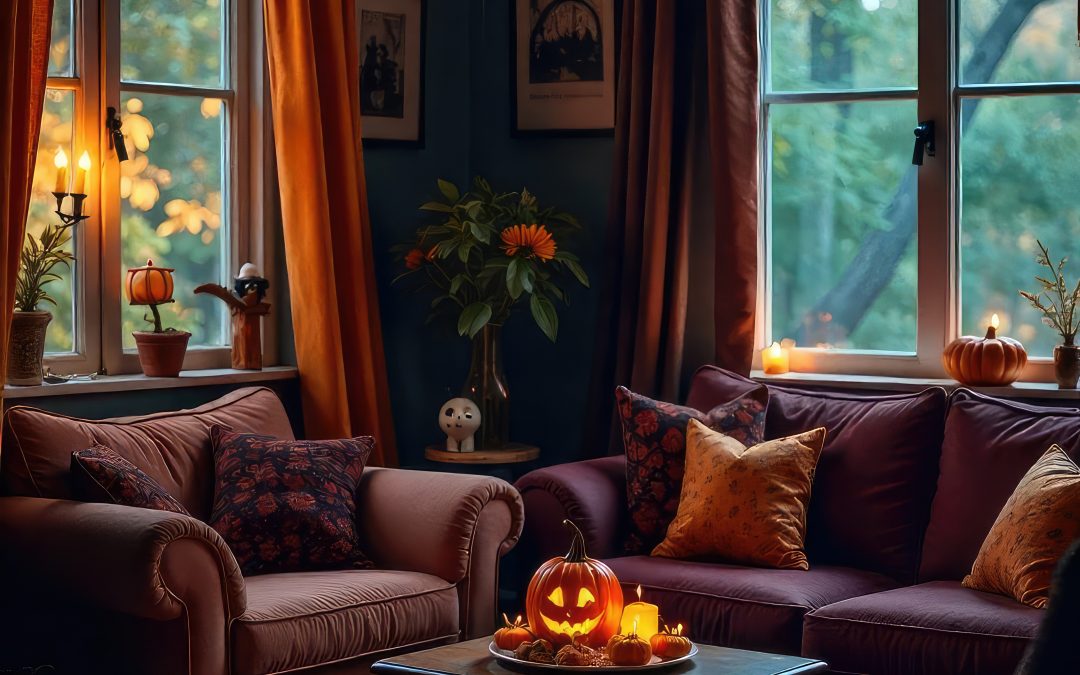
by Kesaa Interiors | Seasonal & Holiday Decor, STYLES & TRENDS
This post is all about Halloween Indoor Decorations.
As an interior designer, I genuinely look forward to October every year. It’s the one time when dramatic transformations aren’t just welcomed—they’re expected. Halloween indoor decorations offer this unique opportunity to completely reimagine our living spaces, pushing creative boundaries while exploring darker, moodier aesthetics that might feel too bold during other seasons.
The best part about designing for Halloween is finding that sweet spot between spine-tingling atmosphere and sophisticated style. You don’t have to turn your home into a discount store Halloween aisle to achieve that perfectly haunted ambience. With the right approach, Halloween indoor decorations can enhance your existing design rather than fight against it.
Over the years, I’ve developed strategies that allow homeowners to create genuinely impressive Halloween transformations without sacrificing the integrity of their year-round design choices. The key lies in understanding how colour, lighting, and strategic placement work together to build atmosphere while maintaining a cohesive look throughout your home.
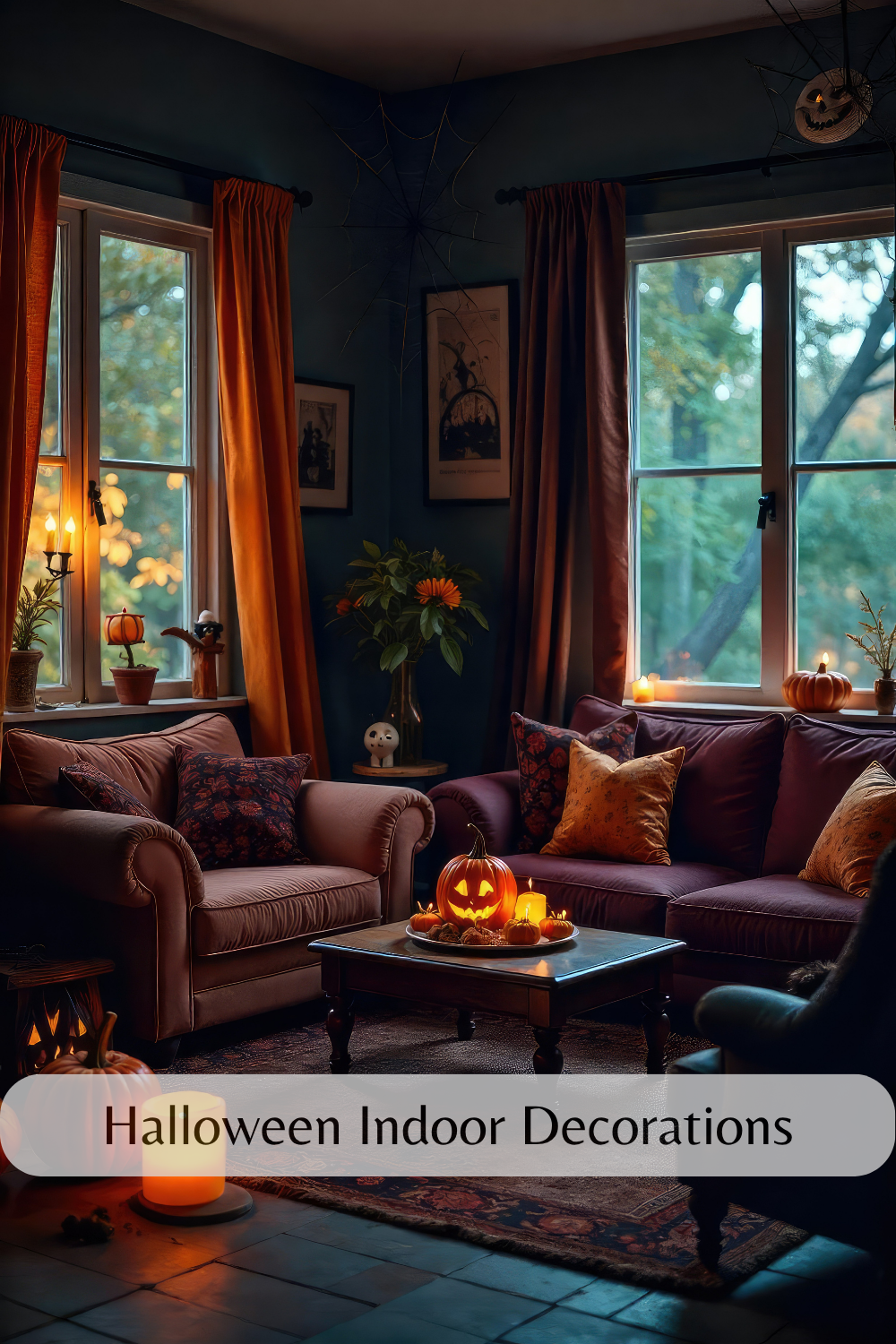
Setting the Foundation: Colour Schemes and Lighting
Professional Colour Palettes Beyond Orange and Black
Let’s address the elephant in the room—or should I say the jack-o’-lantern. While orange and black have their place in Halloween decorating, relying solely on this combination can make your space feel more like a party store than a thoughtfully designed home. Instead, consider building your Halloween indoor decorations around a more sophisticated palette.
Deep purples paired with charcoal grey create an aristocratic vampire’s lair vibe. Burgundy and forest green evoke Victorian Gothic elegance. Even monochromatic schemes using various shades of black, grey, and white can be incredibly striking when they’re done right. The trick is working with colours that complement your existing furniture and wall colours rather than competing with them.
Metallic accents deserve special attention here. Copper candlesticks, antiqued bronze picture frames, and tarnished silver serving pieces all contribute to that aged, mysterious atmosphere without screaming “Halloween.” These elements work beautifully as Halloween indoor decorations because they feel intentional and curated rather than temporary.
When selecting your colour scheme, consider your home’s natural lighting. North-facing rooms already have cooler light, making them perfect for silver and blue-toned decorations. South-facing spaces with warmer light can handle those rich burgundies and deep golds without feeling too heavy.
Atmospheric Lighting Techniques
If colour sets the stage, lighting is what brings the performance to life. The most common mistake I see people make with Halloween indoor decorations is relying on overhead lighting alone. Atmospheric lighting requires layers, and October is the perfect time to experiment with this design principle.
Start with ambient lighting as your base. This might mean swapping out your regular bulbs for warmer, dimmer options or investing in smart bulbs that can shift to deep reds or purples. I keep a set of colored bulbs specifically for Halloween that I rotate into table lamps and sconces throughout the house.
Next, add task lighting with a spooky twist. Replace lampshades with darker options or simply drape existing shades with sheer black fabric (keeping safety in mind with heat considerations). Position lamps to cast interesting shadows—place a decorative branch in front of a lamp to create eerie shadows on the wall, or use cutout silhouettes for more defined shapes.
Accent lighting is where you can really have fun. LED candles have come incredibly far in recent years; the best ones have a realistic flicker and can be placed anywhere without fire concerns. Group them in odd numbers on mantels, nestle them among your Halloween indoor decorations on shelves, or line them along windowsills for that haunted house glow visible from the street.
Don’t underestimate the power of removing light either. Strategic darkness creates mystery. Consider which areas of your rooms could benefit from deeper shadows. Sometimes what you don’t illuminate is just as important as what you do.
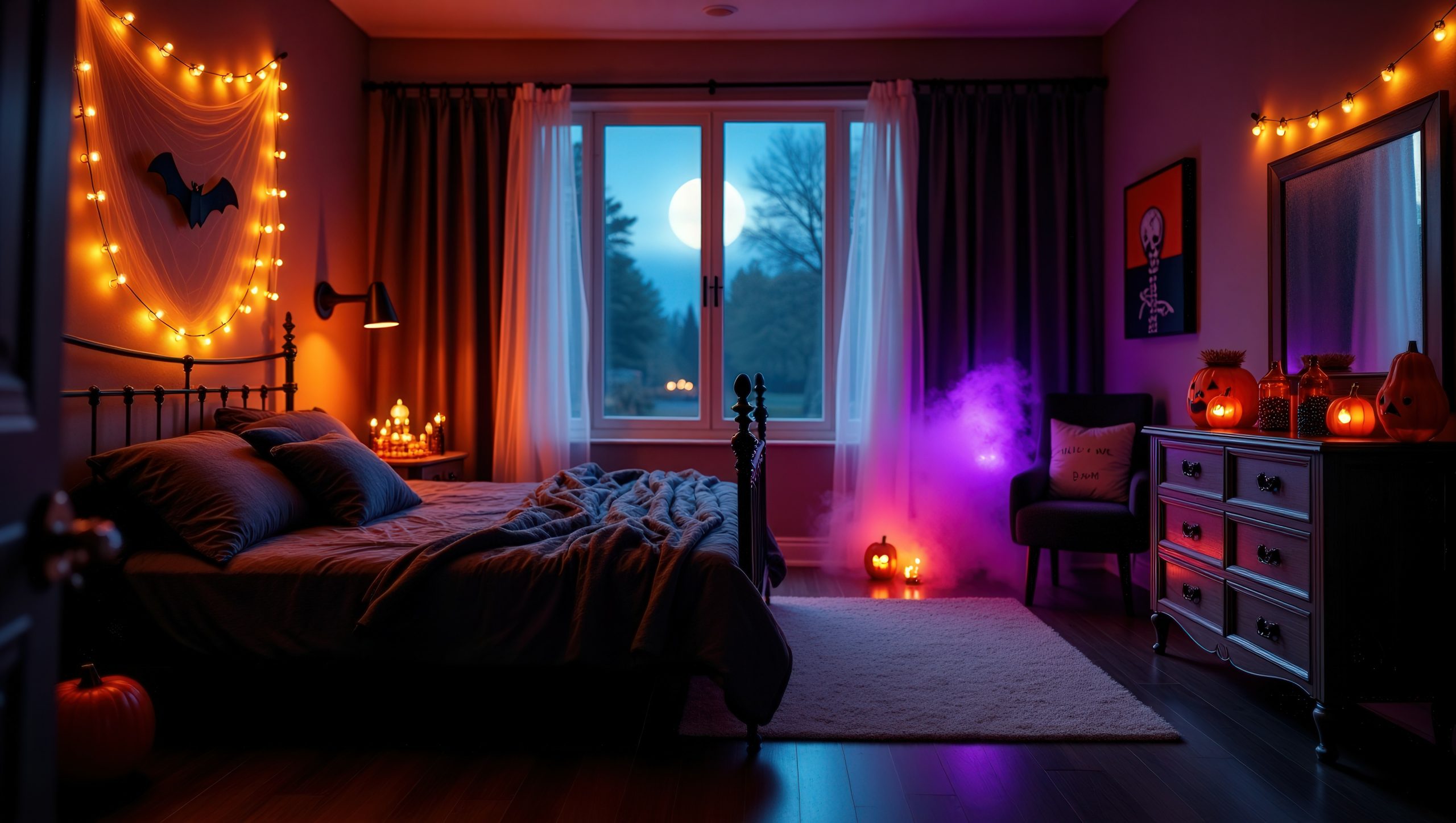
The foundation you create with colour and lighting determines how all your other Halloween indoor decorations will read in the space. Get these elements right, and even simple additions like a few well-placed ravens or vintage books will feel intentional and impactful. This approach ensures your Halloween design feels like a natural extension of your home’s personality rather than a temporary costume it’s wearing for the month.
Room-by-Room Halloween Indoor Decorations Guide
Living Room: The Heart of Your Haunted Home
The living room typically sees the most traffic and offers the most opportunities for impactful Halloween transformations. Since this is where you’ll likely spend most of your time—and where guests naturally gather—it deserves thoughtful attention.
Start with your fireplace mantel if you have one. This natural focal point begs for dramatic styling. Layer varying heights using candlesticks, small decorative pumpkins in unexpected colours, and maybe a vintage mirror with artificially aged glass. The key is creating depth rather than a flat line of decorations. I like to incorporate natural elements like twisted branches or dried hydrangeas spray-painted black to add organic texture among the Halloween indoor decorations.
Your existing throw pillows offer an easy transformation opportunity. Rather than storing them away, consider pillow covers in rich velvets or subtle Halloween patterns—think damask with hidden skulls or abstract spider web designs. This approach keeps the room functional while adding seasonal flair. Mix these with your regular pillows rather than replacing everything for a more sophisticated, layered look.
Coffee table styling during Halloween should balance drama with practicality. A low tray containing a cluster of mercury glass votives, a few decorative skulls, and perhaps an antique book or two creates an intriguing vignette without interfering with the table’s functionality. Remember, people still need to set down drinks and snacks.
For wall art, temporary solutions work beautifully. Swap out a few family photos for vintage botanical prints of poisonous plants, or create your own “ancestor portraits” using thrift store frames and free vintage photographs available online. These Halloween indoor decorations can be changed yearly without damaging walls or requiring major commitments.
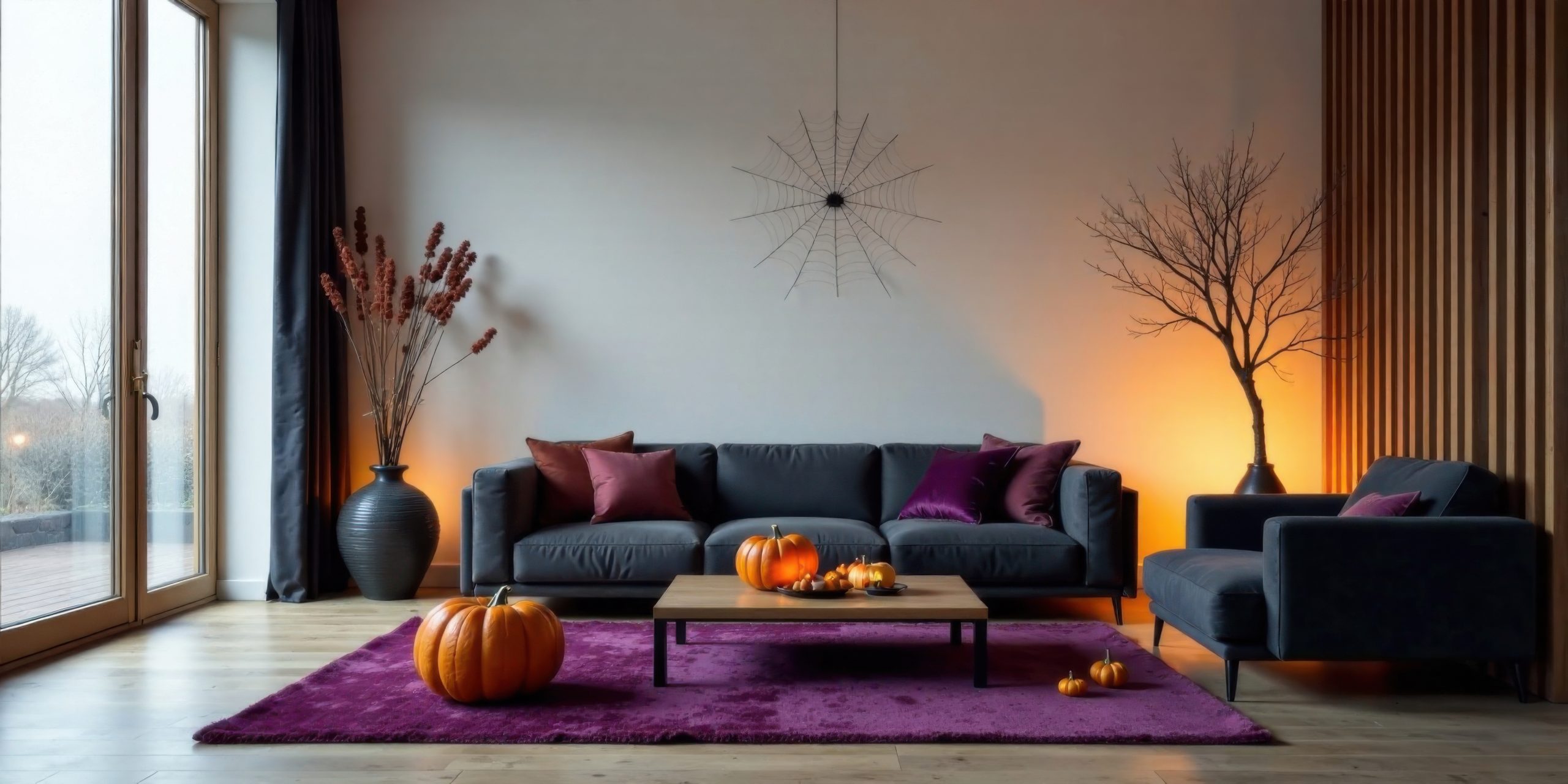
Dining Room: Setting a Sinister Table
The dining room presents unique opportunities because it’s often more formal to begin with, making Gothic transformations feel particularly natural. Even if you only use this space occasionally, dressing it for Halloween creates a dramatic impression when guests pass by.
Centrepiece design requires careful balance. You want something striking that doesn’t obstruct conversation across the table. Low, sprawling arrangements work well—think a runner of dark foliage punctuated with white mini pumpkins and deep purple flowers. Add height with taper candles in varying levels rather than one tall central arrangement.
Chair transformations don’t require slipcovers. Simple ribbon tied around chair backs, or small wreaths hung from dining chairs, can change the entire room’s feel. For a more dramatic effect, drape lengths of black tulle or lace from the backs of chairs, pooling slightly on the floor.
Your chandelier or dining room light fixture is prime real estate for Halloween indoor decorations. Lightweight additions like artificial spider webs (the good quality ones that actually look realistic), hanging bats, or crystal droplets can transform the fixture without risking damage. Just ensure any additions don’t interfere with the actual light output—you still want to see what you’re eating.
Don’t forget the walls. Removable wall decals have become incredibly sophisticated. Look for designs that complement your existing decor—perhaps Victorian-inspired patterns or subtle Gothic motifs rather than cartoon ghosts.
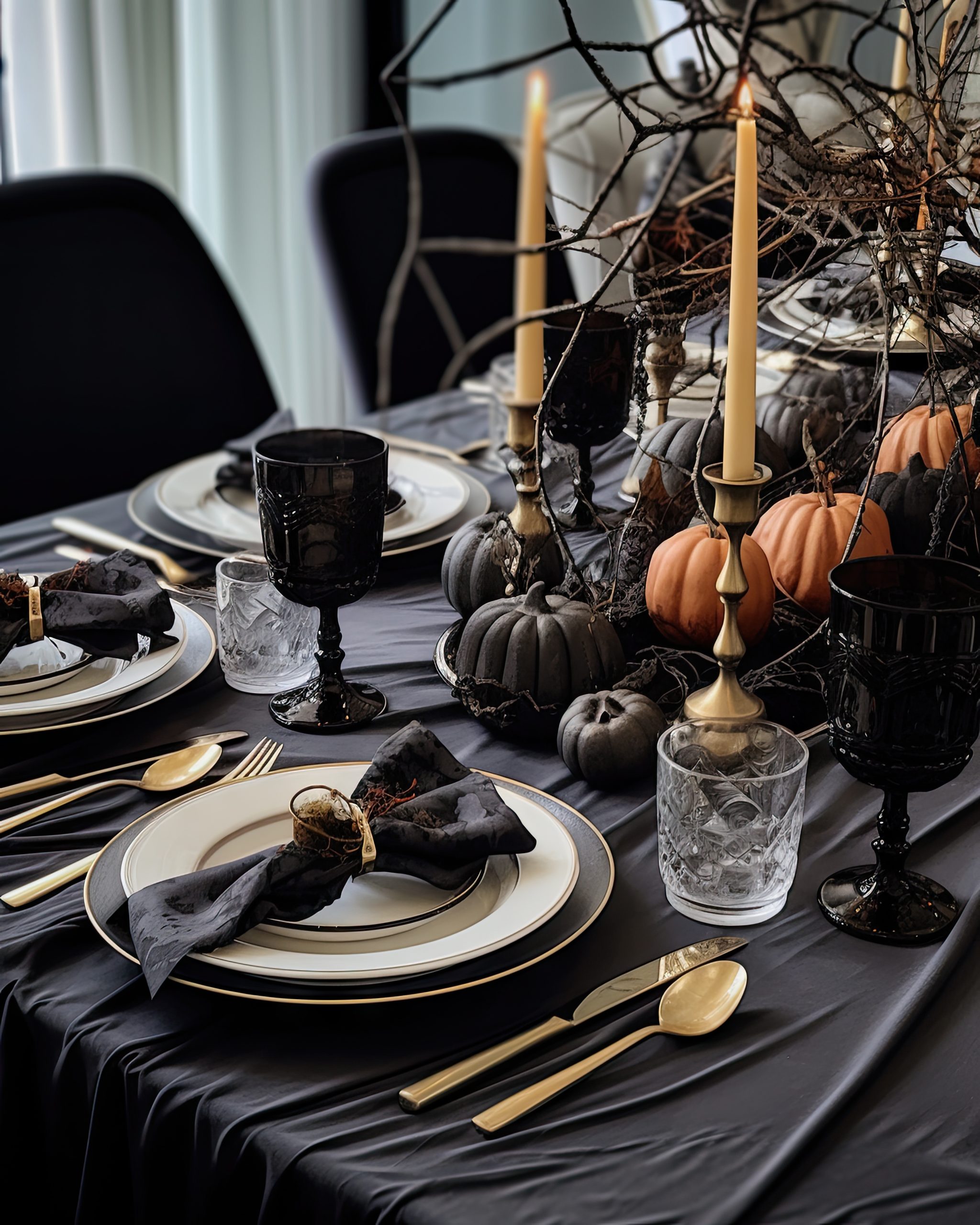
Entryway: First Impressions Matter
Your entryway sets the tone for everything that follows, making it crucial for Halloween decorating. This space should hint at the transformations within without overwhelming visitors the moment they step inside.
Console table styling in the entryway follows similar principles to coffee table arrangements, but can be more dramatic since it’s against a wall. Create height with tall branches in a statement vase, then layer in medium and low elements. A collection of mercury glass pumpkins, antique keys displayed in a shadow box, or аpоthecary-style bottles filled with mysterious contents all work beautifully as Halloween indoor decorations here.
Mirrors in the entryway offer fantastic decoration opportunities. Rather than removing them, consider adding removable vinyl decals that make it appear cracked or haunted. Window clings designed for mirrors can create the illusion of ghostly figures or messages appearing in the reflection. These temporary additions pack a serious visual punch without permanent alterations.
If you have stairs visible from the entry, they’re begging for decoration. Garland specifically designed for Halloween has improved dramatically—look for options that incorporate sophisticated elements like black roses, silver leaves, or deep purple berries rather than cartoon characters. Weave battery-operated lights through the garland for evening impact.
The coat closet often gets overlooked, but it offers a fun surprise element. Even just hanging a few decorative bats from the closet rod or adding a motion-activated sound element creates an unexpected moment of Halloween fun when guests hang their coats.
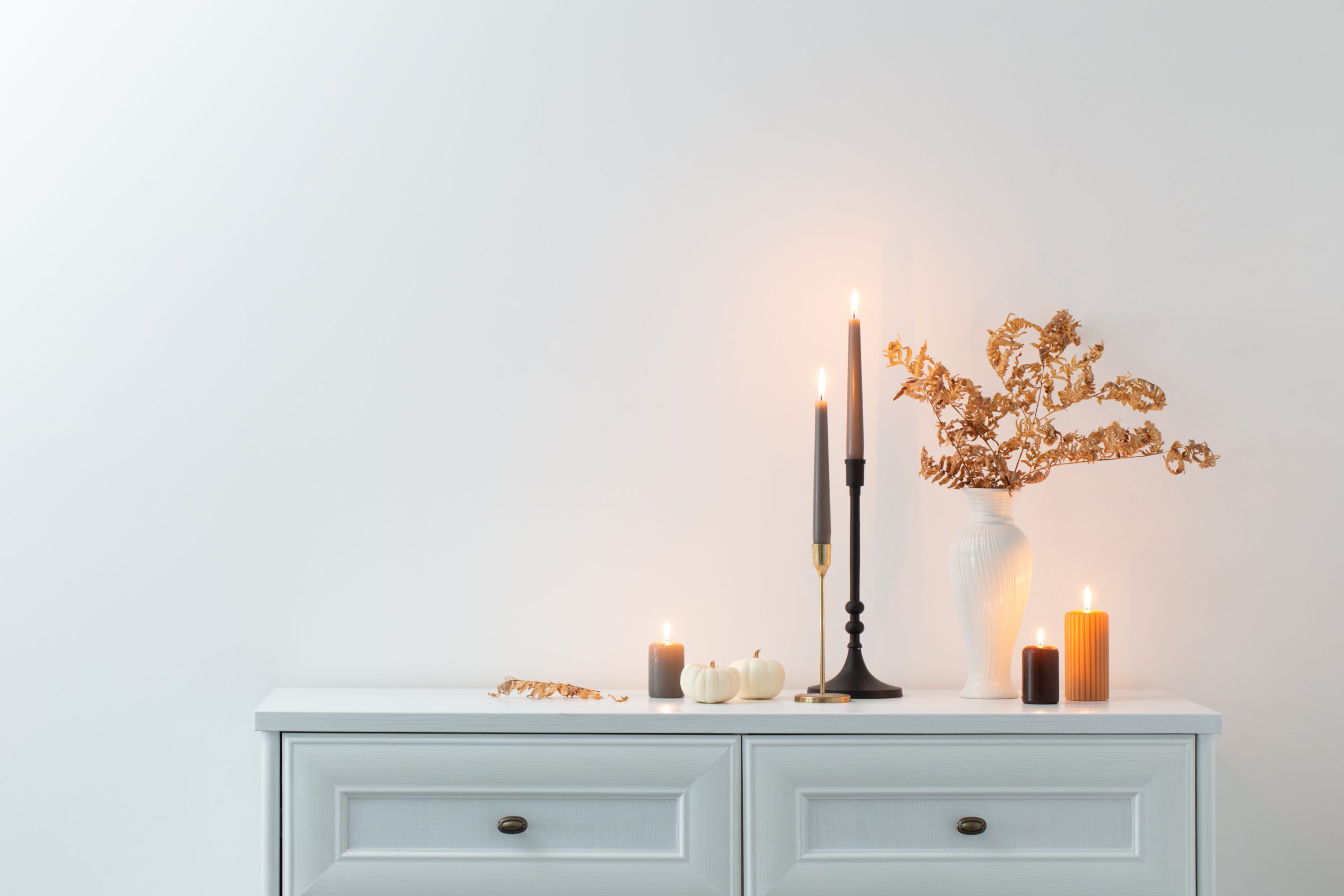
Kitchen: Subtle Spookiness
The kitchen presents unique challenges for Halloween indoor decorations since functionality must remain the priority. However, small touches can transform the space without interfering with meal preparation.
Counter styling should focus on corners and areas that don’t see heavy use. A small collection of decorative bottles labelled as “potions,” a cake stand displaying mini pumpkins, or a vintage scale holding gourds adds personality without cluttering work surfaces. Stick to items that can be easily moved when you need the space.
Window treatments offer temporary transformation opportunities. Gel clings designed for glass come in sophisticated patterns now—think spider webs, flying ravens, or Gothic architectural details. These Halloween indoor decorations catch light beautifully during the day and create interesting shadows at night.
Don’t overlook your appliances. Magnetic decorations can temporarily transform your refrigerator, while removable vinyl can add details to your dishwasher or range hood. Just ensure any decorations near the stove are heat-safe and positioned away from burners.
Even functional items can participate in the Halloween spirit. Swap out regular dish towels for ones in deep oranges or blacks. Display a festive cookie jar. Use Halloween-themed magnets to hold important papers on the fridge. These small touches collectively create an atmosphere without major investment or disruption to your daily routine.
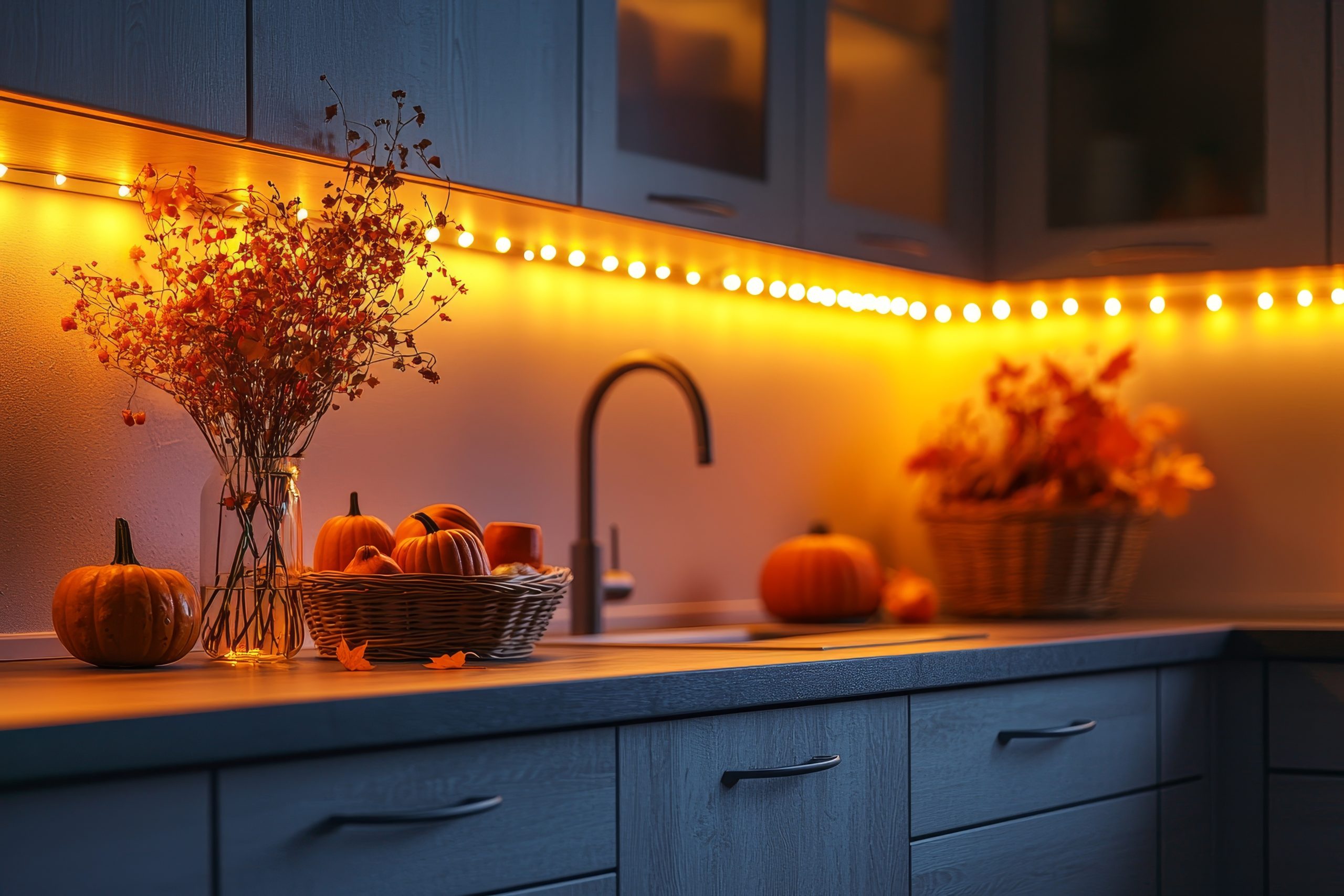
DIY Projects for Custom Halloween Indoor Decorations
Professional-Quality Projects on a Budget
Creating custom pieces allows you to achieve exactly the look you’re after while keeping costs reasonable. These projects might take a bit more time, but the results rival anything you’d find in high-end decor stores.
The floating candle ceiling installation has become somewhat of a Halloween classic, but executing it well makes all the difference. Start with battery-operated taper candles—invest in ones with realistic wax dripping rather than plain plastic. Attach fishing line to each candle using hot glue, varying the lengths for visual interest. The magic happens in the installation: cluster them over dining tables or in corners rather than spreading them evenly across the ceiling. This creates more dramatic focal points and prevents the room from feeling like a party supply store.
Creating a gallery wall of vintage “family portraits” adds instant Gothic atmosphere. Source old frames from thrift stores—mismatched sizes and styles actually enhance the effect. For the portraits themselves, free vintage photographs are readily available online through library archives. Print them in sepia or black and white, then age the paper with tea staining. The unsettling factor comes from subtle modifications: use photo editing to slightly blur faces or add barely perceptible ghostly figures in the background. These Halloween indoor decorations work because they feel authentic rather than manufactured.
Apothecary displays tap into that Victorian Gothic aesthetic beautifully. Collect various glass containers—mason jars, old spice bottles, vintage medicine bottles from antique stores. Create labels using aged paper and calligraphy fonts: “Nightshade Extract,” “Powdered Moonstone,” “Essence of Shadow.” Fill containers with readily available materials: black beans become “dried beetles,” cauliflower florets in tinted water look remarkably like preserved specimens, and rubber snakes coiled in glycerin create convincing preserved serpents.
For book lovers, creating aged spell books and grimoires transforms any bookshelf. Use old hardcover books from thrift stores as your base. Cover existing spines with kraft paper, then apply new titles using transfer letters or printed labels. Age the covers with watered-down acrylic paint in browns and blacks, focusing on edges and corners where wear naturally occurs. Group these among your regular books for a subtly spooky library effect.
Quick Transformations (Under 30 Minutes)
Sometimes you need impact without the time investment. These faster projects still deliver sophisticated results worthy of any designer space.
Instant curtain upgrades using cheesecloth create ethereal, haunted effects. Simply drape lengths of cheesecloth over existing curtain rods, allowing it to puddle on the floor. The material’s loose weave creates beautiful shadow patterns when backlit. For added effect, tea-stain the cheesecloth beforehand or add strategic tears. This works particularly well in rooms where you want to maintain natural light while adding Halloween atmosphere.
Mirror aging techniques can transform any reflective surface into something from a haunted mansion. The easiest method uses a solution of vinegar and water sprayed onto the back of removable mirror film, which you then apply to existing mirrors. The chemical reaction creates authentic-looking age spots and clouding. When Halloween ends, simply peel off the film to restore your mirrors to pristine condition.
Lampshade modifications offer immediate ambience changes. Rather than replacing shades entirely, consider silhouette attachments. Cut shapes from black cardstock—ravens, bare trees, Victorian houses—and attach them to the inside of lampshades with removable adhesive. When lit, these Halloween indoor decorations cast dramatic shadows throughout the room. The beauty lies in their subtlety during daylight hours and their transformation after dark.
Picture frame haunting effects require minimal materials but maximum impact. Take existing framed photos and add subtle creepy elements: a ghostly figure in the background created with tissue paper and matte medium, eyes that seem to follow viewers using the old portrait trick, or gradually shifting family photos where someone slowly disappears across multiple frames. These work best when discovered rather than announced.
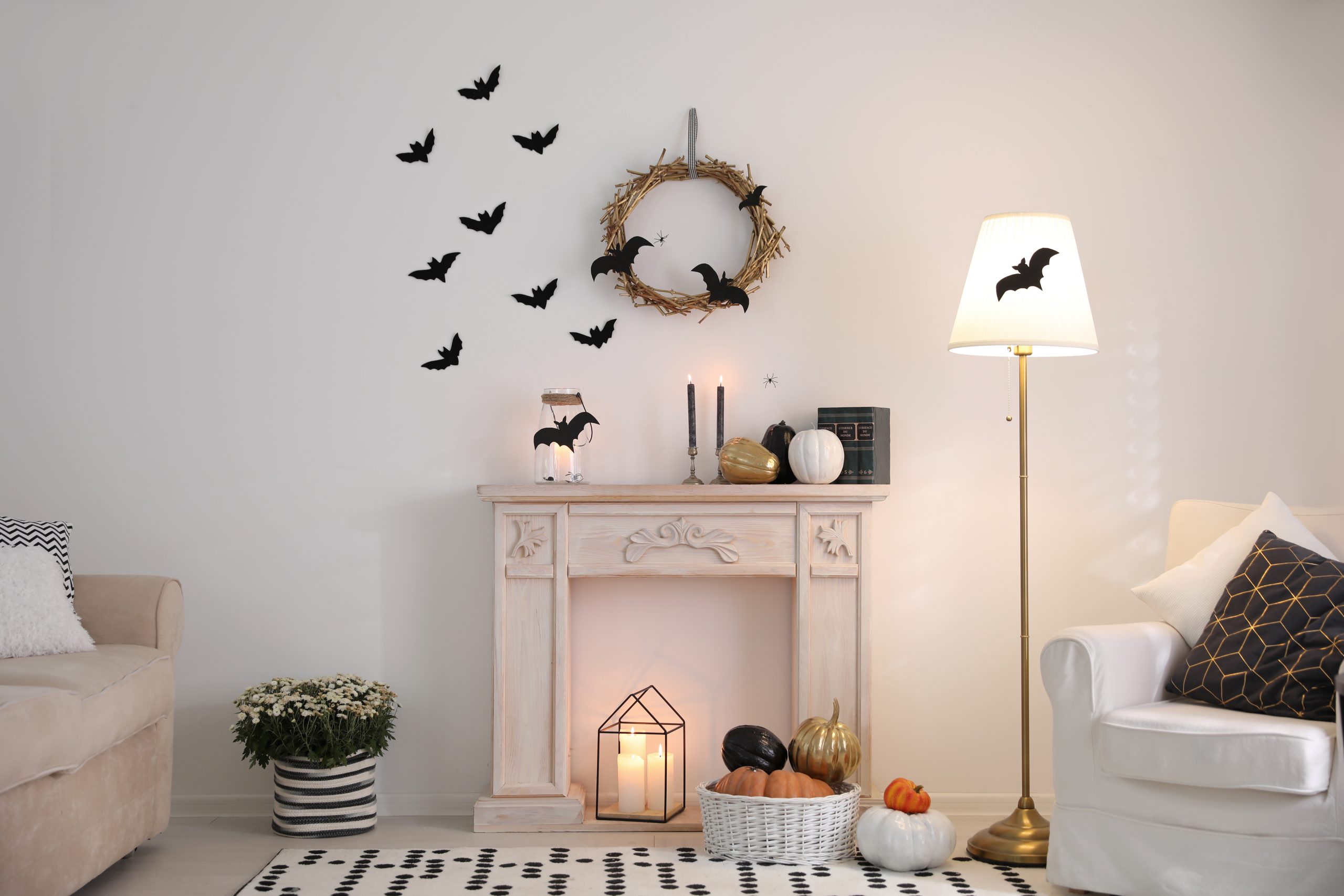
Incorporating Technology into Your Haunted Design
Smart Home Integration
Modern technology opens up possibilities for Halloween indoor decorations that would have seemed like magic just a few years ago. The key is using tech to enhance the atmosphere without making it the focus.
Voice-activated effects through smart home assistants can create surprising moments. Program custom routines triggered by specific phrases: saying “welcome home” after sunset might dim lights to red, start spooky ambient sounds, and activate specific Halloween decorations. Motion sensors placed strategically can trigger lights, sounds, or even fog machines as guests move through spaces.
Projection mapping, while sounding complex, has become surprisingly accessible. Small projectors can cast moving shadows, ghostly figures, or swirling fog effects onto walls without any permanent installation. The trick is subtlety—a barely visible ghost that occasionally drifts across a wall is far more effective than constant, obvious projections. Position projectors behind furniture or inside decorative elements to hide the source.
Sound design often gets overlooked, but it contributes so much to the atmosphere. Hide small Bluetooth speakers throughout your space—behind books, inside decorative containers, under furniture. Create layered soundscapes rather than obvious Halloween sounds: old house creaking, distant wind, occasional whispers. The goal is atmospheric enhancement that guests might not consciously notice but definitely feel.
Apps and Digital Elements
Digital picture frames offer endless possibilities for Halloween indoor decorations. Load them with slowly morphing portraits where faces subtly change over time, or create the illusion of movement in otherwise still images. The best effects are those that might go unnoticed at first glance—a figure that appears in a window only occasionally, eyes that sometimes follow movement.
Smart TVs can become part of your decor through carefully chosen screensavers. Rather than typical Halloween imagery, consider displaying Victorian mourning photography, slowly shifting abstract patterns, or high-quality video loops of flickering candles or moonlit windows. When the TV isn’t in active use, it becomes another decorative element rather than a black rectangle on the wall.
Coordinating all these elements requires planning, but creates an incredible impact. Use smart home routines to orchestrate lighting changes, sound effects, and visual elements. Imagine guests entering your home as lights automatically dim, subtle sound effects begin, and digital frames start their ghostly transformations—all triggered by the simple act of opening the front door.
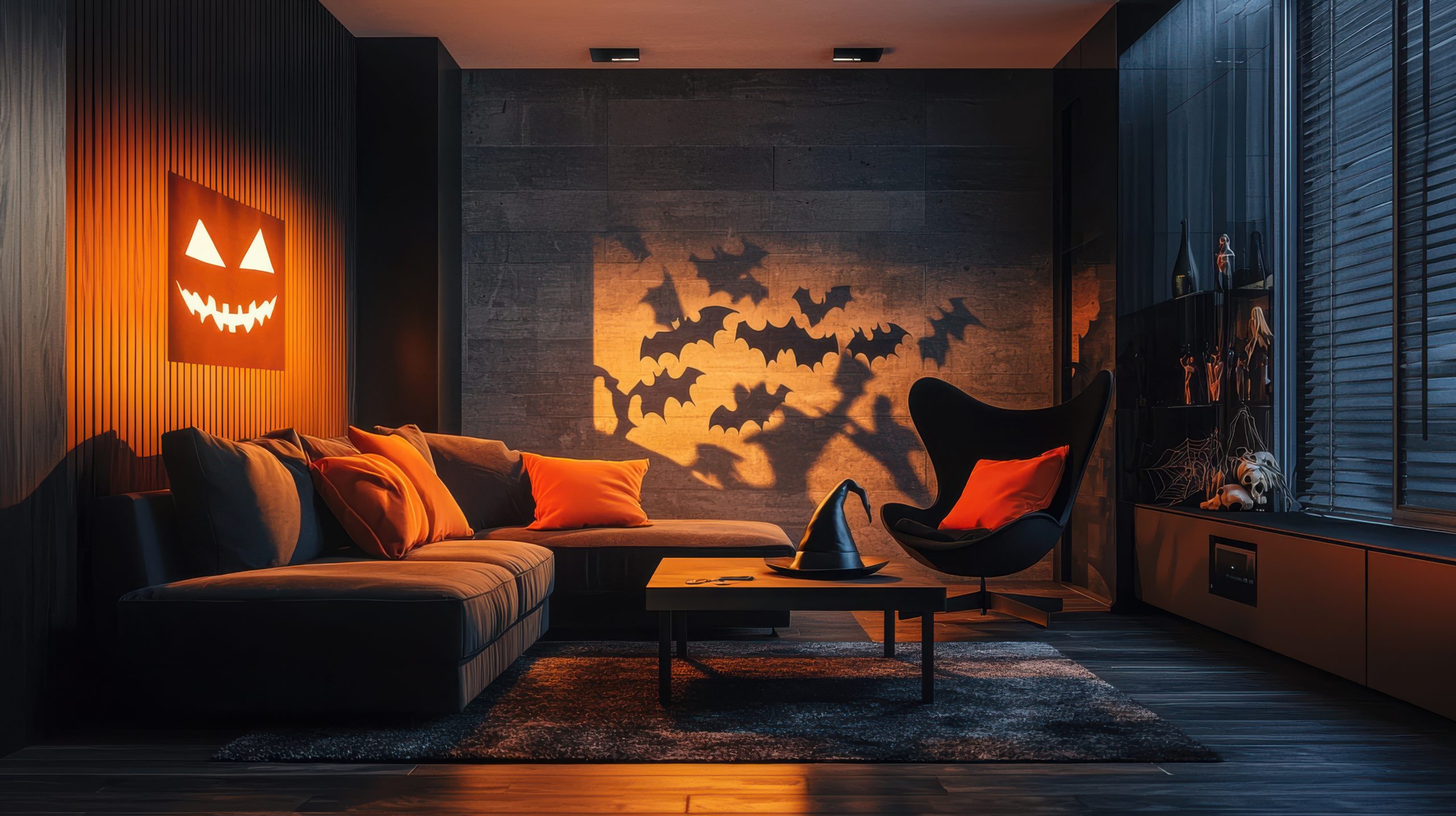
Storage and Transition Planning
Designing with November 1st in Mind
One aspect of Halloween decorating that separates professionals from enthusiasts is thinking beyond October 31st. The best Halloween indoor decorations are those that either transition seamlessly into general fall decor or pack away efficiently for next year’s use.
When selecting pieces, consider their versatility. Deep purple throw pillows work through Thanksgiving. Metallic pumpkins in copper and gold tones feel appropriate until December. Black candlesticks and dark floral arrangements maintain their elegance year-round. This approach means you’re not frantically removing every trace of Halloween on November 1st—instead, you’re simply editing your collection.
Modular decoration systems make transitions smoother. Rather than creating elaborate displays that must be completely dismantled, design vignettes where specifically Halloween elements can be swapped out while the foundation remains. That console table arrangement might keep its branches and candlesticks but trade skulls for pinecones and bats for metallic leaves.
Creating an inventory system sounds tedious, but it saves so much time and money long-term. Photograph your Halloween indoor decorations in place before taking them down. Note what worked, what didn’t, and what you wished you had. Store items in clear containers labelled not just with contents but with room destinations. Next year, you’ll thank yourself for the organisation.
Year-Round Gothic Elements
Investing in quality pieces that transcend seasons makes financial and design sense. A beautifully crafted iron candelabra works for Halloween but also adds drama to winter dinner parties. Antique mirrors, vintage books, and architectural salvage pieces contribute to the Halloween atmosphere while remaining sophisticated year-round fixtures.
Building a curated collection over time prevents the common mistake of buying everything at once. Each year, invest in one or two significant pieces that genuinely enhance your space. This October, it might be a statement mirror with an ornate frame. Next year, perhaps a set of vintage apothecary jars. This approach ensures your Halloween indoor decorations feel collected rather than purchased in bulk.
Professional Tips for Cohesive Halloween Indoor Decorations
The Rule of Three
This fundamental design principle becomes even more crucial when decorating for Halloween. Our brains find odd numbers more visually appealing and dynamic than even groupings. Apply this to every surface: three pillar candles of varying heights, three framed prints on a wall, three decorative pumpkins clustered together.
Height variation within these groupings creates visual interest. If you’re arranging Halloween indoor decorations on a mantel, include something tall (branches or candlesticks), something medium (small pumpkins or decorative boxes), and something low (scattered autumn leaves or a horizontal decorative piece). This creates a rhythm that guides the eye naturally across the display.
Repeating elements throughout your space creates cohesion. If you use mercury glass pumpkins in the living room, include a few in the dining room and entryway. This repetition ties rooms together and makes your Halloween decorating feel intentional rather than random. The key is varying the application—grouped on a coffee table in one room, scattered along a mantel in another.
Avoiding Common Mistakes
Over-decorating small spaces ranks as the top mistake I see every Halloween. In compact rooms, one or two impactful pieces create more atmosphere than dozens of small decorations. A single dramatic piece—perhaps an oversized vintage mirror or a striking candelabra—makes a stronger statement than cluttering every surface.
Ignoring traffic flow becomes particularly problematic during parties. Those trailing cobwebs might look fantastic, but not if guests constantly walk through them. Floor-based decorations should sit against walls or in corners. Hanging elements need enough clearance for tall guests. Test your Halloween indoor decorations by walking normal paths through your home—if you’re ducking or sidestepping, reconsider the placement.
Quality matters more than quantity, especially with items you’ll use annually. That bargain-bin skeleton might seem like a deal, but cheap materials show immediately and deteriorate quickly. Instead, invest in fewer, better-made pieces. Well-crafted Halloween indoor decorations actually save money long-term since they won’t need yearly replacement.
Creating Focal Points
Every room needs a clear star of the show. In the living room, it might be your decorated mantel. The dining room could feature a dramatic tablescape. Entryways often showcase a styled console or striking wall display. Once you’ve identified each room’s focal point, ensure other decorations support rather than compete with it.
Drawing the eye strategically involves understanding natural sight lines. When someone enters a room, where does their gaze naturally fall? That’s where your primary Halloween display belongs. Secondary decorations should create a visual path that leads back to this main feature.
Balancing decorated and negative space prevents overwhelming visitors. For every heavily decorated area, provide visual breathing room nearby. If your mantel features elaborate Halloween styling, keep nearby surfaces relatively simple. This push and pull creates sophisticated tension that feels intentional and designed.
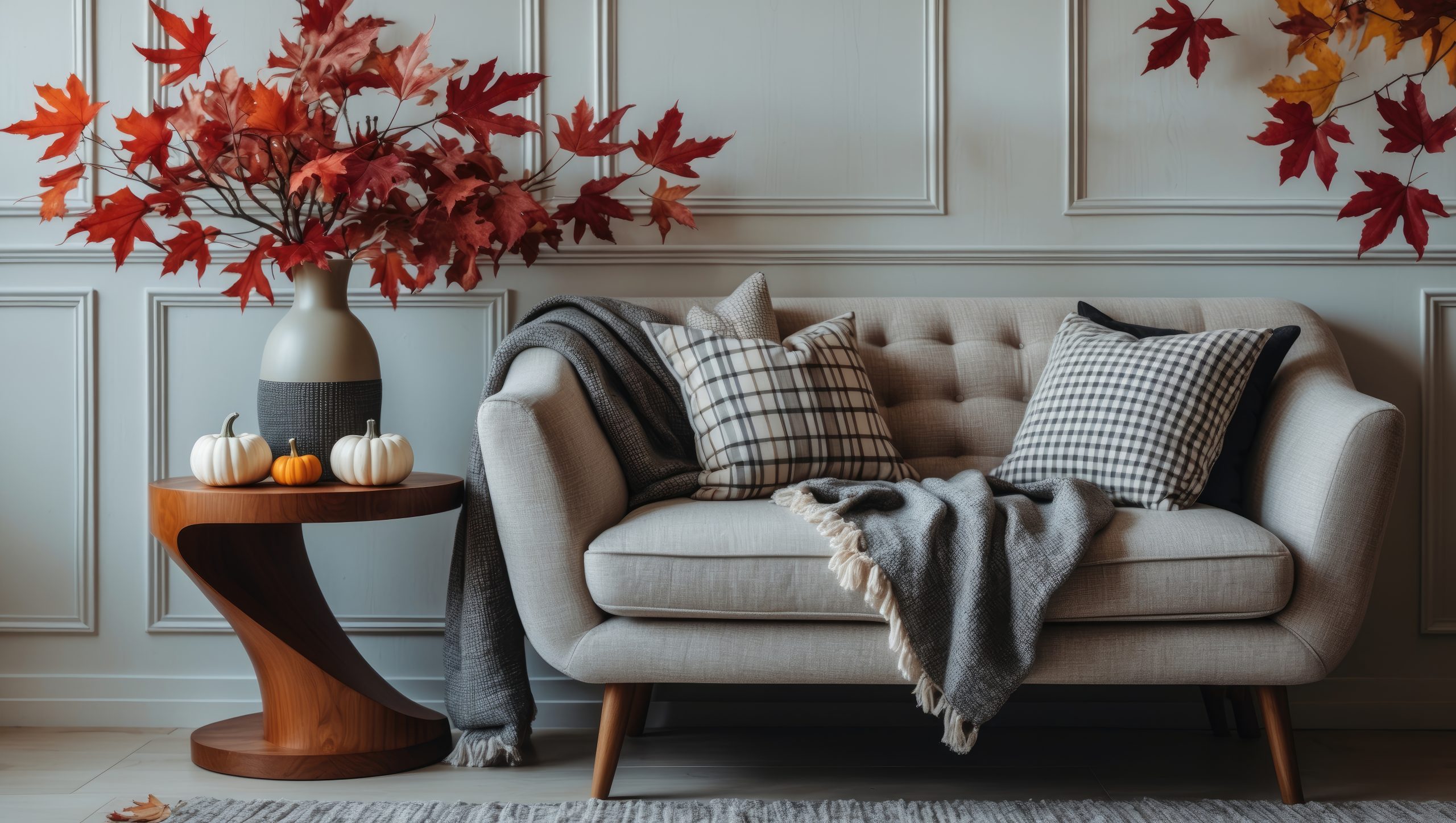
Creating a genuinely haunted home atmosphere doesn’t require abandoning your design principles or overwhelming your space with store-bought decorations. The most memorable Halloween indoor decorations are those that enhance your existing style while adding seasonal drama and mystery.
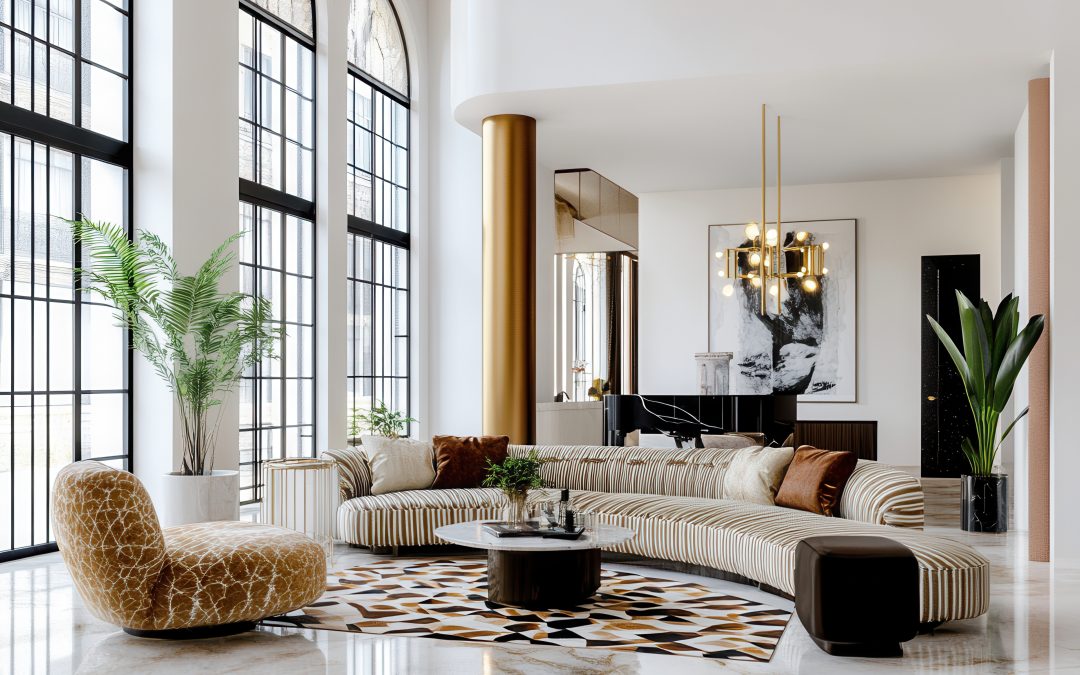
by Kesaa Interiors | DESIGN GUIDES, Interior Design Styles, Style Guides, STYLES & TRENDS
There’s something undeniably magical about Art Deco interior design that keeps drawing me back to this style. I’ve seen how incorporating Art Deco home interior design ideas can transform an ordinary space into something extraordinary. The style’s perfect blend of glamour and sophistication has captivated homeowners and designers alike for decades. I’m thrilled to share my favourite ways to bring this timeless aesthetic into your home.
I’ll walk you through 15 stunning Art Deco home interior design ideas that can help you achieve that perfect luxe look. Whether you’re planning a complete renovation or looking to add just a touch of that signature Art Deco glamour, these tips will help you create the space you’ve been dreaming of.
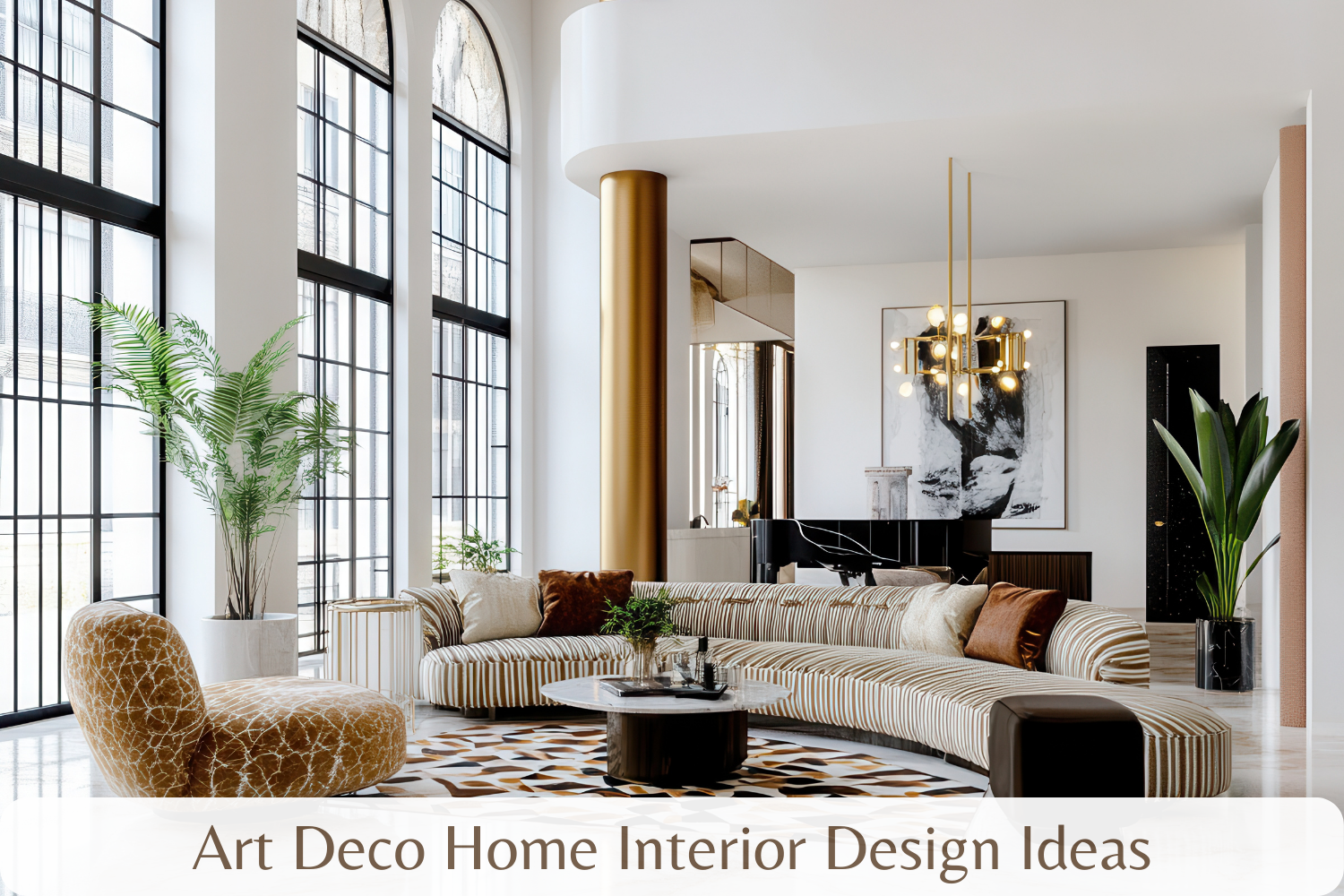
Geometric Patterns and Bold Lines
If there’s one element that truly defines Art Deco home interior design, it’s the bold use of geometric patterns. These dramatic designs are the heart and soul of the style, and they have an incredible way of transforming even the most basic room into something spectacular.
Here’s my approach to incorporating these patterns:
- Start with one bold geometric element as your focal point. I always suggest beginning with either wallpaper or a large area rug – these anchor pieces set the tone for the entire space.
- Layer in angular furniture pieces that echo your main pattern. Think zigzag-patterned throw pillows or a stunning cabinet with geometric overlay.
- Mix different scales of patterns, but keep them in the same colour family. One of my favourite combinations is pairing a large-scale geometric wallpaper with smaller-patterned cushions or curtains.
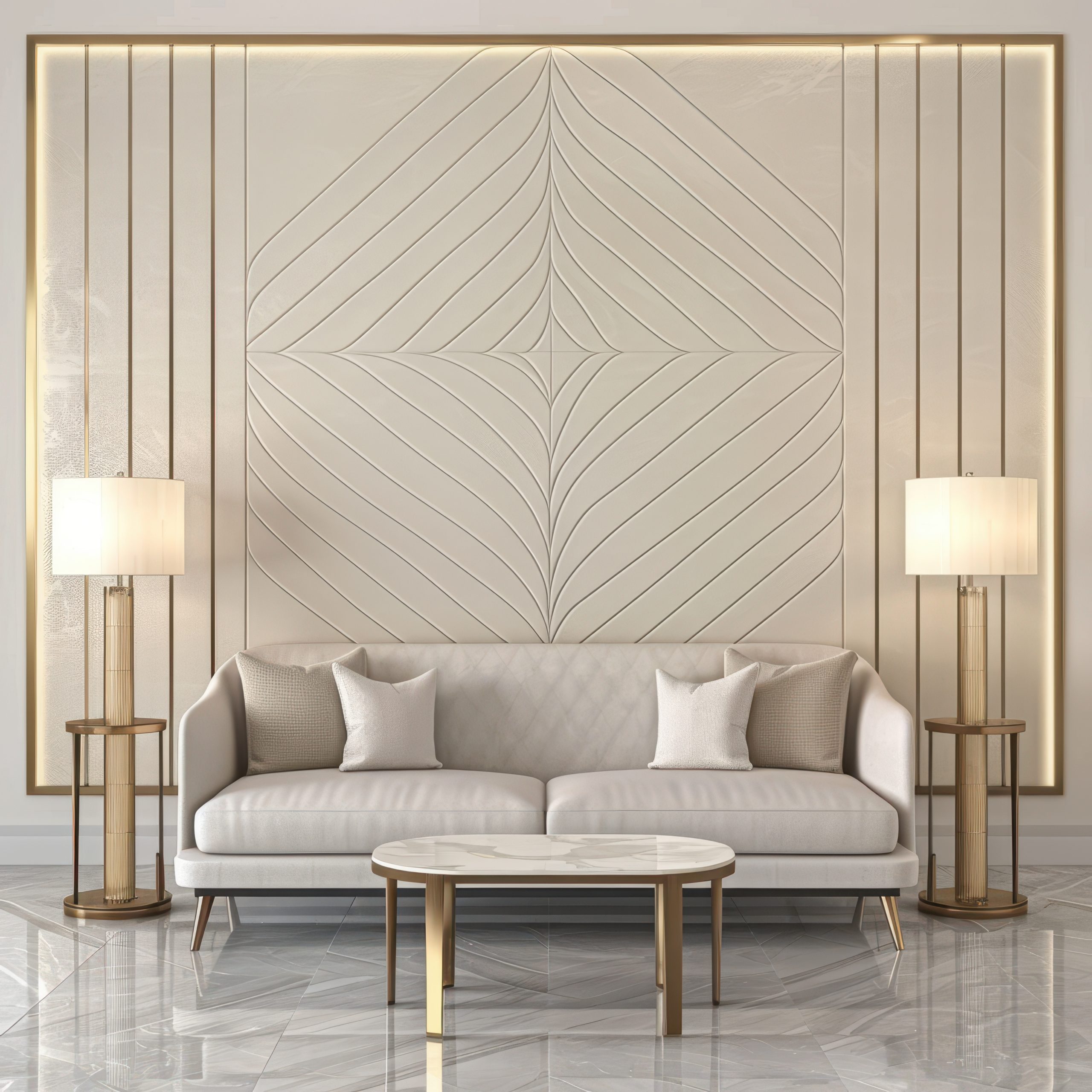
Pro tip: If you’re nervous about committing to bold geometric wallpaper, try starting with removable wallpaper panels or focus on incorporating geometric patterns through art pieces and textiles. This is a fantastic way to experiment with Art Deco home interior design ideas without making permanent changes.
Remember, the key to successful Art Deco pattern play is confidence – this isn’t a style for the timid! I always tell my clients that if they’re going to embrace Art Deco, they should embrace it. The beauty of these geometric patterns is that they create an instant focal point and set the stage for all your other Art Deco elements to shine.
These striking patterns aren’t just decorative; they’re conversation starters. The impact of a bold geometric design element is undeniable – it’s exactly the kind of statement we’re looking for with Art Deco home interior design. These patterns command attention and exude confidence, creating spaces that feel both sophisticated and dramatic.
Luxurious Metallics
Nothing says Art Deco home interior design quite like the gleam of metallic finishes. The way metals catch and reflect light adds that essential layer of glamour that’s so characteristic of this style. Gold, brass, and chrome are the holy trinity of Art Deco metallics, and I never tire of seeing how they can elevate a space.
Here’s how I love to incorporate these luxurious elements:
- Start with your hardware: Door handles, cabinet pulls, and light switches in polished brass or chrome make for an immediate Art Deco upgrade.
- Layer in larger metallic pieces: Think mirrors with metal frames, side tables with brass legs, or chrome-finished bar carts.
- Mix your metals thoughtfully: While traditional Art Deco favoured single metal tones, modern interpretations can beautifully blend different metallics – just keep them in the same temperature family.
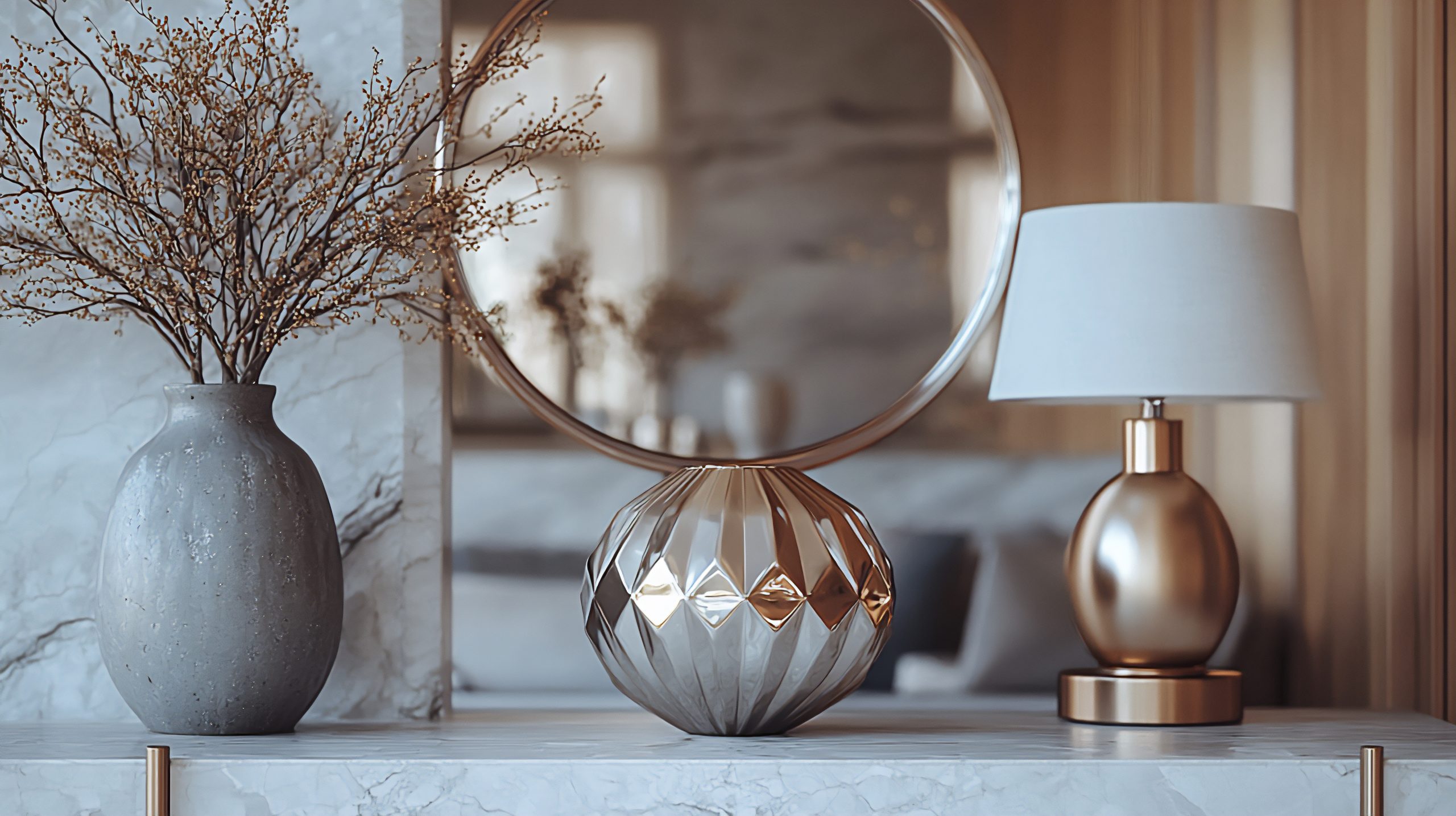
The key is to distribute these metallic elements evenly throughout your space. I find that treating metals like jewellery for your room works perfectly – they should enhance rather than overwhelm. A metallic ceiling medallion paired with matching wall sconces, for instance, creates a cohesive look that draws the eye around the room.
Pro tip: When incorporating metallics into your Art Deco home interior design ideas, remember that a little shine goes a long way. Balance these gleaming surfaces with rich, matte textures like velvet or wool to create depth and visual interest.
One of my favourite ways to make a statement is with a large metallic piece – perhaps an oversized sunburst mirror or a striking gold-leafed cabinet. These signature pieces become natural focal points while embodying the luxury and drama that make Art Deco so appealing.
Statement Lighting
If there’s one element that can make or break your Art Deco home interior design, it’s lighting. Art Deco lighting fixtures are like functional sculptures, commanding attention whether they’re switched on or off.
The most impactful Art Deco lighting features include:
- Tiered chandeliers with geometric glass panels
- Sconces with stepped designs and metallic finishes
- Pendant lights featuring clean lines and frosted glass
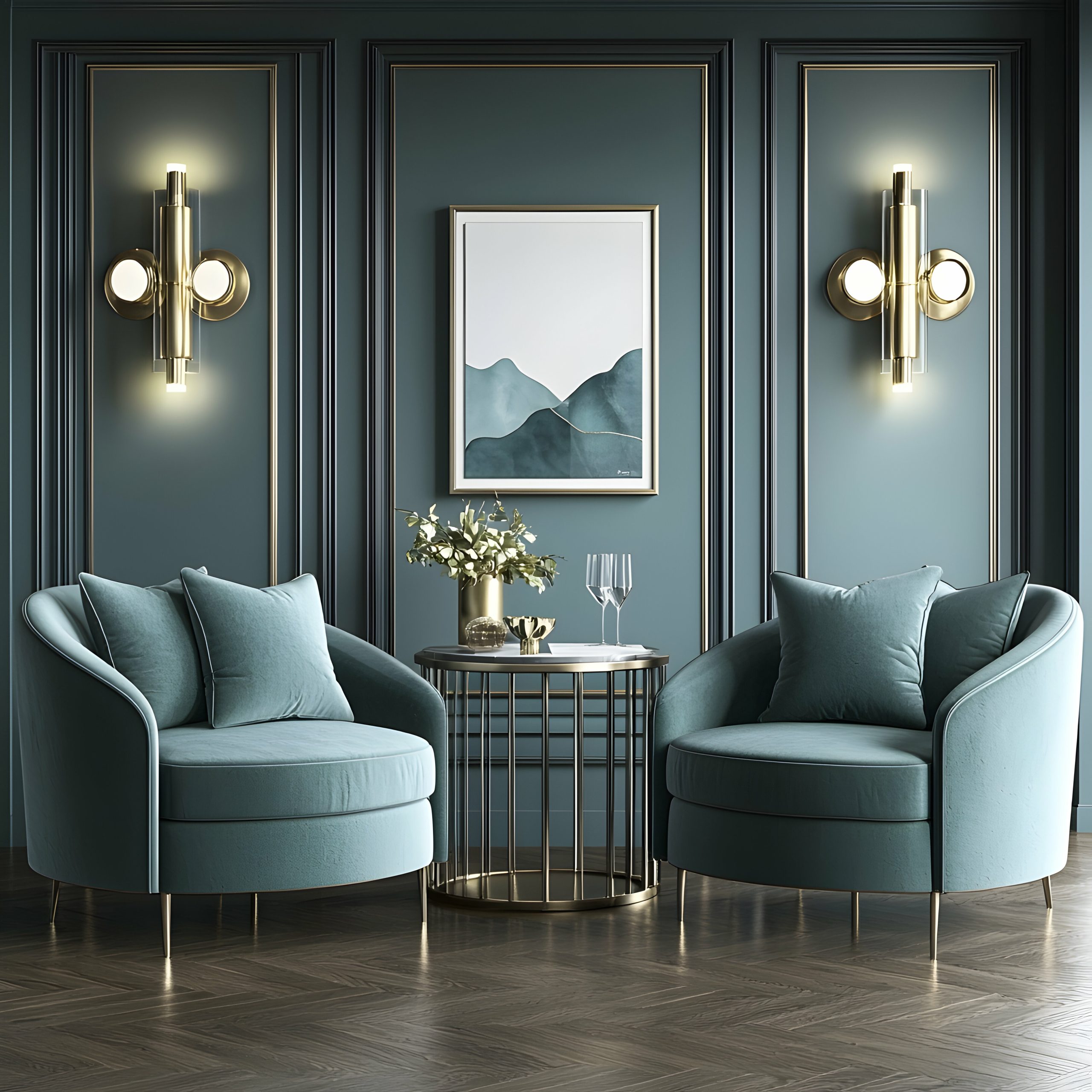
When selecting lighting, look for pieces that incorporate typical Art Deco motifs – sunbursts, fan shapes, and geometric patterns. The right fixture can become the cornerstone of your entire design scheme, informing the rest of your decor choices.
What makes Art Deco lighting so special is its ability to serve as both illumination and art. During the day, these fixtures act as sculptural elements, while at night, they create dramatic shadow plays and lighting effects that transform your space.
Remember, the placement of your lighting is just as important as the fixtures themselves. Consider creating layers of light with a mix of ceiling fixtures, wall sconces, and table lamps. This layered approach not only provides practical illumination but also adds depth and drama, which are essential elements in Art Deco home interior design.
Rich Colour Palettes
The colours you choose for your Art Deco home interior design set the stage for drama and sophistication. What I love most about Art Deco colour schemes is their boldness – these aren’t your typical safe, neutral palettes. Instead, we’re talking about colours that make a statement and leave an impression.
The most striking Art Deco colour combinations include:
- Deep emerald green paired with gold and black
- Sapphire blue with silver and cream
- Ruby red combined with chrome and white
- Rich tobacco brown with bronze and ivory
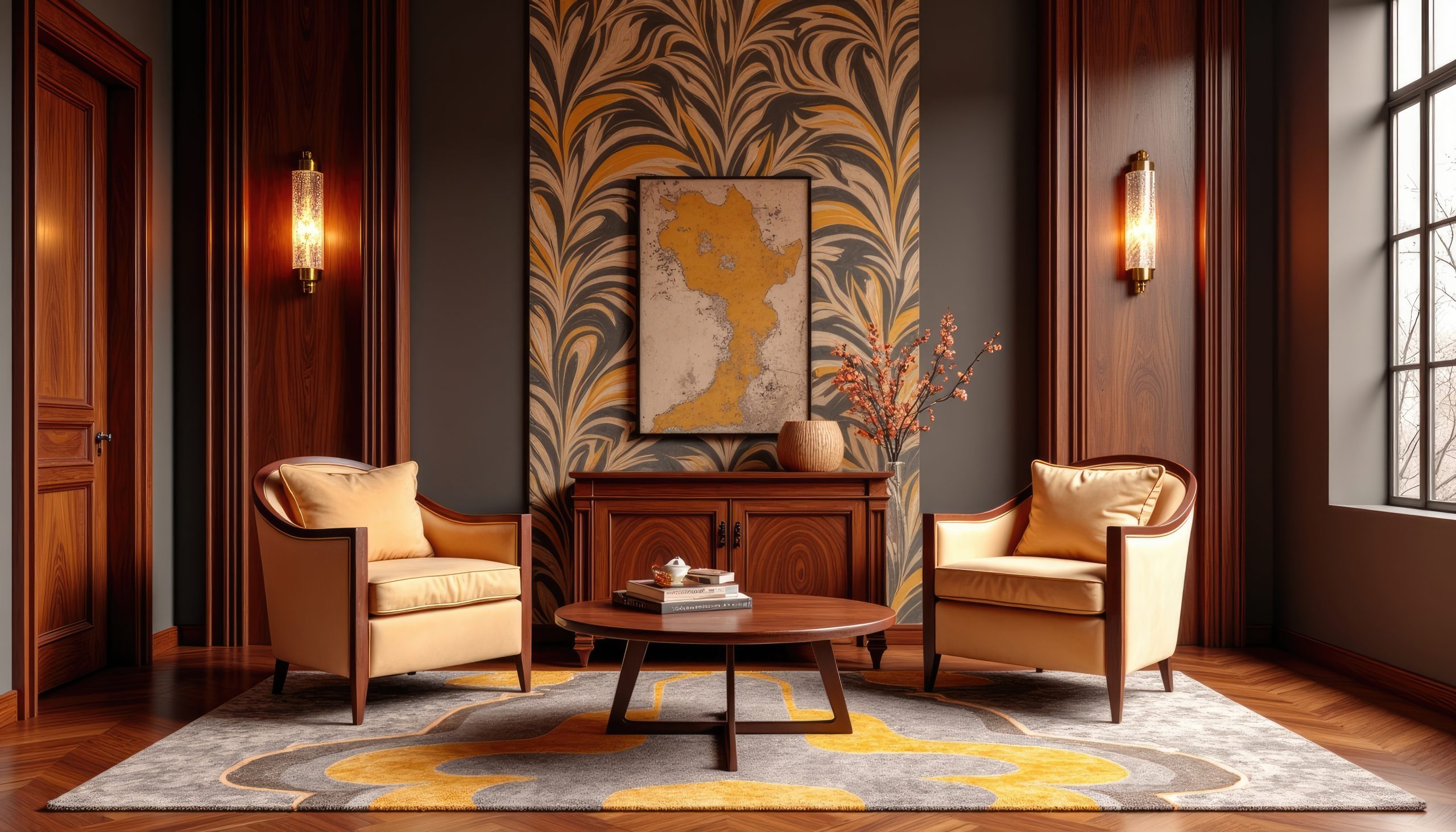
When working with these bold colours, I find it’s best to follow the 60-30-10 rule: 60% of your space in a dominant colour, 30% in a secondary colour, and 10% in an accent colour. This creates balance while maintaining that signature Art Deco drama.
Pro tip: Start with one bold colour you absolutely love and build your palette around it. The walls don’t always need to be the boldest element – a deep-coloured velvet sofa can be just as impactful against neutral walls.
Mirrored Surfaces
Nothing captures the glamour of Art Deco home interior design quite like the strategic use of mirrors and mirrored surfaces. These reflective elements add depth, light, and a touch of Hollywood golden age glamour to any space.
Key ways to incorporate mirrored elements:
- Install mirror panels with geometric divisions
- Choose furniture pieces with mirrored accents
- Add mirrored trays and decorative objects
- Consider an Art Deco-style mirror as wall art
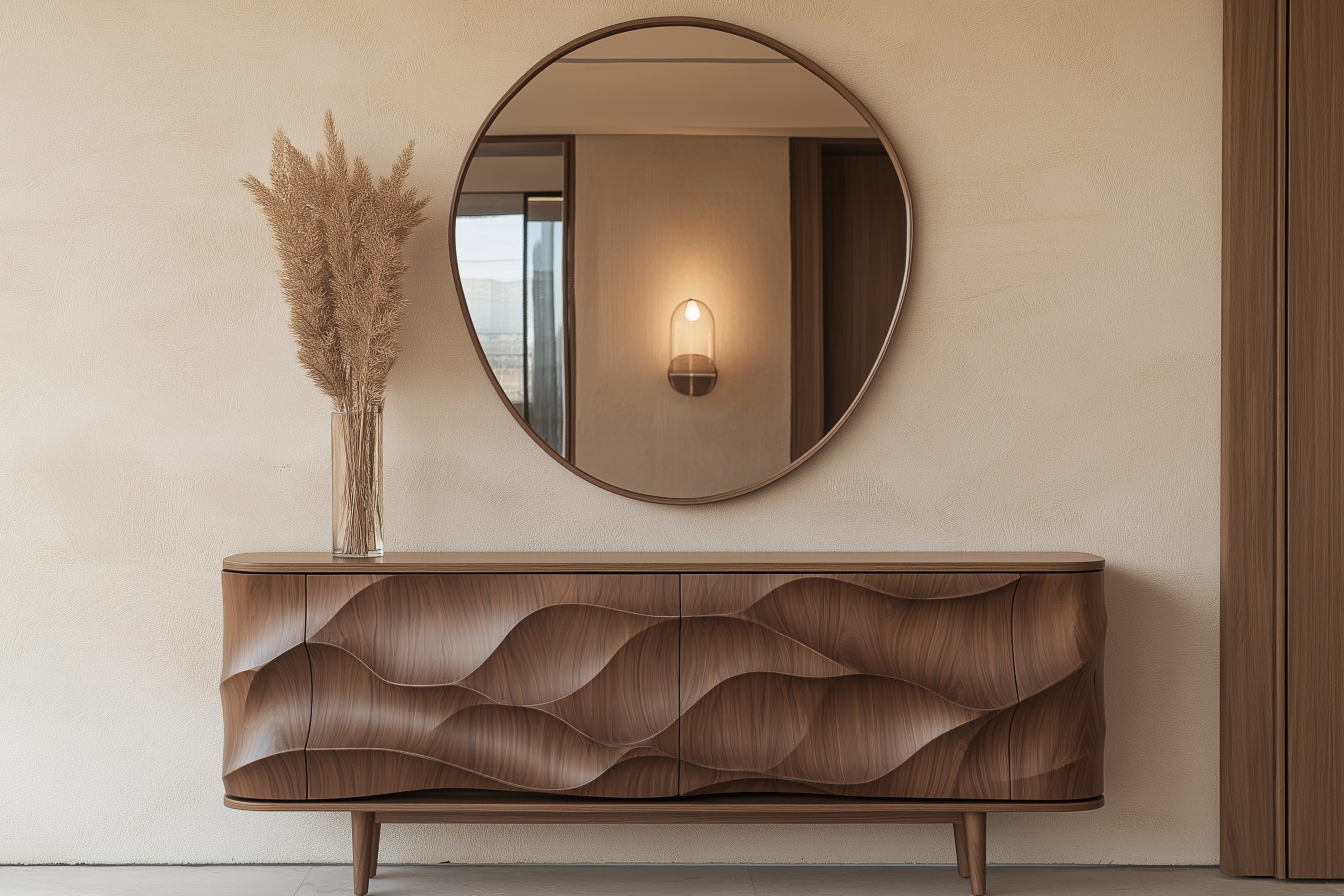
The trick with mirrors is to place them thoughtfully. Position them to reflect something interesting – perhaps your statement lighting or a beautiful piece of art. This doubles the impact of your best decorative elements while creating that sought-after Art Deco sparkle.
One word of caution: while mirrors are fantastic, too many can feel overwhelming. I always suggest choosing one or two significant mirrored pieces rather than filling every surface with reflection.
Sophisticated Materials
The materials you choose for your Art Deco home interior design are crucial for creating that luxurious feel. This style is all about combining different textures and surfaces to create a rich, layered effect.
Essential Art Deco materials include:
- Polished woods (especially exotic varieties)
- Plush velvets
- Smooth lacquer finishes
- High-gloss marble
- Sleek glass
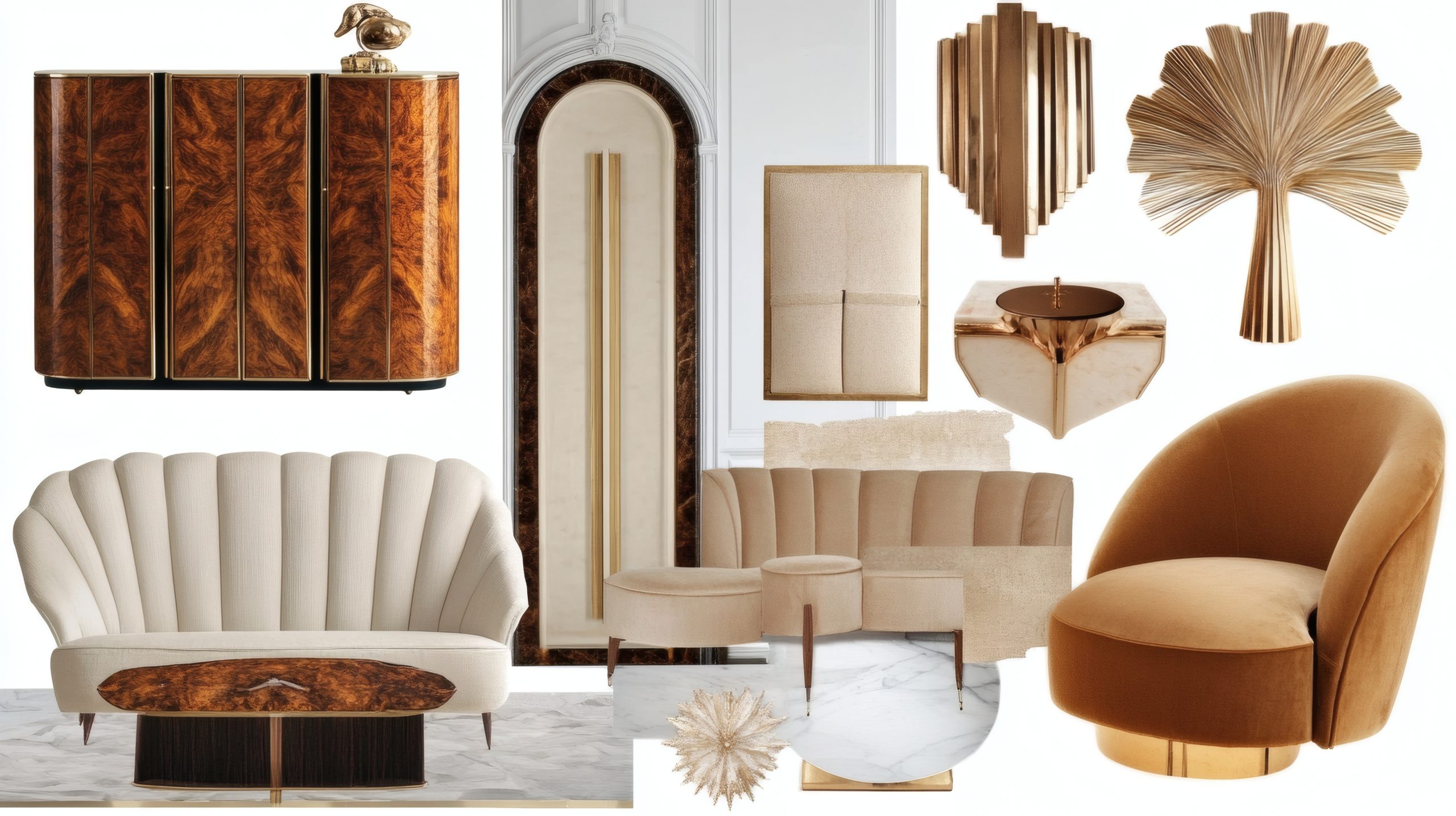
The key to working with these materials is contrast. Pair smooth, glossy surfaces with soft, tactile fabrics. Consider a lacquered sideboard topped with velvet-covered boxes, or marble floors softened by a plush geometric rug.
When selecting furniture pieces, look for:
- High-sheen wood finishes
- Upholstery in luxurious fabrics
- Pieces combining different materials
- Clean lines with sophisticated details
Remember, quality matters in Art Deco design. While there are always ways to achieve the look on a budget, investing in a few key pieces made from authentic materials will elevate your entire space.
Bold Artwork and Wall Panels
Art Deco home interior design isn’t complete without making a statement through your wall treatments. The artwork and wall details of this era were never meant to fade into the background – they’re intended to be bold, dramatic, and impossible to ignore.
Key elements to consider:
- Large-scale artwork featuring geometric patterns
- Stylised figures and motifs
- Decorative wall panels with stepped designs
- Bold murals with metallic accents
- Sculptural wall installations
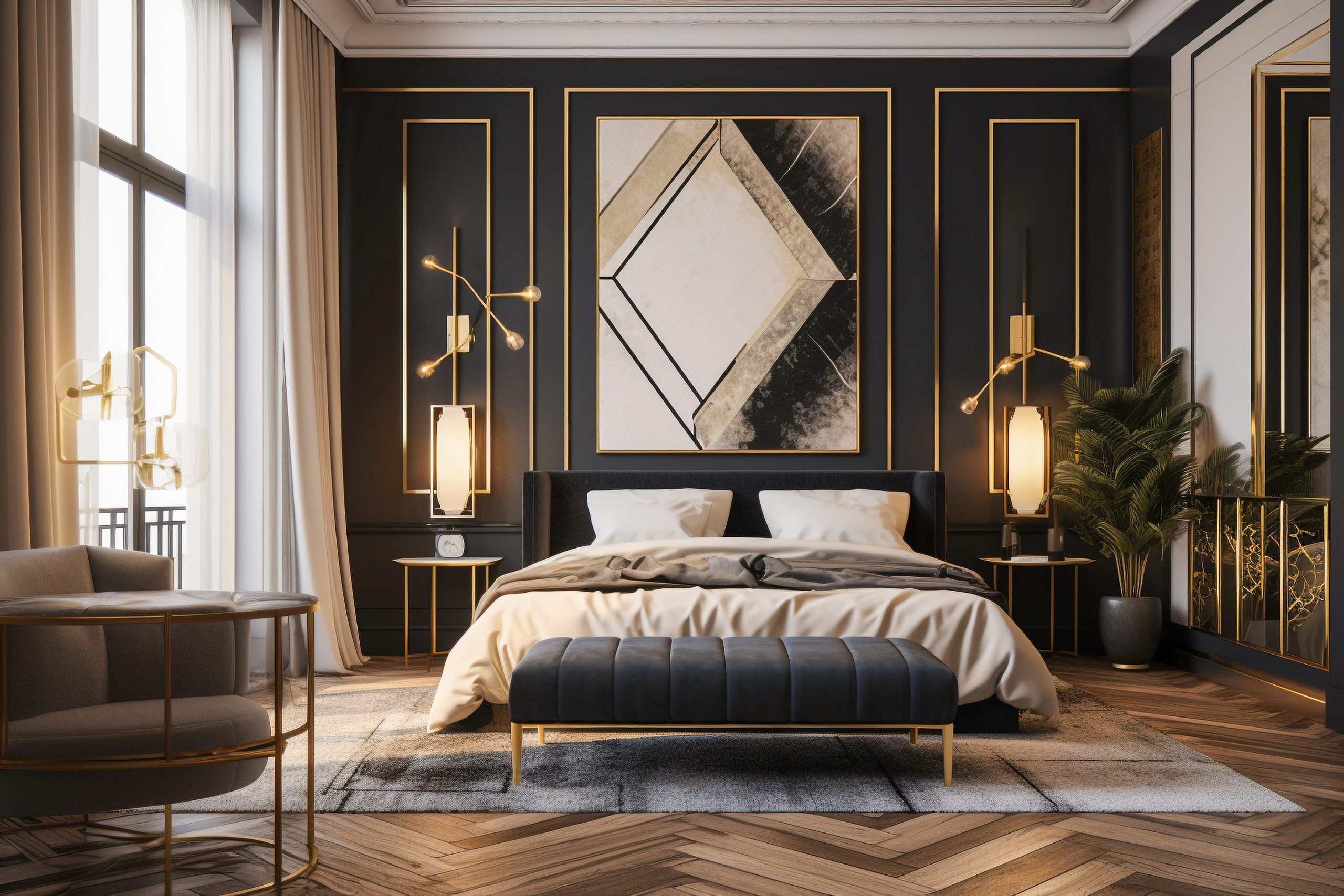
When selecting artwork, look for pieces that embrace typical Art Deco themes: sunbursts, chevrons, stylised animals, and figurative works with elongated forms. I particularly love how oversized pieces can transform an entire wall into a focal point.
For wall panels, consider:
- Wood panels with geometric inlays
- Upholstered panels in luxe fabrics
- Metal or mirror panels with decorative overlays
- Painted panels with metallic details
The beauty of Art Deco wall treatments is their versatility. You might opt for a single dramatic mural behind your sofa, or create an entire wall of geometric panels. Whatever you choose, make sure it complements rather than competes with your other Art Deco elements.
Streamlined Furniture
The furniture in Art Deco home interior design tells a story of elegance through form. These pieces are all about clean lines and curved edges, creating a sense of movement while maintaining sophistication.
Essential furniture characteristics include:
- Curved sofas and club chairs
- Streamlined silhouettes
- Built-in seating nooks
- Furniture with stepped or waterfall edges
- Pieces that combine different materials
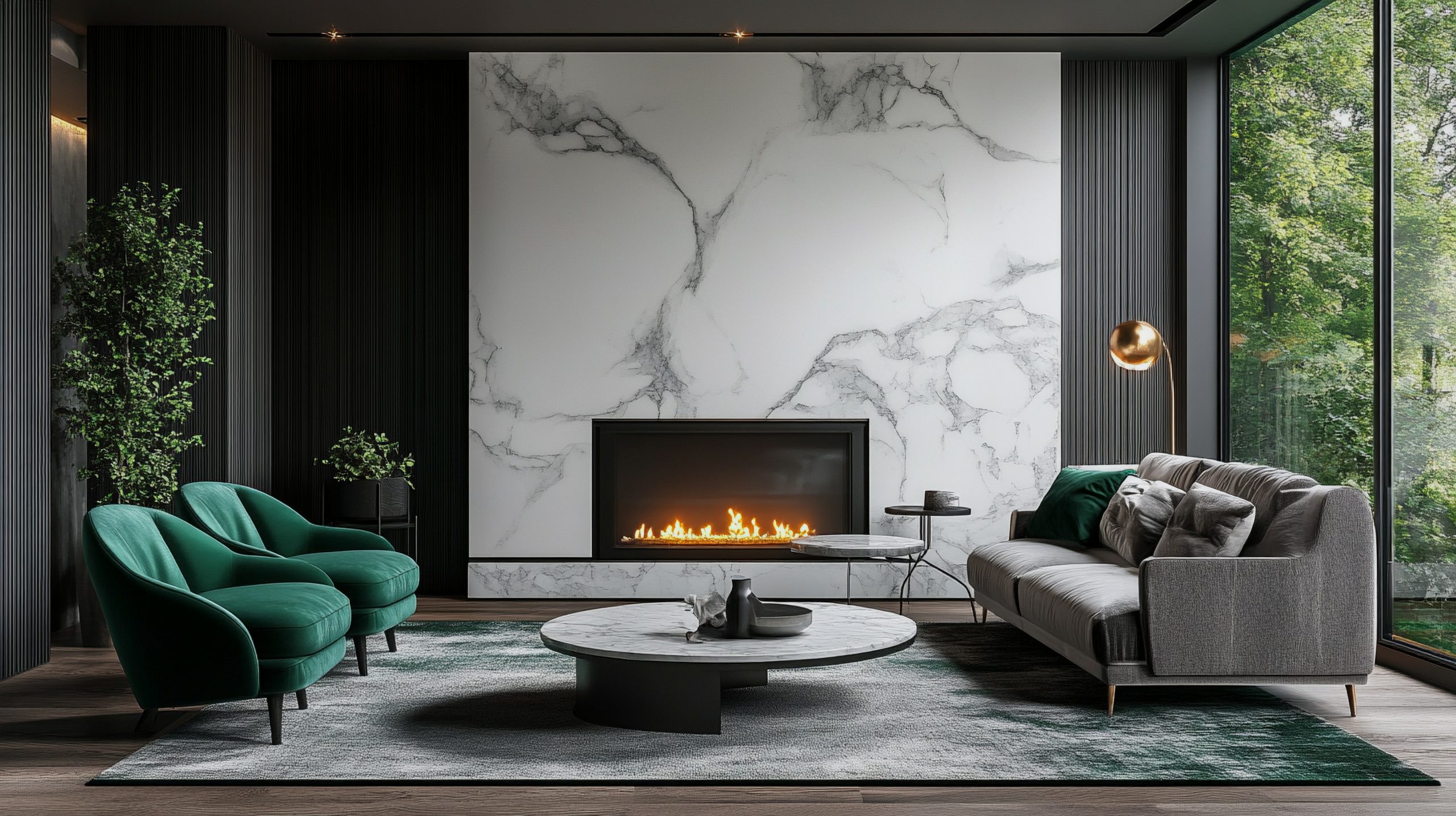
When selecting furniture, I always recommend focusing on:
- Low-profile pieces with strong horizontal lines
- Rounded corners and smooth curves
- Symmetrical arrangements
- Pieces that make a statement without being bulky
The key to successful Art Deco furniture placement is balance. Create conversation areas that feel intimate yet sophisticated, and don’t be afraid to mix curved pieces with angular ones – this contrast is what makes Art Deco so dynamic.
Pro tip: If you’re working with a smaller space, choose fewer, more impactful pieces rather than trying to squeeze in too many elements. A single spectacular curved sofa can have more impact than multiple smaller pieces.
Remember, comfort shouldn’t be sacrificed for style. The best Art Deco rooms combine visual drama with practical livability. Look for pieces that invite you to sit and stay while maintaining those classic Art Deco lines.
When it comes to upholstery, opt for:
- Rich, solid colours
- Geometric patterns
- Luxurious textures
- High-quality fabrics that will stand the test of time
The beauty of Art Deco furniture lies in its ability to be both functional and sculptural. Each piece should work as part of your overall design while being striking enough to stand on its own.
Exotic Wood Finishes
The use of luxurious woods is one of the most distinctive features of Art Deco home interior design. These aren’t your everyday wood finishes – we’re talking about spectacular grains and rich colours that immediately elevate a space’s sophistication level.
Key wood varieties to consider:
- Macassar ebony with its dramatic striped grain
- Bird’s eye maple for its unique spotted pattern
- Zebra wood offers bold, natural stripes
- Burled walnut with its swirling patterns
- Rosewood for its deep, rich tones
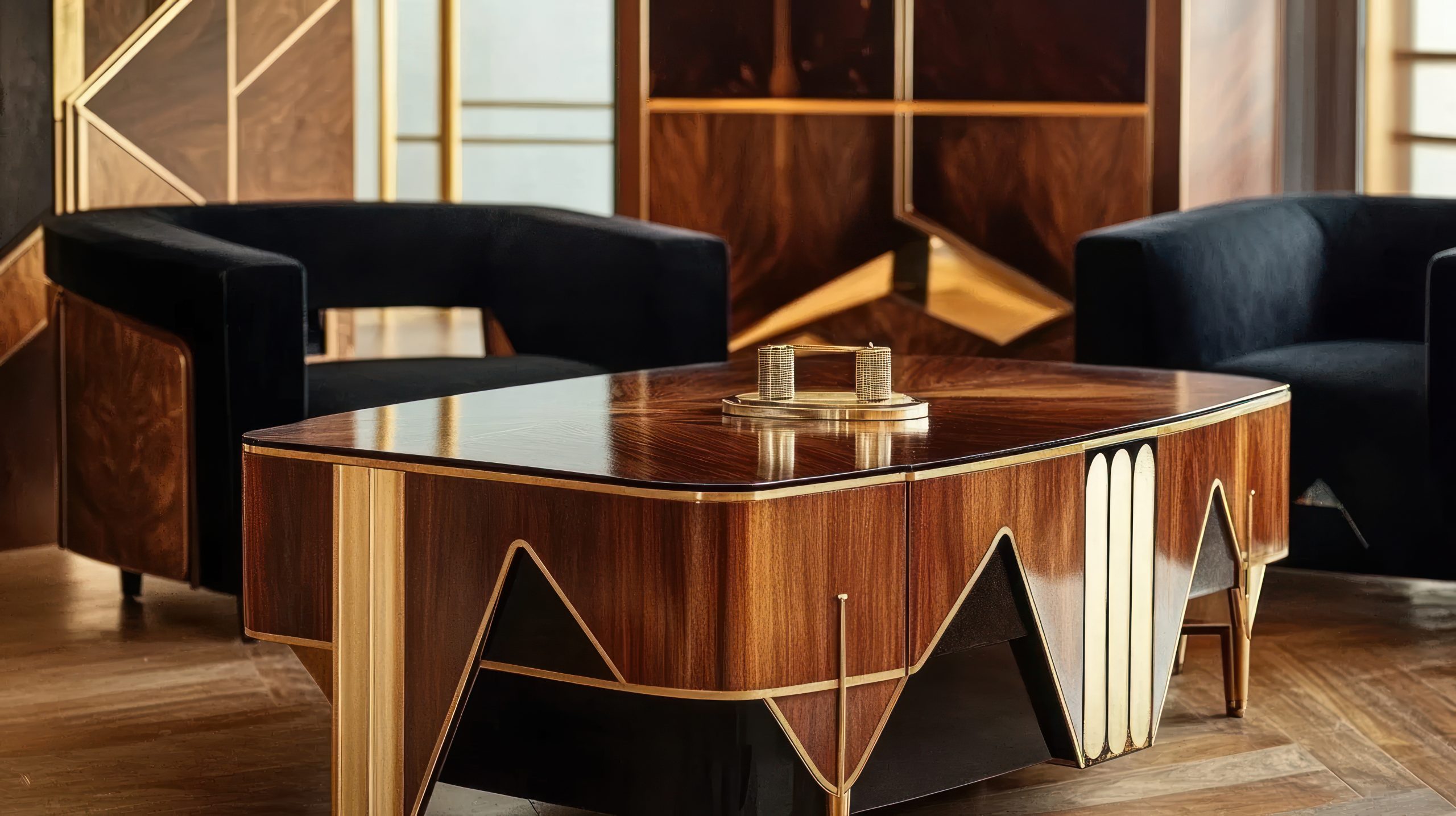
The beauty of these woods lies in their natural patterns. Whether it’s through furniture pieces, wall panels, or built-ins, these materials add organic geometry to your Art Deco scheme. I particularly love how they catch the light and create depth in a space.
Using exotic woods effectively:
- Choose one statement piece as your anchor
- Mix different woods while keeping finishes consistent
- Balance dark and light wood tones
- Consider wood inlays for added detail
Pro tip: If authentic exotic woods are beyond your budget, there are excellent veneers and alternatives available that can create a similar effect. The key is choosing options with strong, distinctive grain patterns.
Statement Staircases
In Art Deco home interior design, staircases aren’t just functional elements – they’re architectural showpieces that can define an entire space. Whether you’re working with a grand curved staircase or a more modest design, there are plenty of ways to incorporate Art Deco elements.
Essential staircase features include:
- Geometric railings with repeated patterns
- Chrome or brass handrails
- Stepped details in the balustrades
- Dramatic runner patterns
- Contrasting materials
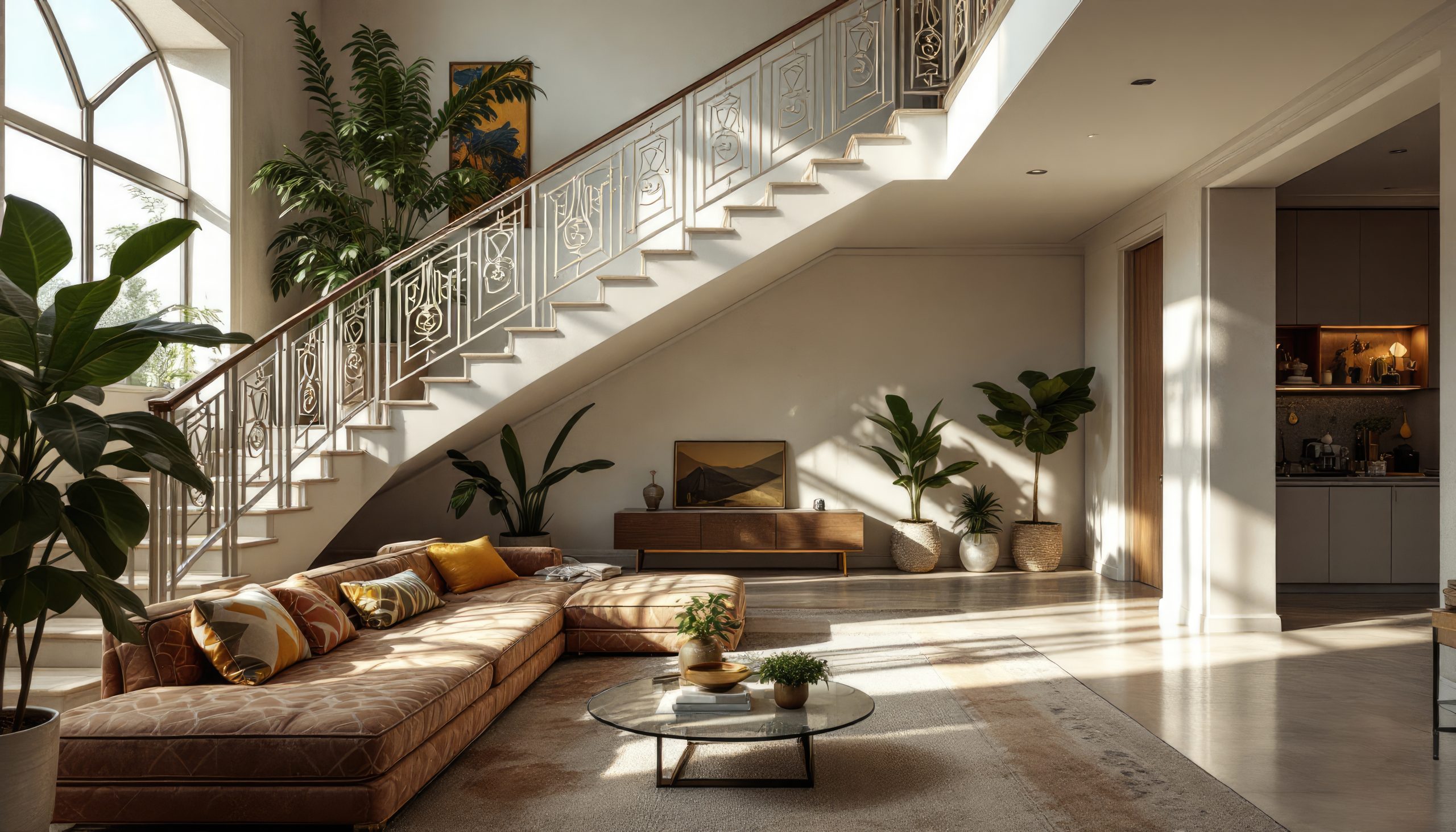
The most impactful staircase elements combine:
- Clean lines with decorative details
- Mixed materials like wood and metal
- Strategic lighting to highlight design features
- Pattern play through flooring or runners
When designing or updating a staircase, consider:
- The visual weight of different elements
- How light plays off metallic surfaces
- The balance between plain and decorative components
- The transition between different levels of your home
Even if you’re working with an existing staircase, there are ways to add Art Deco flair:
- Update balusters with geometric designs
- Add metallic accents to handrails
- Install a bold geometric runner
- Create drama with wall treatments alongside the stairs
Remember, your staircase should work in harmony with your other Art Deco elements while still making its own statement. Think of it as a piece of functional sculpture that helps tell your home’s design story.
The real magic happens when you combine these architectural elements with thoughtful lighting and decorative details. A well-designed Art Deco staircase catches the eye while guiding it upward, creating a sense of anticipation for what’s to come.
Luxe Window Treatments
Window treatments in Art Deco home interior design are never an afterthought – they’re an integral part of the room’s architecture and overall drama. The right window treatments can frame your views while adding that essential layer of Art Deco sophistication.
Key elements to consider:
- Layered treatments with sheer and heavy fabrics
- Strong horizontal banding
- Metallic hardware and finials
- Geometric patterns in fabric choices
- Dramatic height with floor-to-ceiling designs
When selecting window treatments, think about:
- Heavy silk or velvet for the main curtains
- Sheer panels with subtle geometric patterns
- Metal rods with decorative ends
- Valances with stepped or angular designs
- Automated systems hidden behind pelmets
Pro tip: Height is crucial in Art Deco design. Mounting curtains close to the ceiling and letting them fall to the floor creates that sought-after sense of drama and luxury.
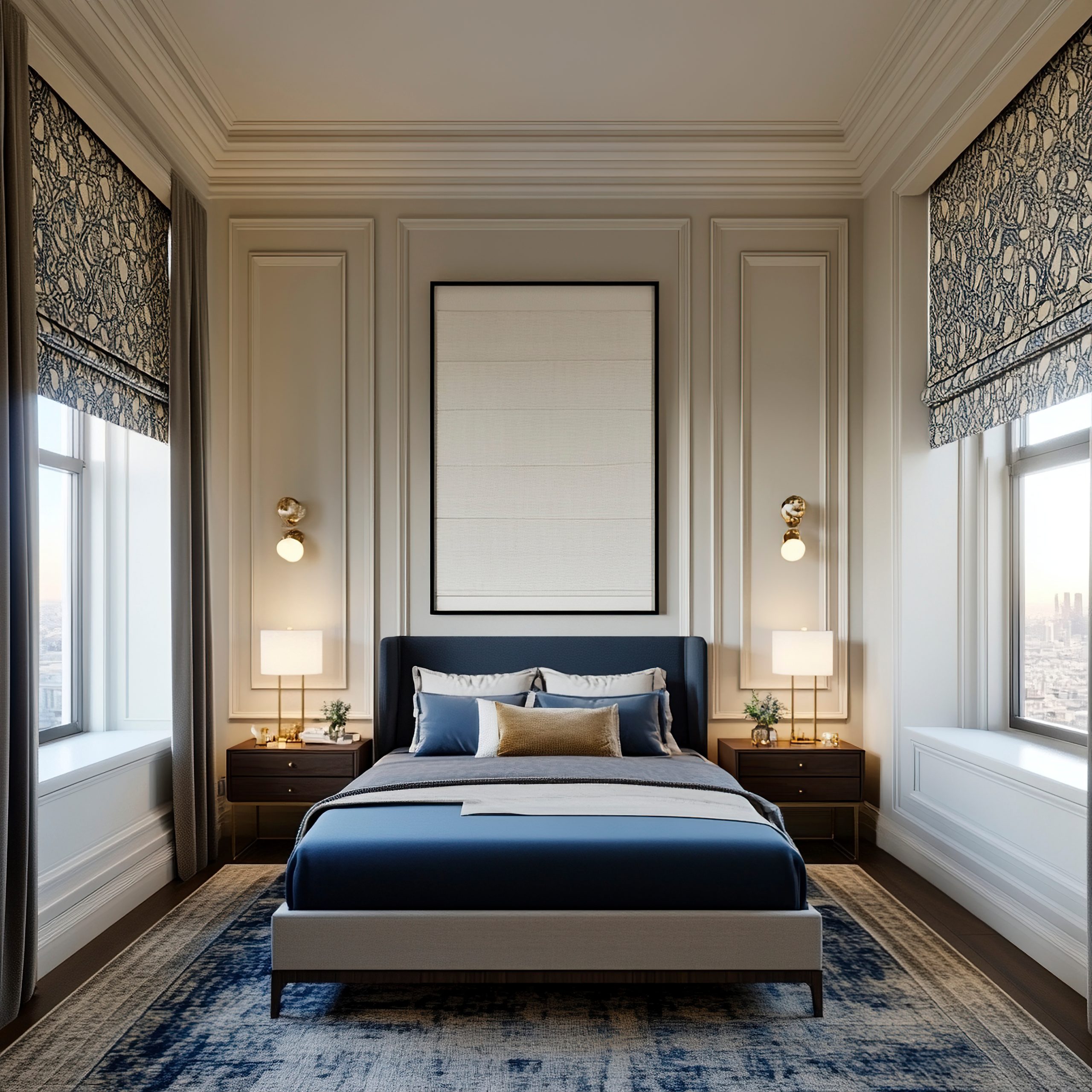
The hardware you choose is just as important as the fabric:
- Choose bold finials that echo other room elements
- Consider chrome, brass, or black metal finishes
- Look for geometric shapes in curtain rings and holdbacks
- Don’t shy away from substantial curtain rods
Floor Design
The floor is your room’s largest surface area, and in Art Deco home interior design, it deserves special attention. A well-designed floor creates a foundation that supports and enhances all your other decorative elements.
Signature flooring options include:
- Geometric pattern tiles
- Inlaid wood designs
- Bold marble patterns
- High-contrast combinations
- Luxurious carpets with Art Deco motifs
The key to successful Art Deco flooring lies in:
- Strong pattern definition
- Careful material selection
- Thoughtful layout planning
- Balance with other room elements
When working with hard surfaces, consider:
- Contrasting materials like wood and marble
- Geometric inlays that define spaces
- Borders that frame room areas
- Patterns that direct traffic flow
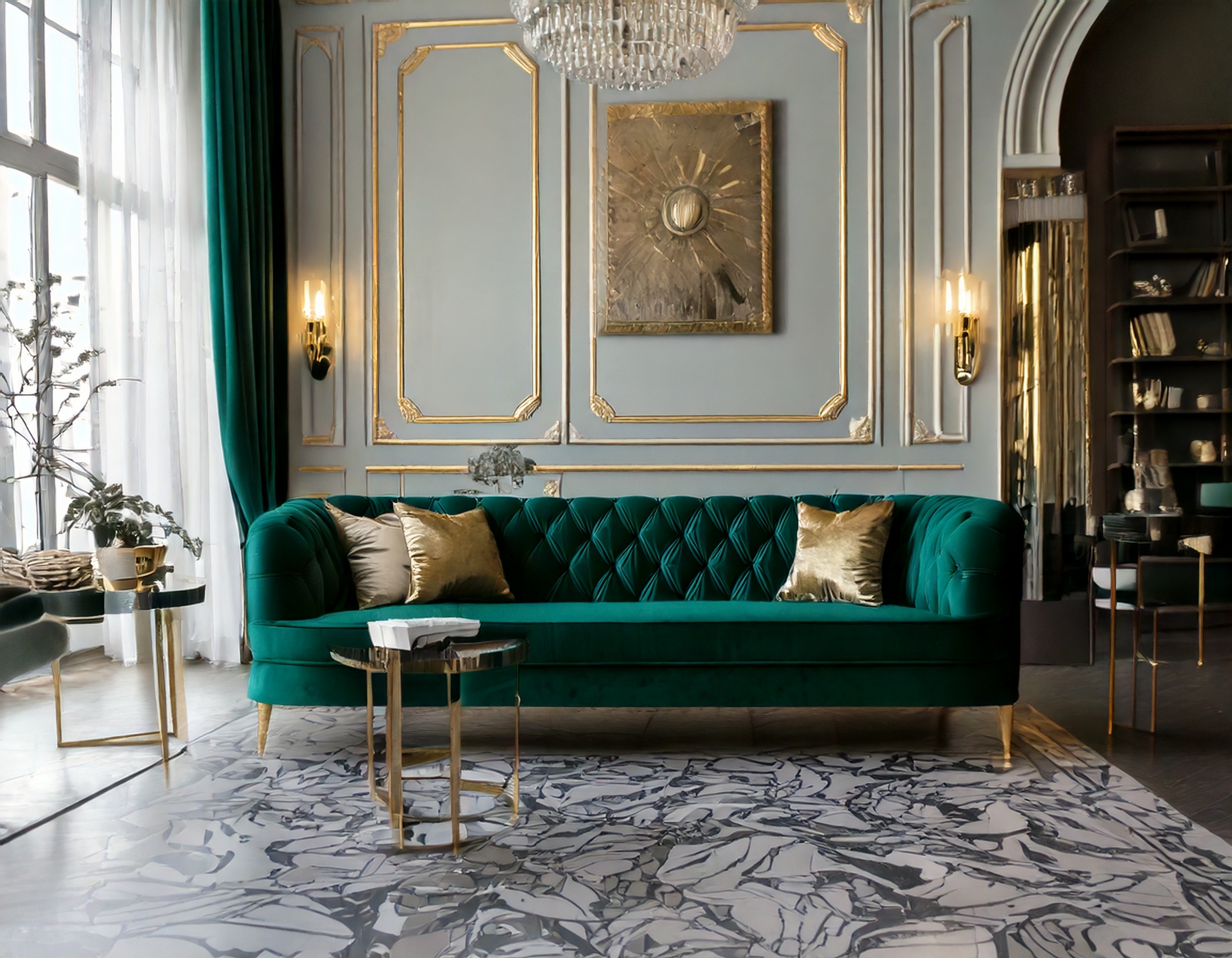
For those working with carpets and rugs:
- Choose bold geometric patterns
- Look for high-quality materials
- Consider custom designs for the perfect scale
- Use rugs to define separate areas within a space
Remember, your flooring should work in harmony with your wall treatments and furniture. While it can be bold, it shouldn’t compete with other key elements in your space. Think of it as the sophisticated canvas upon which your Art Deco story unfolds.
Pro tip: If you’re hesitant about committing to permanent patterned flooring, start with a dramatic Art Deco rug. It can provide the same impact while offering flexibility for future changes.
Bathroom Glamour
The bathroom presents a perfect opportunity to fully embrace Art Deco home interior design in all its glamorous glory. This is one space where you can really indulge in luxury and create a stunning private retreat.
Essential Art Deco bathroom elements:
- Black and white tile combinations
- Geometric tile patterns
- Beveled mirrors
- Chrome or gold fixtures
- Marble vanity tops
- Stepped architectural details
What makes an Art Deco bathroom special is attention to detail:
- Consider a statement vanity mirror with a geometric design
- Install wall sconces with frosted glass shades
- Choose fixtures with clean, angular lines
- Add metallic accents through hardware and accessories
When selecting tiles, think about:
- Classic black and white combinations
- Geometric patterns for feature walls
- Marble with strong veining
- Contrasting border details
- Small hexagonal tiles for an authentic period feel
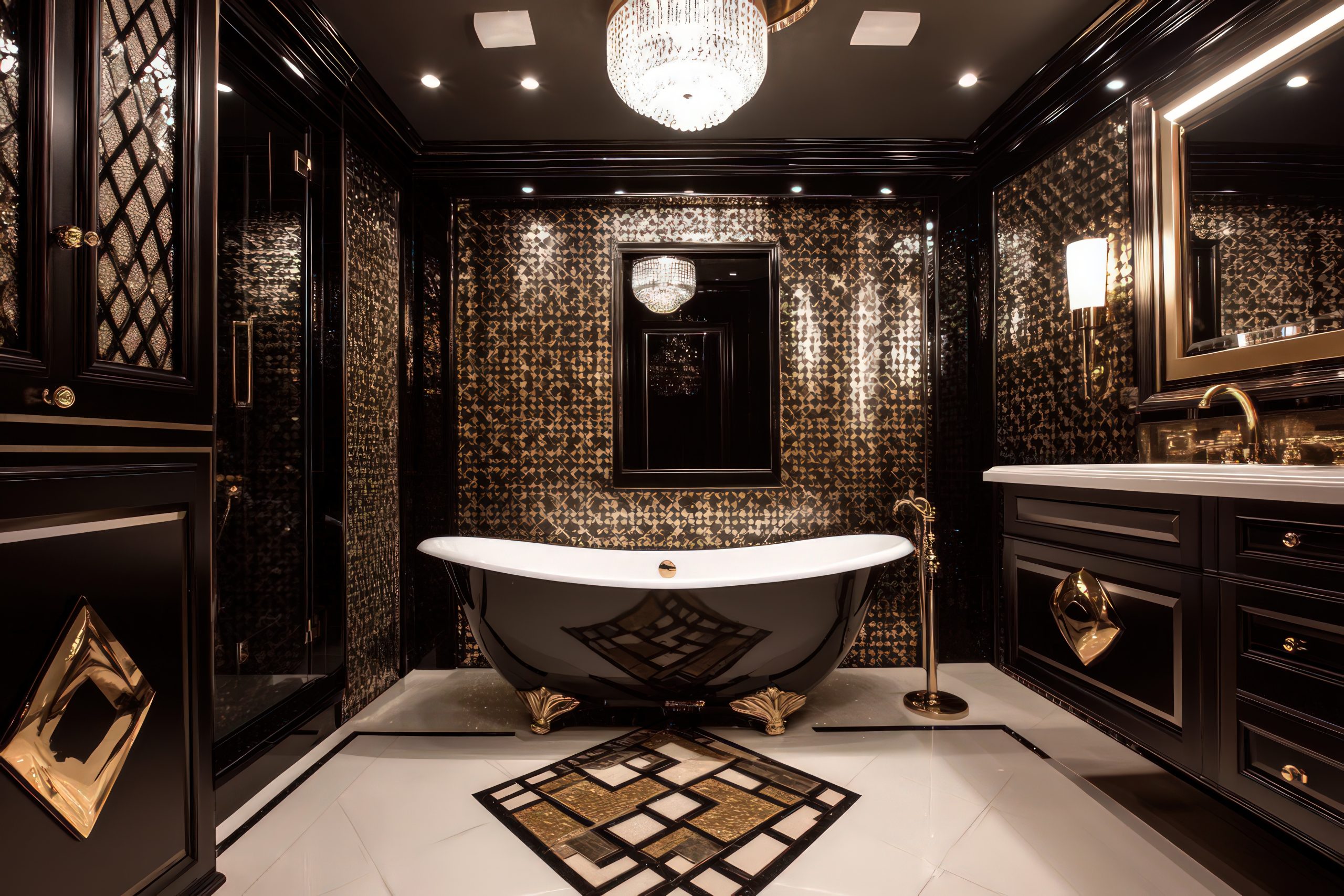
Pro tip: Even in smaller bathrooms, you can create impact through thoughtful material choices and strategic placement of mirrors. The key is to maintain balance while incorporating those signature Art Deco elements.
Ceiling Details
In Art Deco home interior design, the ceiling is often referred to as the fifth wall, and it deserves just as much attention as any other surface. A well-designed ceiling can completely transform the feel of a room.
Key ceiling elements include:
- Stepped crown moulding
- Geometric ceiling medallions
- Painted or applied patterns
- Coffered details
- Integrated lighting designs
When planning your ceiling design, consider:
- The room’s height and proportions
- How light fixtures will integrate
- The balance with wall treatments
- The overall scale of patterns
Lighting plays a crucial role in ceiling design:
- Centre medallions that complement chandeliers
- Cove lighting to highlight architectural details
- Recessed lighting positioned to enhance patterns
- Wall sconces that create interesting shadows
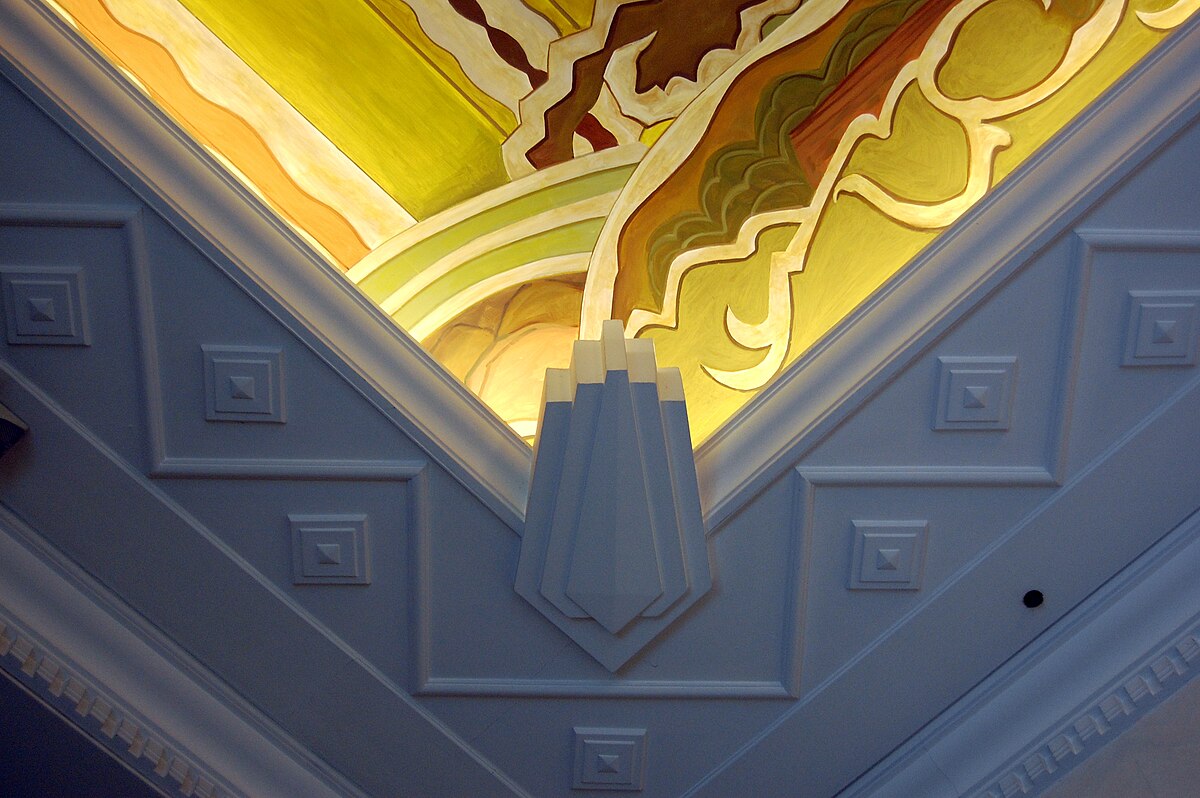
Remember that ceiling treatments should enhance rather than overwhelm your space. The goal is to draw the eye upward naturally, creating a sense of height and grandeur while maintaining harmony with the rest of your design elements.
For rooms with lower ceilings:
- Use lighter colours to create height
- Keep patterns scaled appropriately
- Consider subtle metallic details
- Focus on lighting to create depth
Pro tip: If architectural ceiling details aren’t possible in your space, consider using paint or wallpaper to create pattern and interest. Even simple geometric designs can make a significant impact when executed well.
Accessorising
The art of accessorising in Art Deco home interior design is about selecting pieces that both complement and elevate your space. These finishing touches are what bring personality and completeness to your Art Deco vision.
Key decorative elements to consider:
- Sculptural table objects in metal or glass
- Geometric bookends and vases
- Sunburst or fan-shaped wall decorations
- Period-inspired clocks
- Crystal or cut glass decanters
- Abstract figurines
When selecting accessories, focus on:
- Quality over quantity
- Strong shapes and clean lines
- Materials that reflect light
- Pieces that tell a story together
- Scale and proportion
Pro tip: Group accessories in odd numbers and vary their heights. This creates more interesting compositions while maintaining that essential Art Deco balance between order and drama.
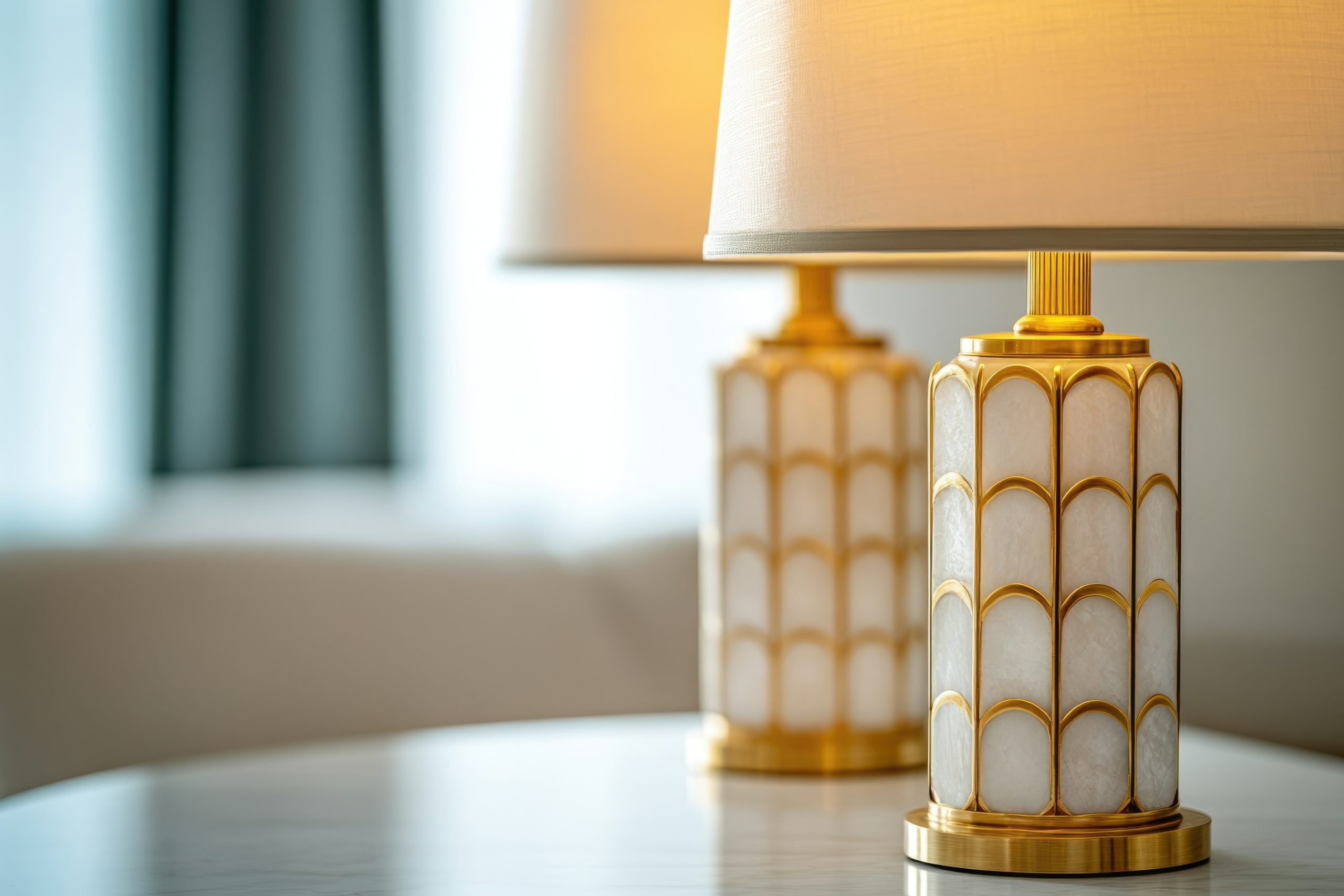
Remember, every piece should serve a purpose:
- Choose items that reflect light and add sparkle
- Include both decorative and functional pieces
- Mix materials for visual interest
- Create small vignettes throughout your space
Practical Tips Section
Now that we’ve covered the essential elements, let’s talk about how to bring it all together successfully in your Art Deco home interior design.
Key considerations for implementation:
Budget-Friendly Approaches:
- Start with one statement piece and build around it
- Use paint to create geometric patterns
- Incorporate metallic finishes through accessories
- Choose quality reproductions for larger pieces
- Focus on lighting as a transformative element
Mixing Modern and Art Deco:
- Keep the colour palette consistent
- Choose modern pieces with Art Deco-inspired lines
- Use contemporary artwork that echoes Art Deco patterns
- Balance old and new elements carefully
- Maintain clean lines throughout
Common mistakes to avoid:
- Overcrowding spaces with too many patterns
- Mixing too many different metals
- Choosing undersized lighting fixtures
- Forgetting about negative space
- Overlooking the importance of quality materials
Pro tip: When in doubt, edit. Art Deco style is about making bold statements, but each element needs room to breathe and be appreciated.
Creating a successful Art Deco home interior design isn’t just about following a checklist – it’s about understanding how all these elements work together to create something truly spectacular. Whether you’re incorporating just a few Art Deco touches or going all-in with a complete transformation, the key is to maintain balance while embracing the style’s inherent drama.
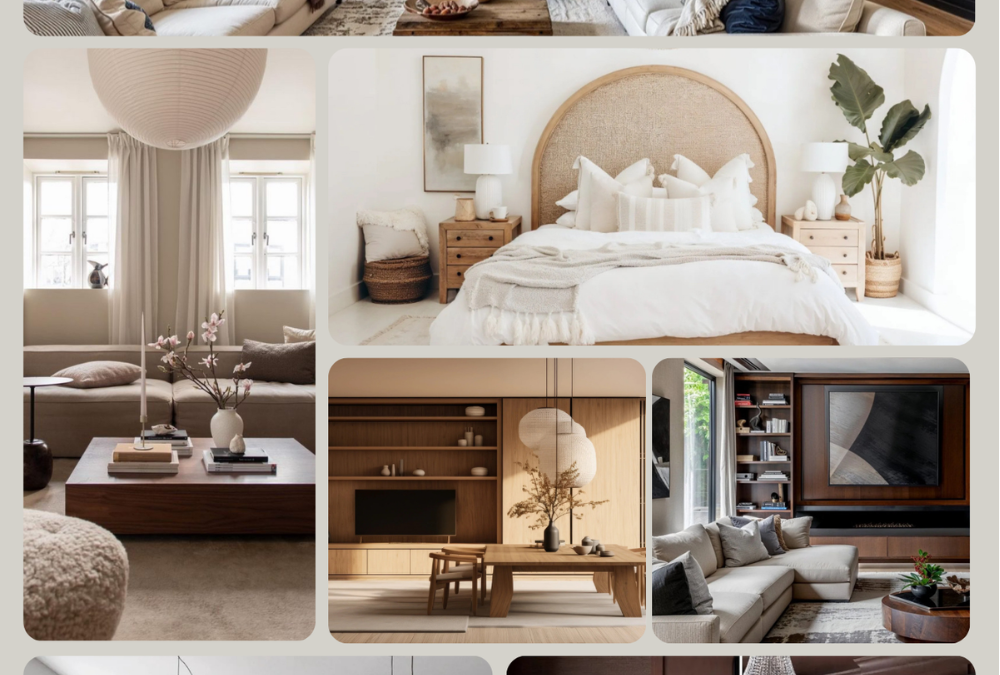
by Kesaa Interiors | DESIGN GUIDES, STYLES & TRENDS
When it comes to decorating your home, understanding different interior design styles is crucial. As an interior designer with over a decade of experience, I’ve seen countless clients feel overwhelmed when trying to define their style preferences. With 22 different interior design styles to explore, it’s no wonder many feel stuck! But don’t worry – I’m here to break down each style in a way that actually makes sense, helping you identify what truly speaks to you.
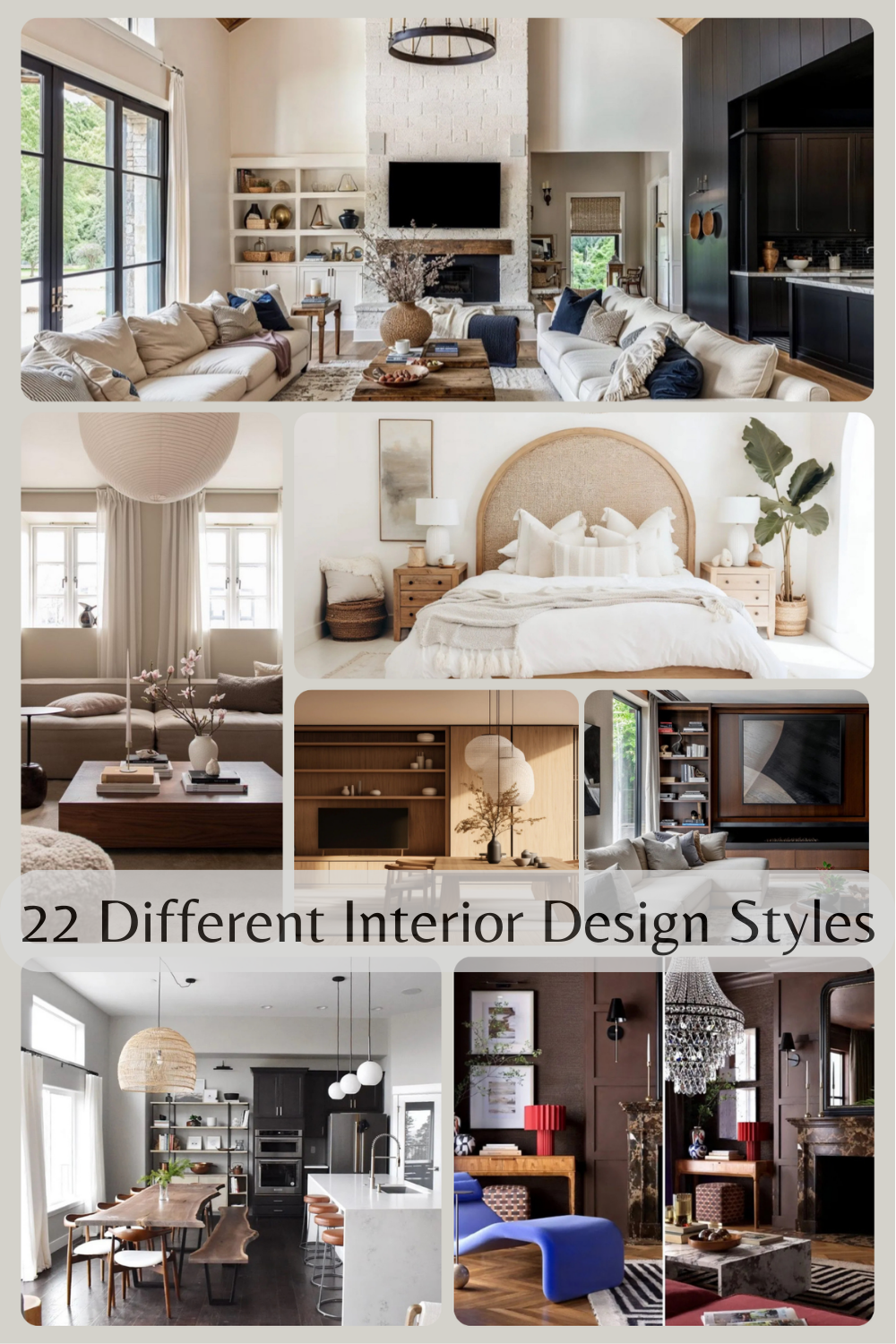
How to Use This Guide
Before we dive into exploring all 22 different interior design styles, let me share how to make the most of this guide. Think of it as your design roadmap. I’ve organised these styles into broader categories to make them easier to digest. While reading through each style, pay attention to your initial reactions. Which spaces make you think, “I could live there”? Which ones make you want to scroll past quickly? These gut reactions are incredibly valuable in determining your personal style.
Traditional Design Styles
Let’s start our journey through interior design styles with the classics. Traditional design styles have stood the test of time for good reason – they bring a sense of history, elegance, and proven livability to our homes.
1. Classic Traditional
When clients ask me about Traditional style, I often describe it as the equivalent of a perfectly tailored suit in the fashion world – timeless, sophisticated, and always appropriate. This style carries the wisdom of generations of design, refined over centuries to create spaces that feel both elegant and wonderfully livable.
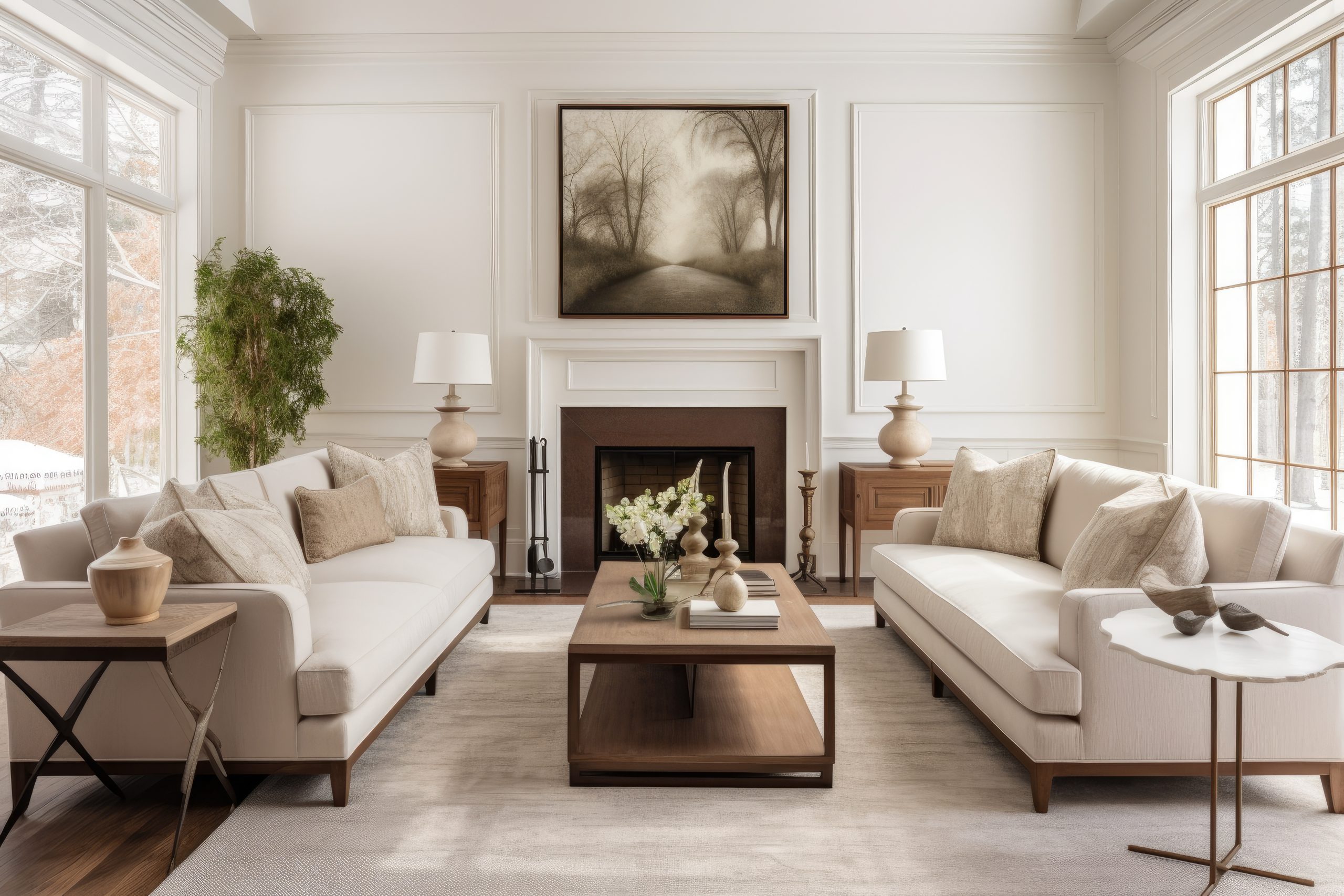
What makes Traditional style special is its attention to detail and commitment to creating balanced, harmonious spaces. It’s the perfect choice for those who appreciate classic literature, fine wine, and things that get better with age.
Key Characteristics:
- Symmetrical arrangements
- Rich wood tones in furniture pieces
- Elegant curves and detailed woodwork
- Refined textiles like silk, velvet, and leather
- Architectural details
- Classic artwork and accessories
Colour Palettes: Traditional design embraces rich, time-tested colours
Primary Colours:
- Warm neutrals
- Deep reds
- Navy blues
- Forest greens
- Rich browns
Accent Colours:
- Burgundy
- Gold
- Deep purple
- Hunter green
- Warm cream
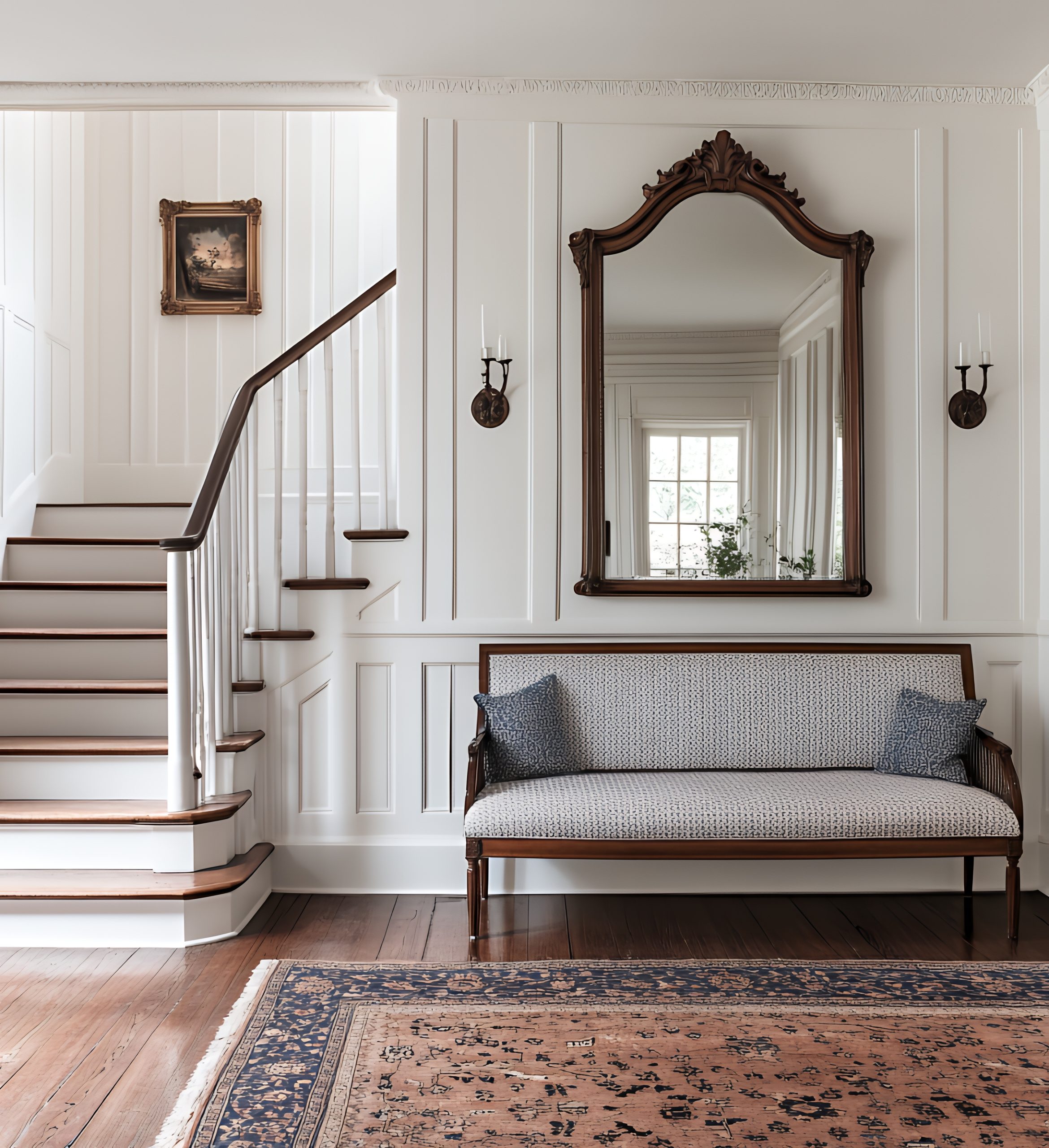
Materials That Define the Style:
- Mahogany and cherry woods
- Crystal and glass
- Polished brass
- Fine silk and velvet
- Oriental rugs
- Damask fabrics
- Carved wood
Pro Tip: Don’t feel like every piece needs to be an antique. I always tell clients that traditional style works beautifully with reproductions, as long as they’re high quality and stay true to classic proportions.
Furniture Elements:
- Wing-back chairs
- Claw-foot tables
- Tufted upholstery
- Queen Anne legs
- Roll-arm sofas
- China cabinets
- Writing desks
- Carved bed frames
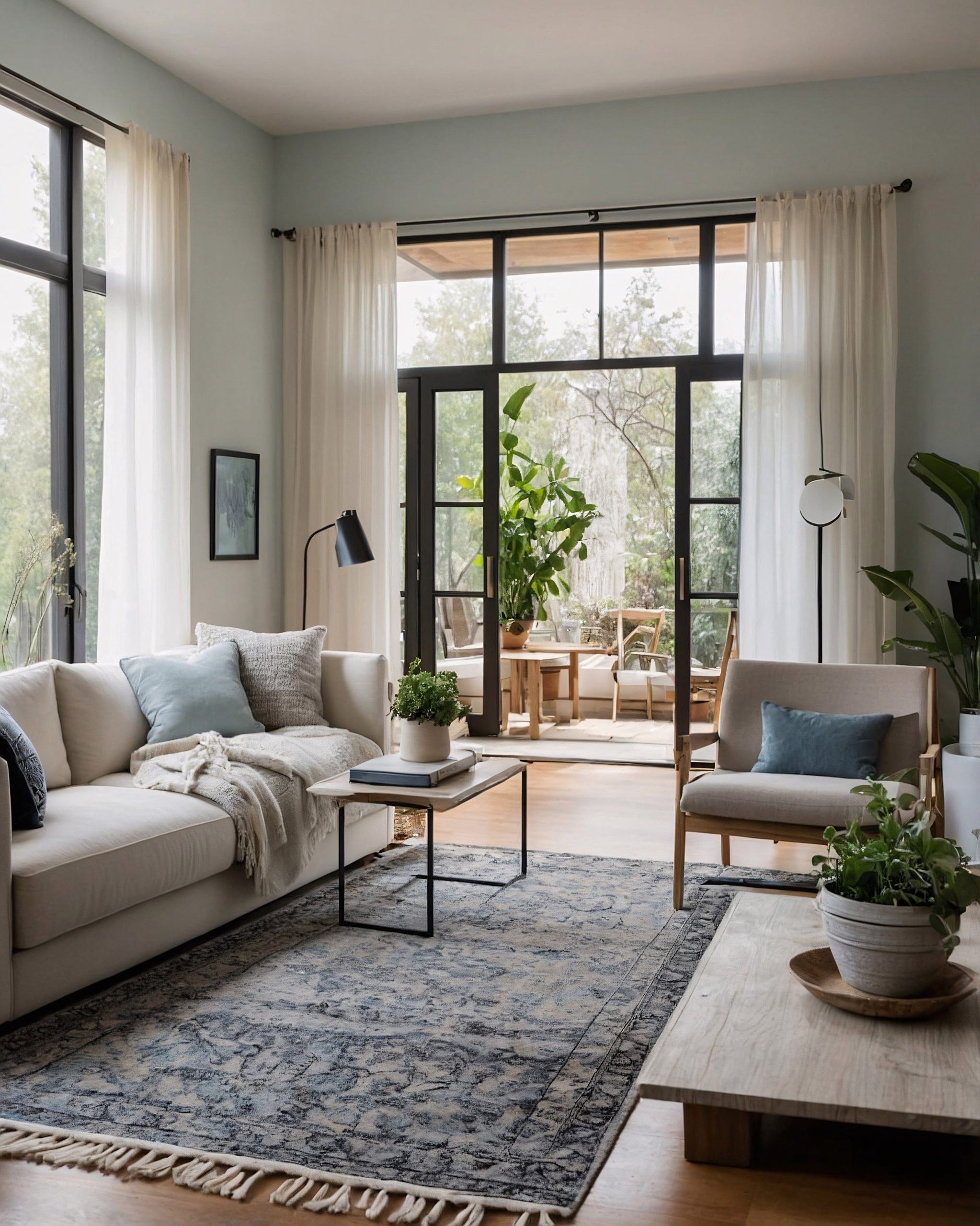
Space Planning:
Traditional rooms require thoughtful arrangement:
- Symmetrical furniture placement
- Formal conversation areas
- Clear traffic patterns
- Balanced room layouts
- Designated seating groups
- Formal dining arrangements
- Reading nooks
- Display areas for collections
Styling Guidelines:
- Use pairs to create symmetry
- Layer window treatments
- Include classic artwork
- Display family heirlooms
- Add fresh flowers
- Incorporate table lamps
- Use rich throw pillows
- Feature oriental rugs
Common Mistakes to Avoid:
- Overcrowding rooms
- Using matched sets exclusively
- Forgetting about comfort
- Making it feel too formal
- Overlooking lighting layers
- Using poor quality reproductions
2. French Country
Let’s explore one of my favourite traditional styles – French Country. This style has a magical way of making any space feel like a charming cottage in Provence, no matter where you actually live.
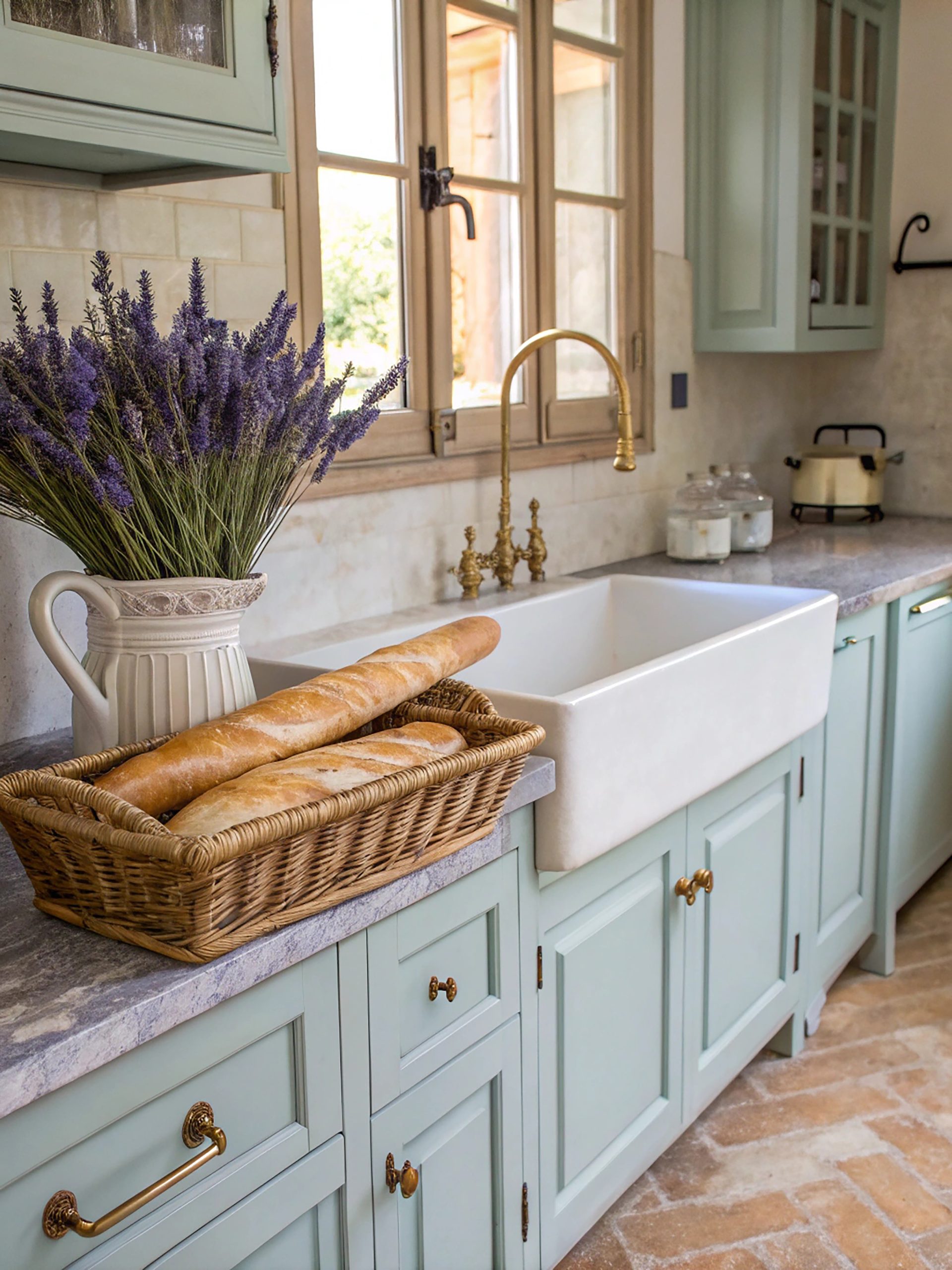
What makes French Country special is its ability to blend elegance with rustic charm. Unlike formal French design, this style embraces imperfection and celebrates the beauty of everyday life. It’s where sophistication meets comfort, and believe me, it’s a beautiful marriage.
Key Characteristics:
- Soft, curved lines
- Distressed finishes
- Mix of formal and rustic elements
- Warm wood tones
- Natural stone
- Hand-painted details
- Wrought iron accents
Colour Palettes: French Country colours are inspired by the French countryside
Primary Colours:
- Warm whites
- Creamy neutrals
- Soft golds
- Terra cotta
- Gentle blues
Accent Colours:
- Lavender
- Sunny yellow
- Sage green
- Rustic red
- Soft black
Materials That Define the Style:
- Natural stone flooring
- Exposed wooden beams
- Wrought iron
- Natural linens
- Cotton toile
- Ceramic tiles
- Copper and brass
Pro Tip: When designing French Country spaces, always remember authenticity is key. Don’t be afraid of a few chips in your painted furniture or wear marks on your wooden table – these “imperfections” add character and charm.
Furniture Elements:
- Carved wooden armoires
- Upholstered dining chairs
- Painted dressers
- Farmhouse tables
- Bergère chairs
- Curved sofas
- Woven chairs
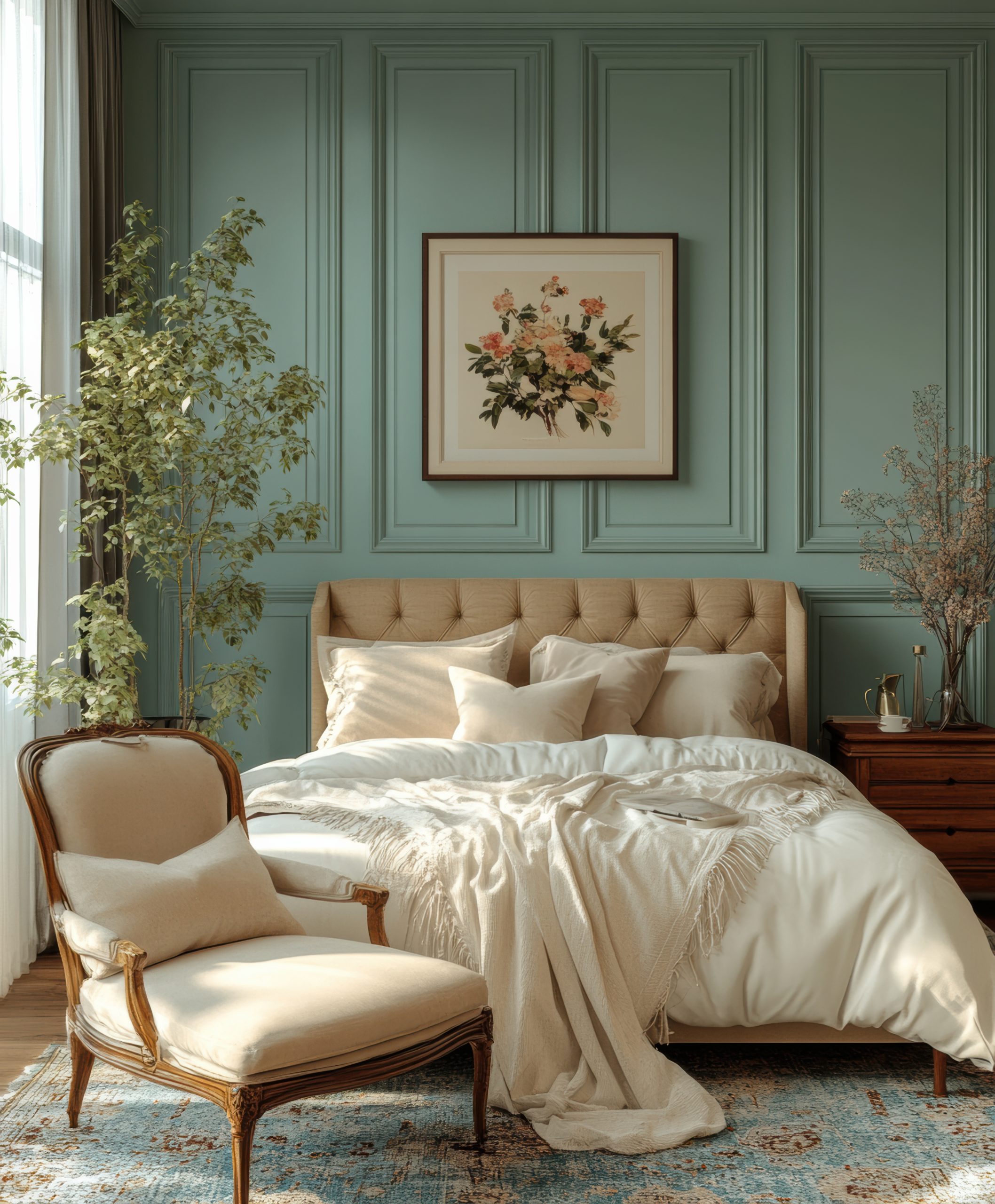
Pattern Play:
French Country embraces specific patterns:
- Toile de Jouy
- Florals
- Stripes
- Checks
- Provincial prints
- Damask
- Plaids
Essential Decor Elements:
- Ceramic pitchers
- Woven baskets
- Fresh and dried herbs
- Copper cookware
- Vintage signs
- Provincial artwork
- Fresh flowers
Space Planning:
French Country design emphasises:
- Comfortable gathering spaces
- Kitchen as the heart of home
- Indoor-outdoor flow
- Intimate seating areas
- Natural light
- Practical workspace
- Cosy corners
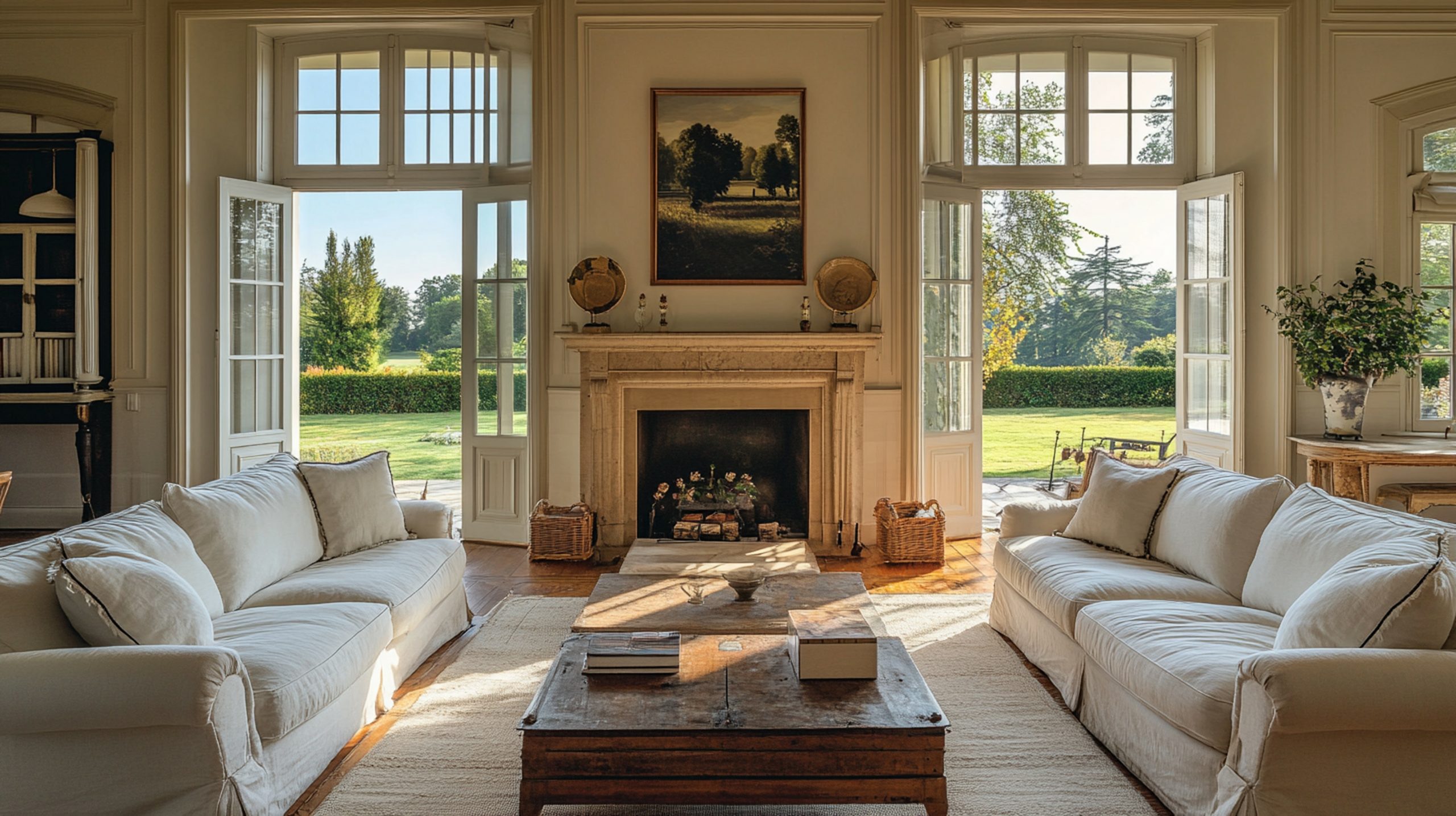
3. Victorian
Let’s step back in time to one of the most opulent of our traditional styles – Victorian design. This style is all about embracing decoration, detail, and drama in the most sophisticated way possible.
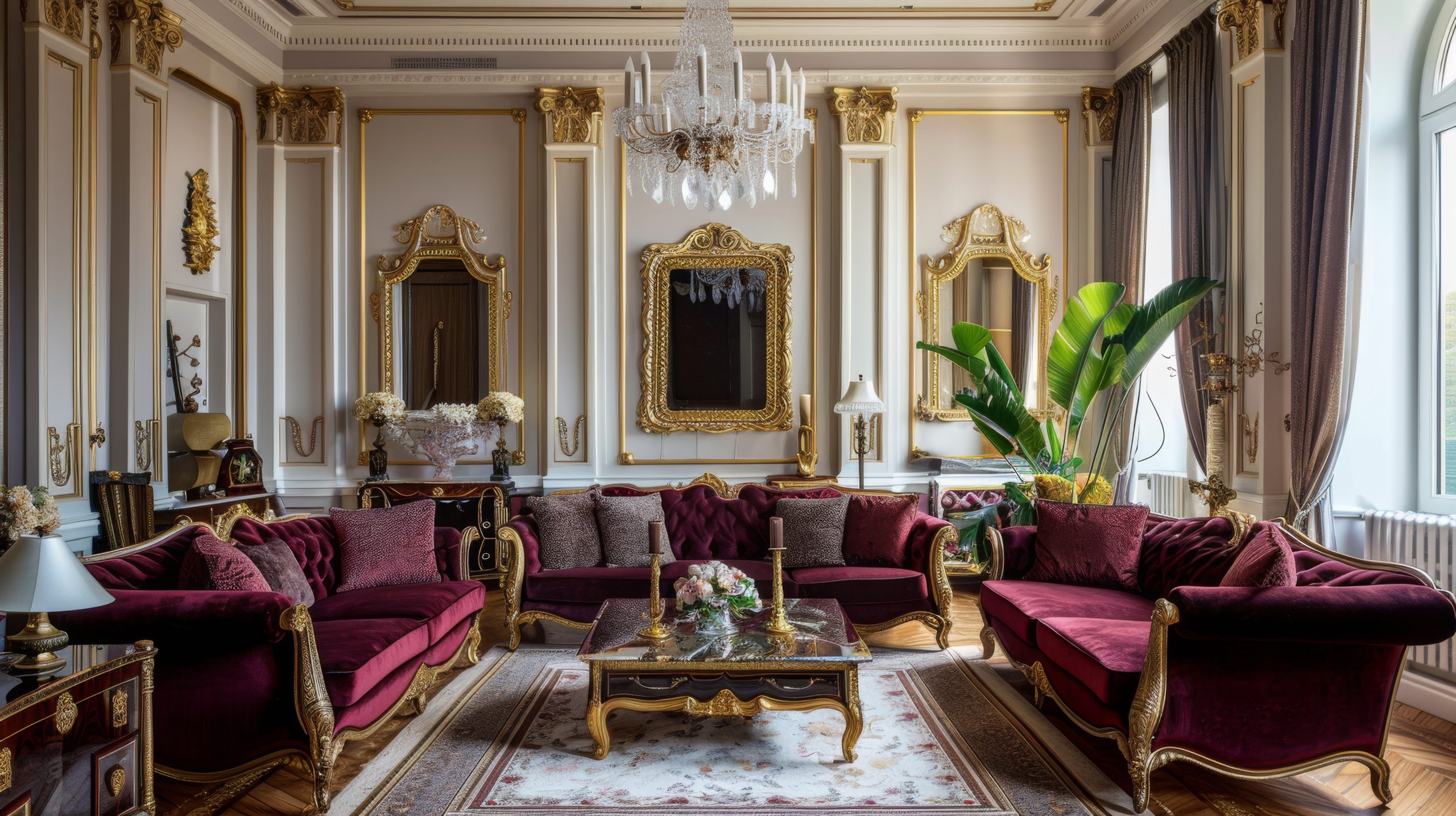
What makes Victorian style unique is its celebration of abundance and ornamentation. This style emerged during Queen Victoria’s reign (1837-1901), when showing off one’s wealth and taste through interior design was not just acceptable – it was expected. Think of it as the maximalist’s dream come true.
Key Characteristics:
- Ornate decorative elements
- Multiple patterns and textures
- Rich, dark colour palettes
- Layered window treatments
- Abundant accessories
- High ceilings
- Intricate millwork
- Heavy furniture pieces
Colour Palettes: Victorian design embraces rich, dramatic colours
Primary Colours:
- Deep jewel tones
- Burgundy
- Forest green
- Royal purple
- Rich brown
Accent Colours:
- Gold
- Deep red
- Sapphire blue
- Bronze
- Black
Materials That Define the Style:
- Dark, polished woods
- Velvet and silk
- Crystal
- Marble
- Brass and bronze
- Detailed wallpapers
- Oriental rugs
- Lace
Pro Tip: When designing Victorian spaces for modern living, always remember that you can honour the style’s ornate nature while still editing for today’s lifestyle. Not every surface needs to be covered!
Furniture Elements:
- Button-tufted sofas
- Carved wooden pieces
- Fainting couches
- Wingback chairs
- Ottoman footstools
- Heavy draperies
- Ornate beds
- China cabinets
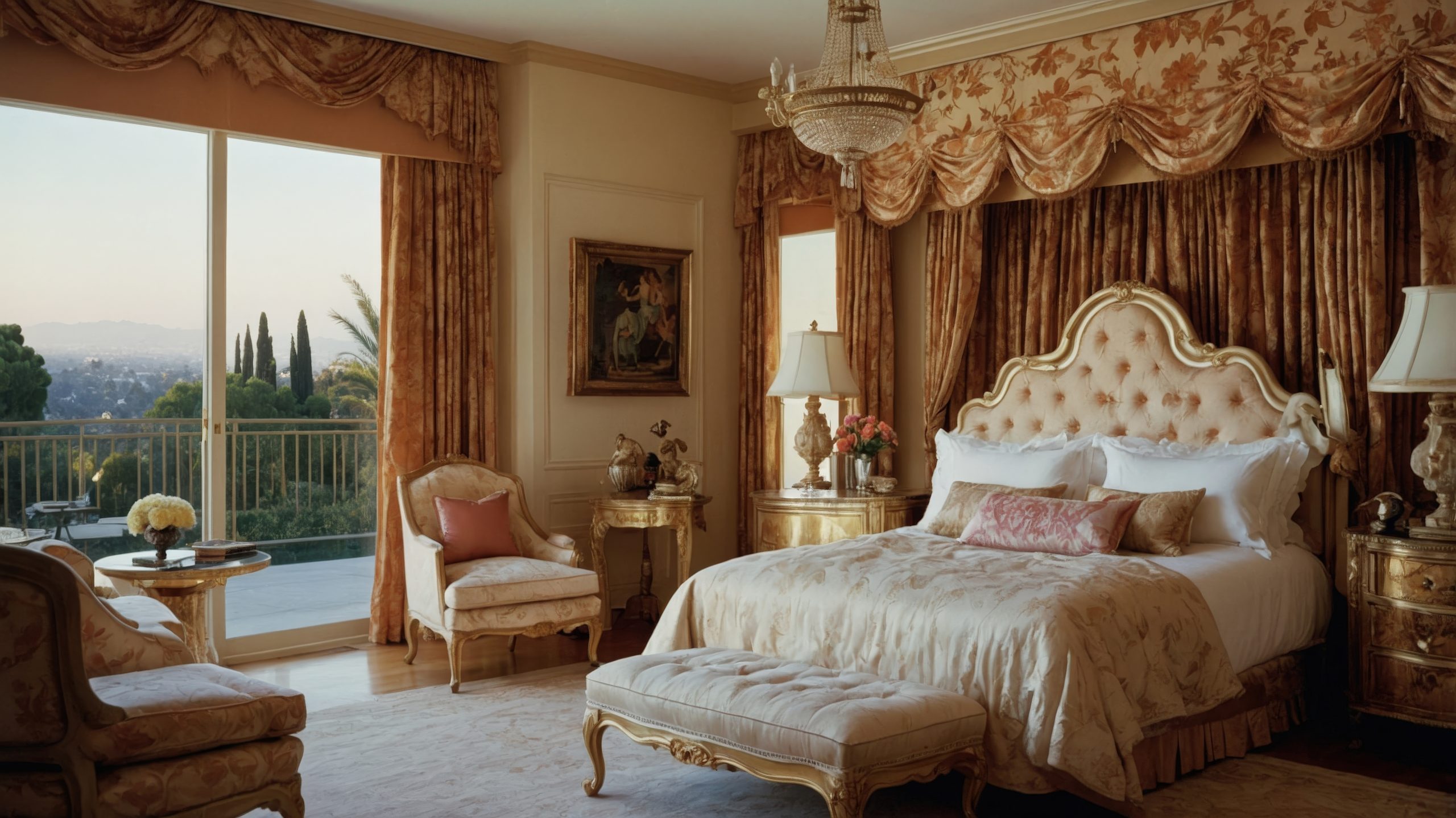
Architectural Details:
- Crown molding
- Ceiling medallions
- Carved doorways
- Bay windows
- Decorative fireplace mantels
- Wainscoting
- Detailed trim work
- Stained glass
Pattern Play:
Victorian style loves layering patterns:
- Damask
- Florals
- Stripes
- Plaids
- Oriental designs
- Gothic motifs
- Nature-inspired patterns
Essential Decor Elements:
- Crystal chandeliers
- Heavy curtains with tassels
- Oil paintings in gilded frames
- Decorative mirrors
- Plants in ornate stands
- China collections
- Family portraits
- Books and globes
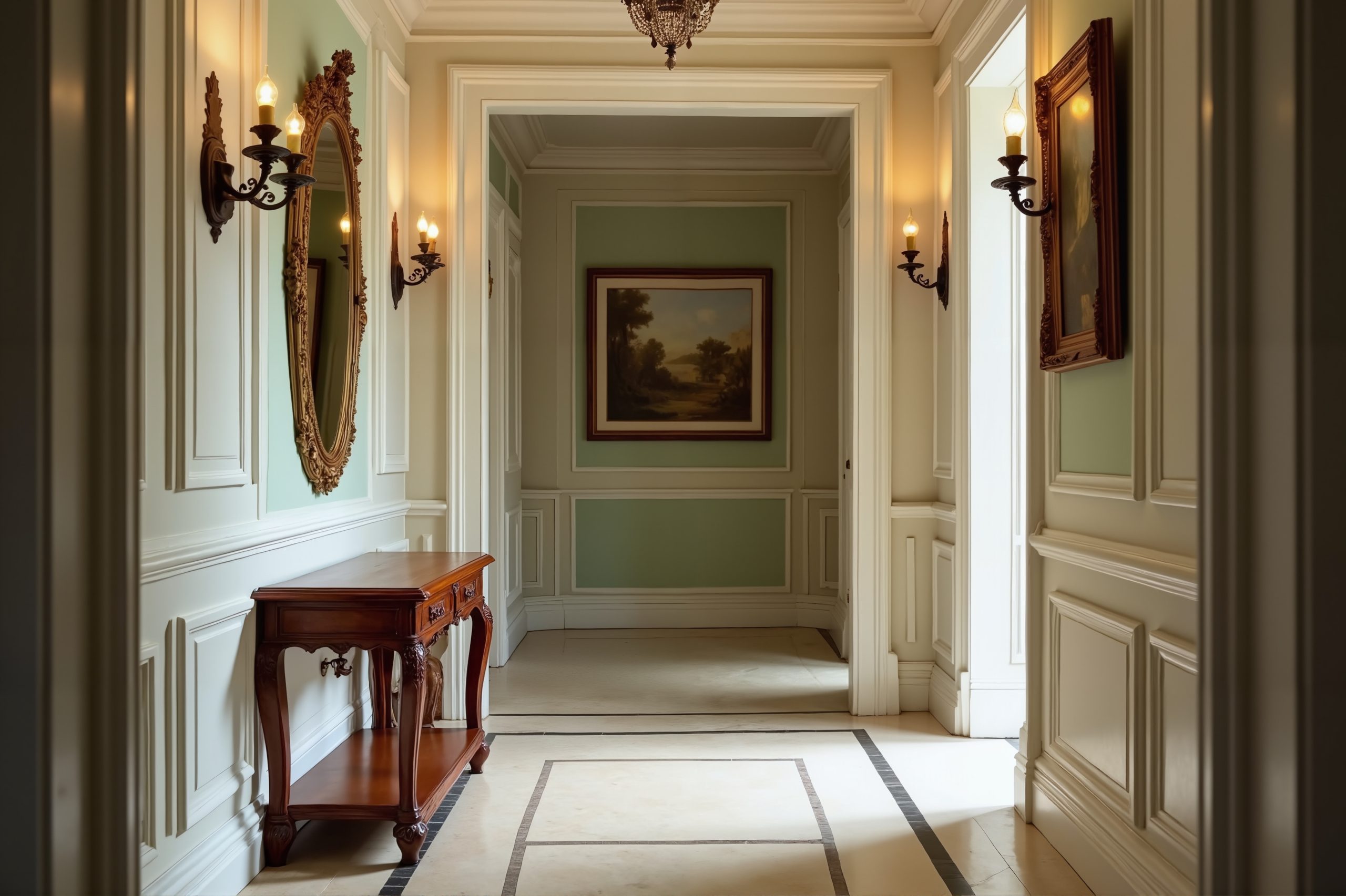
Space Planning:
Victorian rooms require thoughtful arrangement:
- Formal furniture groupings
- Conversation areas
- Display spaces for collections
- Reading nooks
- Music corners
- Clear pathways
- Symmetrical layouts
Modern Interpretation:
Here’s how I help clients adapt Victorian style for contemporary living:
- Lighter colour palettes
- Selected ornate pieces
- Updated textiles
- Modern lighting options
- Simplified window treatments
- Edited accessories
- Functional spaces
Modern & Contemporary Styles
Now let’s shift gears completely as we explore designs that embrace clean lines, minimalism, and contemporary living. These styles represent a dramatic departure from traditional ornamentation, focusing instead on the principle that form follows function.
4. Modern
Let me clear up something I discuss with clients almost daily – Modern design isn’t just about being current or trendy. It’s actually a distinct style that emerged in the early to mid-20th century, revolutionising how we think about interior design.
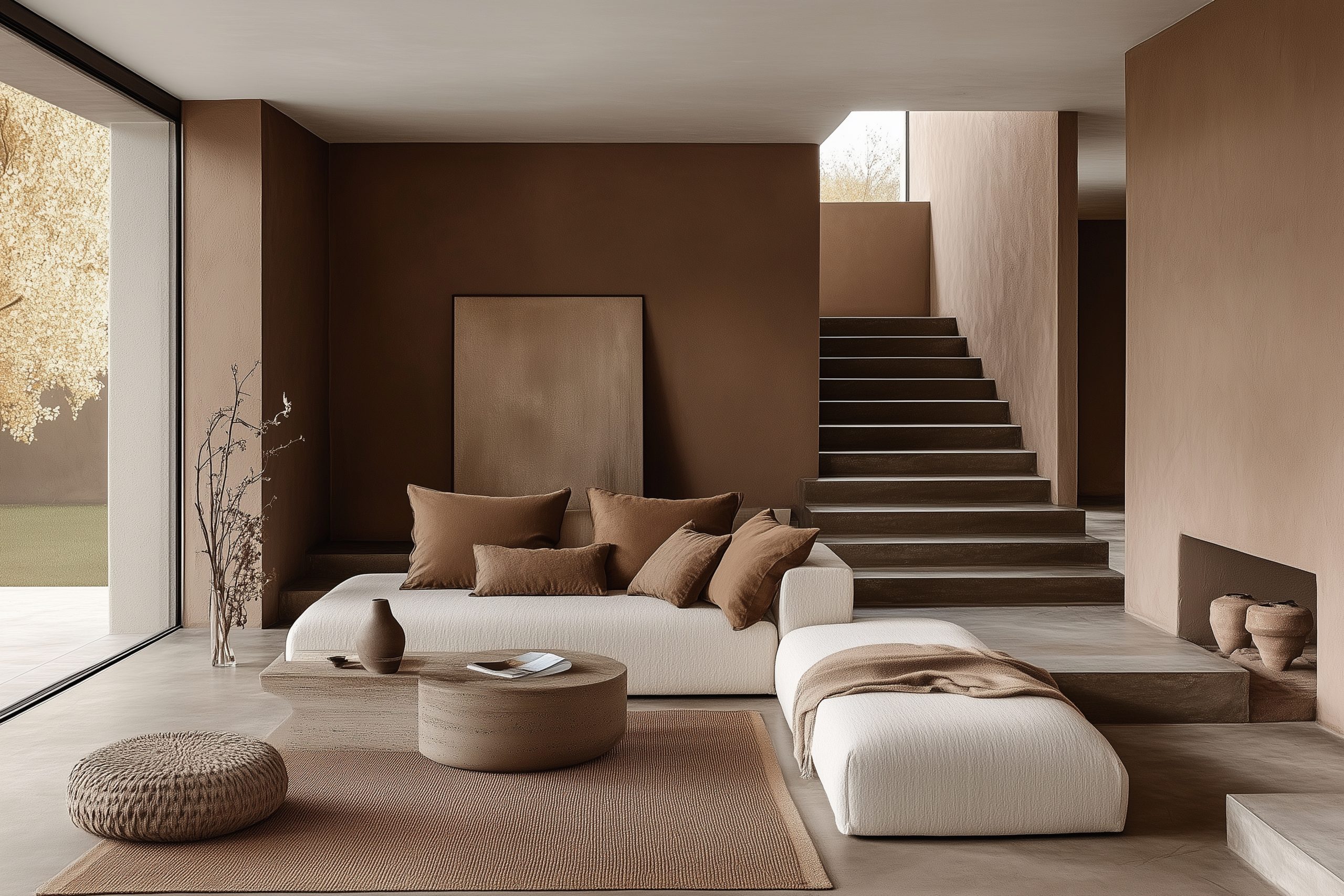
What makes Modern style special is its groundbreaking approach to design. Think of it as the moment when interior design broke free from the past and embraced new materials, technologies, and ways of living. It’s like the difference between classical and jazz music – both beautiful, but with completely different rules and expressions.
Key Characteristics:
- Clean, straight lines
- Minimal ornamentation
- Open floor plans
- Form follows function
- Industrial materials
- Absence of clutter
- Integration with nature
- Emphasis on horizontal and vertical lines
Colour Palettes: Modern design takes a deliberate approach to colour
Primary Colours:
- White
- Black
- Grey
- Earth tones
- Natural wood tones
Accent Colours:
- Primary colours (red, blue, yellow)
- Rust orange
- Forest green
- Deep brown
- Muted metallics
Materials That Define the Style:
- Steel
- Glass
- Concrete
- Natural wood
- Leather
- Molded plywood
- Chrome
- Plastic
Pro Tip: When designing modern spaces, every piece should earn its place through both function and form. If it doesn’t serve a purpose or contribute to the overall aesthetic, it doesn’t belong.
Furniture Elements:
- Low-profile seating
- Platform beds
- Moulded plastic chairs
- Chrome-framed furniture
- Built-in storage
- Floating cabinets
- Glass tables
- Leather loungers
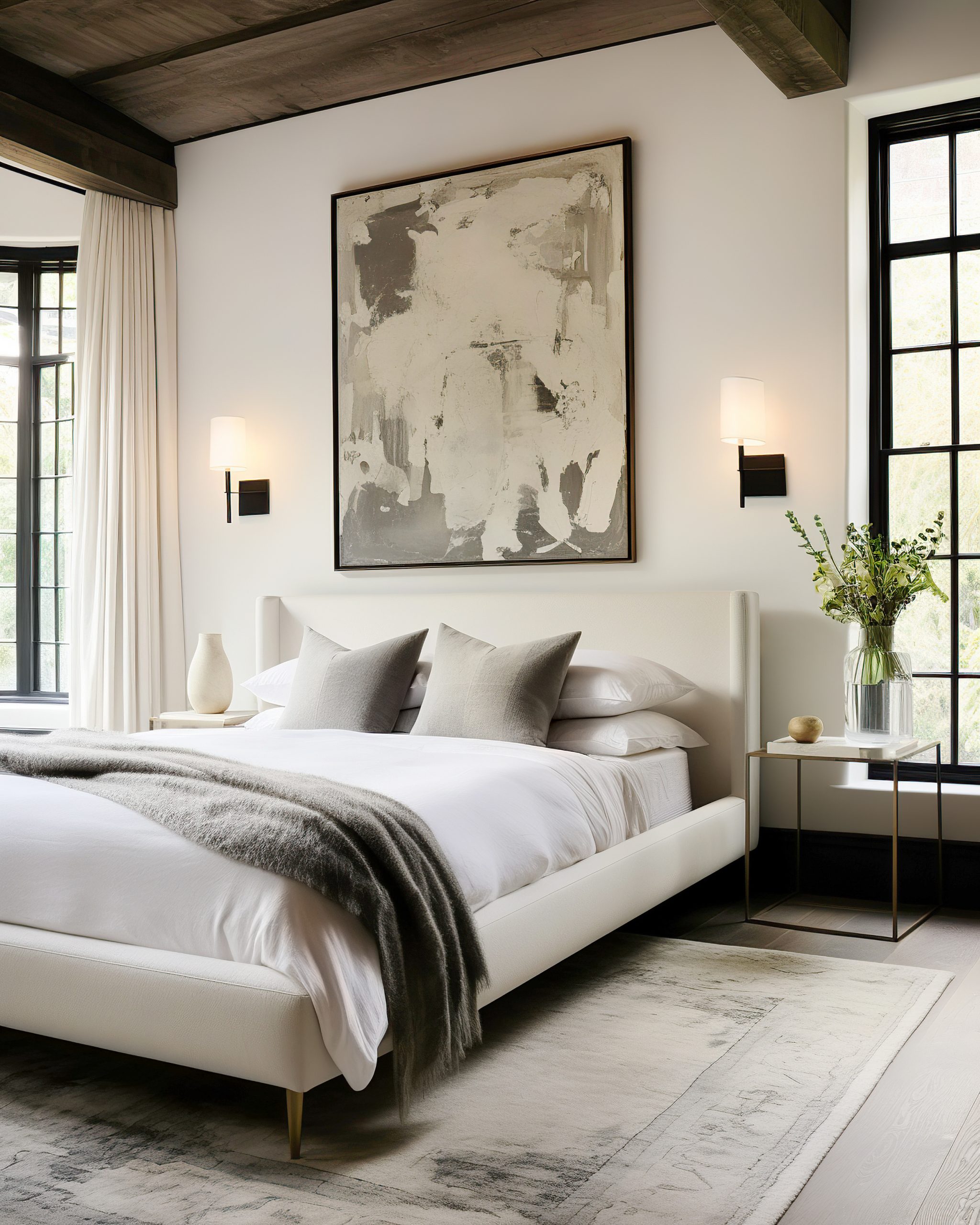
Architectural Elements:
- Floor-to-ceiling windows
- Exposed structural elements
- Flat roofs
- Open floor plans
- Built-in furniture
- Minimal trim work
- Clean-lined fireplaces
- Indoor-outdoor connection
Lighting:
Modern lighting is crucial to the style:
- Architectural fixtures
- Track lighting
- Simple pendant lights
- Floor lamps with clean lines
- Task lighting
- Hidden indirect lighting
- Statement chandeliers
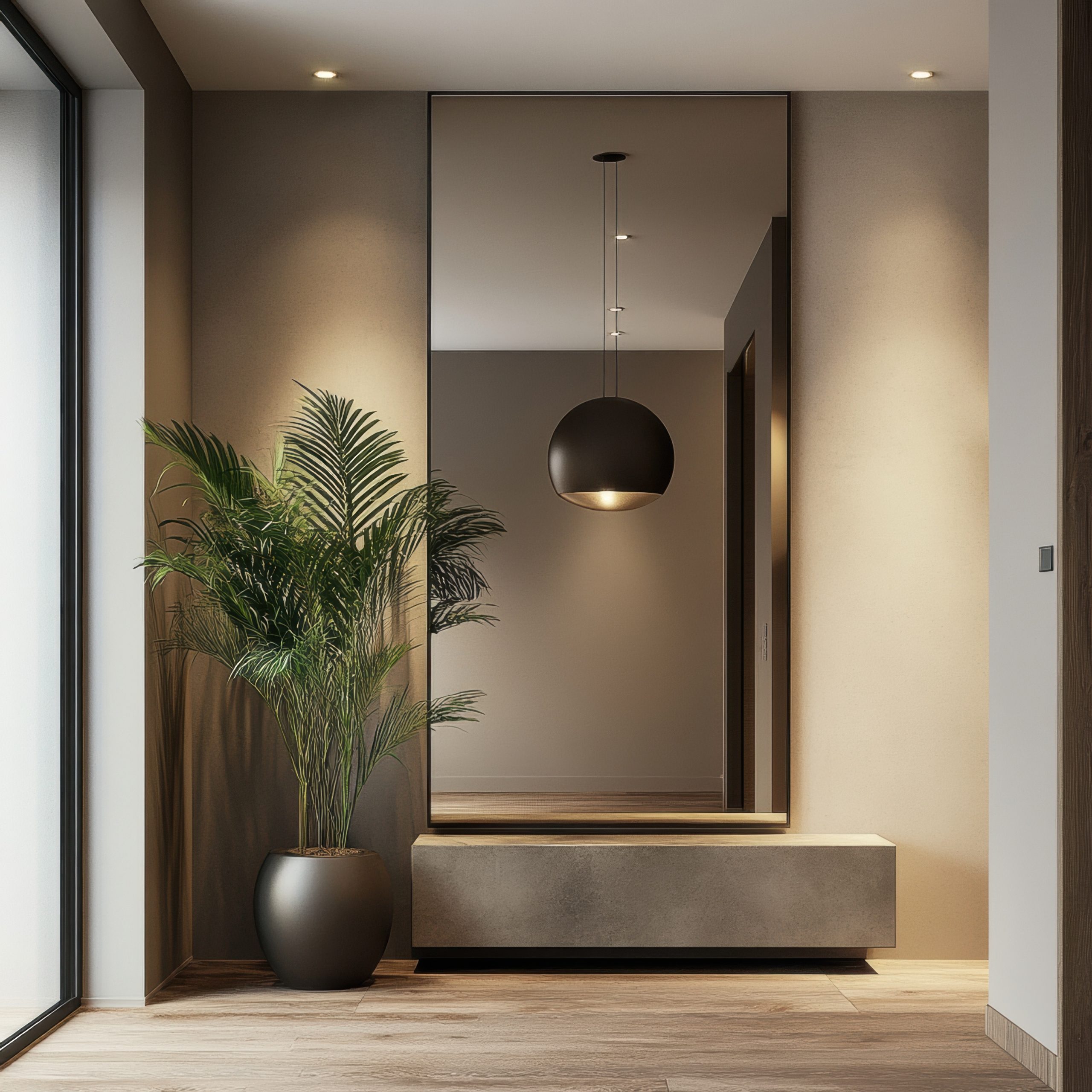
Space Planning:
Modern design emphasises:
- Open concept living
- Uncluttered spaces
- Clear sight lines
- Functional zones
- Connection to the outdoors
- Minimal barriers
- Thoughtful negative space
- Strategic furniture placement
5. Contemporary
Moving through our exploration of modern design styles, let’s talk about Contemporary – and here’s something I’m always explaining to clients: while Modern is a specific style, Contemporary is ever-evolving, reflecting what’s current right now.
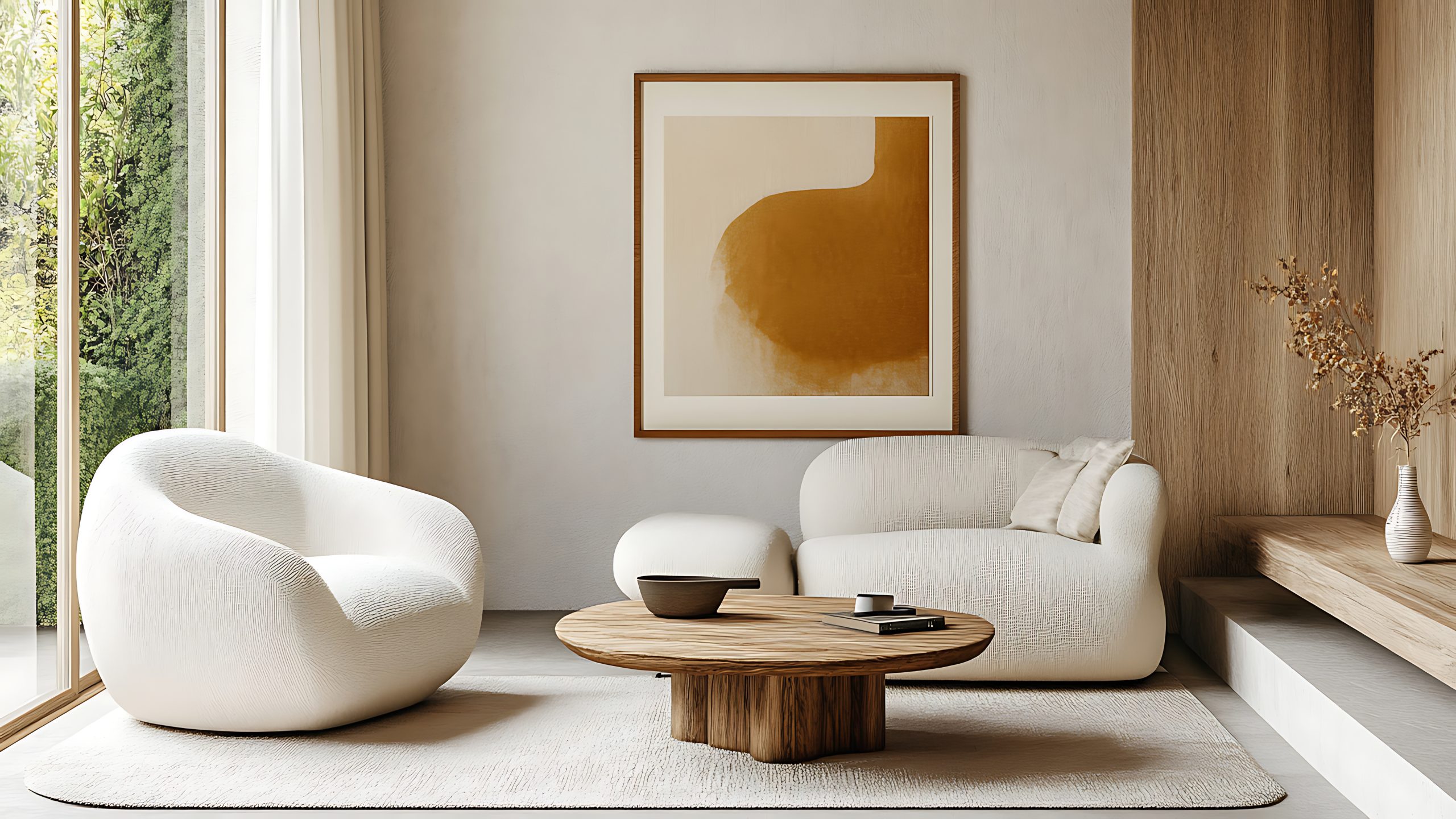
What makes Contemporary style unique is its ability to adapt and change. Think of it as design’s equivalent to current fashion – it borrows from various styles and trends while maintaining a fresh, of-the-moment feel. As someone who’s designed countless contemporary spaces, I can tell you it’s one of the most flexible and exciting styles to work with.
Key Characteristics:
- Clean, sophisticated lines
- Mix of textures and materials
- State-of-the-art features
- Emphasis on negative space
- Subtle sophistication
- Technology integration
- Artistic elements
- Sustainability focus
Colour Palettes:
Contemporary design typically features:
Primary Colours:
- Whites
- Grays
- Blacks
- Taupes
- Neutral metallics
Accent Colours:
- Bold jewel tones
- Unexpected colour pops
- Trending colours
- Nature-inspired hues
- Sophisticated pastels
Materials That Define the Style:
- Mixed metals
- Textured fabrics
- Sustainable materials
- Glass
- Composite materials
- Natural stone
- Engineered wood
- Smart materials
Pro Tip: In contemporary spaces, invest in quality staple pieces with clean lines, then add personality through easily changeable accessories and art. This allows the space to evolve with trends.
Furniture Elements:
- Streamlined upholstery
- Mixed material pieces
- Multi-functional furniture
- Statement lighting
- Geometric shapes
- Innovative storage
- Tech-integrated pieces
- Comfort-focused designs
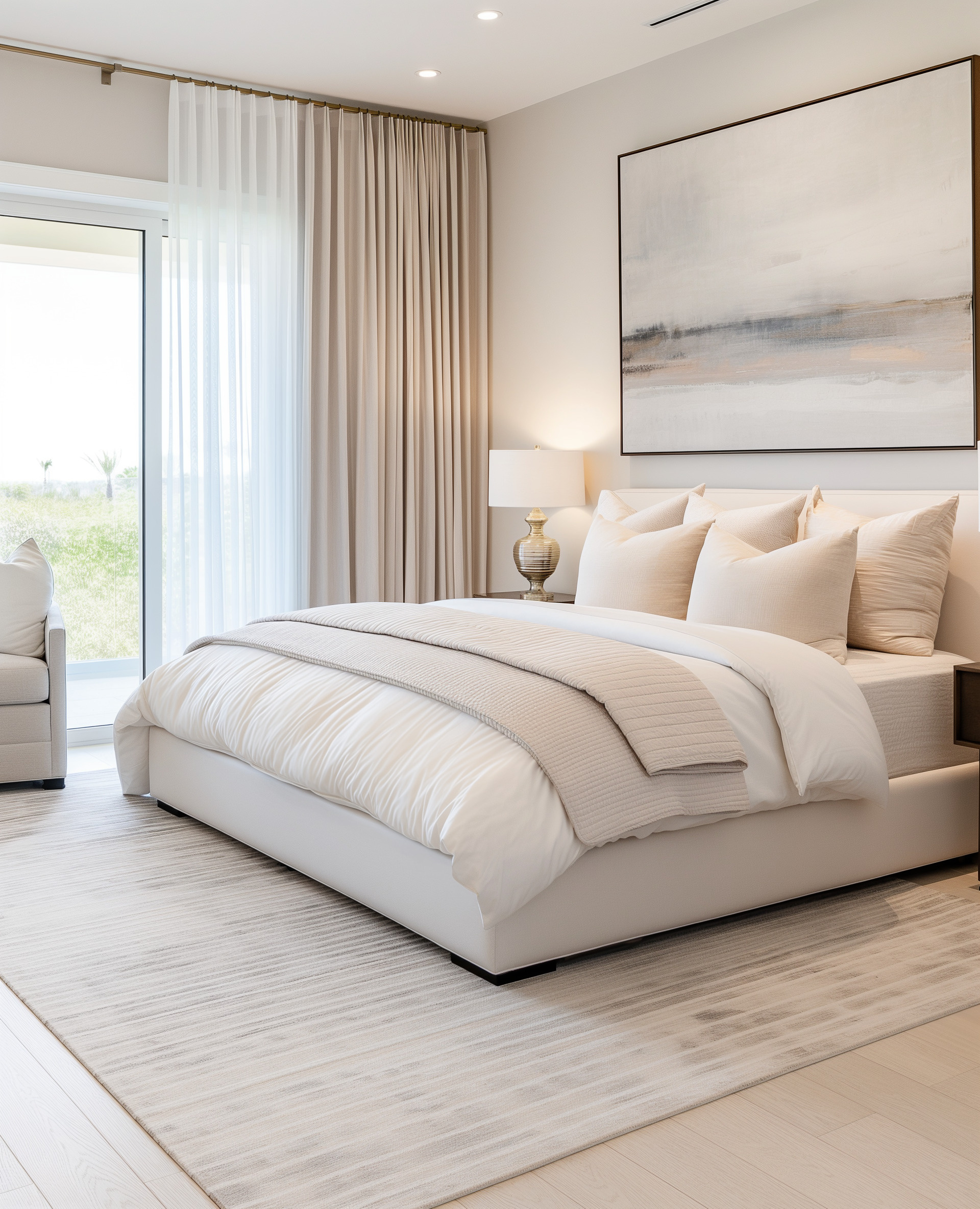
Signature Features:
- Smart home integration
- Sustainable elements
- Abstract art
- Statement lighting
- Mixed metal finishes
- Textural contrasts
- Indoor plants
- Architectural details
Space Planning:
Contemporary spaces prioritise:
- Flexible layouts
- Multi-functional areas
- Technology zones
- Entertainment spaces
- Work-from-home solutions
- Indoor-outdoor flow
- Social gathering areas
- Private retreats
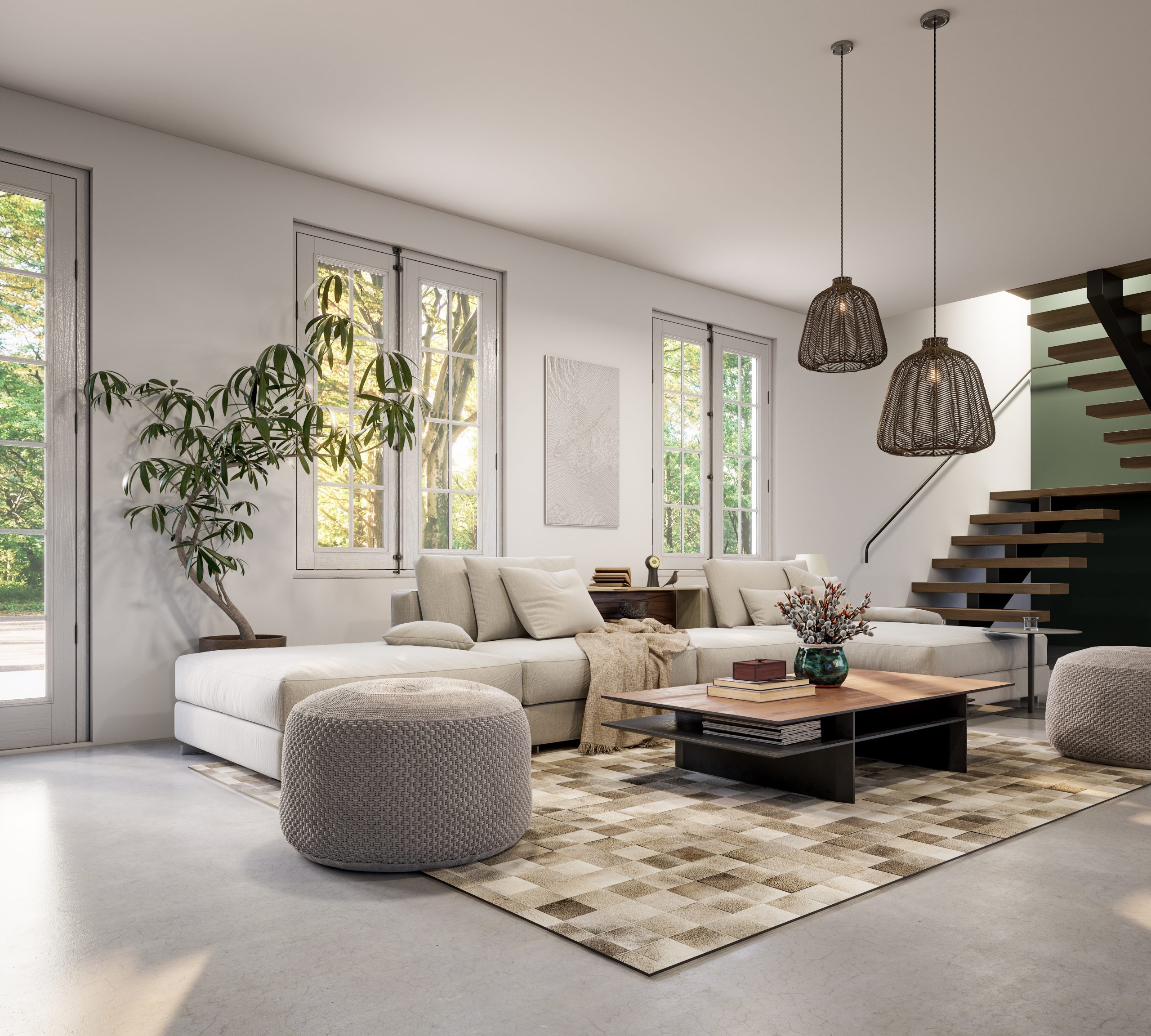
Styling Elements:
- Large-scale art
- Minimal accessories
- Natural elements
- Geometric patterns
- Textural layers
- Strategic colour pops
- Innovative lighting
- Tech-savvy solutions
Modern Interpretation:
What makes Contemporary design special today:
- Integration of smart home features
- Sustainable materials and practices
- Flexible spaces for modern living
- Balance of comfort and style
- Mix of old and new elements
- Focus on wellness
- Outdoor living integration
6. Minimalist
Let’s explore one of the most misunderstood of our 22 different interior design styles – Minimalist design. It’s not just about having less stuff; it’s about being intentional with every single element you include.
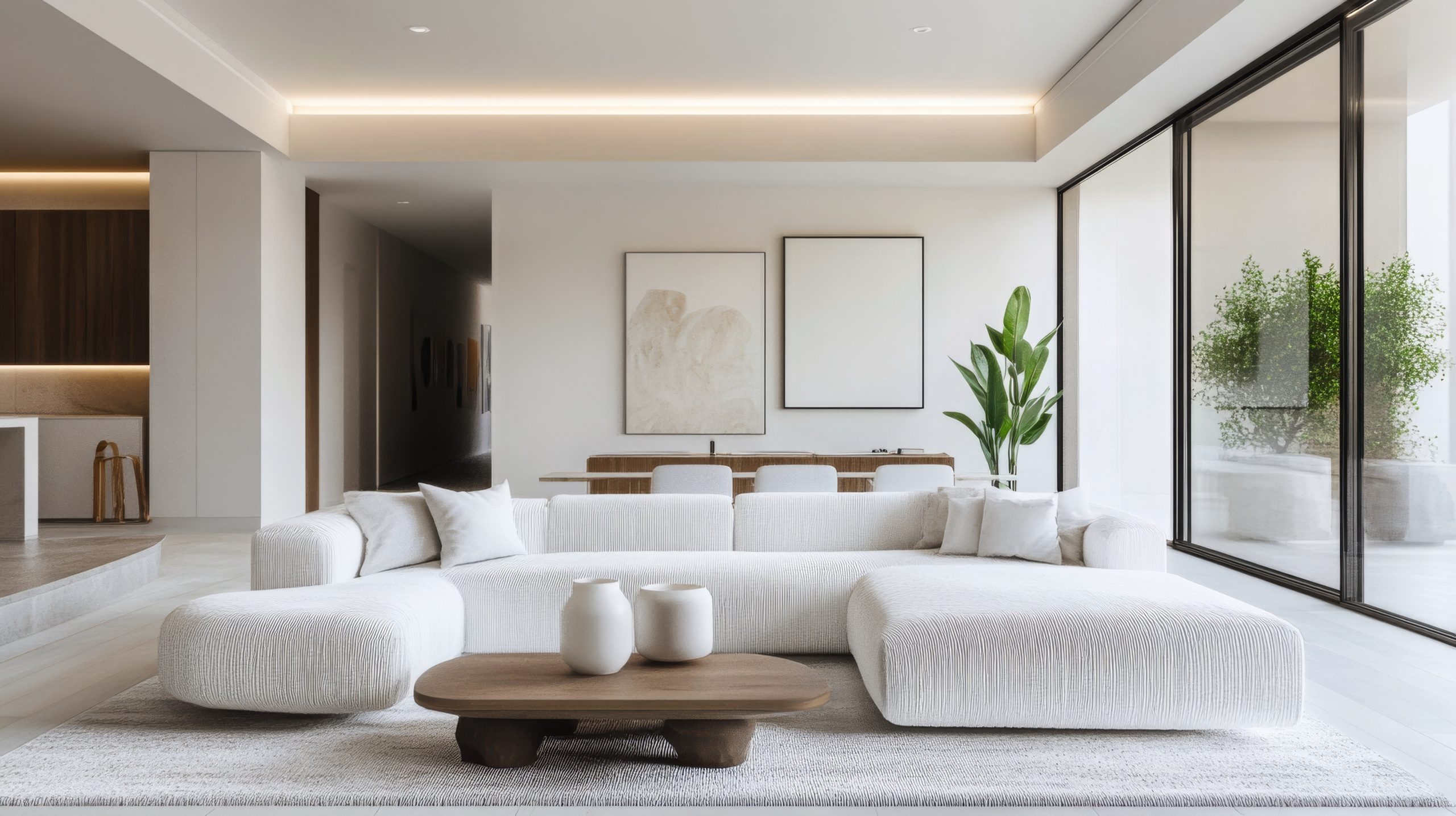
What makes the Minimalist style special is its focus on the essential. Think of it as the design equivalent of a perfectly edited novel – every element must serve a purpose, and anything that doesn’t enhance the space is removed. It’s about creating calm through clarity.
Key Characteristics:
- “Less is more” philosophy
- Clean, purposeful lines
- Monochromatic colour schemes
- Intentional negative space
- Quality over quantity
- Functional design
- Clutter-free surfaces
- Hidden storage solutions
Colour Palettes: Minimalist design embraces a restricted palette
Primary Colours:
- Pure whites
- Soft whites
- Light grays
- Charcoal
- Black
Accent Colours:
- Single bold accents
- Natural wood tones
- Concrete grays
- Earth tones
- Muted metallics
Materials That Define the Style:
- Smooth woods
- Polished concrete
- Glass
- Steel
- Natural stone
- High-quality textiles
- Matte finishes
- Simple textures
Pro Tip: When designing minimalist spaces, I always remind clients that every item should earn its place. Ask yourself, “Does this piece serve a purpose, either functional or aesthetic?”
Furniture Elements:
- Simple, clean-lined pieces
- Built-in storage
- Platform beds
- Hidden hardware
- Multi-functional furniture
- Low-profile seating
- Floating shelves
- Streamlined tables
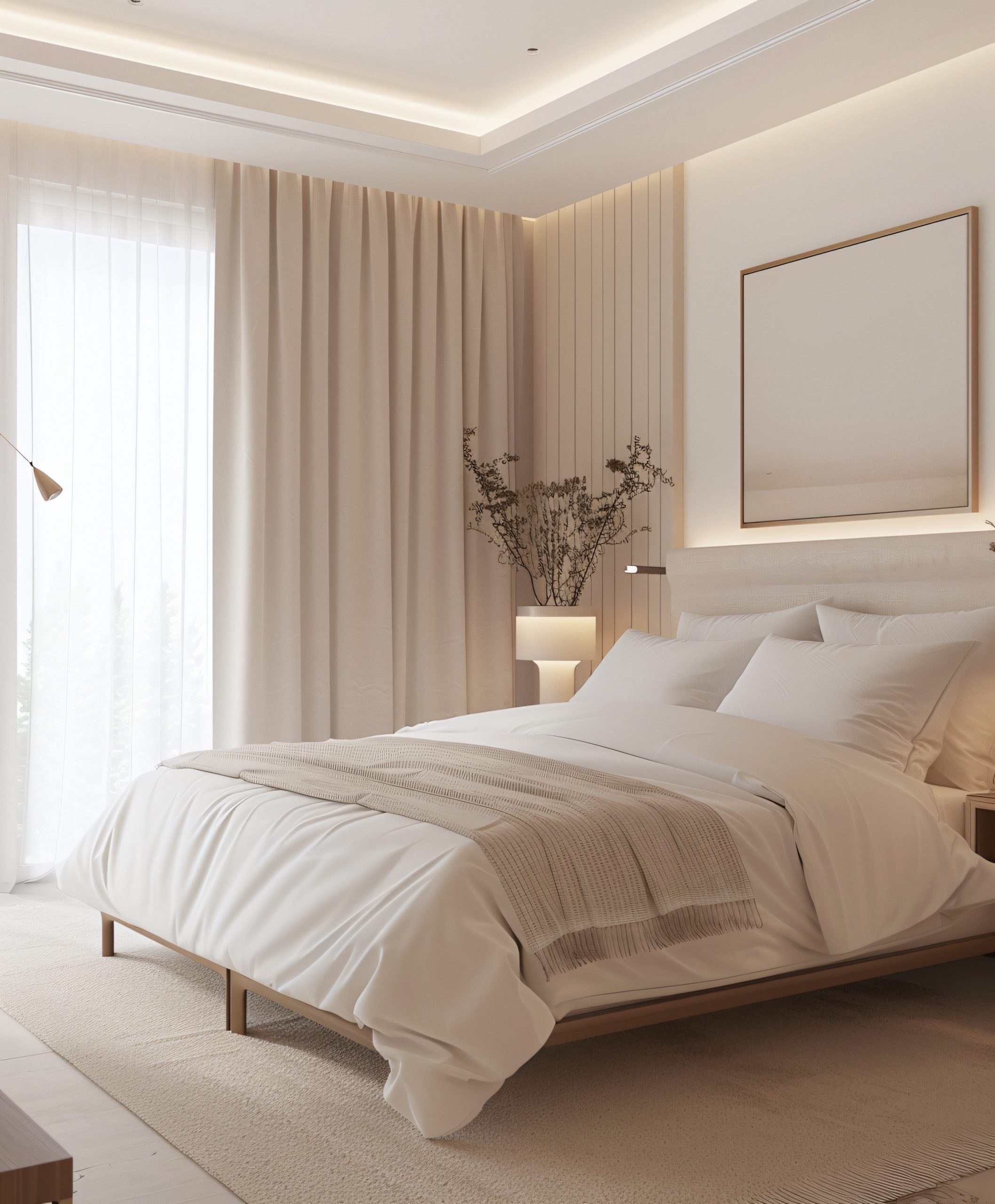
Storage Solutions:
This is crucial in minimalist design:
- Hidden closets
- Built-in cabinets
- Drawer organisers
- Wall-mounted solutions
- Under-bed storage
- Seamless closet doors
- Organised pantries
- Multi-functional pieces
Space Planning:
Minimalist spaces require:
- Clear traffic patterns
- Breathing room between pieces
- Strategic furniture placement
- Uncluttered surfaces
- Defined zones
- Natural light maximisation
- Simple window treatments
- Thoughtful negative space
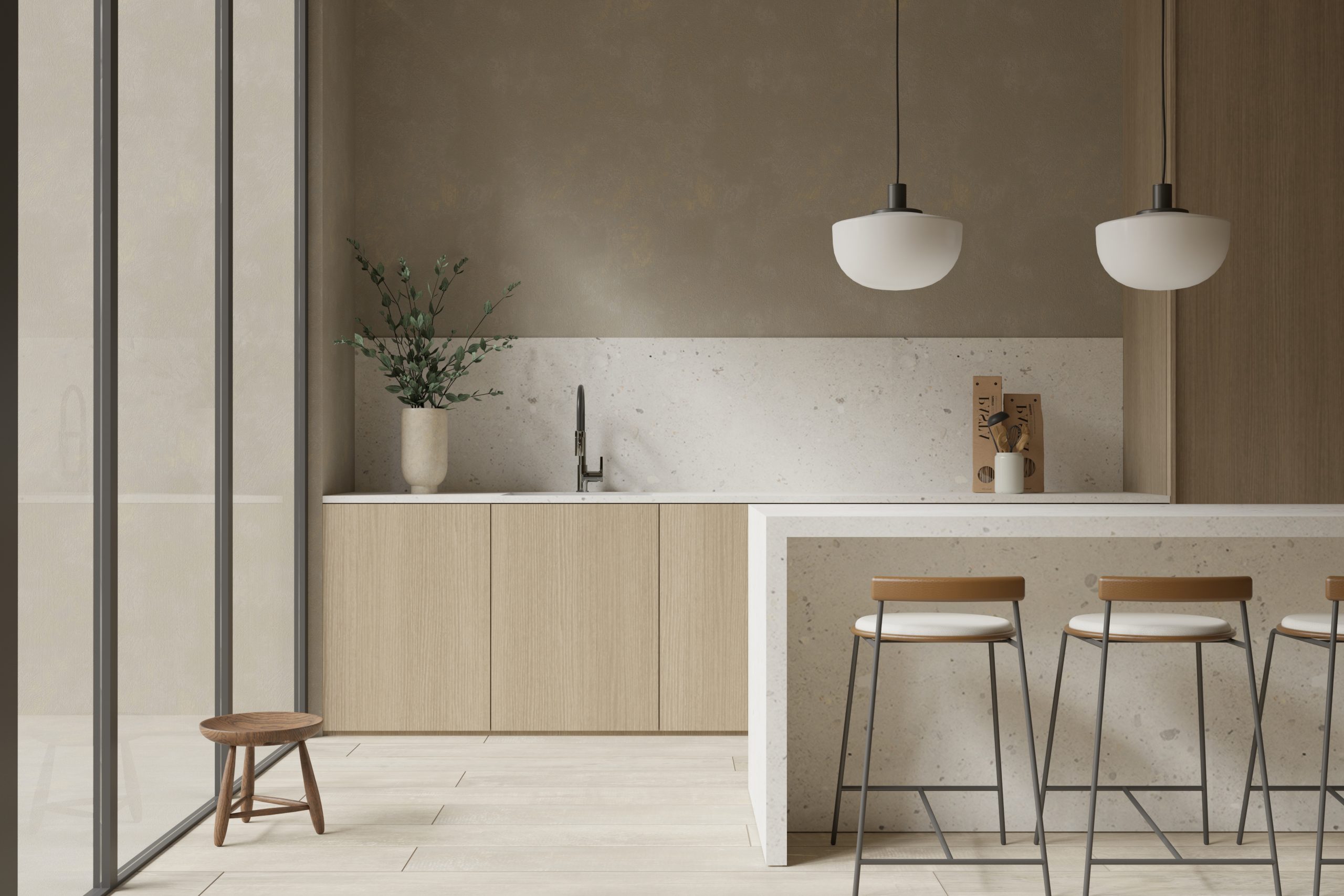
Styling Guidelines:
- Keep surfaces 90% clear
- Choose artwork carefully
- Limit decorative objects
- Focus on form and function
- Embrace empty space
- Use texture for interest
- Maintain clean lines
Common Mistakes to Avoid:
- Creating cold, uninviting spaces
- Forgetting about texture
- Overlooking storage needs
- Making spaces feel sterile
- Sacrificing comfort for style
- Ignoring personality completely
Industrial & Urban Styles
Now let’s explore styles that celebrate city living and architectural elements. These styles embrace raw materials and urban aesthetics while creating wonderfully livable spaces.
7. Industrial
One of the most exciting transformations I’ve witnessed in my design career is how industrial spaces have evolved from actual factories to some of the most sought-after residential designs. This style tells a story of urban renewal and architectural appreciation.
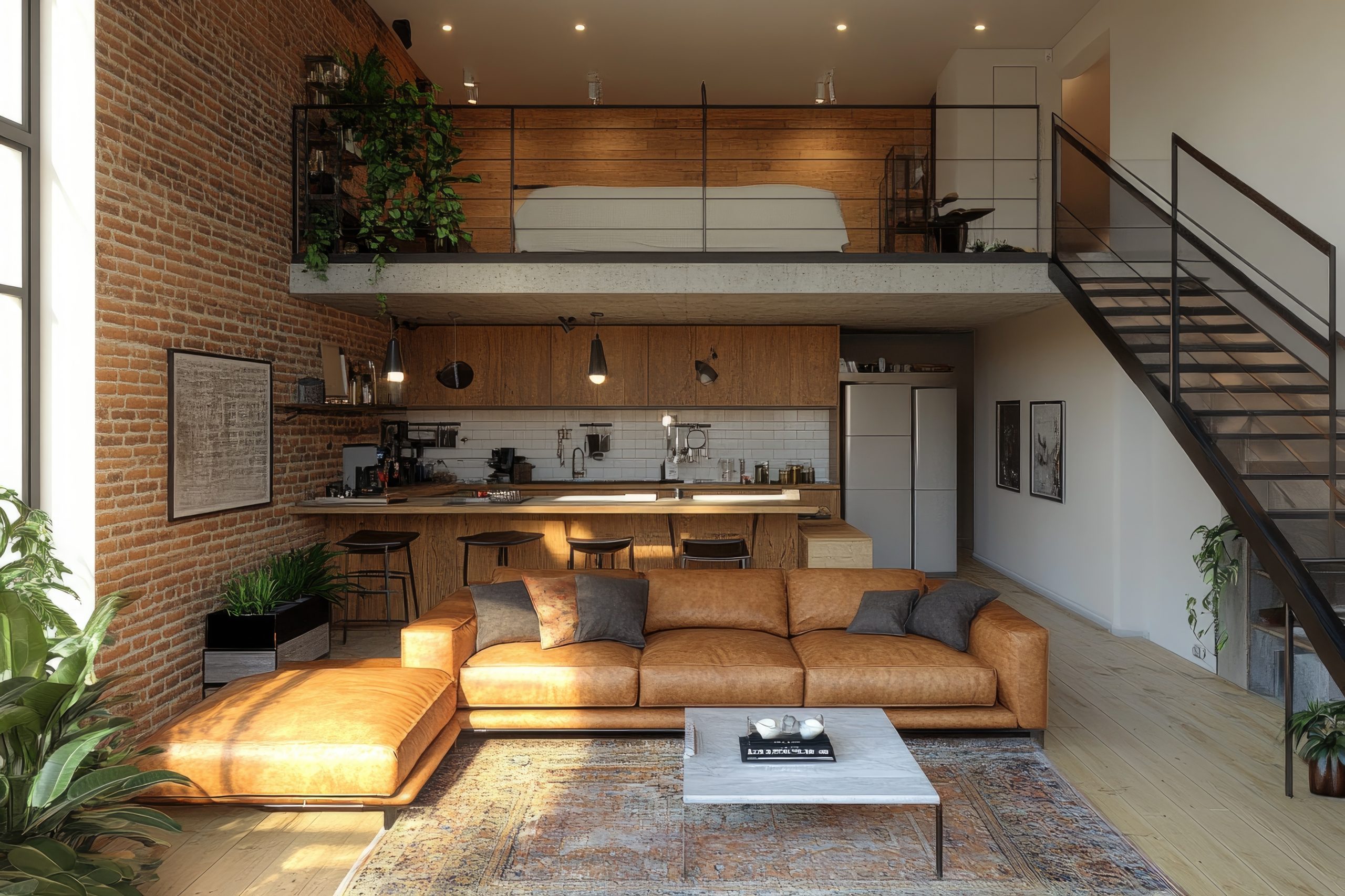
What makes Industrial style unique is its honest approach to materials and architecture. Think of it as the design equivalent of a documentary film – it reveals and celebrates the true nature of a space rather than trying to hide it.
Key Characteristics:
- Exposed structural elements
- Raw materials
- Open floor plans
- High ceilings
- Large windows
- Visible systems (pipes, ducts, etc.)
- Metal fixtures
- Weathered finishes
Colour Palettes: Industrial design embraces natural material colours
Primary Colours:
- Concrete greys
- Rust browns
- Metal silvers
- Brick reds
- Deep blacks
Accent Colours:
- Navy blue
- Forest green
- Burnt orange
- Weathered brass
- Copper tones
Materials That Define the Style:
- Exposed brick
- Concrete
- Steel beams
- Cast iron
- Reclaimed wood
- Metal pipe
- Wire mesh
- Aged leather
Pro Tip: When designing industrial spaces, don’t fight the building’s bones. If you have exposed pipes or ductwork, celebrate them rather than trying to hide them.
Furniture Elements:
- Metal-framed furniture
- Leather seating
- Reclaimed wood tables
- Rolling carts
- Factory-style lighting
- Workshop stools
- Steel shelving
- Vintage industrial pieces
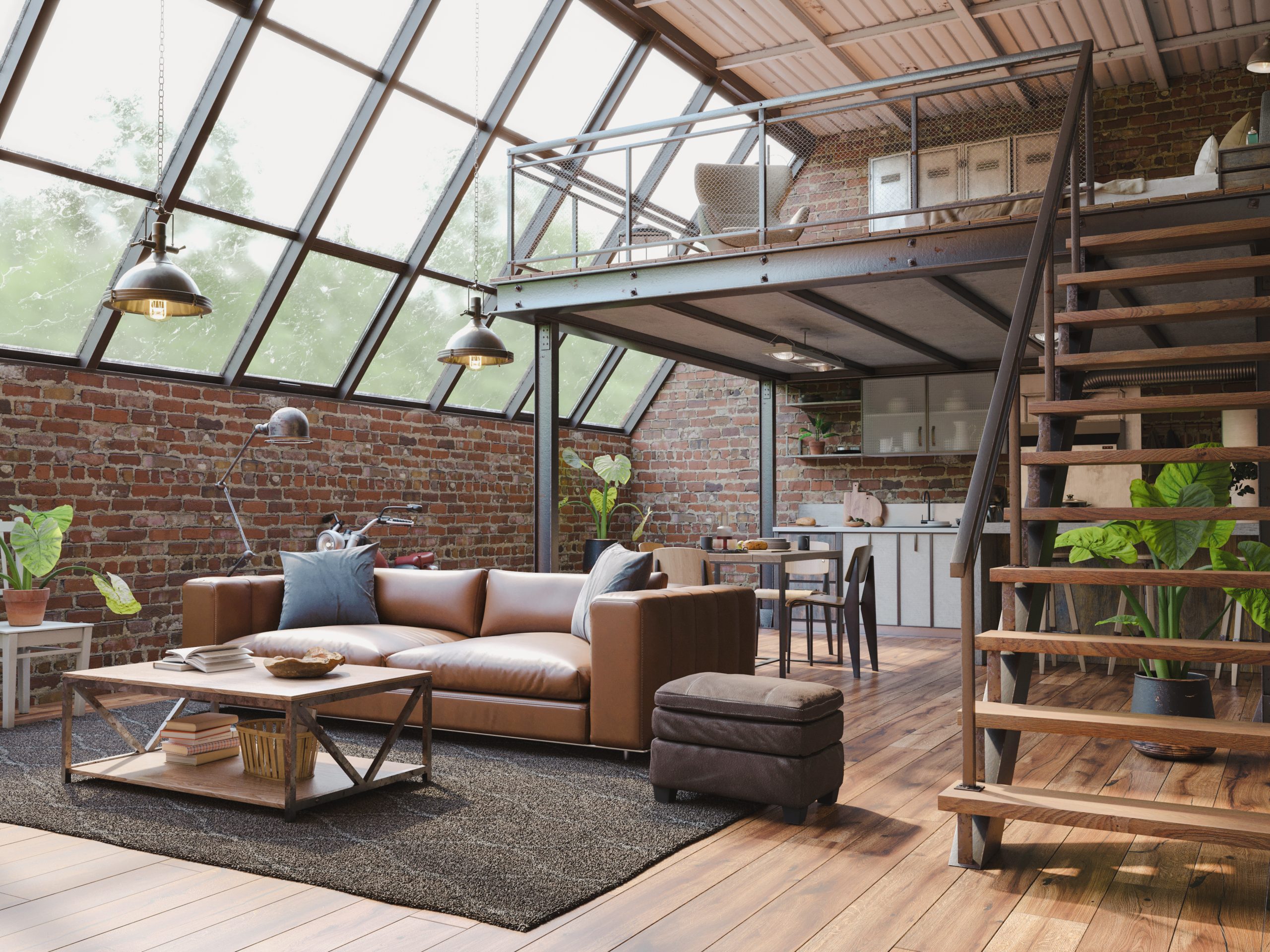
Architectural Features:
- Exposed brick walls
- Concrete floors
- Visible support beams
- Industrial windows
- Open ductwork
- Metal staircases
- Warehouse doors
- High ceilings
Space Planning:
Industrial spaces need:
- Flexible layouts
- Defined zones in open plans
- Multiple seating areas
- Work spaces
- Entertainment zones
- Clear traffic patterns
- Conversation areas
- Multi-functional spaces
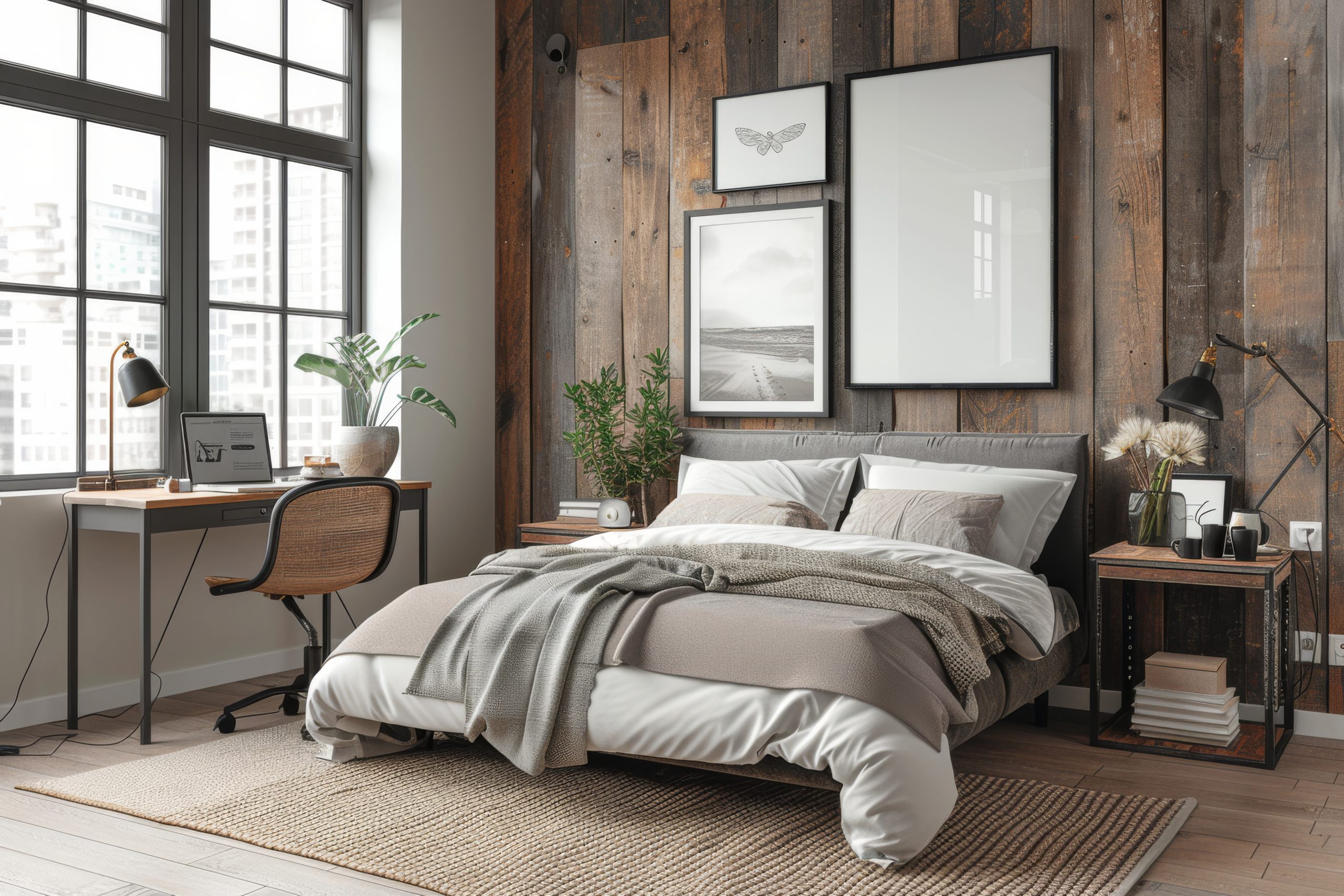
8. Urban Modern
Let’s explore Urban Modern style – a sophisticated evolution of industrial design that perfectly captures contemporary city living. This style masterfully balances metropolitan edge with comfortable living.
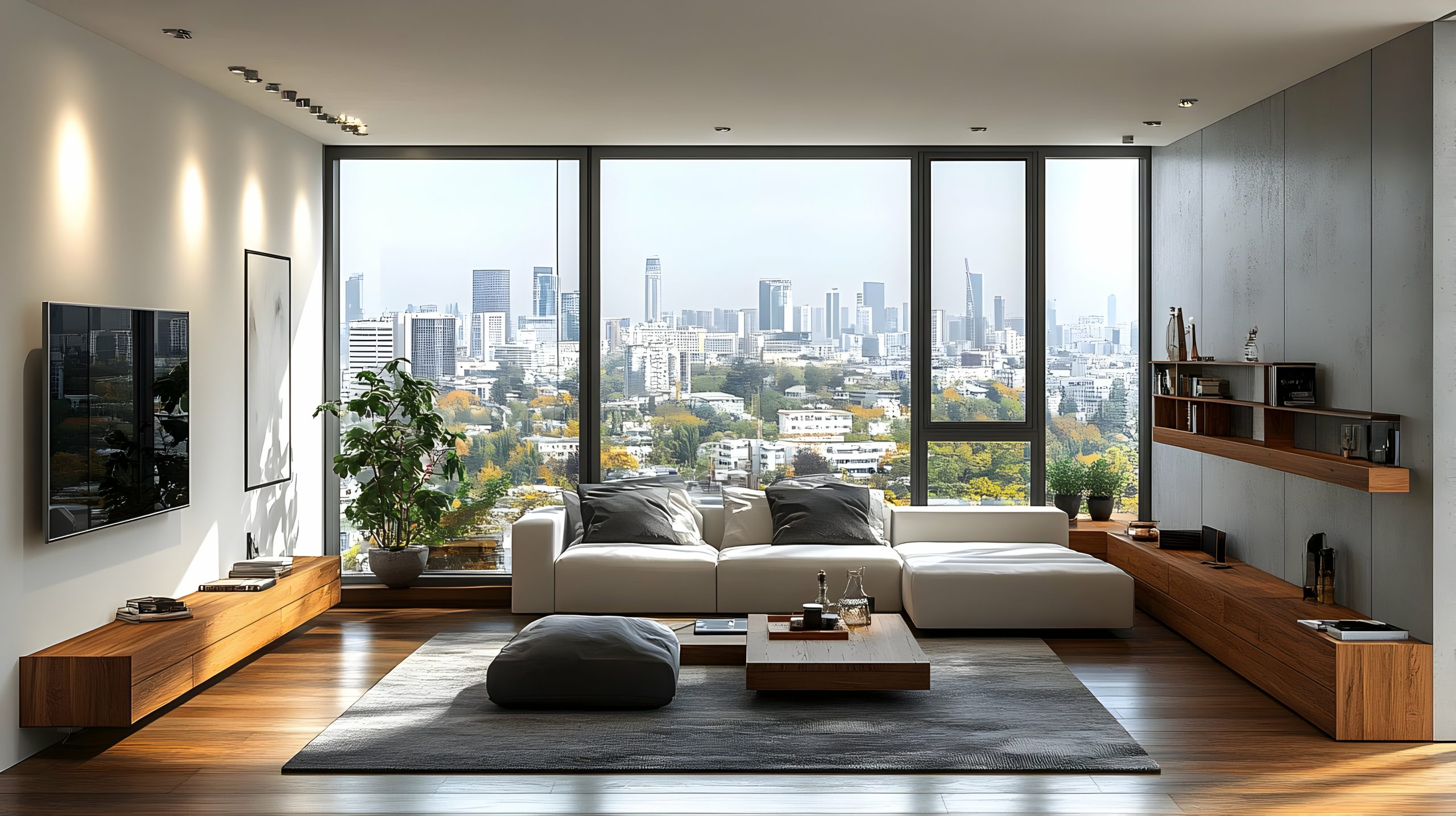
What makes Urban Modern special is how it takes the energy of city life and transforms it into livable, sophisticated spaces. Think of it as the perfect blend of industrial edge, modern sophistication, and contemporary comfort – ideal for those who love city living but want their home to feel like a refined sanctuary.
Key Characteristics:
- Clean architectural lines
- Mixed materials
- City influences
- Smart storage solutions
- Sophisticated colour schemes
- Contemporary artwork
- Strategic lighting
- Functional luxury
Colour Palettes: Urban Modern embraces city-inspired colours
Primary Colours:
- Concrete gray
- Charcoal
- Pure white
- Soft black
- Warm neutrals
Accent Colours:
- Deep blues
- Urban green
- Manhattan brown
- Steel blue
- Bronze metallics
Materials That Define the Style:
- Polished concrete
- Sleek metals
- Engineered wood
- Glass
- Leather
- Microfiber
- High-gloss finishes
- Textured wallcoverings
Pro Tip: In Urban Modern spaces, invest in multi-functional pieces. When you’re dealing with city-sized spaces, every piece needs to work twice as hard.
Furniture Elements:
- Low-profile sofas
- Modular seating
- Built-in storage
- Statement lighting
- Multi-functional pieces
- Floating shelves
- Glass dining tables
- Contemporary beds
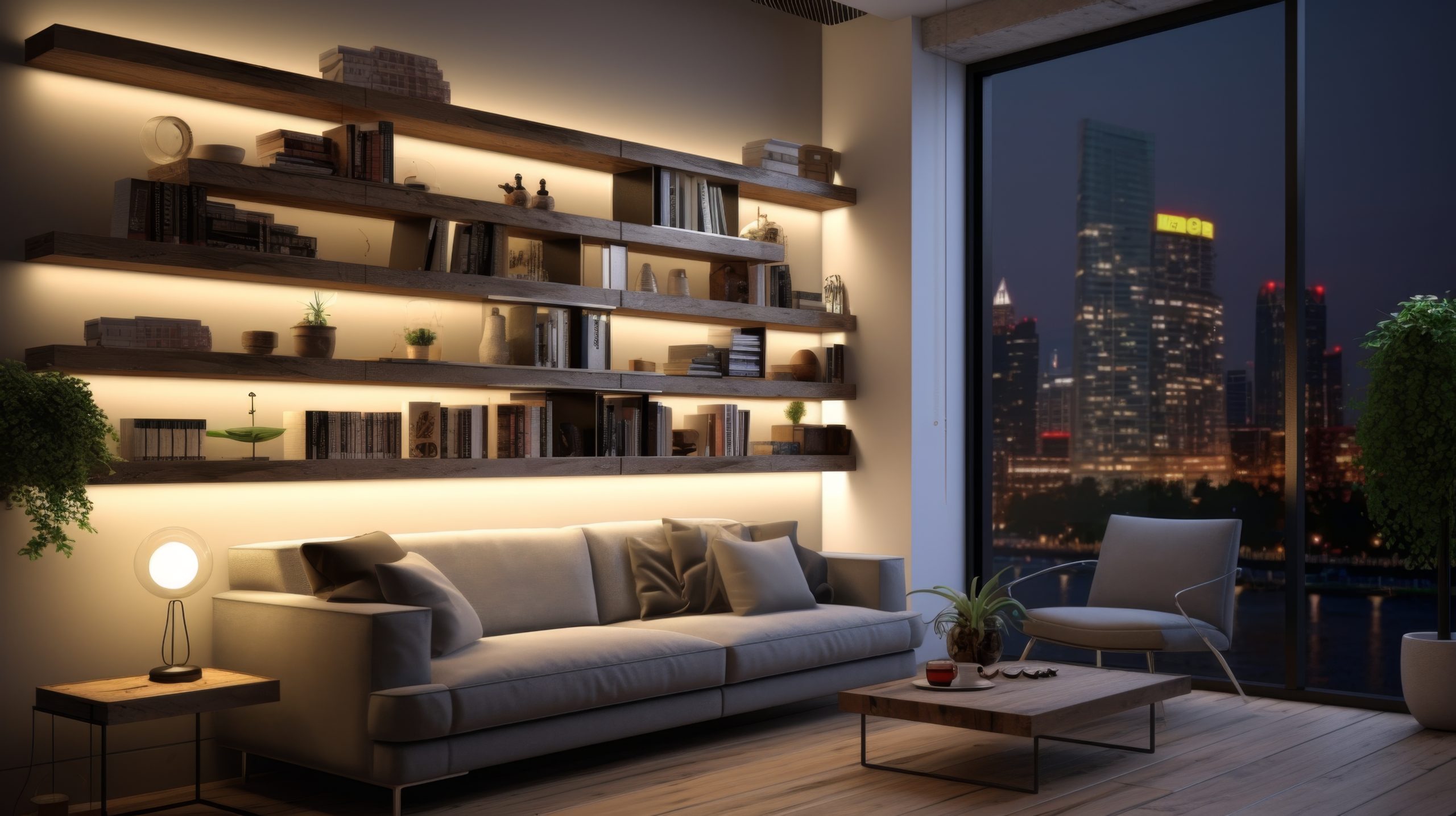
Technology Integration:
Urban Modern embraces smart living:
- Hidden TV solutions
- Integrated sound systems
- Smart home features
- Automated window treatments
- Modern climate control
- Tech charging stations
- Smart lighting
- Security features
Space Planning:
Urban spaces require:
- Maximised floor plans
- Flexible layouts
- Work-from-home zones
- Entertainment areas
- Dining solutions
- Storage optimisation
- City view enhancement
- Traffic flow consideration
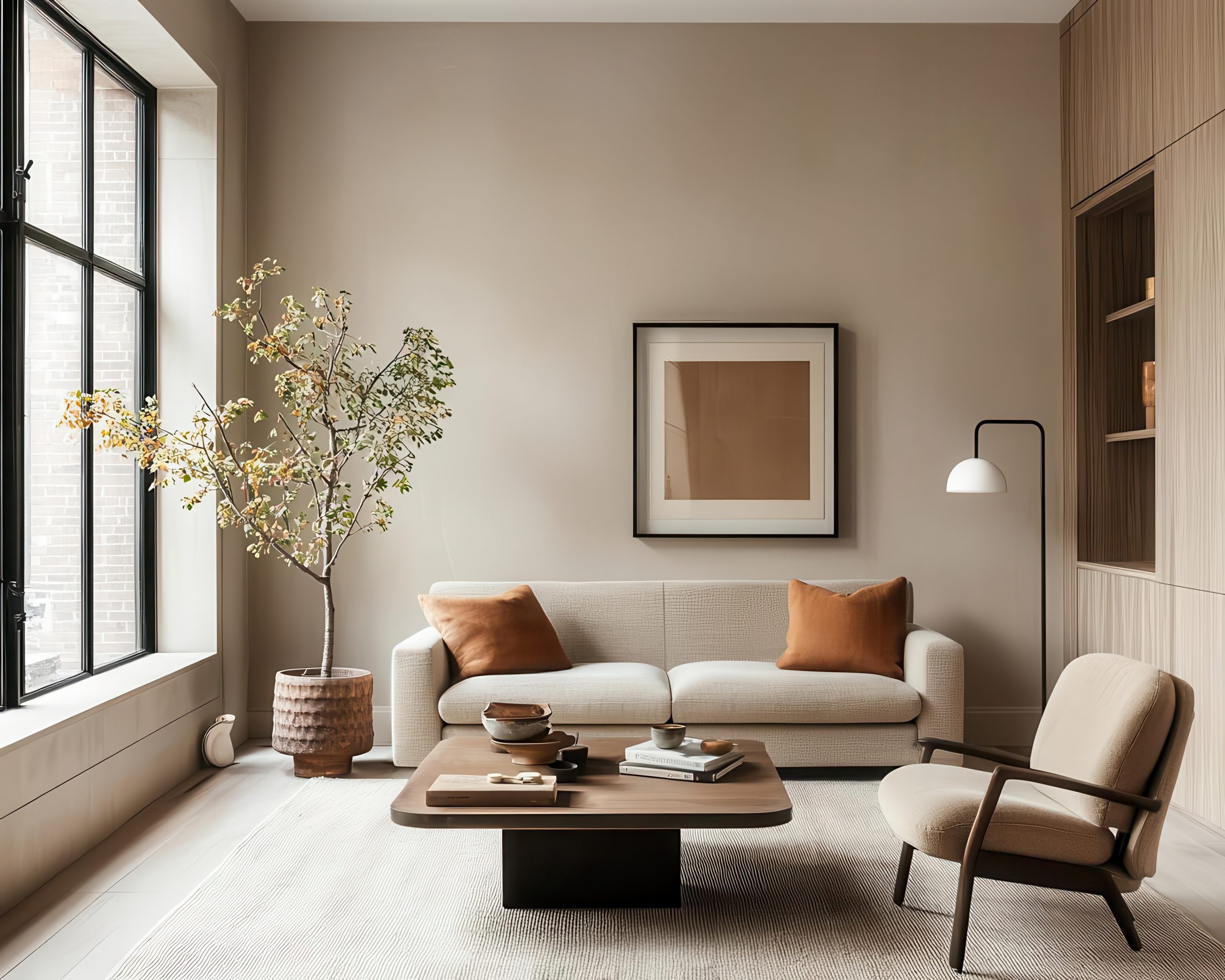
Styling Elements:
- Contemporary art
- City photography
- Geometric patterns
- Metal accents
- Textural contrasts
- Statement pieces
- Urban-inspired decor
- Strategic mirrors
Design Solutions:
Common urban challenges and solutions:
- Small space maximisation
- Storage integration
- Privacy solutions
- Noise reduction
- Light optimisation
- Multi-functional areas
- Entertainment spaces
- Work-life balance
Mid-Century & Scandinavian Styles
Let’s explore styles that revolutionised design through simplicity, functionality, and connection to nature.
9. Mid-Century Modern
Of all 22 different interior design styles we’re exploring, Mid-Century Modern holds a special place in design history. This style’s enduring popularity isn’t just about nostalgia – it’s about timeless, functional beauty.
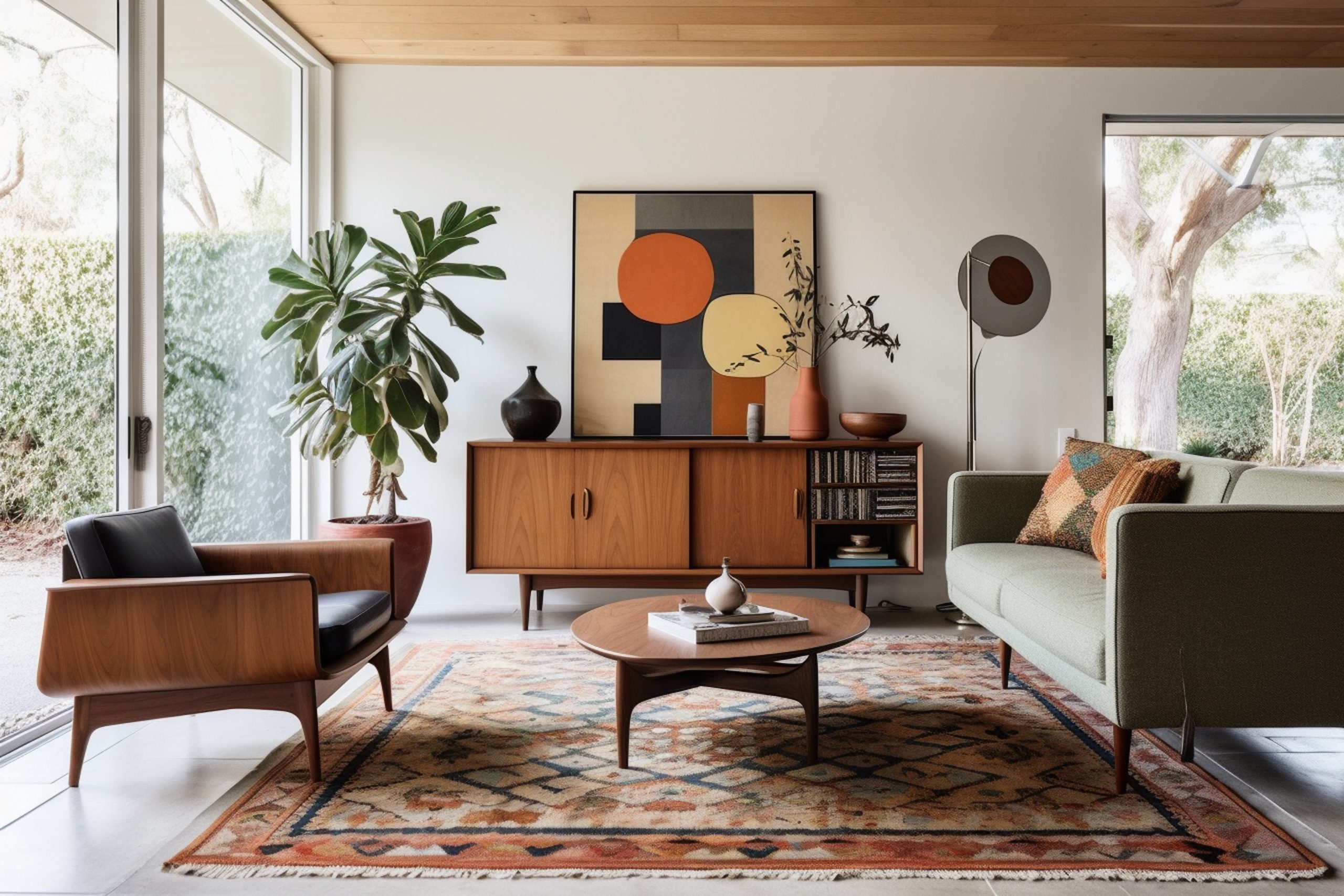
What makes Mid-Century Modern special is its perfect balance of form and function. Born roughly between the 1940s and 1970s, this style revolutionised how we think about home design. Think of it as the moment when interior design became democratic – beautiful, functional design for everyone.
Key Characteristics:
- Clean, organic lines
- Minimal ornamentation
- Mixed materials
- Indoor-outdoor connection
- Geometric patterns
- Contrasting textures
- Functionality focus
- Statement lighting
Colour Palettes: Mid-Century Modern embraces both neutral and bold colours
Primary Colours:
- Warm whites
- Natural woods
- Earthy browns
- Charcoal gray
- Black accents
Accent Colours:
- Mustard yellow
- Burnt orange
- Olive green
- Teal blue
- Brick red
Materials That Define the Style:
- Walnut and teak woods
- Molded plastic
- Glass
- Steel
- Brass
- Leather
- Vinyl
- Textured fabrics
Pro Tip: When designing Mid-Century spaces, you don’t need to fill your home with vintage pieces. Quality modern reproductions can work beautifully alongside authentic pieces.
Furniture Elements:
- Eames-style chairs
- Platform sofas
- Tulip tables
- Floating credenzas
- Tapered legs
- Egg chairs
- Organic shapes
- Built-in cabinetry
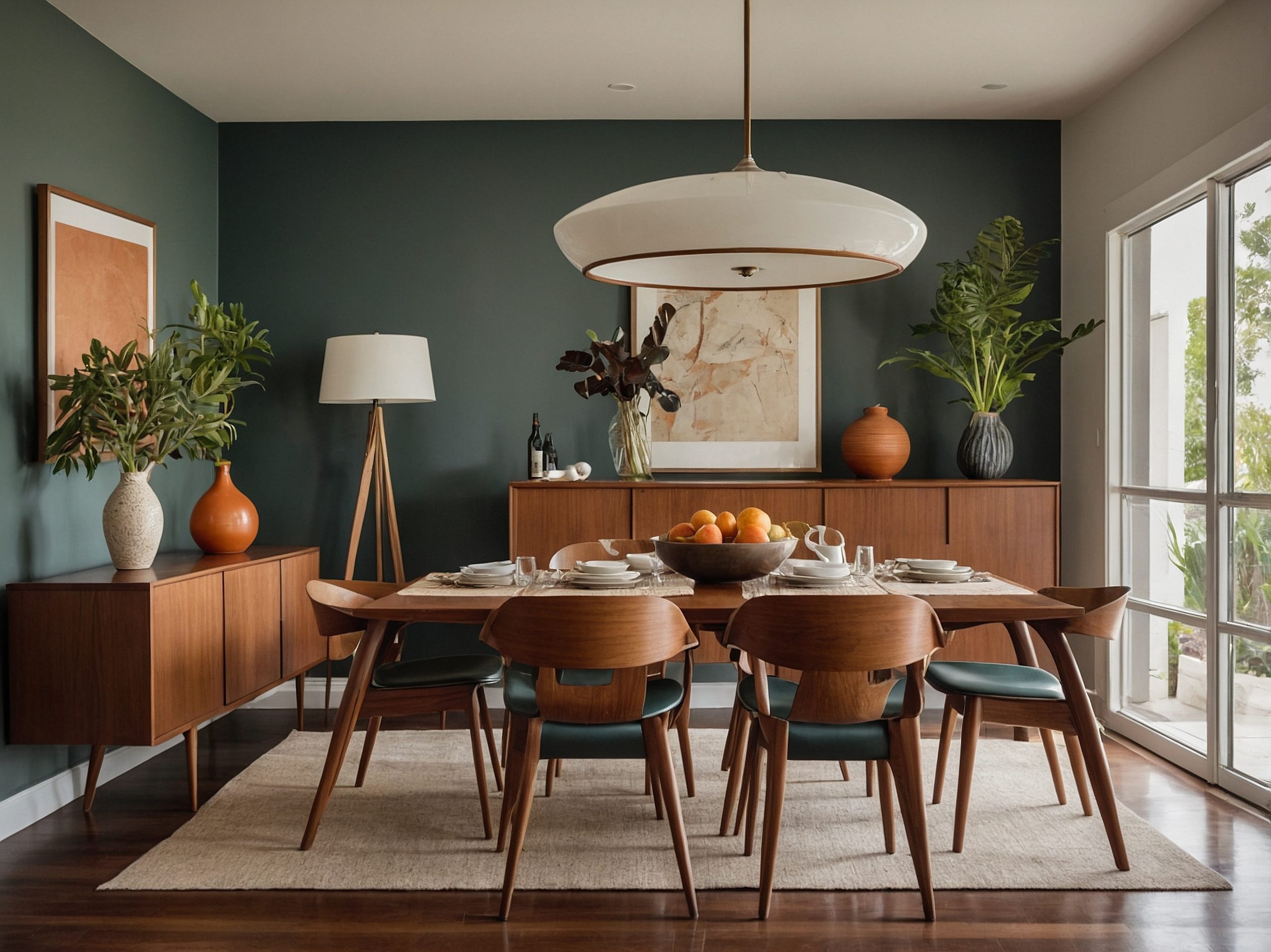
Signature Elements:
- Sunburst clocks
- Sputnik chandeliers
- Abstract art
- Geometric patterns
- Bar carts
- Plant stands
- Room dividers
- Statement lighting
Space Planning:
Mid-Century spaces emphasise:
- Open floor plans
- Conversation areas
- Indoor-outdoor flow
- Multiple seating zones
- Clear sight lines
- Natural light
- Functional zones
- Social spaces
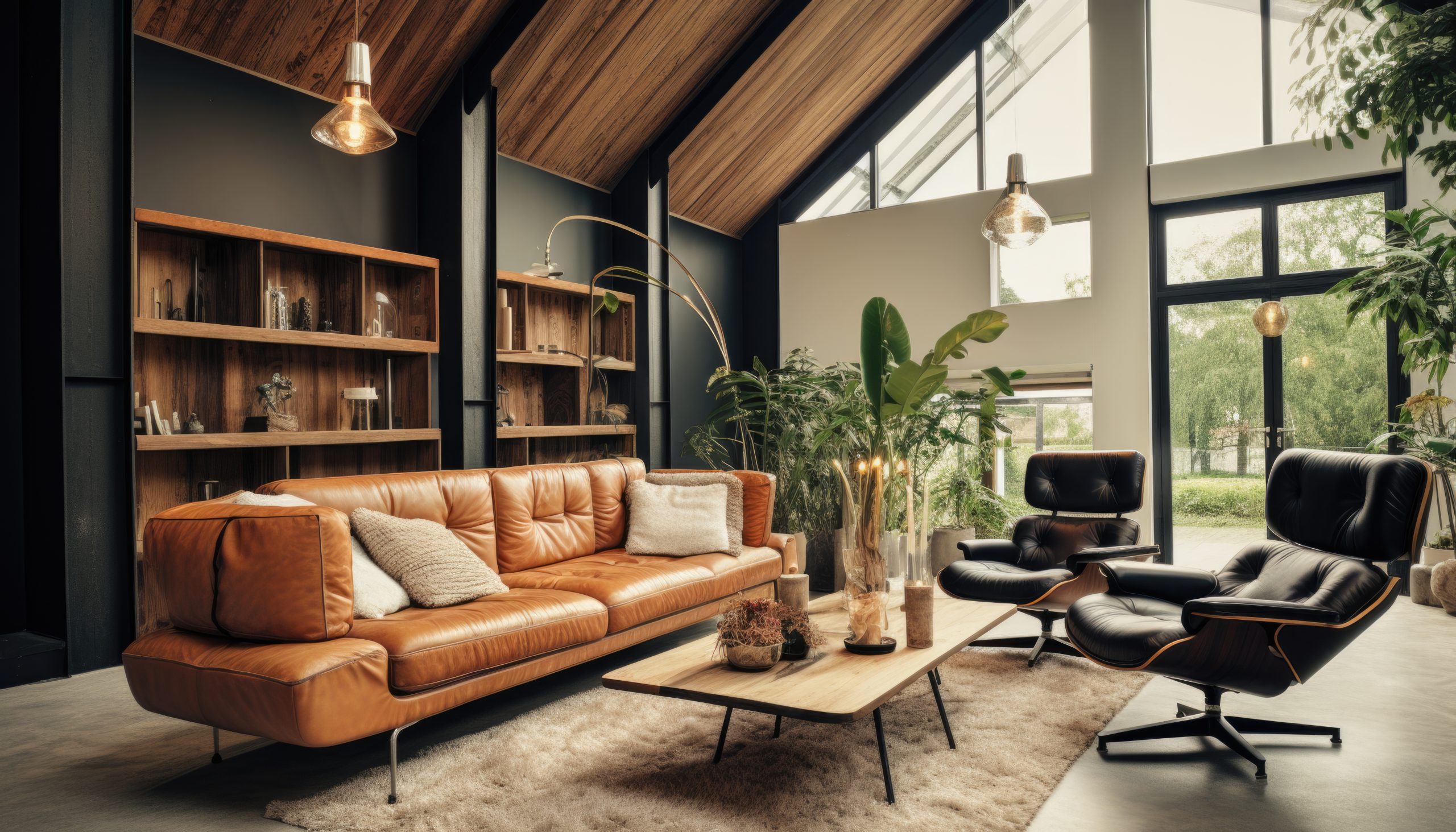
10. Scandinavian
Let’s explore one of the most popular and enduring of our 22 different interior design styles – Scandinavian design. This style is about much more than just white walls and IKEA furniture.
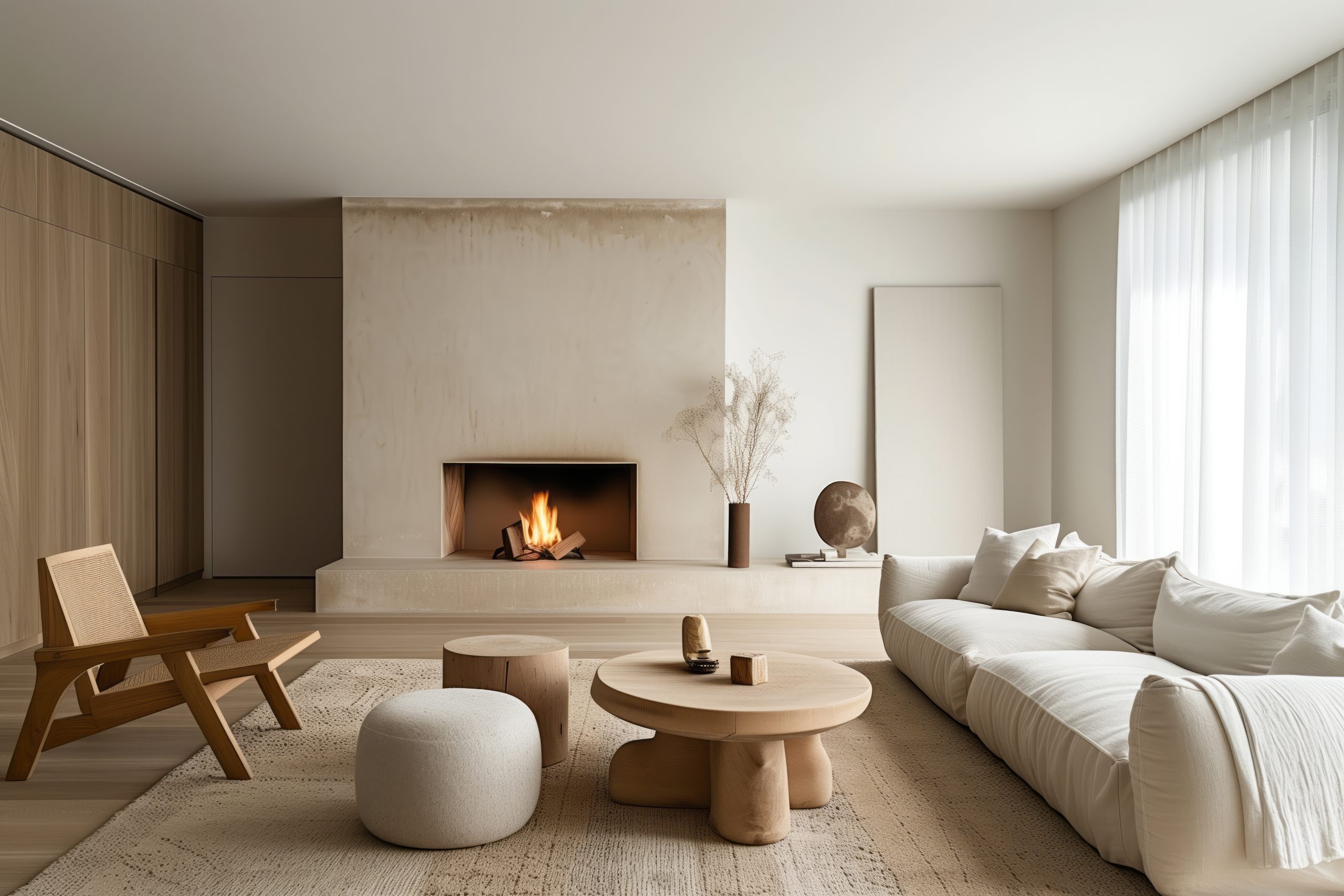
What makes Scandinavian design special is its focus on creating bright, functional spaces that promote well-being. Born in Nordic countries where winter daylight is precious, this style masterfully combines beauty with practicality while emphasising connection to nature.
Key Characteristics:
- Light and airy spaces
- Minimal decor
- Natural materials
- Functional design
- Clean lines
- Cosy elements (hygge)
- Abundant light
- Clutter-free surfaces
Colour Palettes: Scandinavian design embraces light, natural colours
Primary Colours:
- Crisp whites
- Soft greys
- Pale woods
- Light beiges
- Gentle blacks
Accent Colours:
- Sage green
- Dusty blue
- Pale pink
- Soft yellow
- Muted terracotta
Materials That Define the Style:
- Light woods (especially pine and birch)
- Natural textiles
- Wool
- Leather
- Sheepskin
- Linen
- Stone
- Glass
Pro Tip: When designing Scandinavian spaces, always remember that creating hygge (cosy comfort) is just as important as maintaining minimalism. It’s about finding that perfect balance.
Furniture Elements:
- Clean-lined sofas
- Wooden dining sets
- Platform beds
- Built-in storage
- Reading nooks
- Window seats
- Functional workspaces
- Simple chairs
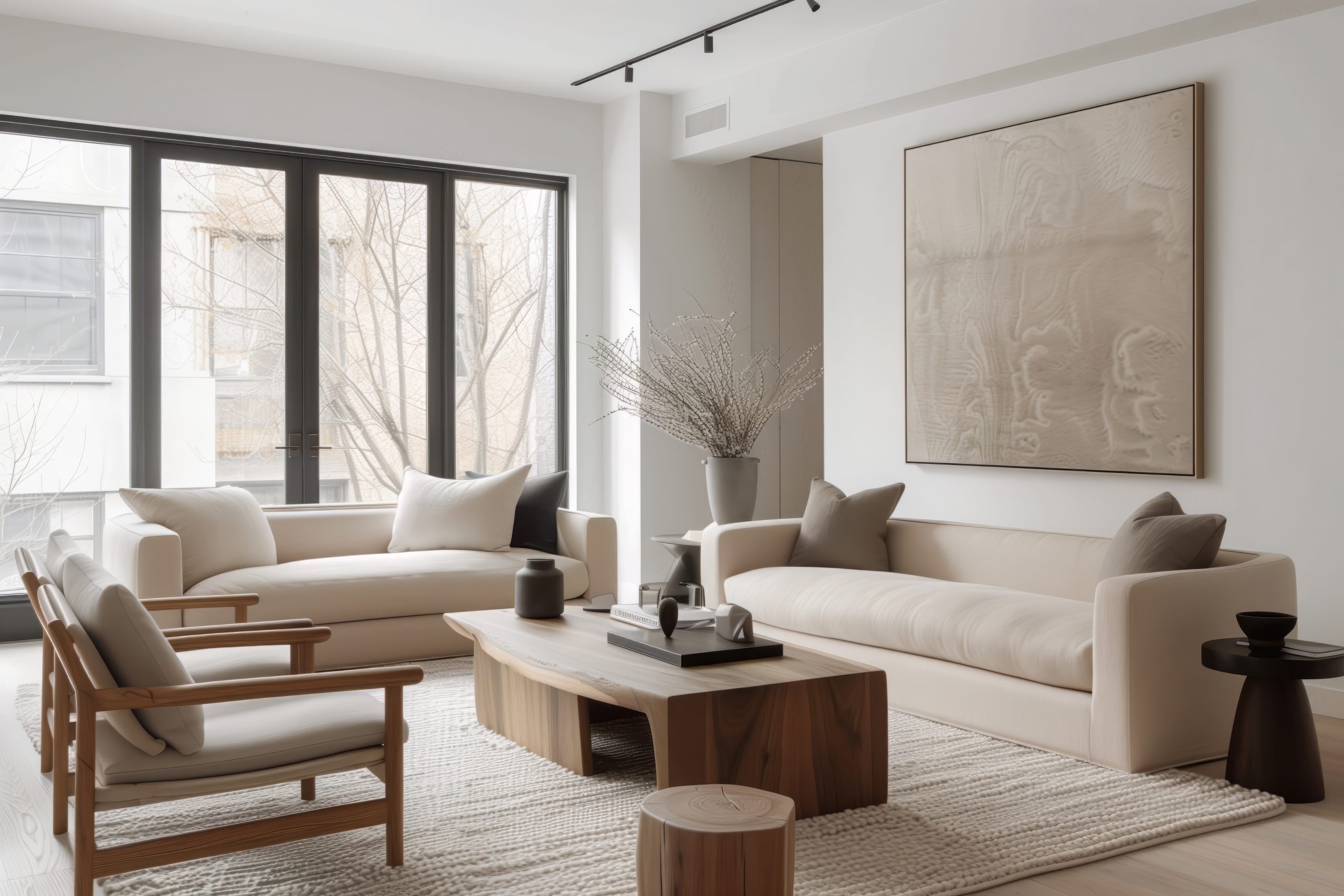
Textile Elements:
Creating warmth through:
- Chunky knit throws
- Natural fibre rugs
- Simple curtains
- Sheepskin throws
- Linen upholstery
- Cotton pillows
- Woven textiles
- Natural fibre carpets
Creating Hygge:
Essential elements for cosiness:
- Candles
- Soft lighting
- Reading corners
- Natural elements
- Comfortable seating
- Warm textures
- Personal touches
- Indoor plants
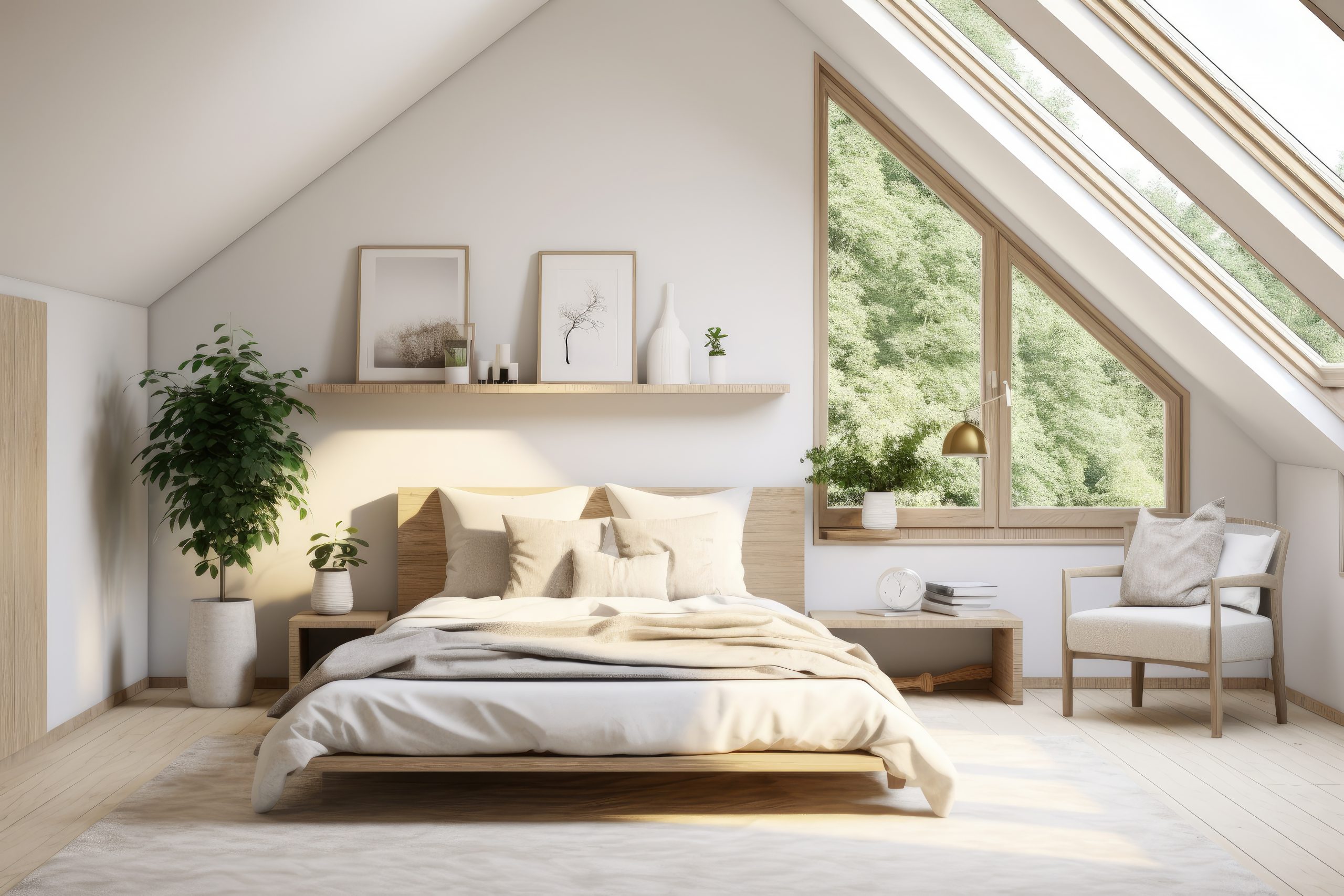
Space Planning:
Scandinavian spaces require:
- Maximised natural light
- Clear pathways
- Functional zones
- Storage solutions
- Social areas
- Quiet corners
- Work spaces
- Family areas
Modern Interpretation:
How to make Scandinavian style work today:
- Smart storage solutions
- Technology integration
- Multi-functional furniture
- Sustainable materials
- Modern conveniences
- Family-friendly solutions
- Work-from-home spaces
- Entertainment areas
Bohemian & Global Styles
Let’s explore styles that celebrate cultural diversity, personal expression, and artistic freedom.
11. Bohemian
Of all the styles we’re exploring, Bohemian (or ‘Boho’) is perhaps the most free-spirited and personal. This style is less about following rules and more about breaking them creatively.
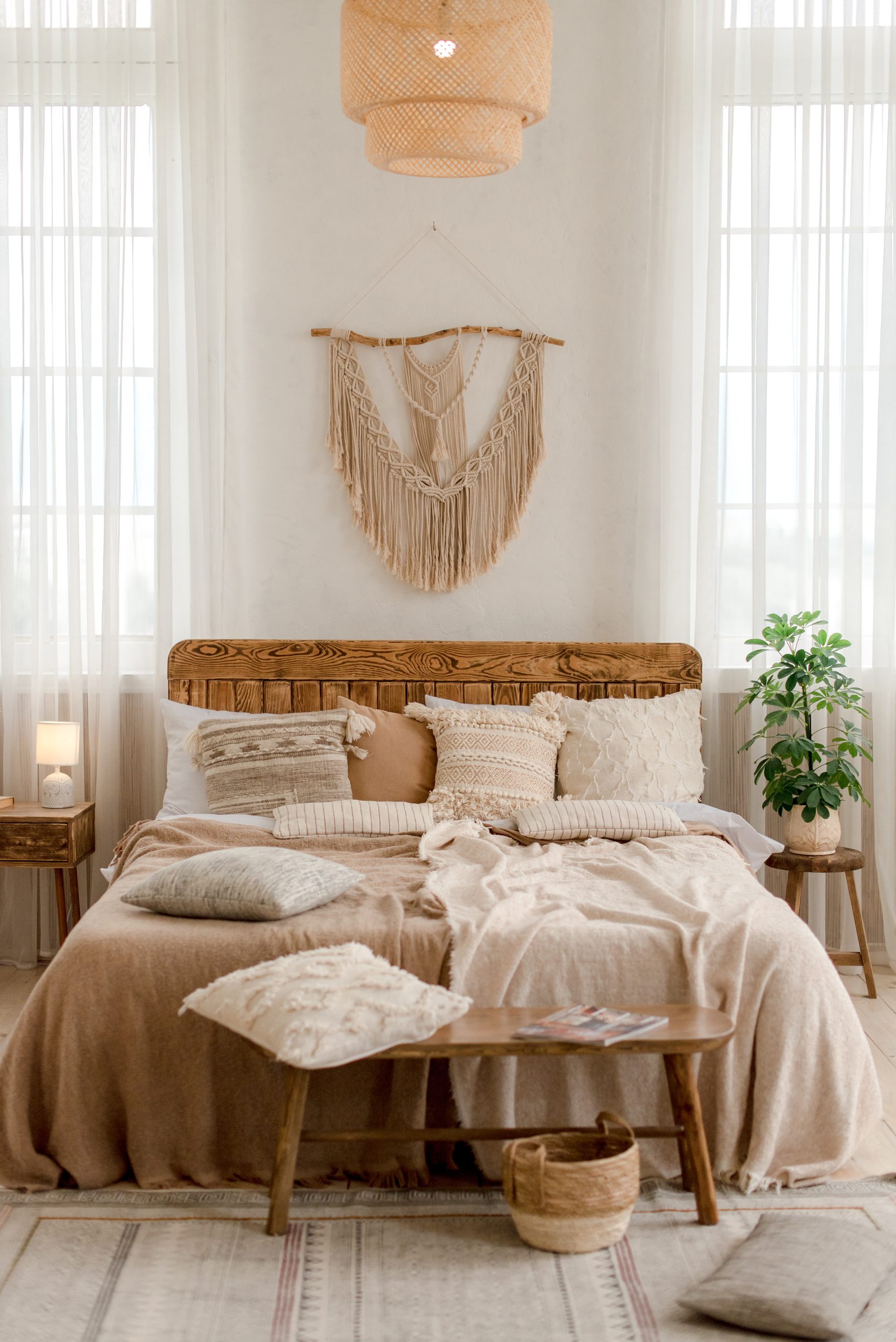
What makes Bohemian style special is its celebration of individuality and artistic expression. Think of it as the design equivalent of jazz improvisation – there’s an underlying structure, but the beauty comes from personal interpretation and unexpected combinations.
Key Characteristics:
- Layer upon layer of textures
- Mixed patterns
- Global influences
- Collected items
- Plants and natural elements
- Rich colours
- Personal mementos
- Artistic expression
Colour Palettes: Bohemian style embraces bold, varied colours
Primary Colours:
- Jewel tones
- Earth tones
- Deep browns
- Rich reds
- Warm oranges
Accent Colours:
- Emerald green
- Peacock blue
- Purple
- Gold
- Turquoise
Materials That Define the Style:
- Natural fibers
- Woven textiles
- Rattan and bamboo
- Vintage fabrics
- Mixed woods
- Metallic accents
- Crystal
- Glass
Pro Tip: When creating Bohemian spaces, start with a neutral base, then layer in colours, patterns, and meaningful pieces over time. It should look collected, not decorated.
Furniture Elements:
- Low-slung seating
- Floor cushions
- Vintage pieces
- Hanging chairs
- Mixed dining chairs
- Carved wooden pieces
- Layered rugs
- Statement headboards
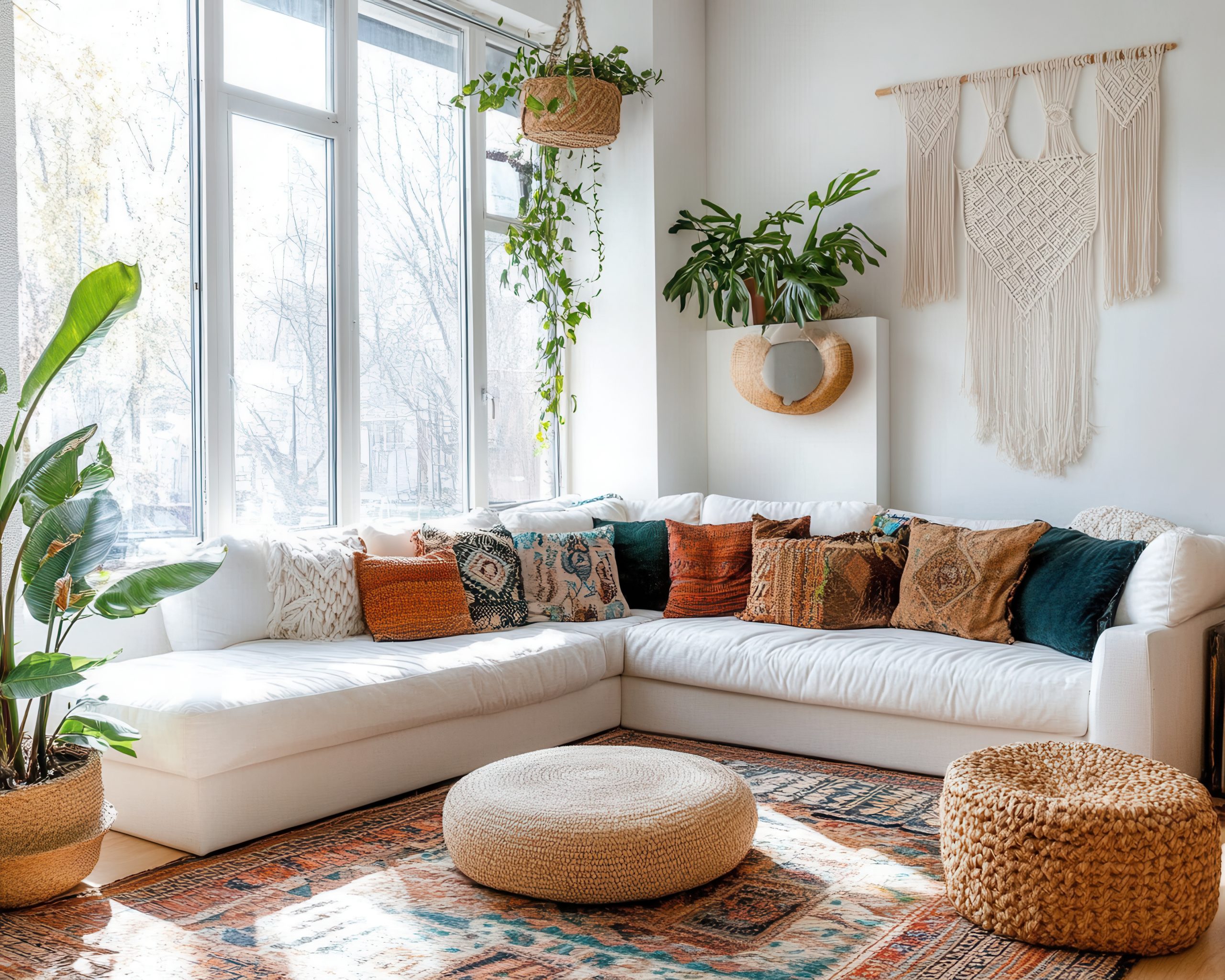
Textiles and Patterns:
Essential to Boho style:
- Persian rugs
- Suzani fabrics
- Ikat prints
- Macramé
- Tapestries
- Kilim pillows
- Moroccan textiles
- Indian block prints
Decorative Elements:
- Plants (lots of them!)
- Global artifacts
- Crystals and geodes
- Vintage maps
- Musical instruments
- Art books
- Handmade pieces
- Gallery walls
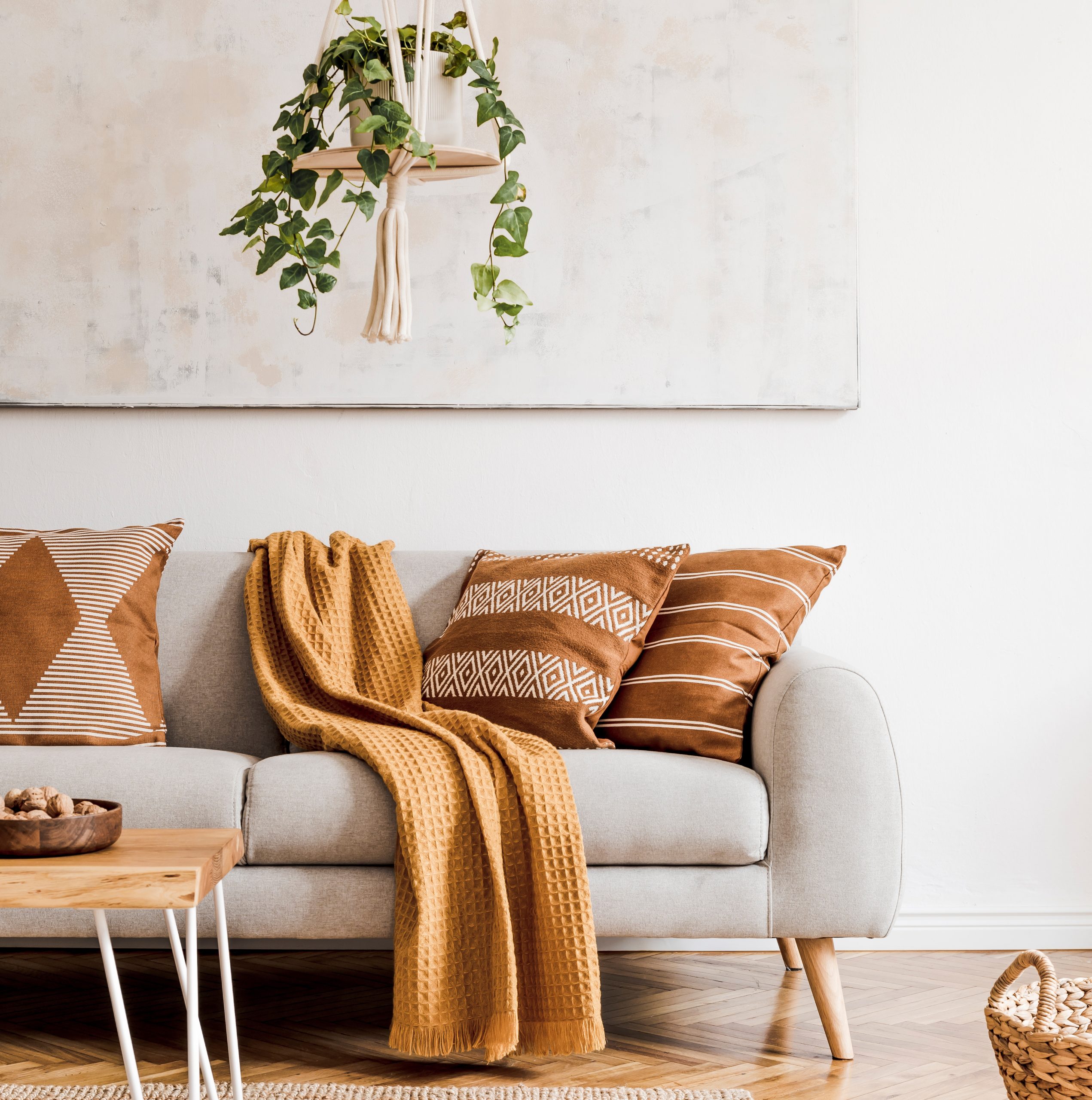
12. Global
As we continue exploring our 22 different interior design styles, let’s dive into Global style – a sophisticated approach to incorporating worldwide design influences. This style is about creating thoughtful, culturally-rich interiors that tell stories of places and traditions.
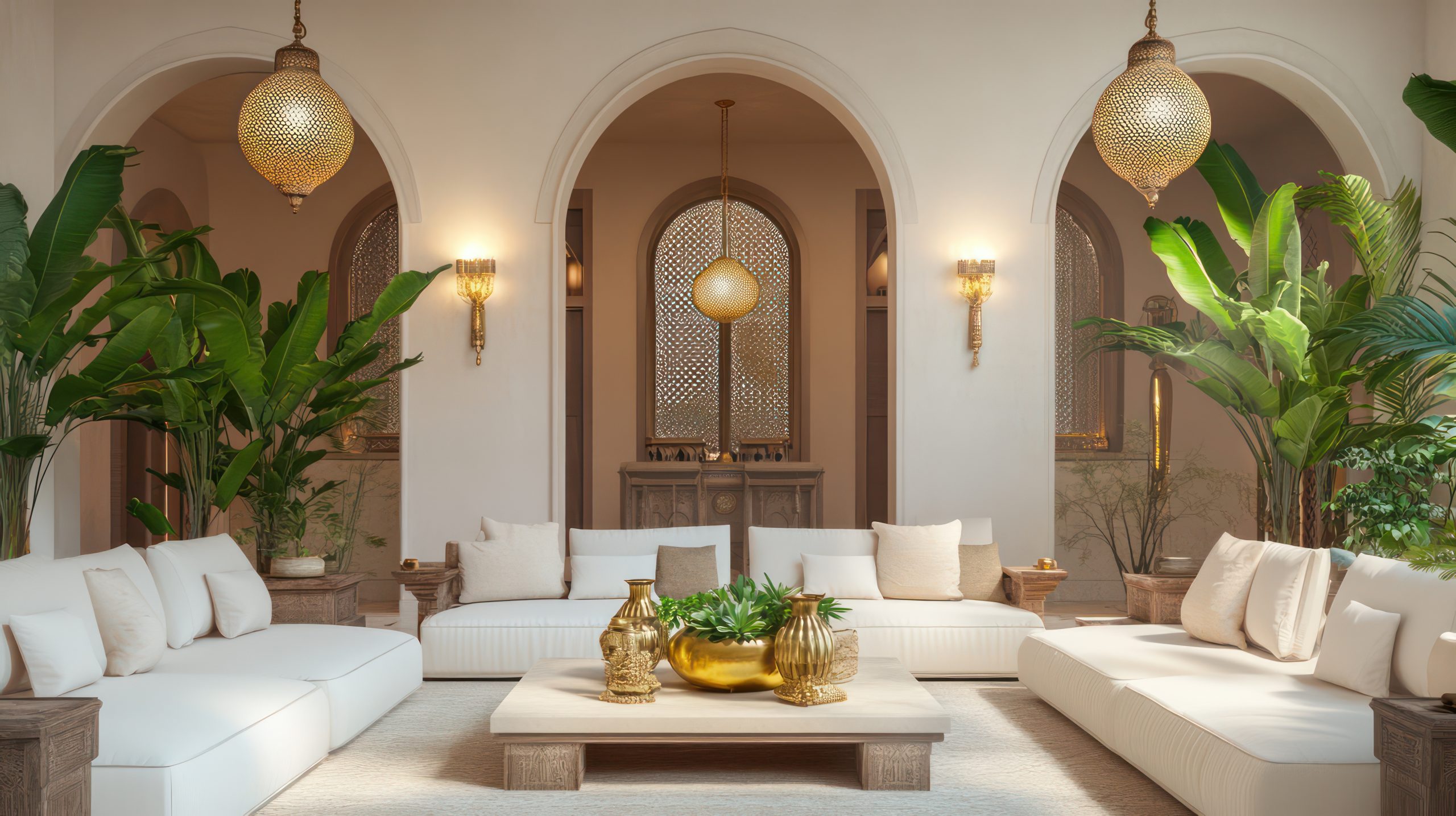
What makes Global style special is its ability to weave together influences from different cultures while maintaining respect for their origins. Think of it as creating a well-curated museum of your world travels, but in a way that’s completely livable and personal.
Key Characteristics:
- Cultural artwork
- Handcrafted elements
- Rich textures
- Traditional patterns
- Natural materials
- Meaningful accessories
- Mixed metals
- Authentic pieces
Colour Palettes: Global style embraces rich, earth-inspired colours
Primary Colours:
- Spice market reds
- Terra cotta
- Deep browns
- Rich golds
- Warm neutrals
Accent Colours:
- Indigo blue
- Saffron yellow
- Mediterranean blue
- Desert rose
- Forest green
Materials That Define the Style:
- Hand-carved woods
- Hammered metals
- Natural fibers
- Handwoven textiles
- Ceramic tiles
- Stone
- Leather
- Silk
Pro Tip: When designing Global spaces, remember that authenticity is key. One genuine piece tells a better story than multiple mass-produced “global-inspired” items.
Furniture Elements:
- Hand-carved chairs
- Low seating options
- Wooden chests
- Metal-worked tables
- Floor cushions
- Painted cabinets
- Prayer benches
- Intricate screens
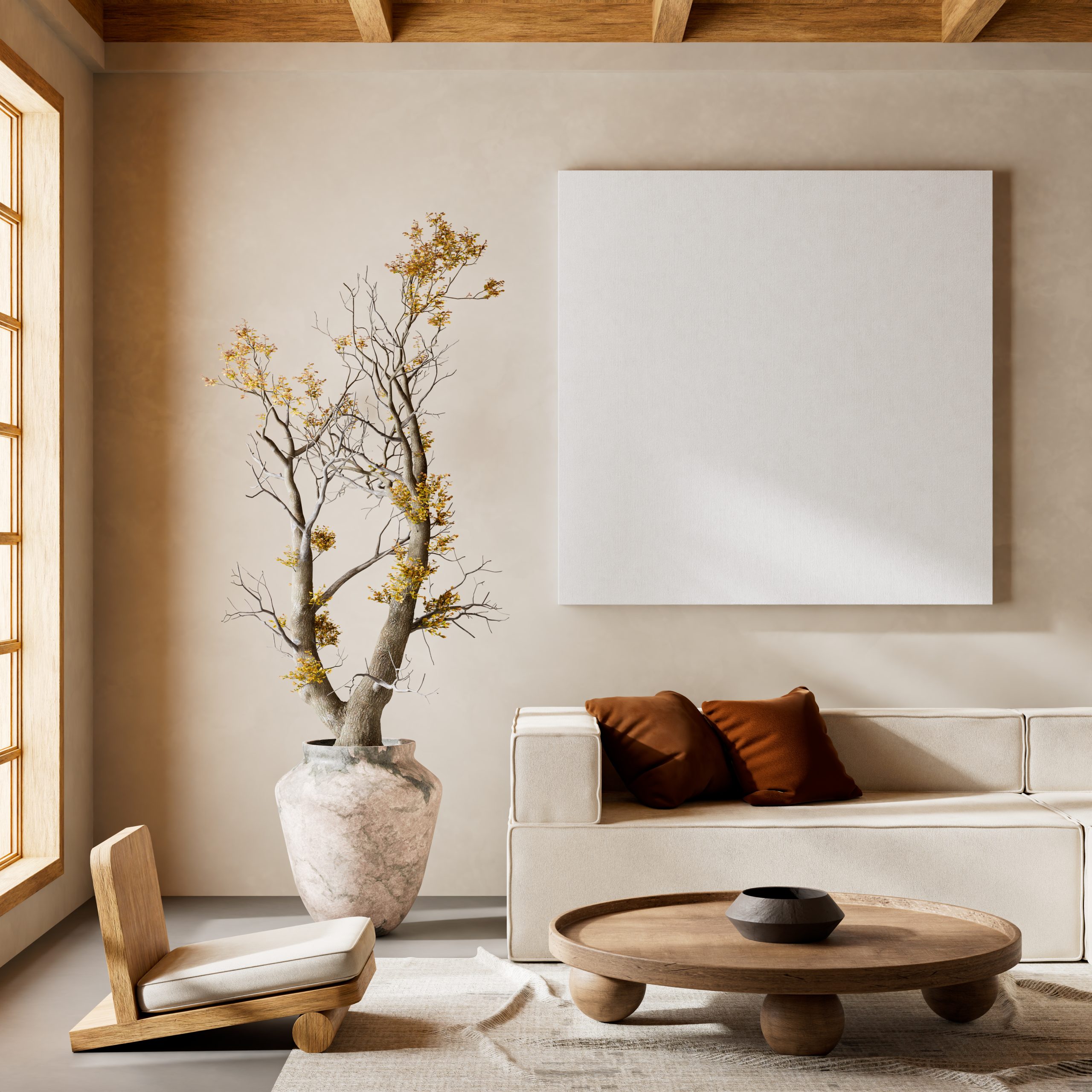
Cultural Elements:
Thoughtful incorporation of:
- African masks
- Moroccan lanterns
- Indian textiles
- Chinese ceramics
- Turkish rugs
- Japanese screens
- Mexican pottery
- Persian carpets
Space Planning:
Global spaces require:
- Conversation areas
- Display spaces
- Meditation corners
- Social gathering spots
- Cultural zones
- Reading nooks
- Collection displays
- Flexible seating
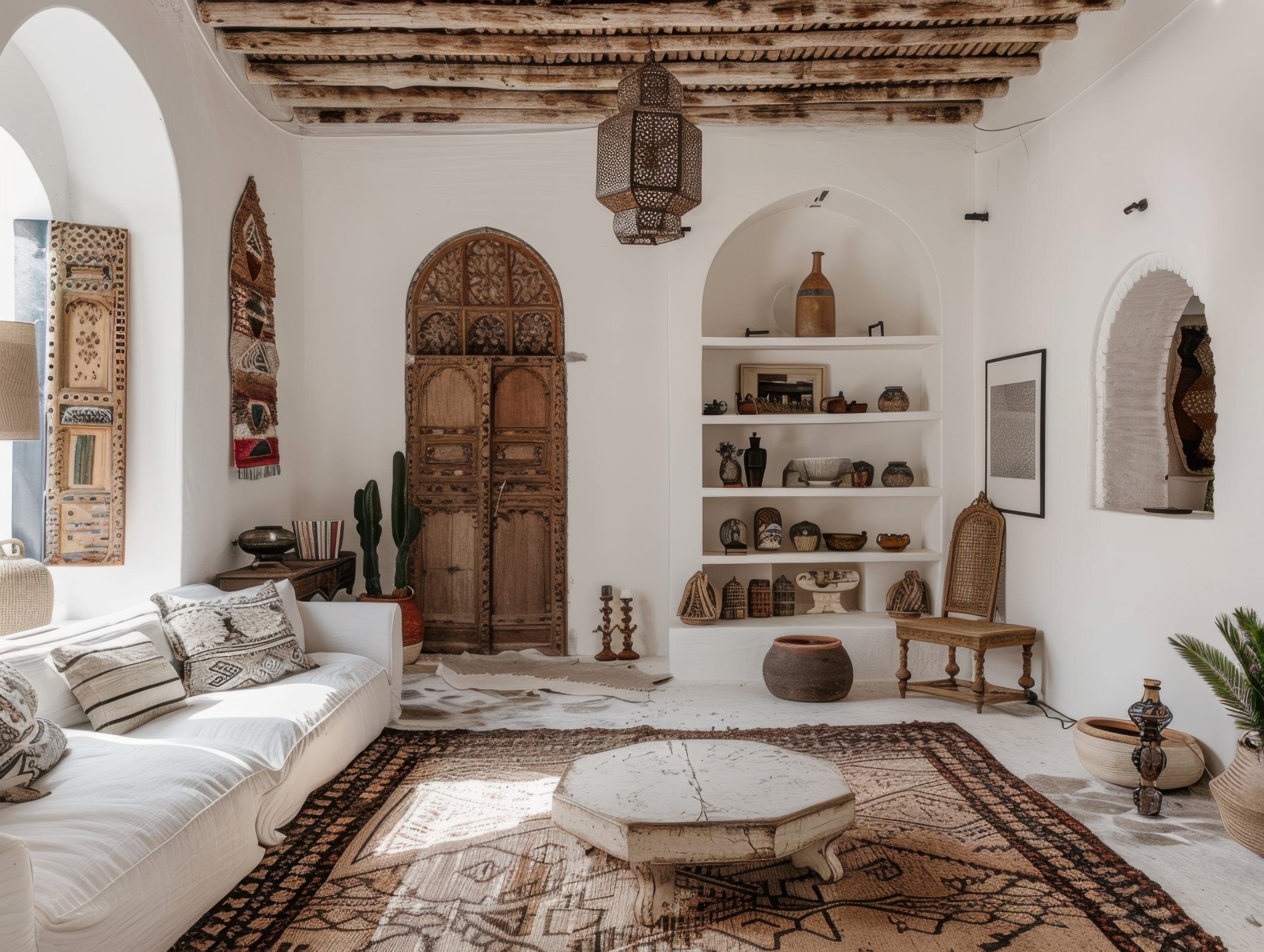
Styling Guidelines:
- Mix textures thoughtfully
- Layer patterns carefully
- Create visual stories
- Group similar items
- Balance colours
- Include natural elements
- Add meaningful lighting
- Create focal points
Common Mistakes to Avoid:
- Over-mixing cultures
- Using inauthentic pieces
- Creating a bazaar look
- Forgetting about comfort
- Overlooking quality
- Missing personal connection
Coastal & Mediterranean Styles
Let’s explore styles that bring the essence of waterfront living and sun-drenched shores into our homes.
13. Coastal
Of all the styles we’re discussing, coastal design instantly transports you to a more relaxed state of mind. This style is about much more than seashells and anchors.
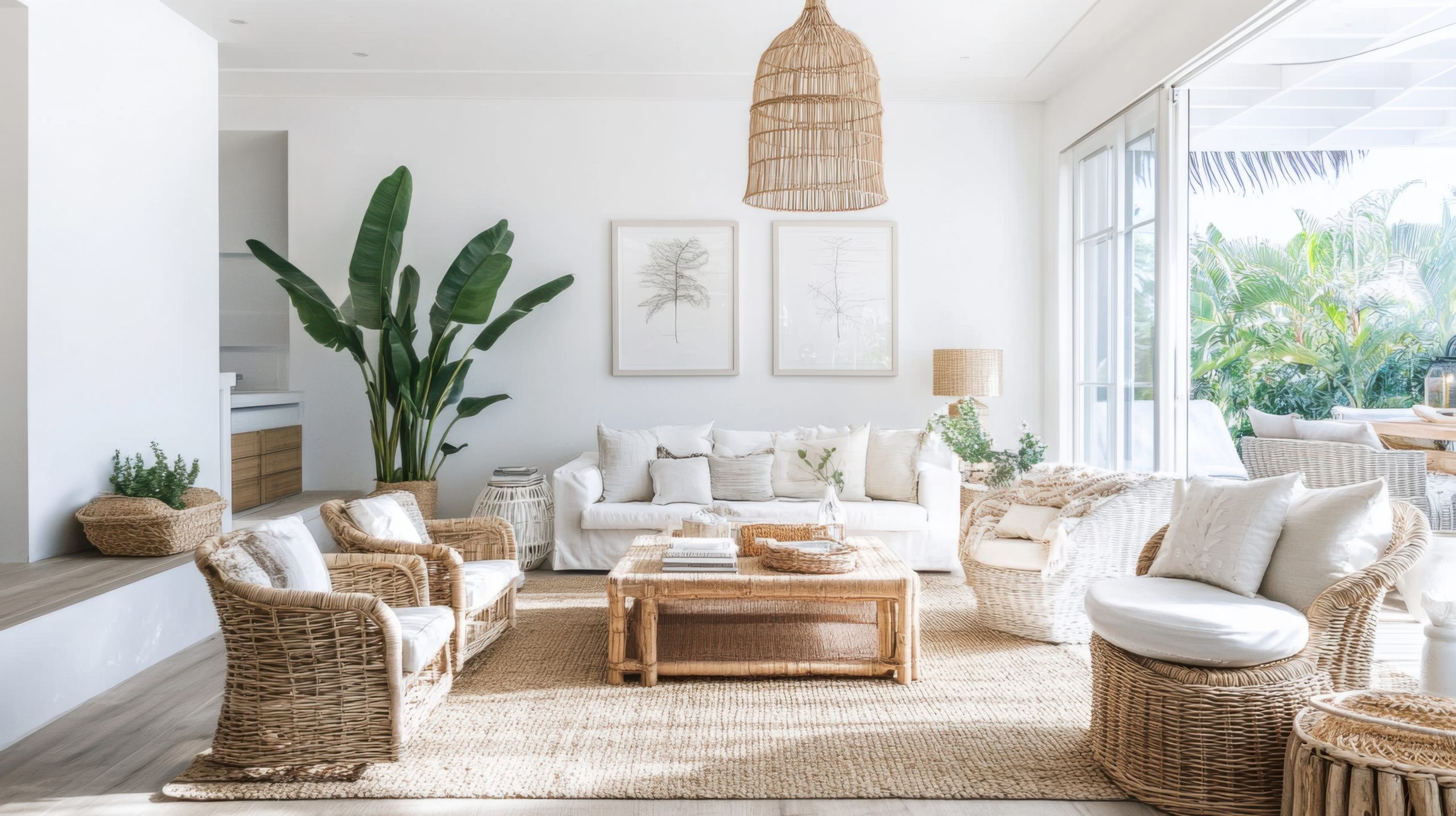
What makes Coastal style special is its ability to create a vacation-like atmosphere while maintaining sophistication and livability. Think of it as bottling the feeling of a perfect beach day and infusing it into your daily living space.
Key Characteristics:
- Light and airy spaces
- Natural light abundance
- Ocean-inspired colours
- Relaxed furnishings
- Natural textures
- Clean lines
- Beachy elements
- Uncluttered spaces
Colour Palettes: Coastal design draws from nature’s seaside palette
Primary Colours:
- Crisp whites
- Sandy beiges
- Ocean blues
- Soft greys
- Driftwood taupes
Accent Colours:
- Sea glass green
- Coral pink
- Navy blue
- Shell pink
- Seafoam
Materials That Define the Style:
- Weathered wood
- Natural fibers
- Linen
- Cotton
- Rope
- Seagrass
- Jute
- Glass
Pro Tip: When designing coastal spaces, suggest the beach rather than recreate it literally. One beautiful piece of coral on a coffee table speaks volumes more than a room full of seashells.
Furniture Elements:
- Slipcovered sofas
- Woven chairs
- Painted wood pieces
- Glass-top tables
- Upholstered headboards
- Window seats
- Rattan accents
- Built-in storage
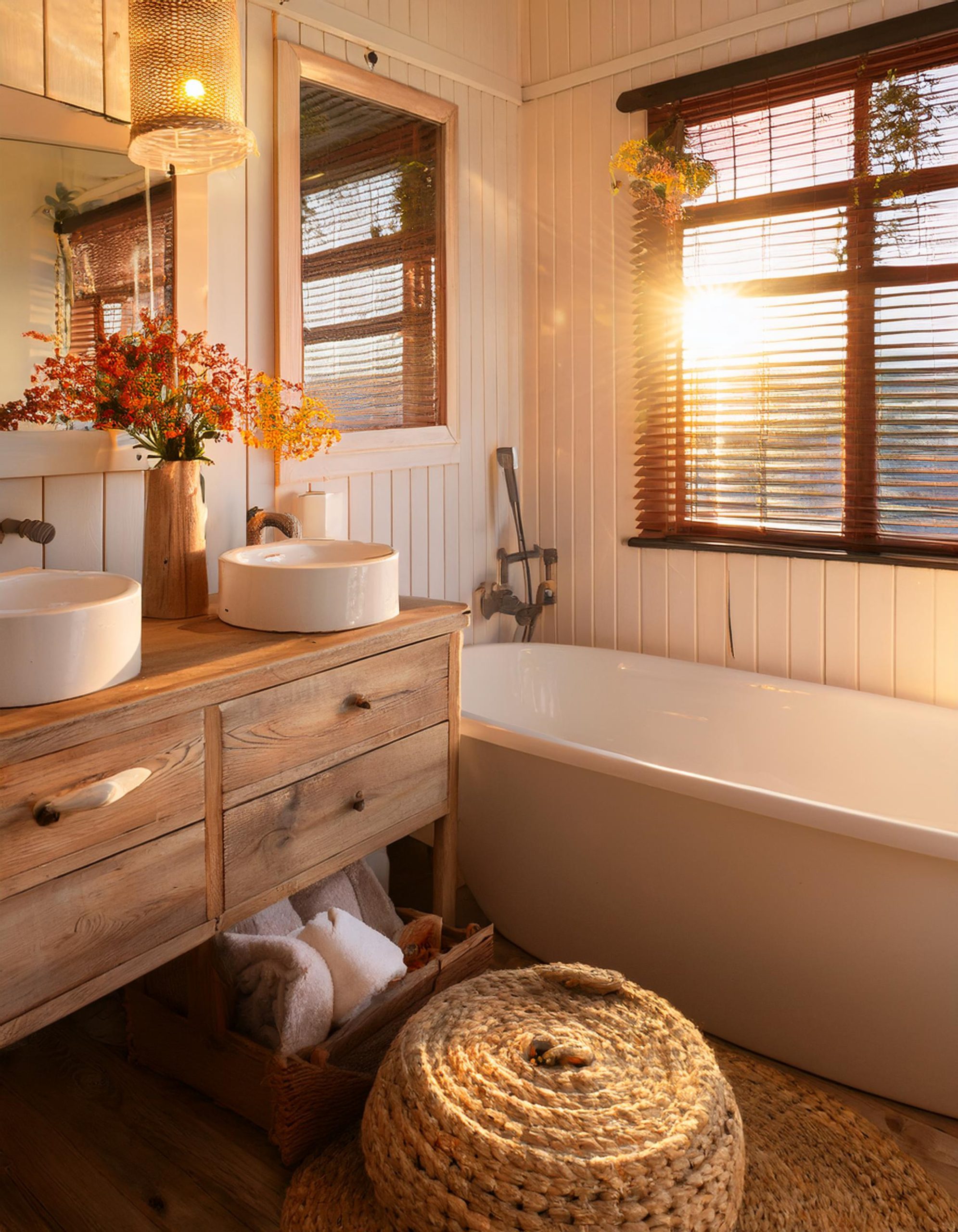
Textile Choices:
- Cotton duck
- Linen
- Performance fabrics
- Natural fibre rugs
- Textured throws
- Striped pillows
- Woven blinds
- Light curtains
Essential Elements:
- Natural fibre rugs
- Woven baskets
- Glass vessels
- Driftwood pieces
- Abstract seascapes
- White ceramics
- Beach grass
- Mirror accents
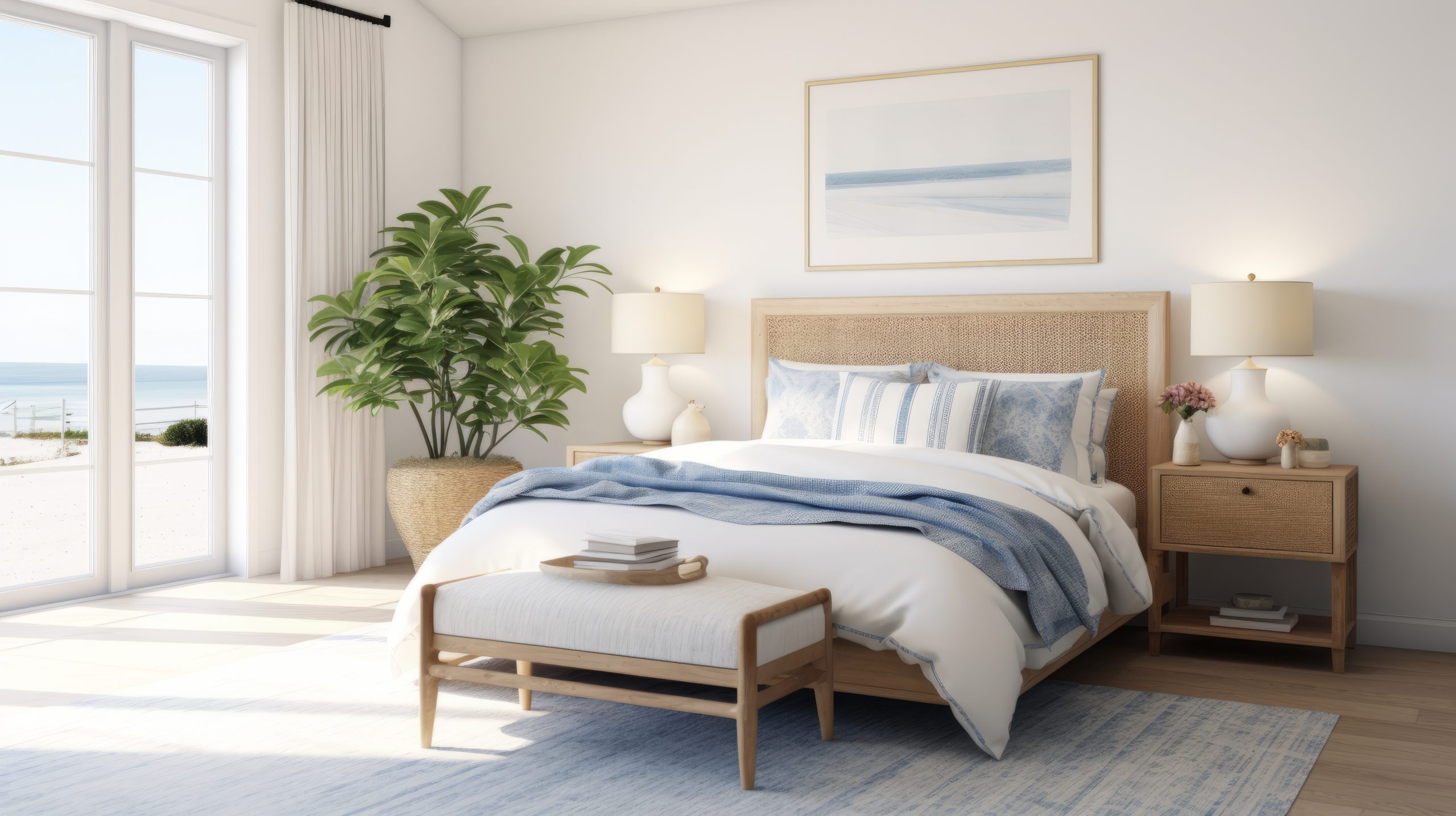
14. Mediterranean
Let’s explore Mediterranean style – a design approach that captures the warmth and romance of seaside villas in Italy, Spain, and Greece. This style is about creating spaces that feel both luxurious and incredibly livable.
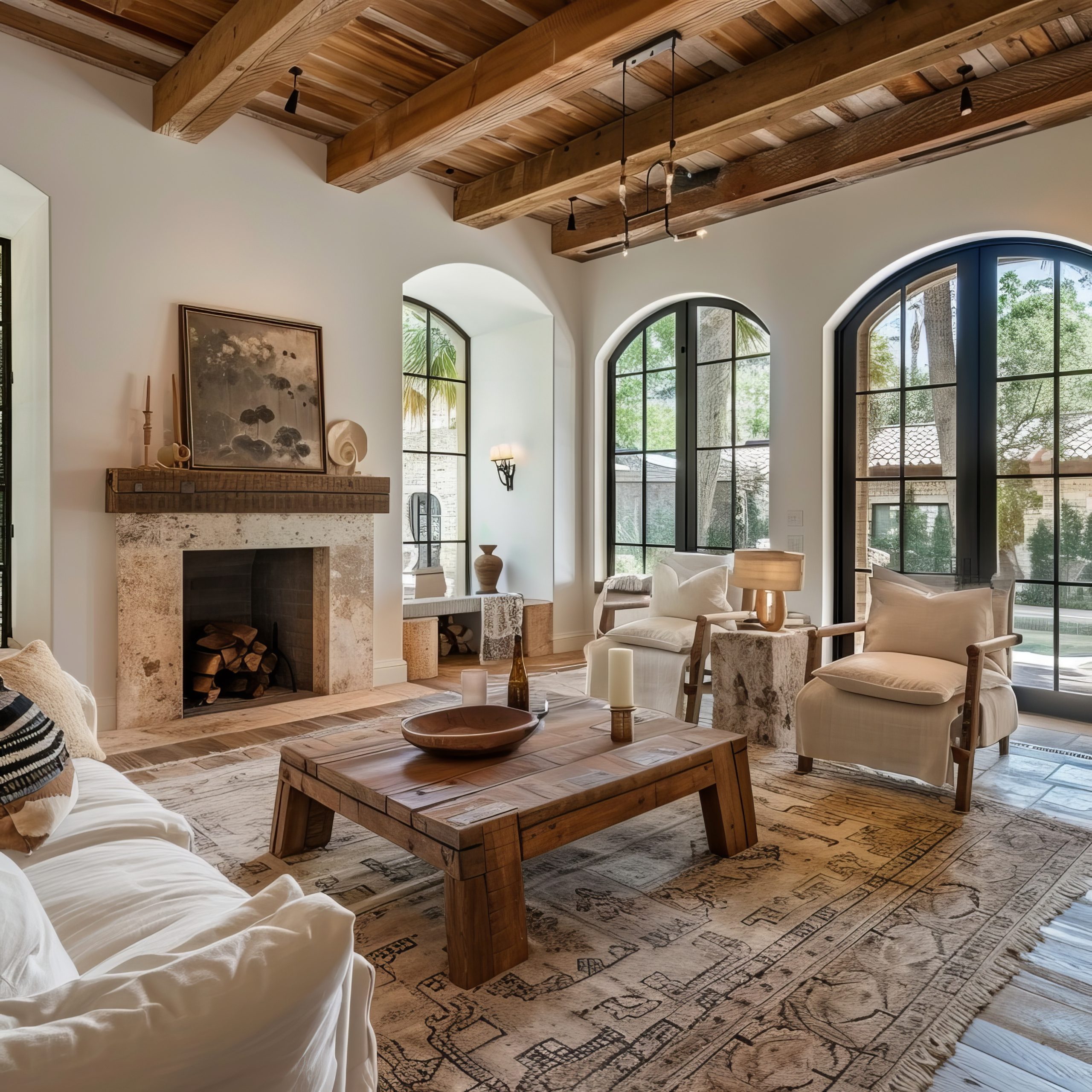
What makes Mediterranean style special is its ability to blend indoor and outdoor living while celebrating craftsmanship and natural materials. Think of it as bringing the sun-drenched charm of the Mediterranean coast into your daily life, complete with all the texture and warmth that implies.
Key Characteristics:
- Textured walls
- Arched doorways
- Terra cotta tiles
- Wrought iron details
- Indoor-outdoor flow
- Warm colours
- Hand-crafted elements
- Natural materials
Colour Palettes: Mediterranean design embraces sun-warmed colours
Primary Colours:
- Terra cotta
- Warm whites
- Sandy beiges
- Ocean blues
- Olive greens
Accent Colours:
- Burnt orange
- Deep reds
- Sea blue
- Cypress green
- Golden yellow
Materials That Define the Style:
- Terra cotta
- Natural stone
- Wrought iron
- Ceramic tiles
- Carved wood
- Marble
- Copper
- Mosaic tiles
Pro Tip: When designing Mediterranean spaces, always remember that authenticity in materials is key. One real terra cotta floor will add more character than any amount of faux finishing.
Furniture Elements:
- Heavy wooden pieces
- Wrought iron beds
- Carved details
- Upholstered dining chairs
- Built-in seating
- Wooden benches
- Ornate occasional tables
- Outdoor furniture
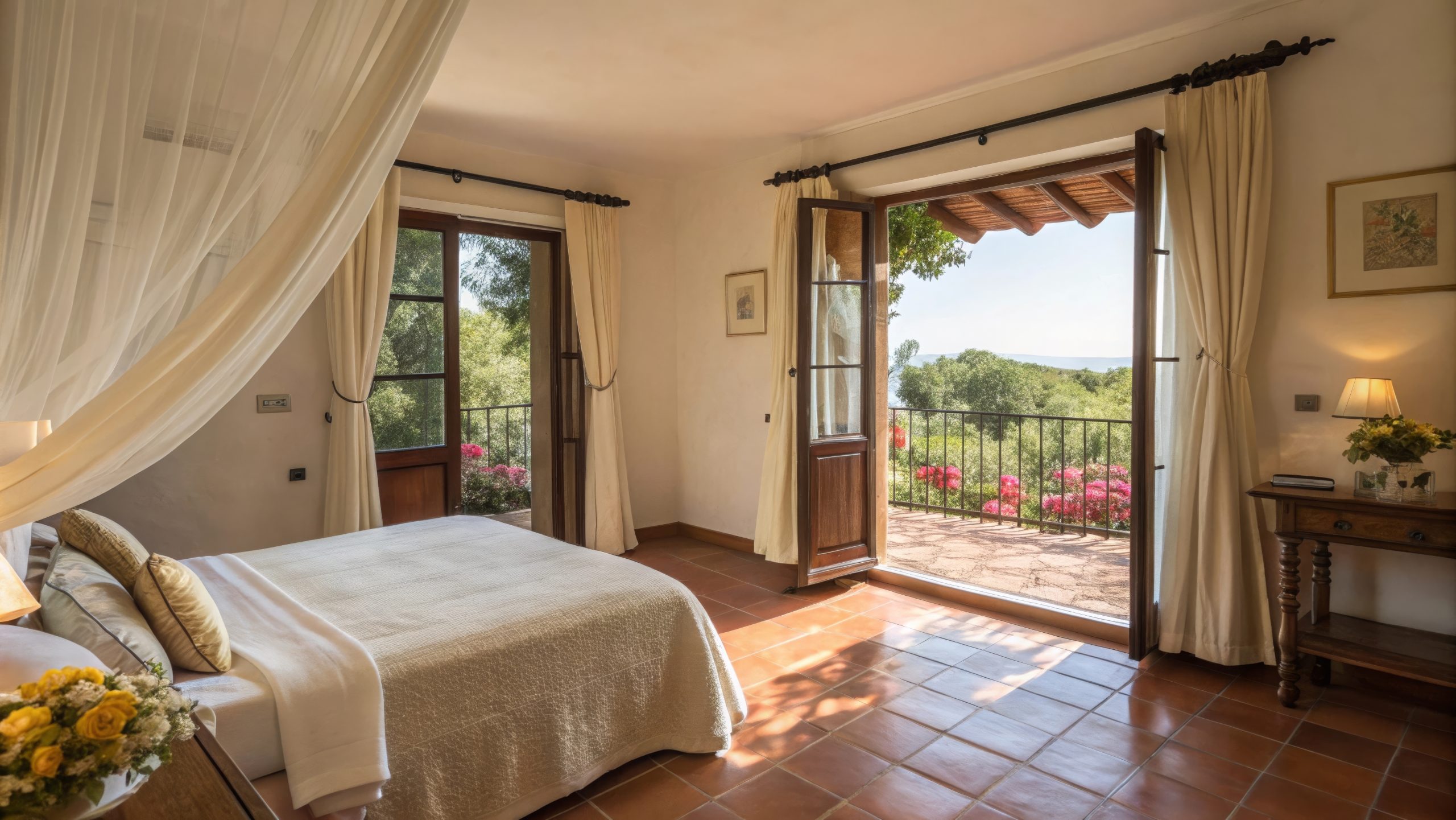
Architectural Elements:
- Stucco walls
- Arched windows
- Carved doors
- Exposed beams
- Tiled roofs
- Stone floors
- Column details
- Courtyard connections
Decorative Features:
- Colourful tiles
- Pottery and urns
- Iron light fixtures
- Fountain features
- Mediterranean art
- Ceramic plates
- Fresh herbs
- Olive trees
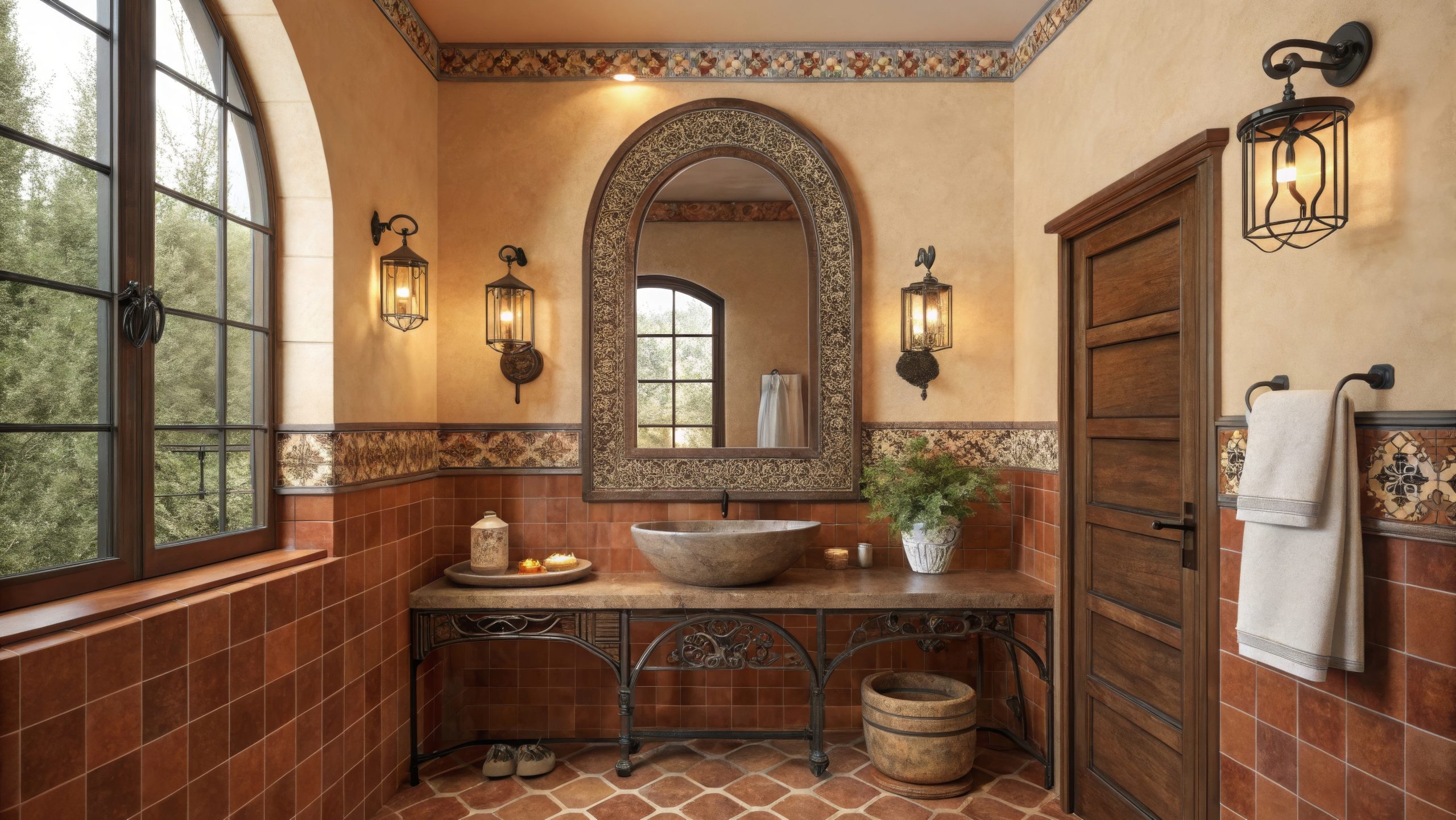
Space Planning:
Mediterranean homes emphasise:
- Flow between spaces
- Outdoor living areas
- Formal dining spaces
- Gathering spots
- Kitchen as a focal point
- Courtyard access
- Natural light
- View maximisation
Creating Authenticity:
Essential elements for true Mediterranean style:
- Use genuine materials
- Include water features
- Embrace outdoor living
- Add handcrafted touches
- Include local materials
- Create gathering spaces
- Incorporate plants
- Focus on natural light
Rustic & Farmhouse Styles
Let’s explore styles that celebrate natural materials, simplicity, and a connection to rural living.
15. Rustic
Among our 22 different interior design styles, Rustic design stands out for its raw authenticity. This style is about celebrating nature in its most honest form.
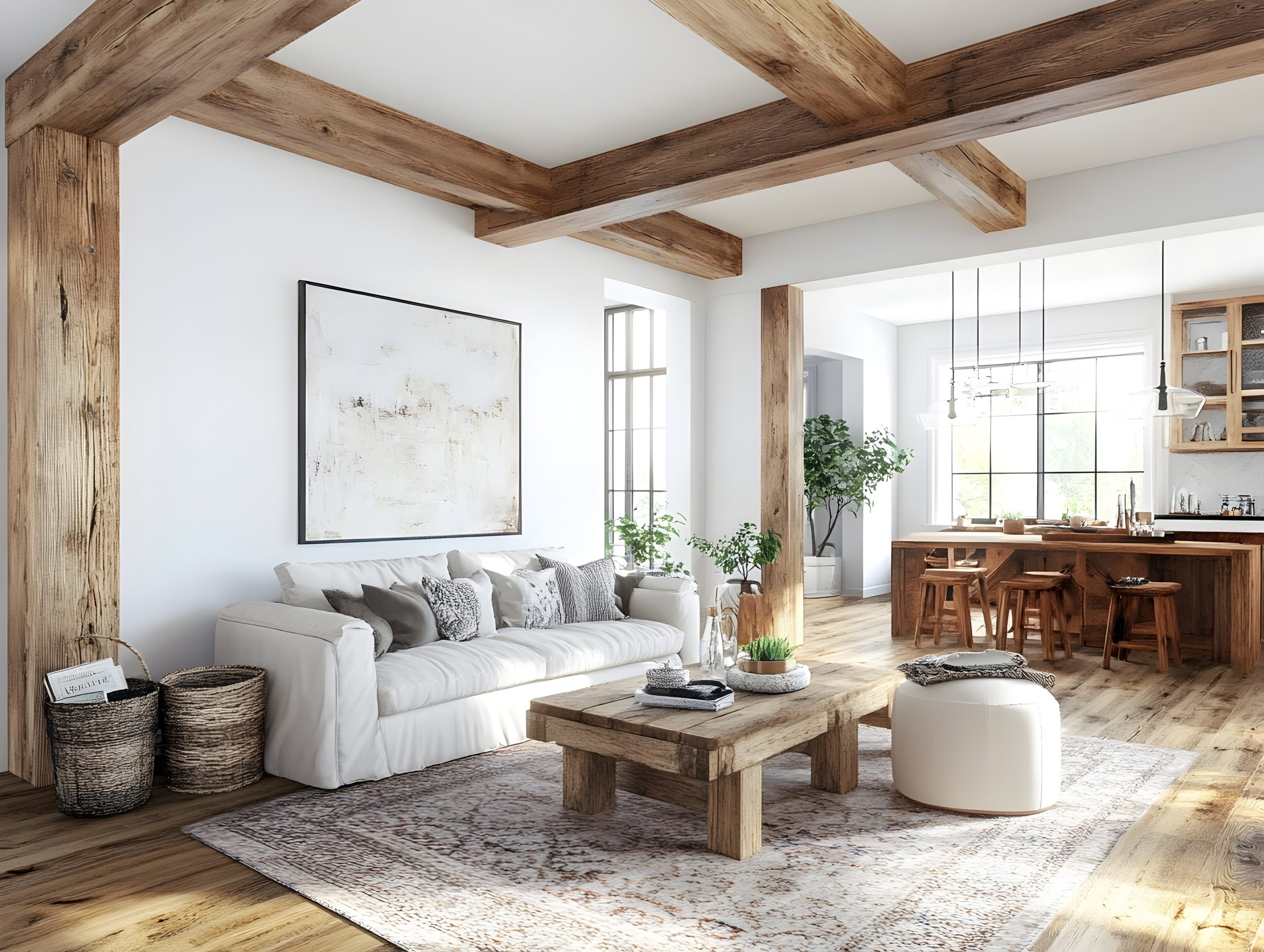
What makes Rustic style special is its ability to bring the outdoors in while creating spaces that feel both grounding and cosy. Think of it as living in harmony with nature, where every material tells a story and imperfections are celebrated rather than hidden.
Key Characteristics:
- Natural materials
- Rough textures
- Exposed beams
- Stone elements
- Weathered wood
- Organic shapes
- Hand-crafted items
- Natural colour schemes
Colour Palettes: Rustic design draws from nature’s own palette
Primary Colours:
- Wood browns
- Stone grays
- Forest greens
- Earth tones
- Warm whites
Accent Colours:
- Deep reds
- Hunter green
- Charcoal
- Leather brown
- Copper tones
Materials That Define the Style:
- Reclaimed wood
- Natural stone
- Rough-hewn beams
- Raw metals
- Leather
- Burlap
- Wool
- Branch elements
Pro Tip: When designing rustic spaces, remember that authenticity is everything. One genuine piece of weathered wood furniture will add more character than an entire room of faux-distressed items.
Furniture Elements:
- Log furniture
- Live-edge tables
- Leather seating
- Wooden benches
- Iron bed frames
- Stone-based tables
- Handcrafted pieces
- Timber storage
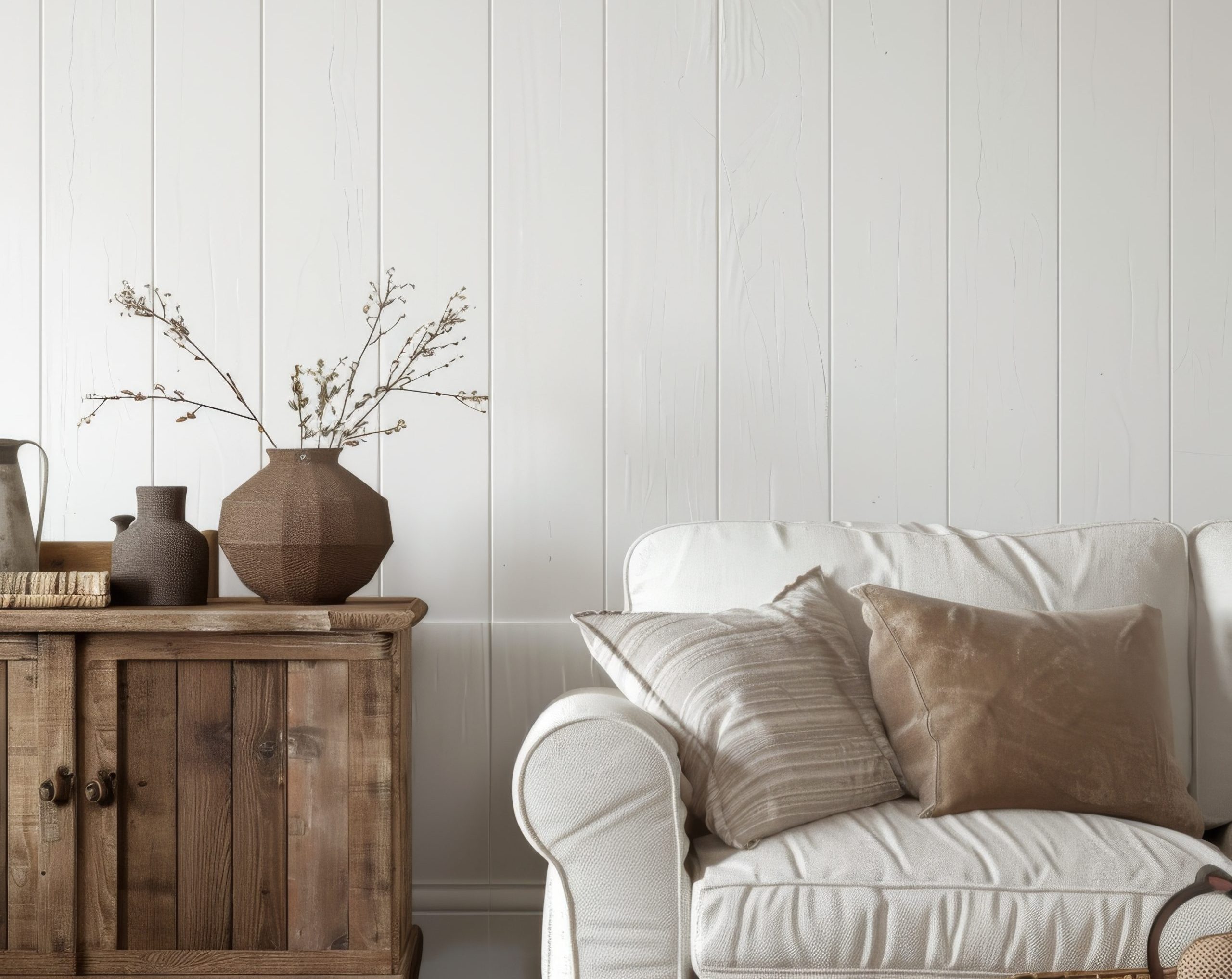
Architectural Features:
- Exposed ceiling beams
- Stone fireplaces
- Wood-planked walls
- Rough-hewn columns
- Natural floors
- Timber framing
- Wide plank flooring
- Stone accents
Styling Elements:
- Antlers
- Woven baskets
- Iron hardware
- Vintage tools
- Natural textiles
- Handwoven rugs
- Ceramic pottery
- Native plants
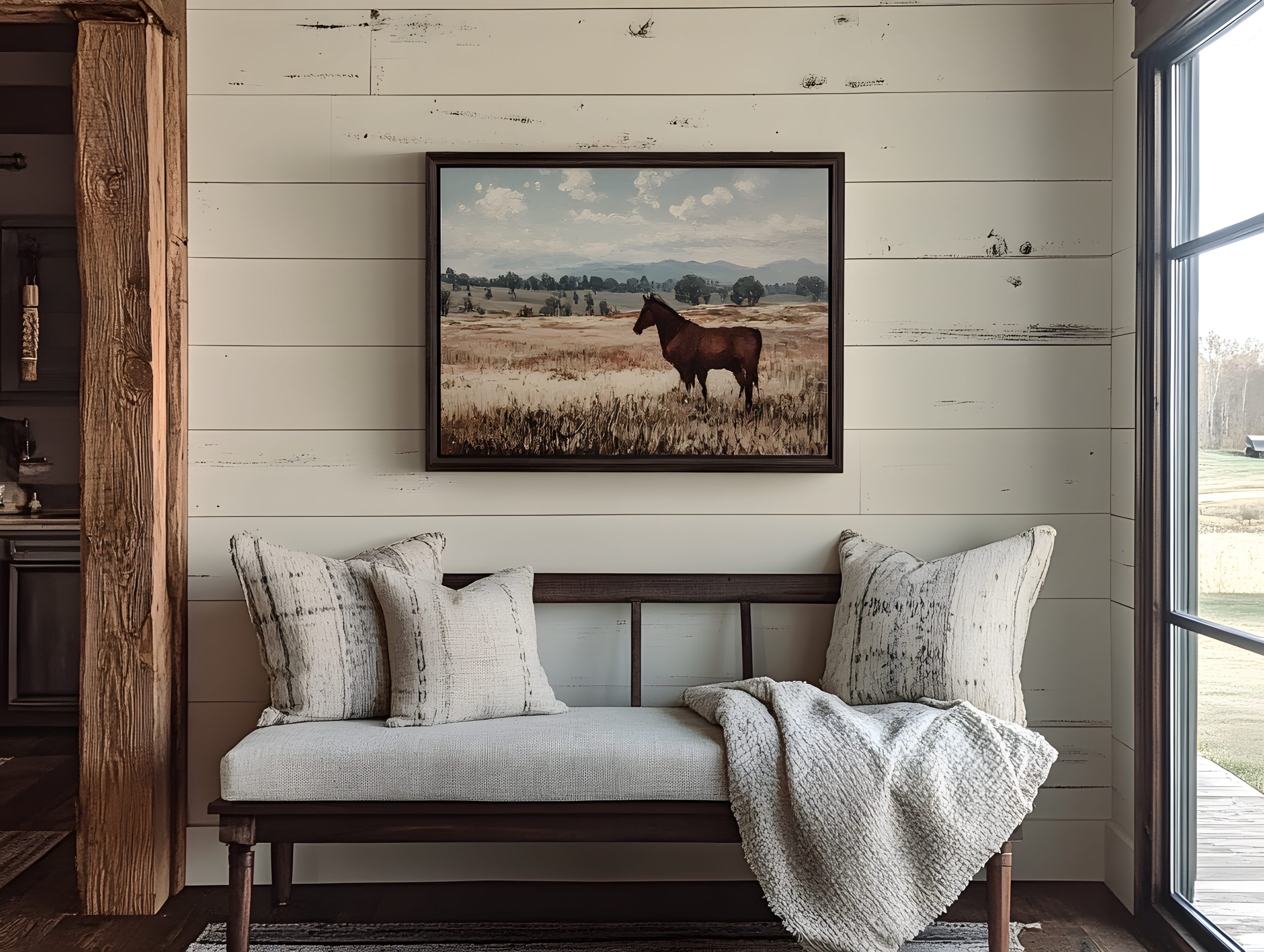
16. Modern Farmhouse
One of the most popular of our 22 different interior design styles today is Modern Farmhouse. This style perfectly balances rustic charm with contemporary convenience, and that’s exactly why people love it.
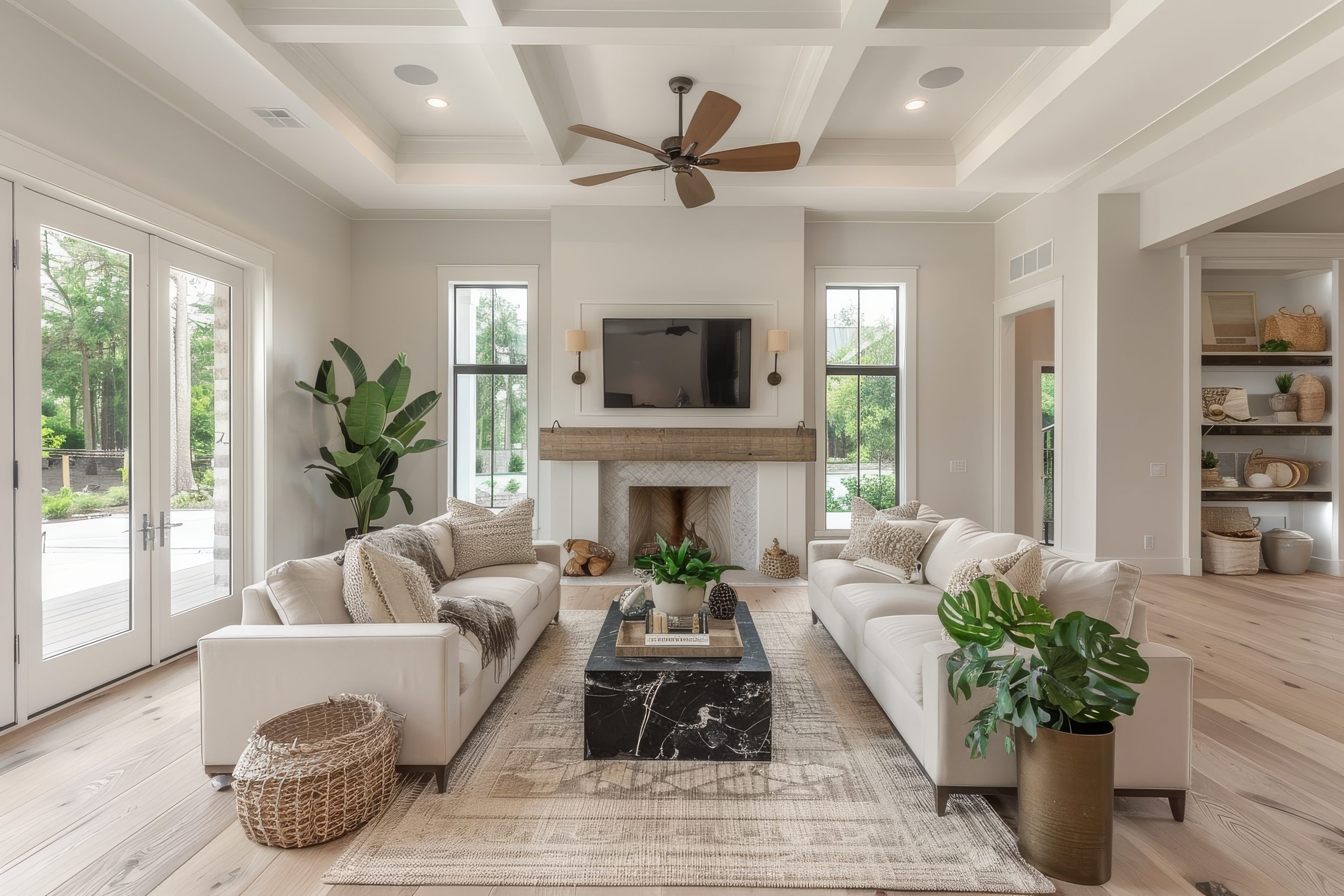
What makes Modern Farmhouse special is its ability to combine the comfort and warmth of traditional farmhouse style with clean, modern elements. Think of it as taking the best of country living and updating it for today’s lifestyle – comfortable but never cluttered, rustic but never rough.
Key Characteristics:
- Clean lines with rustic touches
- Shiplap walls
- Mixed metals
- Industrial accents
- Natural textures
- Neutral colour palette
- Vintage elements
- Modern conveniences
Colour Palettes: Modern Farmhouse embraces a refined neutral palette
Primary Colours:
- Crisp whites
- Warm greys
- Soft blacks
- Creamy neutrals
- Natural wood tones
Accent Colours:
- Navy blue
- Sage green
- Iron black
- Aged brass
- Weathered bronze
Materials That Define the Style:
- Painted wood
- Wrought iron
- Galvanized metal
- Natural fibers
- Cotton
- Linen
- Stone
- Aged brass
Pro Tip: When designing Modern Farmhouse spaces, remember that restraint is key. You want to suggest farmhouse living without creating a country theme park.
Furniture Elements:
- Slipcovered sofas
- Windsor chairs
- Industrial lighting
- Farmhouse tables
- Metal bed frames
- Open shelving
- Storage ottomans
- X-back chairs
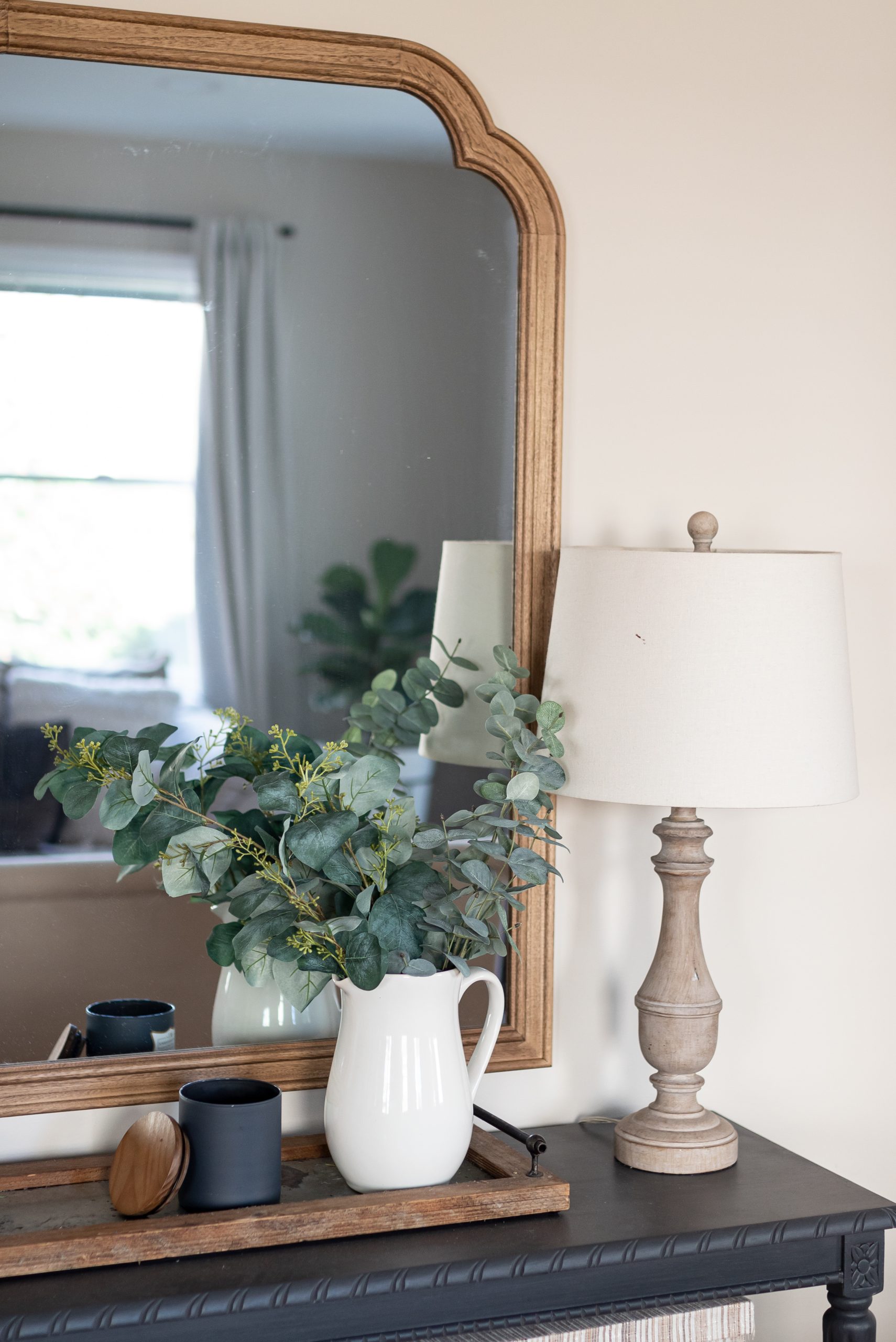
Signature Elements:
- Apron sinks
- Barn doors
- Industrial lighting
- Open shelving
- Vintage signs
- Woven baskets
- Metal hardware
- Natural textiles
Space Planning:
Modern Farmhouse spaces emphasise:
- Open concept living
- Gathering spaces
- Functional kitchens
- Mudroom areas
- Indoor-outdoor flow
- Family-friendly layouts
- Entertainment zones
- Practical storage
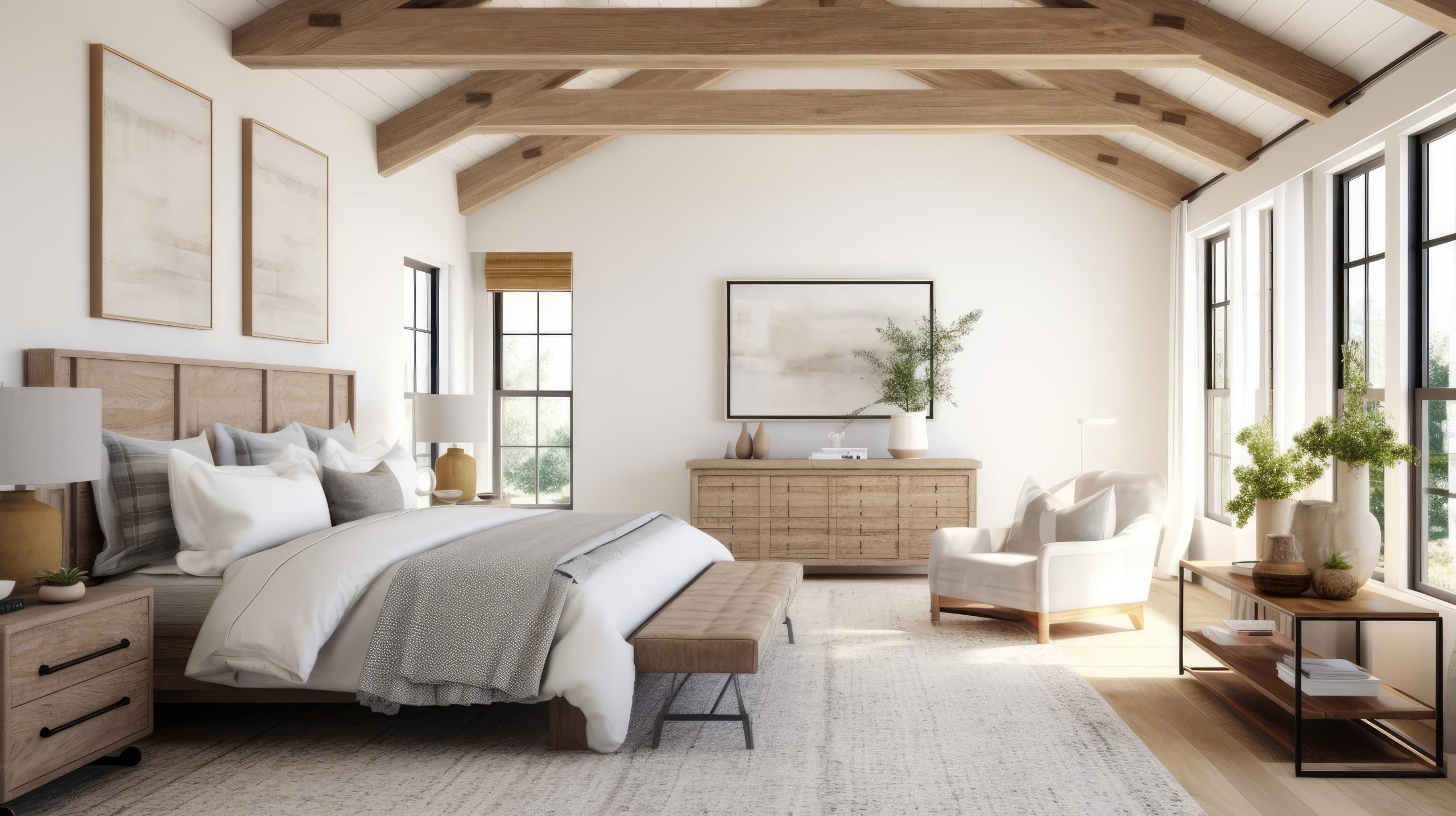
Design Details:
Essential elements include:
- Board and batten
- Shiplap walls
- Exposed beams
- Industrial hardware
- Mixed metals
- Natural wood accents
- Vintage touches
- Modern appliances
Styling Guidelines:
- Mix old and new pieces
- Layer textures thoughtfully
- Keep accessories minimal
- Include natural elements
- Add industrial touches
- Maintain clean lines
- Incorporate vintage finds
- Focus on functionality
Art Deco & Transitional Styles
Let’s explore styles that either celebrate glamorous sophistication or masterfully blend different design elements.
17. Art Deco
Among our 22 different interior design styles, Art Deco stands out for its unabashed glamour and geometric precision. This style is about celebrating luxury, modernity, and artistic expression in its boldest form.
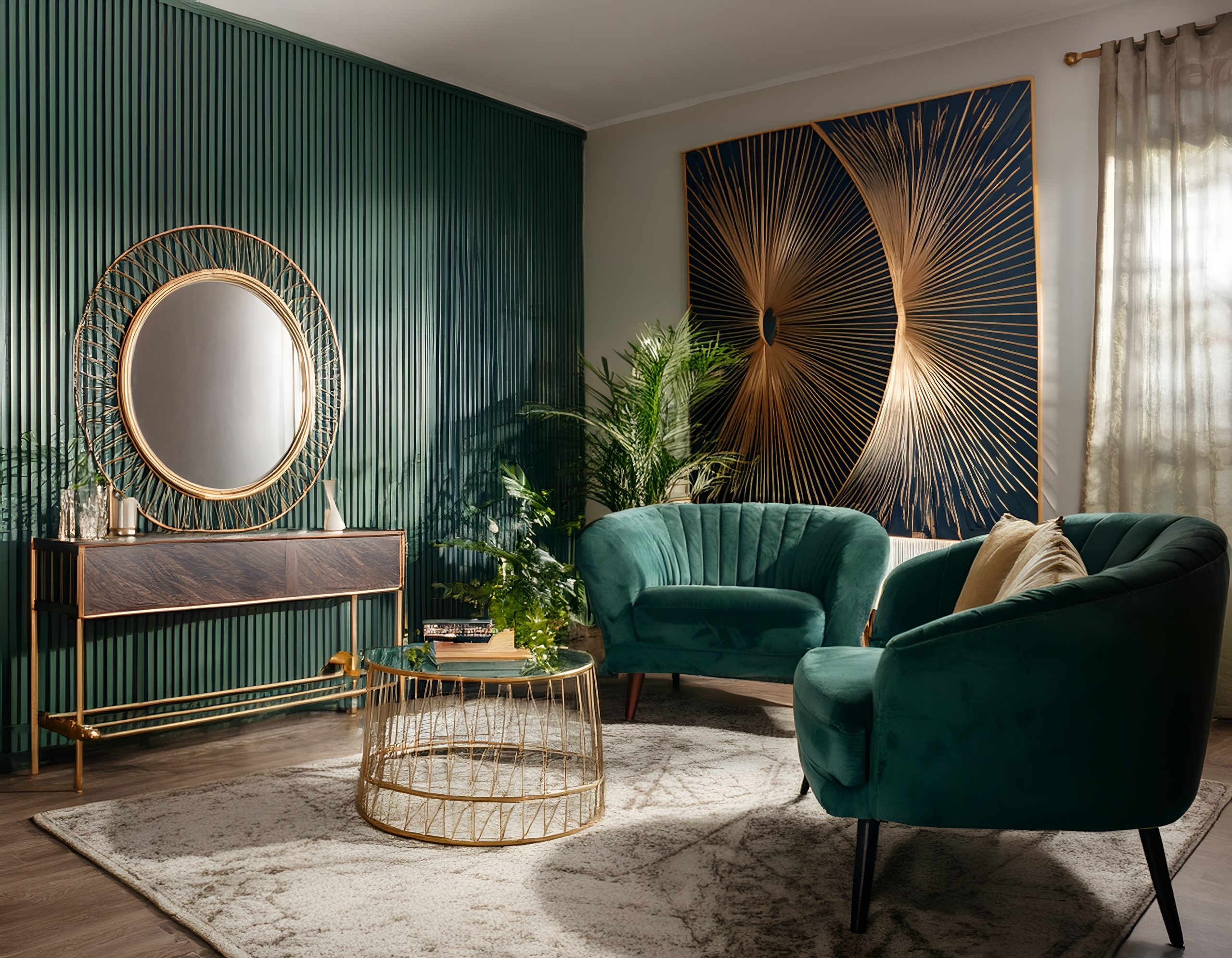
What makes Art Deco special is its perfect balance of sophistication and drama. Born in the 1920s and 1930s, this style represents the height of pre-war elegance. Think of it as the Great Gatsby of interior design – bold, confident, and unapologetically luxurious.
Key Characteristics:
- Bold geometric patterns
- Symmetrical designs
- Stepped forms
- Sunburst motifs
- High-gloss finishes
- Luxurious materials
- Strong vertical lines
- Dramatic lighting
Colour Palettes: Art Deco embraces bold, dramatic colours
Primary Colours:
- Black and white
- Gold
- Silver
- Deep greens
- Rich blues
Accent Colours:
- Ruby red
- Emerald green
- Sapphire blue
- Bronze
- Pearl white
Materials That Define the Style:
- Polished stone
- Chrome
- Brass
- Mirror
- Glass
- Exotic woods
- Lacquer
- Velvet
Pro Tip: When designing Art Deco spaces, remember that each piece should feel like a work of art. This style is about making statements, not playing it safe.
Furniture Elements:
- Curved club chairs
- Streamlined sofas
- Mirrored furniture
- Chrome-based tables
- Geometric cabinets
- High-gloss sideboards
- Built-in shelving
- Statement seating
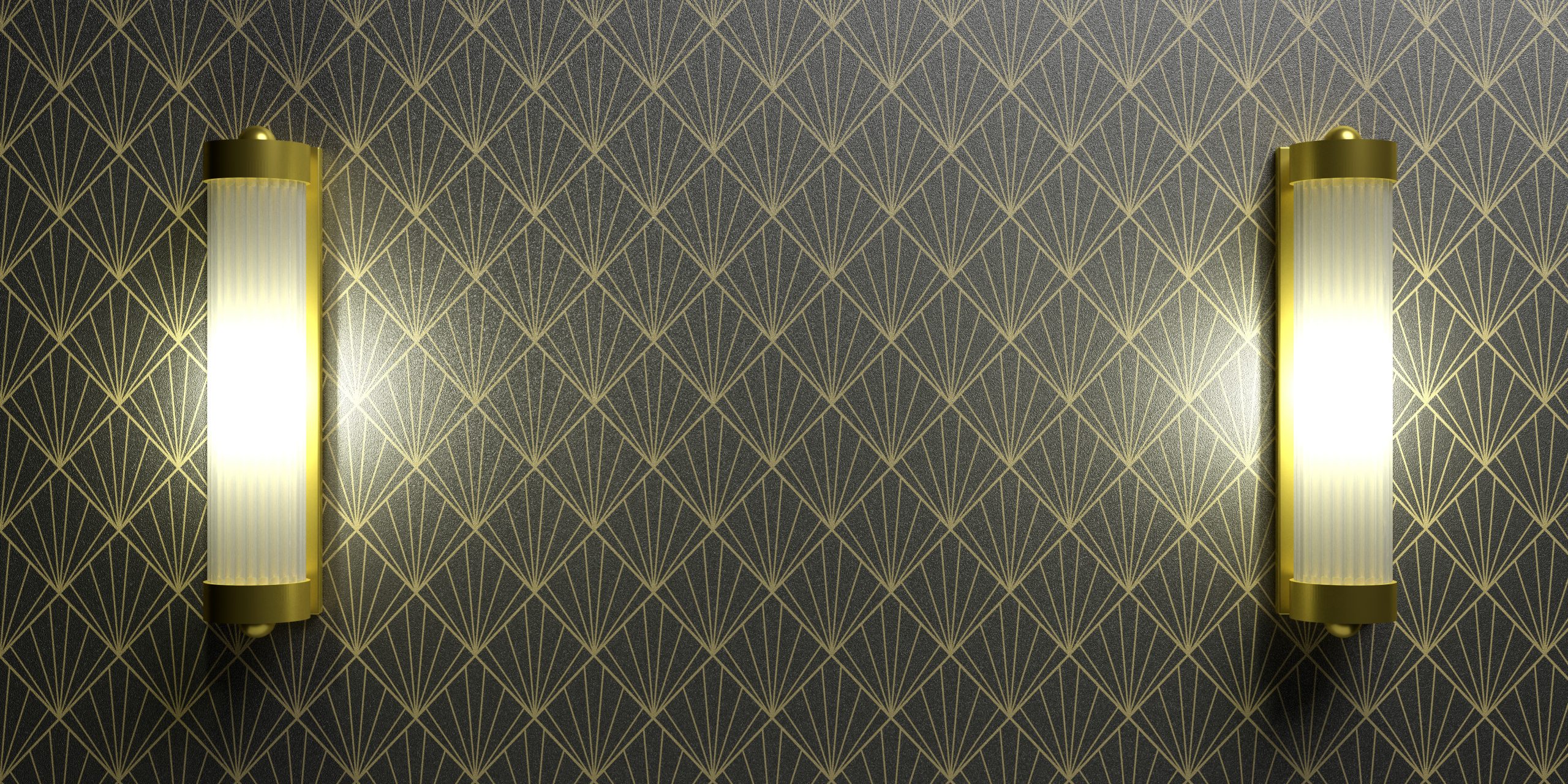
Decorative Features:
- Tiered chandeliers
- Wall sconces
- Geometric mirrors
- Abstract statuary
- Zigzag patterns
- Fan motifs
- Exotic animal prints
- Metallic sculptures
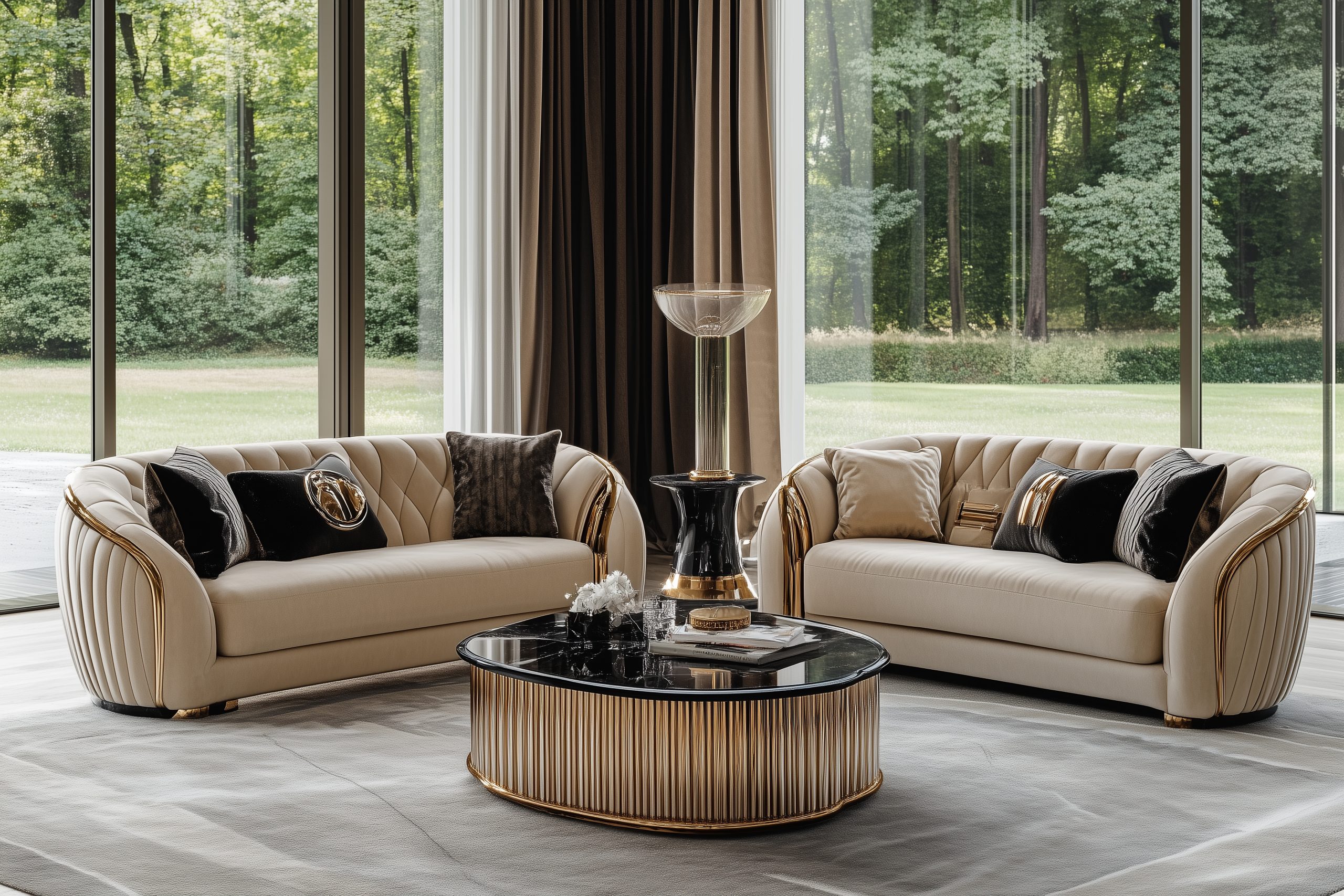
18. Transitional
Let’s explore Transitional style – one of the most versatile of our 22 different interior design styles. This style is perfect for those who appreciate both traditional and contemporary design but don’t want to commit fully to either.
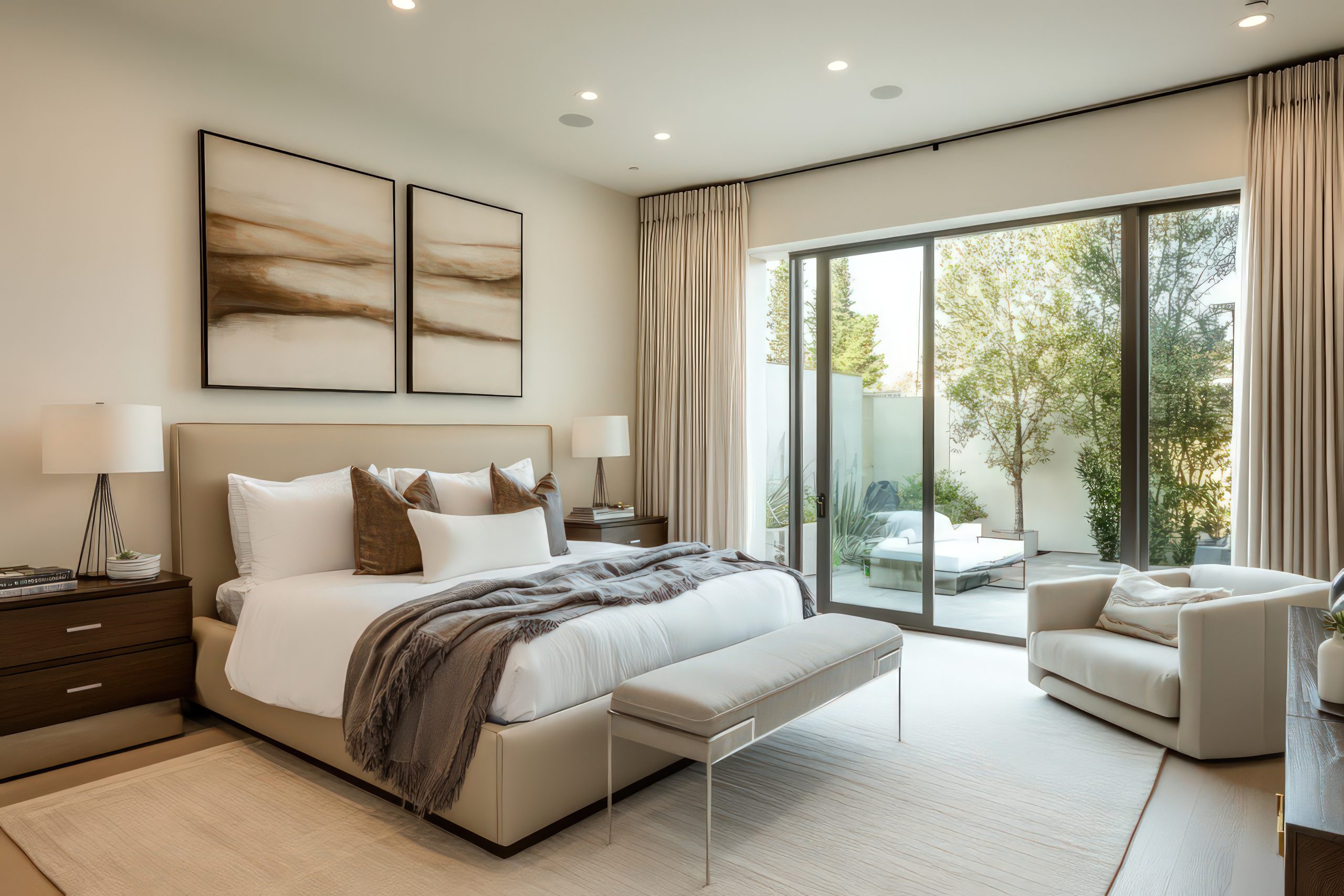
What makes Transitional style special is its ability to bridge different design eras and aesthetics. Think of it as the diplomatic mediator of interior design – it brings peace between traditional and contemporary elements, creating spaces that feel both timeless and current.
Key Characteristics:
- Balance of traditional and modern
- Clean lines with classic details
- Neutral colour palette
- Sophisticated textures
- Updated classics
- Comfortable elegance
- Refined scale
- Minimal accessories
Colour Palettes: Transitional design favours refined neutrals
Primary Colours:
- Warm greys
- Soft whites
- Rich creams
- Gentle taupes
- Subtle beiges
Accent Colours:
- Navy blue
- Chocolate brown
- Slate grey
- Muted gold
- Soft black
Materials That Define the Style:
- Polished woods
- Textured fabrics
- Leather
- Glass
- Nickel
- Bronze
- Marble
- Linen
Pro Tip: When designing transitional spaces, focus on texture rather than pattern. This style is about creating interest through layered materials rather than bold prints.
Furniture Elements:
- Clean-lined sofas
- Updated wing chairs
- Glass-top tables
- Tailored upholstery
- Modern case goods
- Traditional silhouettes
- Neutral ottomans
- Refined storage pieces
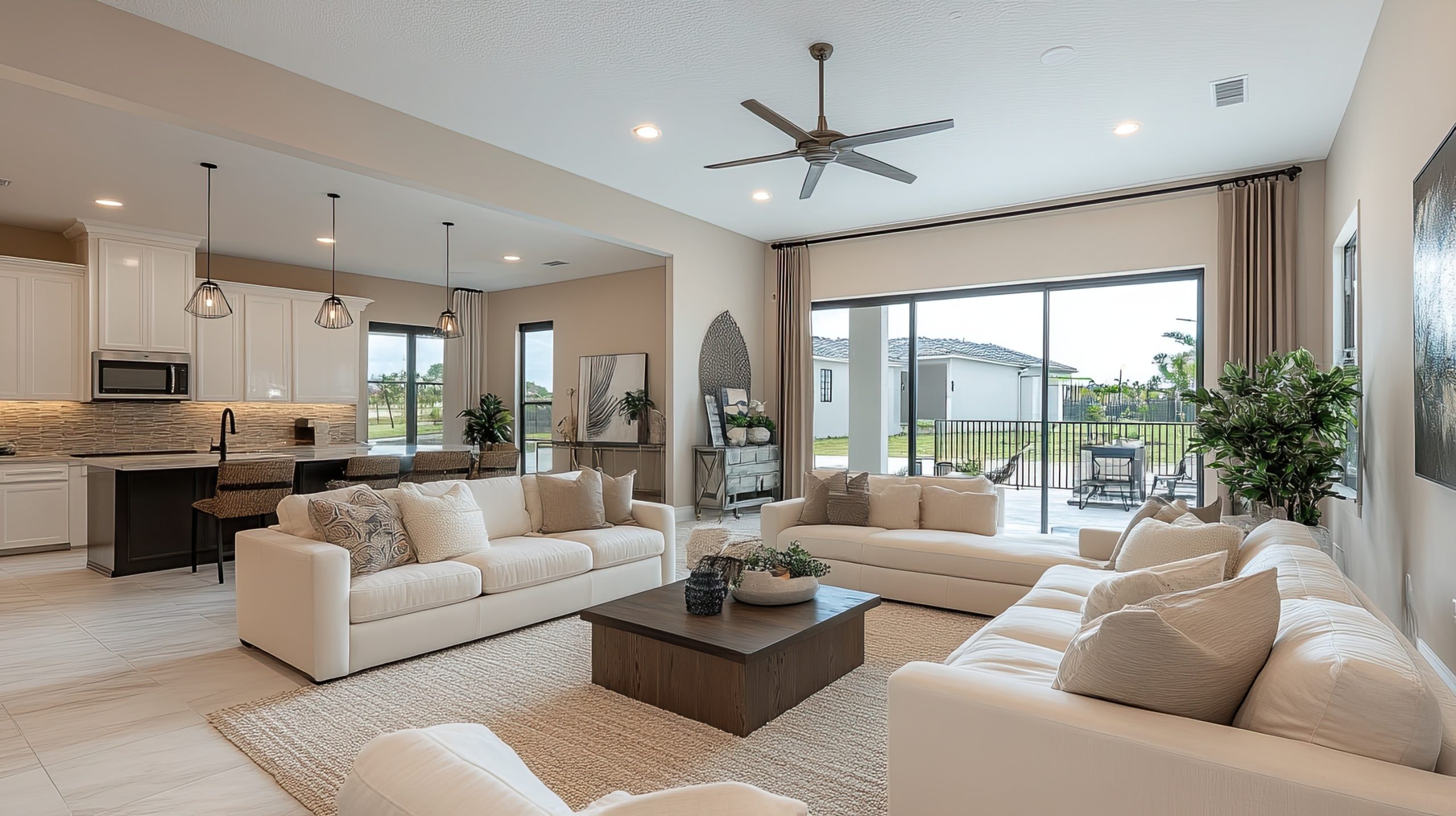
Balance Points:
Key areas where traditional meets modern:
- Curved furniture with straight lines
- Classic shapes in current fabrics
- Updated traditional lighting
- Modern art in traditional frames
- Clean-lined millwork
- Simplified traditional patterns
- Contemporary mirrors
- Mixed metal finishes
Space Planning:
Transitional spaces require:
- Balanced furniture groupings
- Conversation areas
- Clear traffic patterns
- Formal and casual zones
- Negative space
- Symmetrical layouts
- Functional flow
- Comfortable seating
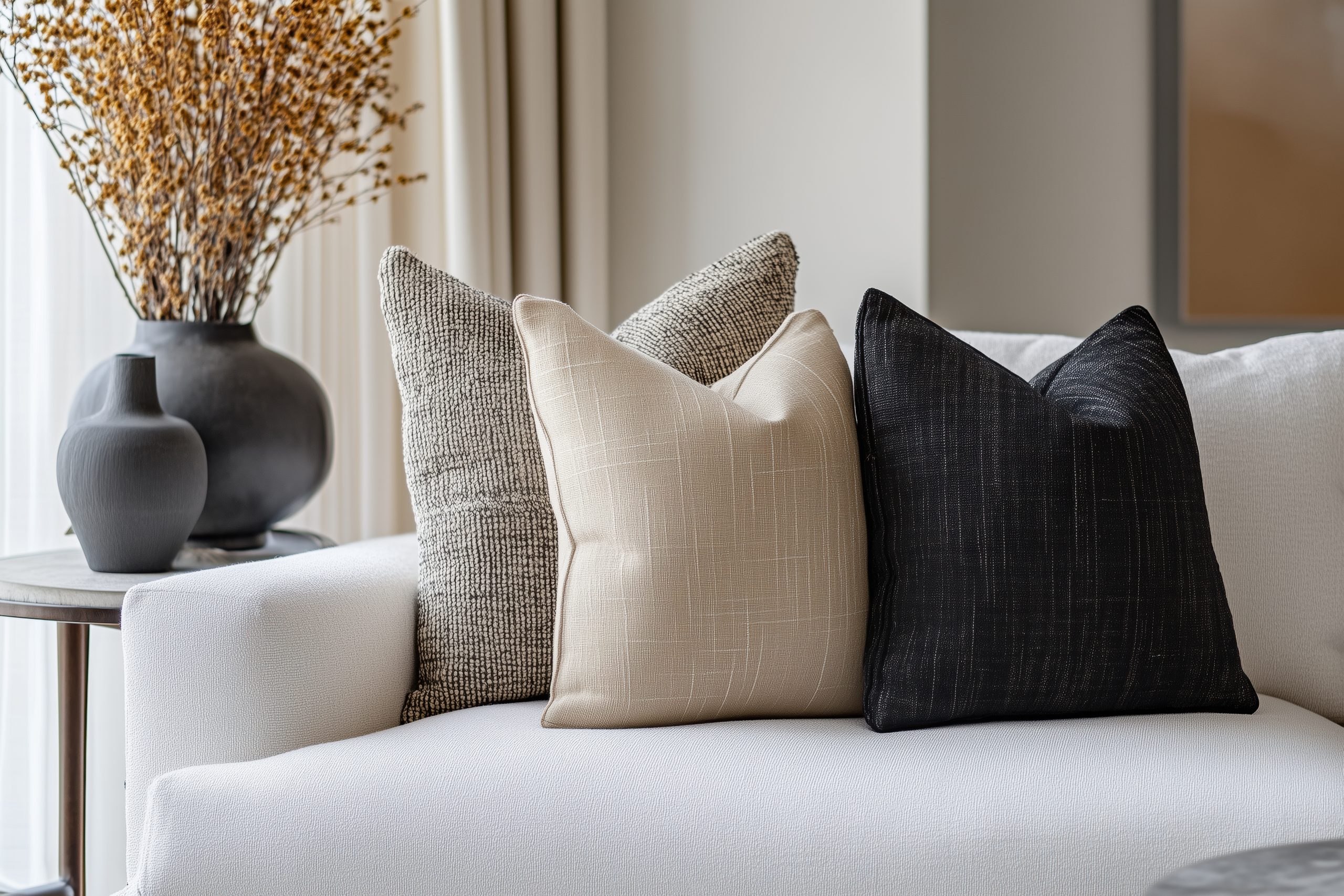
Styling Guidelines:
- Keep accessories minimal
- Focus on quality over quantity
- Mix furniture styles thoughtfully
- Layer textures carefully
- Maintain clean lines
- Include traditional touches
- Add modern elements
- Create visual balance
Common Mistakes to Avoid:
- Over-accessorising
- Using too many patterns
- Mixing too many styles
- Forgetting about comfort
- Losing balance
- Including trendy pieces
Eclectic & Contemporary Craftsman Styles
Let’s explore styles that either celebrate creative mixing or honour traditional craftsmanship with a modern twist.
19. Eclectic
Among our 22 different interior design styles, Eclectic design offers the most creative freedom. This style is like being a DJ of interior design – it’s all about mixing different elements to create something uniquely harmonious.
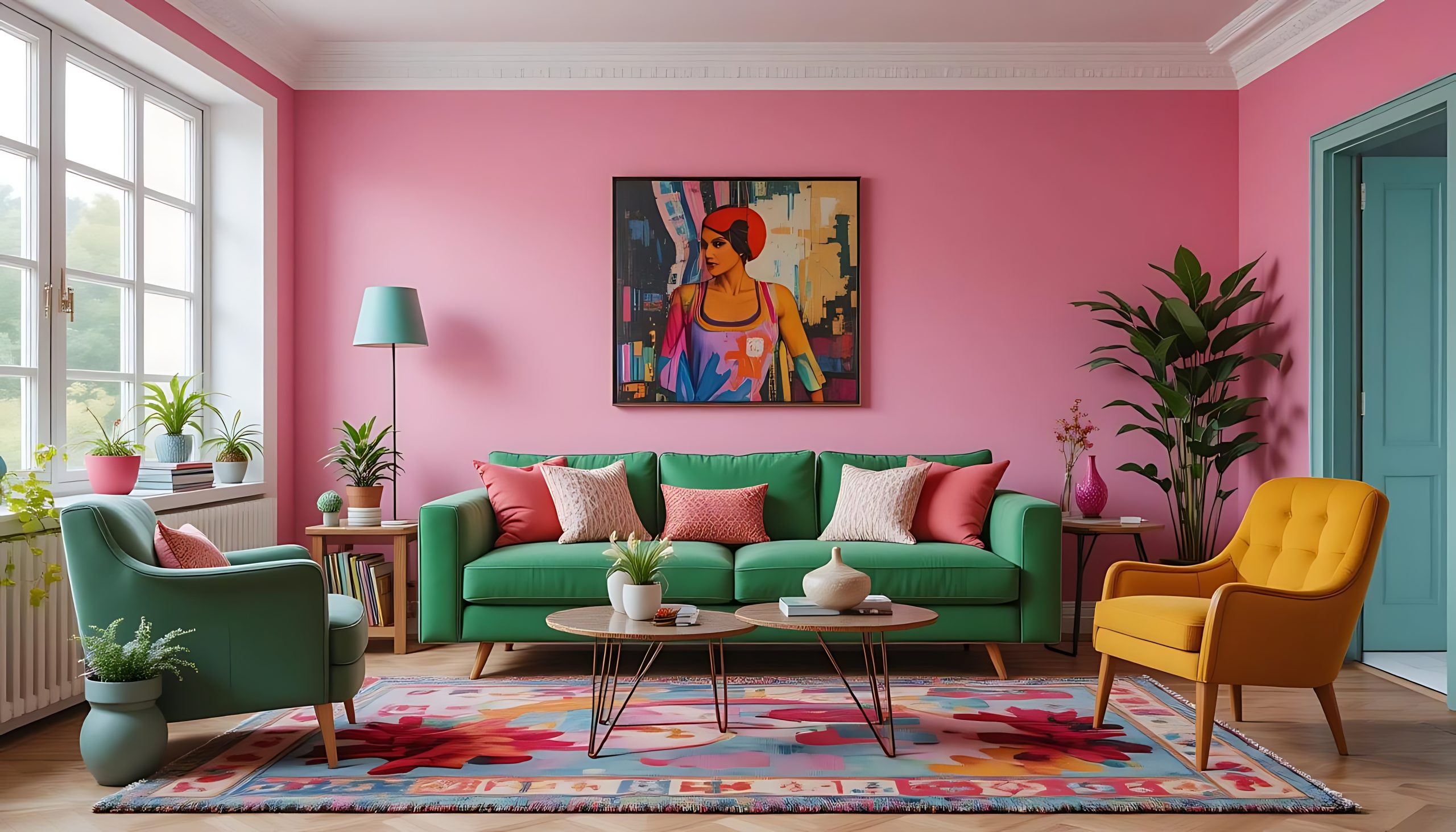
What makes Eclectic style special is its ability to combine different periods, styles, and textures while maintaining a cohesive look. Think of it as creating a beautiful symphony using instruments from different orchestras – it’s about finding harmony in diversity.
Key Characteristics:
- Mixed design elements
- Unexpected combinations
- Personal collections
- Varied textures
- Curated displays
- Multiple periods
- Artistic expression
- Thoughtful disorder
Colour Palettes: Eclectic style can embrace any colours, but typically includes
Primary Colours:
- Unifying base colour
- Rich neutrals
- Bold statement hues
- Earthy tones
- Dramatic darks
Accent Colours:
- Jewel tones
- Bright pops
- Metallic accents
- Unexpected combinations
- Personal favorites
Materials That Define the Style:
- Mixed woods
- Various metals
- Different textiles
- Glass
- Stone
- Ceramic
- Leather
- Unique finds
Pro Tip: When designing eclectic spaces, follow the 80/20 rule – 80% cohesion through colour or style, 20% surprise elements that make the space unique.
Furniture Elements:
- Different period pieces
- Statement seating
- Mixed dining chairs
- Diverse tables
- Unique storage
- Collected items
- Family heirlooms
- Modern classics
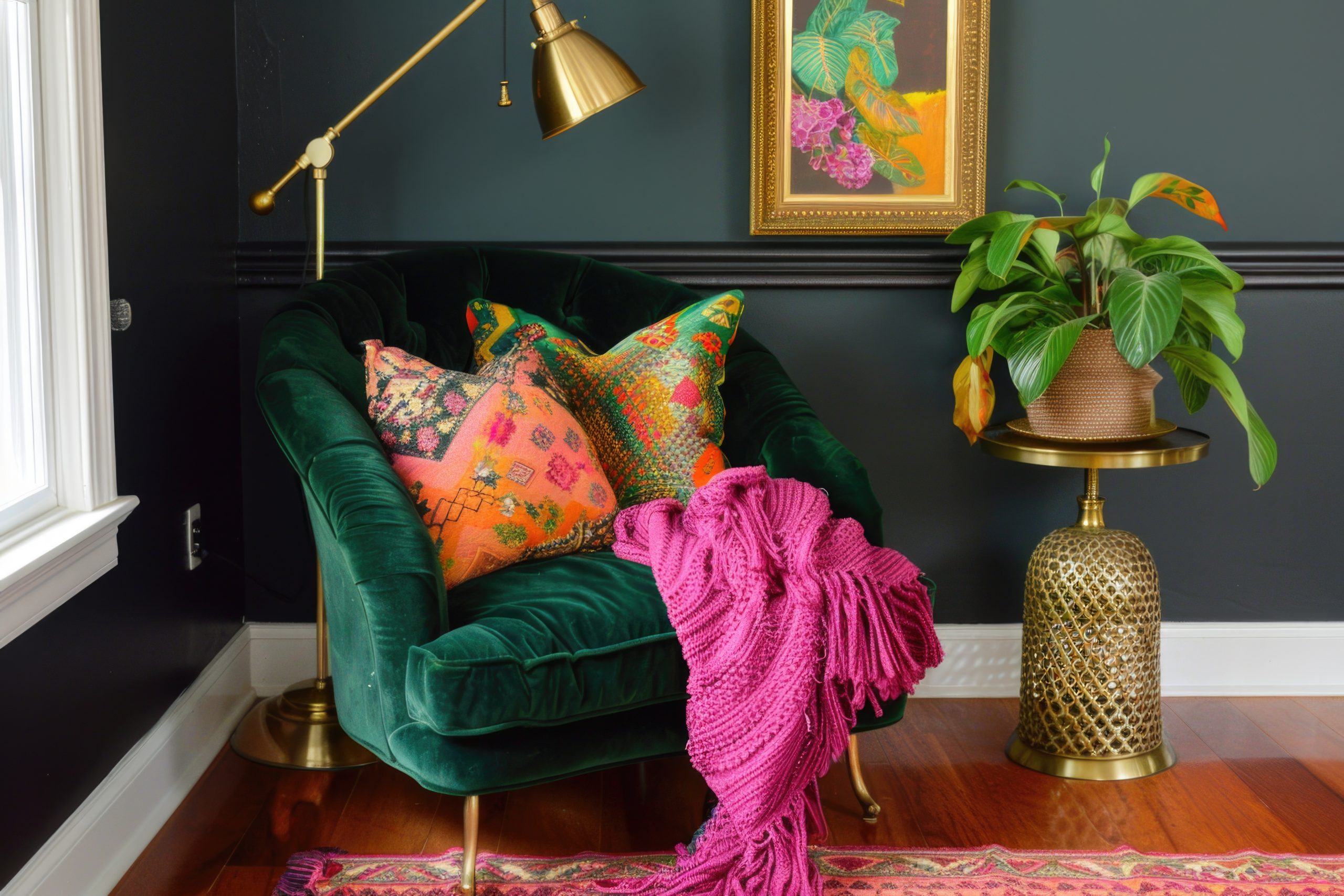
Pattern Play:
Guidelines for mixing patterns:
- Vary the scale
- Connect through colour
- Mix geometrics with organics
- Balance busy with simple
- Include texture patterns
- Combine old and new
- Layer thoughtfully
- Create rhythm
Space Planning:
Eclectic spaces need:
- Clear traffic patterns
- Defined zones
- Conversation areas
- Display spaces
- Focal points
- Balance points
- Visual breaks
- Personal corners
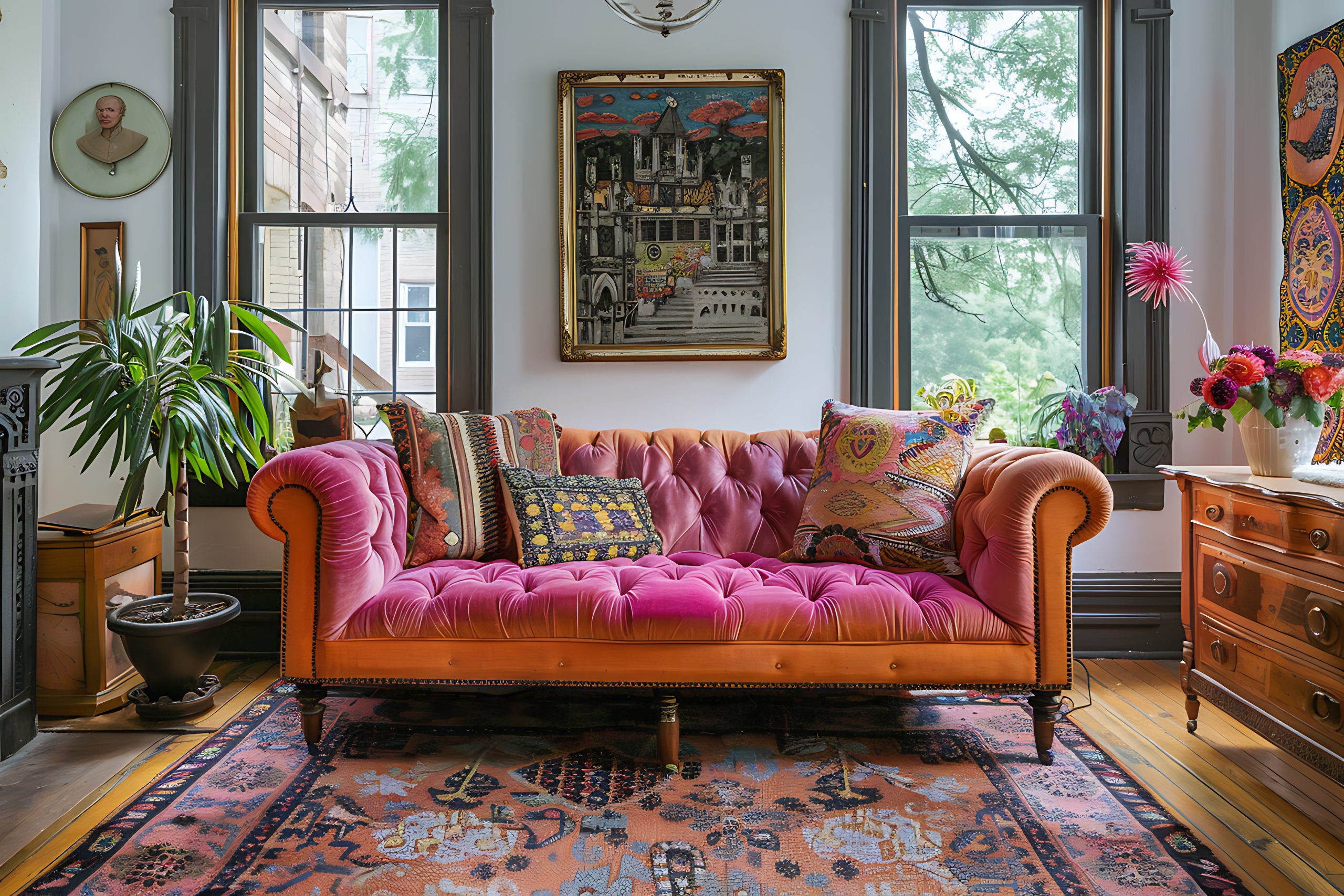
20. Contemporary Craftsman
As we continue exploring our 22 different interior design styles, let’s look at Contemporary Craftsman – a style that beautifully updates the traditional Arts and Crafts movement for modern living. This style perfectly balances historical charm with current functionality.
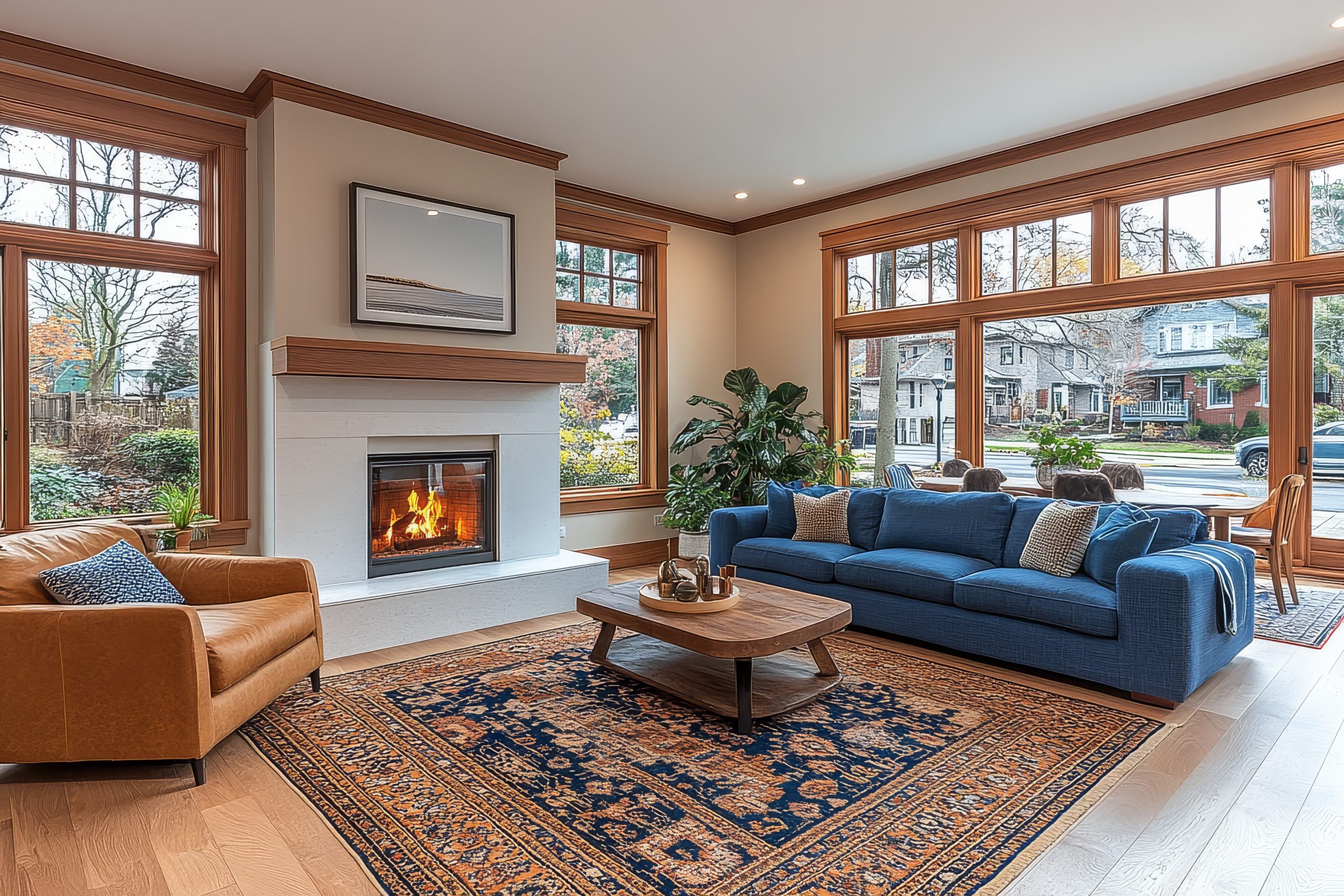
What makes Contemporary Craftsman special is its respect for handcrafted details while embracing modern conveniences. Think of it as taking the soul of the Arts and Crafts movement – quality craftsmanship and natural materials – and adapting it for 21st-century living.
Key Characteristics:
- Clean architectural lines
- Natural materials
- Handcrafted details
- Built-in features
- Wood accents
- Modern amenities
- Organic elements
- Quality craftsmanship
Colour Palettes: Contemporary Craftsman embraces nature-inspired colours
Primary Colours:
- Warm woods
- Earth tones
- Sage greens
- Deep browns
- Warm greys
Accent Colours:
- Copper red
- Forest green
- Navy blue
- Bronze
- Amber
Materials That Define the Style:
- Quarter-sawn oak
- Natural stone
- Hand-forged metal
- Ceramic tile
- Stained glass
- Copper
- Leather
- Linen
Pro Tip: When designing Contemporary Craftsman spaces, quality is everything. One well-crafted piece will add more character than multiple mass-produced items.
Furniture Elements:
- Clean-lined sofas
- Mission-style chairs
- Built-in cabinets
- Window seats
- Solid wood tables
- Storage benches
- Leather upholstery
- Modern interpretations
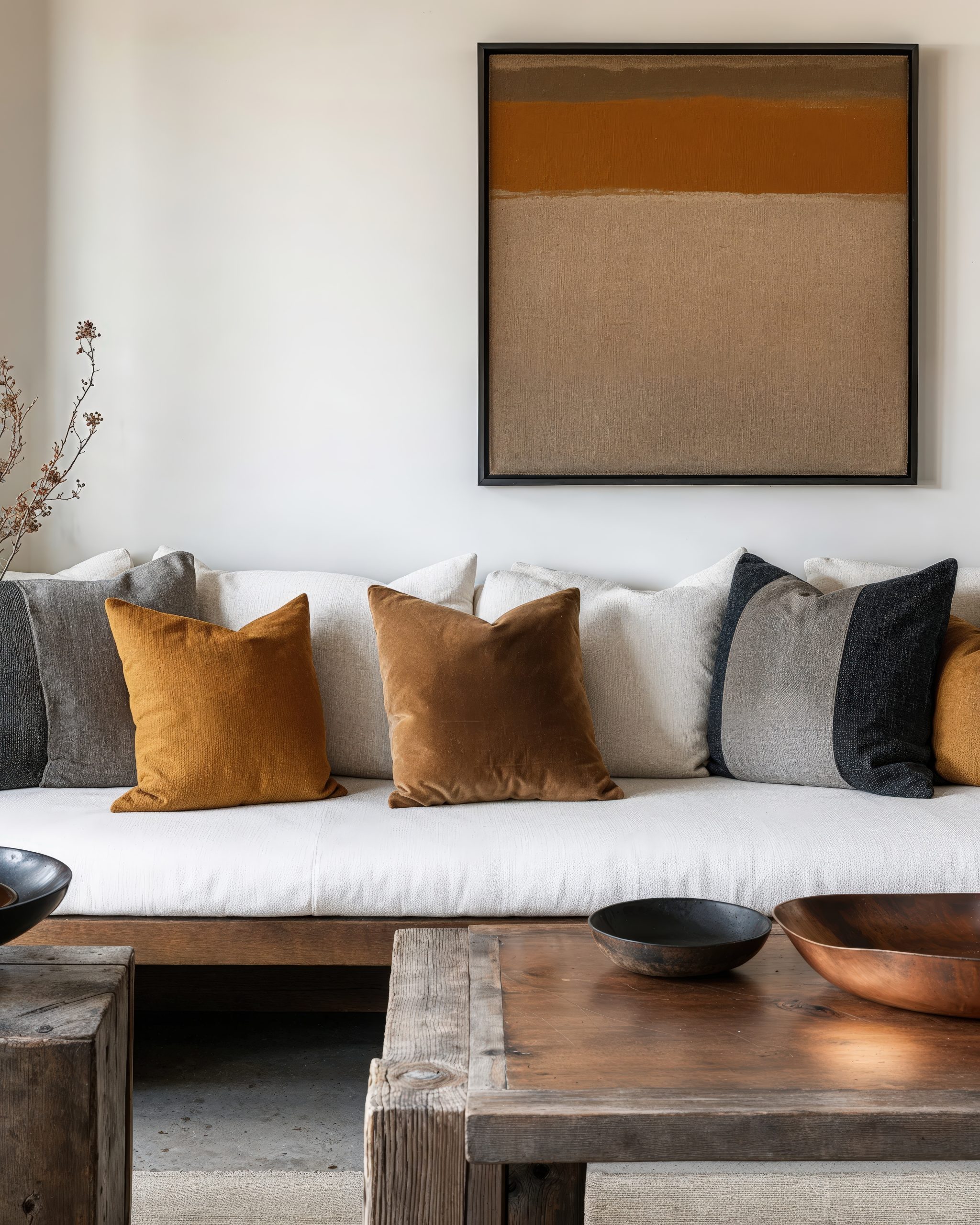
Architectural Details:
- Exposed beams
- Built-in bookcases
- Window trim
- Wainscoting
- Column details
- Modern light fixtures
- Updated hardware
- Glass accents
Design Elements:
Essential features include:
- Natural wood trim
- Geometric patterns
- Stained glass accents
- Metal hardware
- Updated lighting
- Modern technology
- Practical storage
- Indoor-outdoor connection
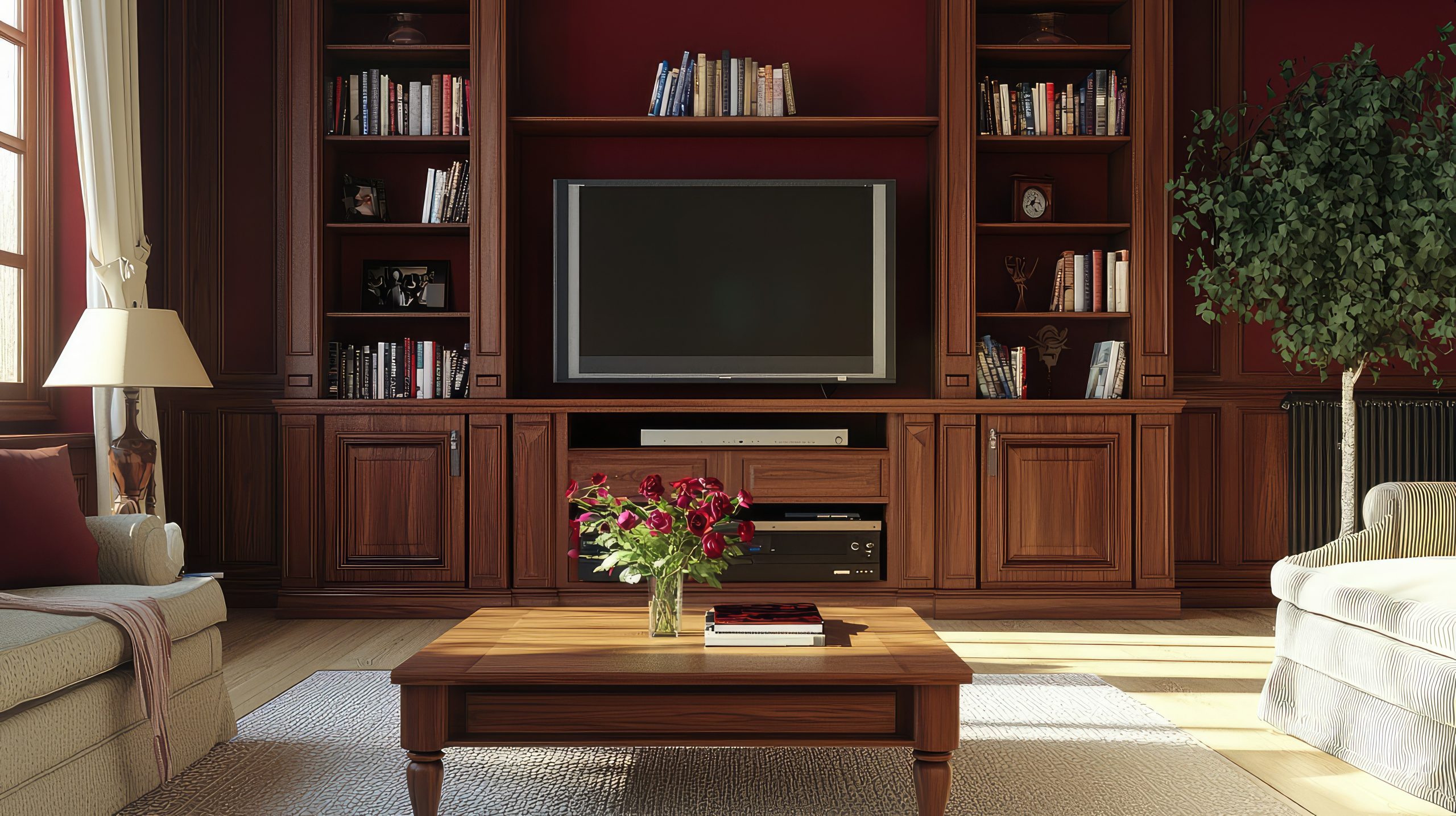
Space Planning:
Contemporary Craftsman spaces need:
- Open floor plans
- Defined rooms
- Built-in features
- Reading nooks
- Work spaces
- Gathering areas
- Connection to nature
- Modern functionality
Modern Interpretation:
How to update Craftsman style:
- Lighter wood tones
- Modern lighting
- Updated hardware
- Smart home features
- Contemporary fabrics
- Simplified details
- Open concept adaptation
- Modern amenities
21. Tropical
Moving through our 22 different interior design styles, let’s explore Tropical design – a style that brings the essence of paradise into everyday living. This style is about much more than just palm prints and bright colours.
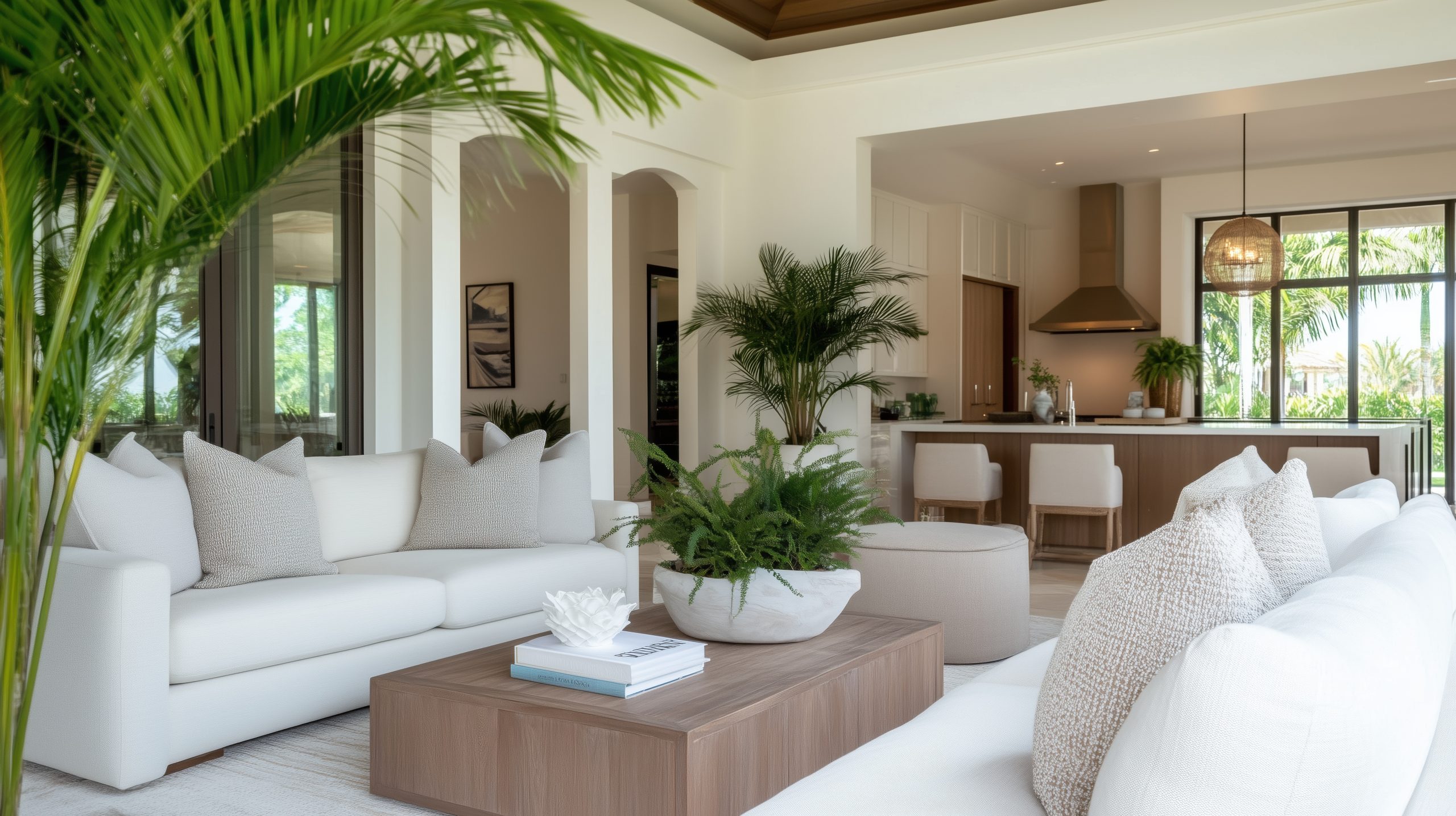
What makes Tropical style special is its ability to create a permanent vacation feeling while maintaining sophistication. Think of it as capturing the essence of a luxury island resort but making it completely livable for daily life.
Key Characteristics:
- Indoor-outdoor flow
- Natural materials
- Lush greenery
- Bright, natural light
- Bold patterns
- Relaxed atmosphere
- Resort-inspired elements
- Organic textures
Colour Palettes: Tropical design embraces nature’s vibrant colours
Primary Colours:
- Warm whites
- Ocean blues
- Leafy greens
- Sandy beiges
- Natural browns
Accent Colours:
- Coral pink
- Sunny yellow
- Bright orange
- Orchid purple
- Turquoise
Materials That Define the Style:
- Rattan
- Bamboo
- Wicker
- Natural fibers
- Teak wood
- Linen
- Cotton
- Jute
Pro Tip: When designing tropical spaces, I always tell clients that balance is key – you want that paradise feeling without turning your home into a theme park resort.
Furniture Elements:
- Rattan chairs
- Bamboo tables
- Upholstered pieces
- Wooden ceiling fans
- Outdoor-inspired seating
- Plantation chairs
- Woven furniture
- Natural wood pieces
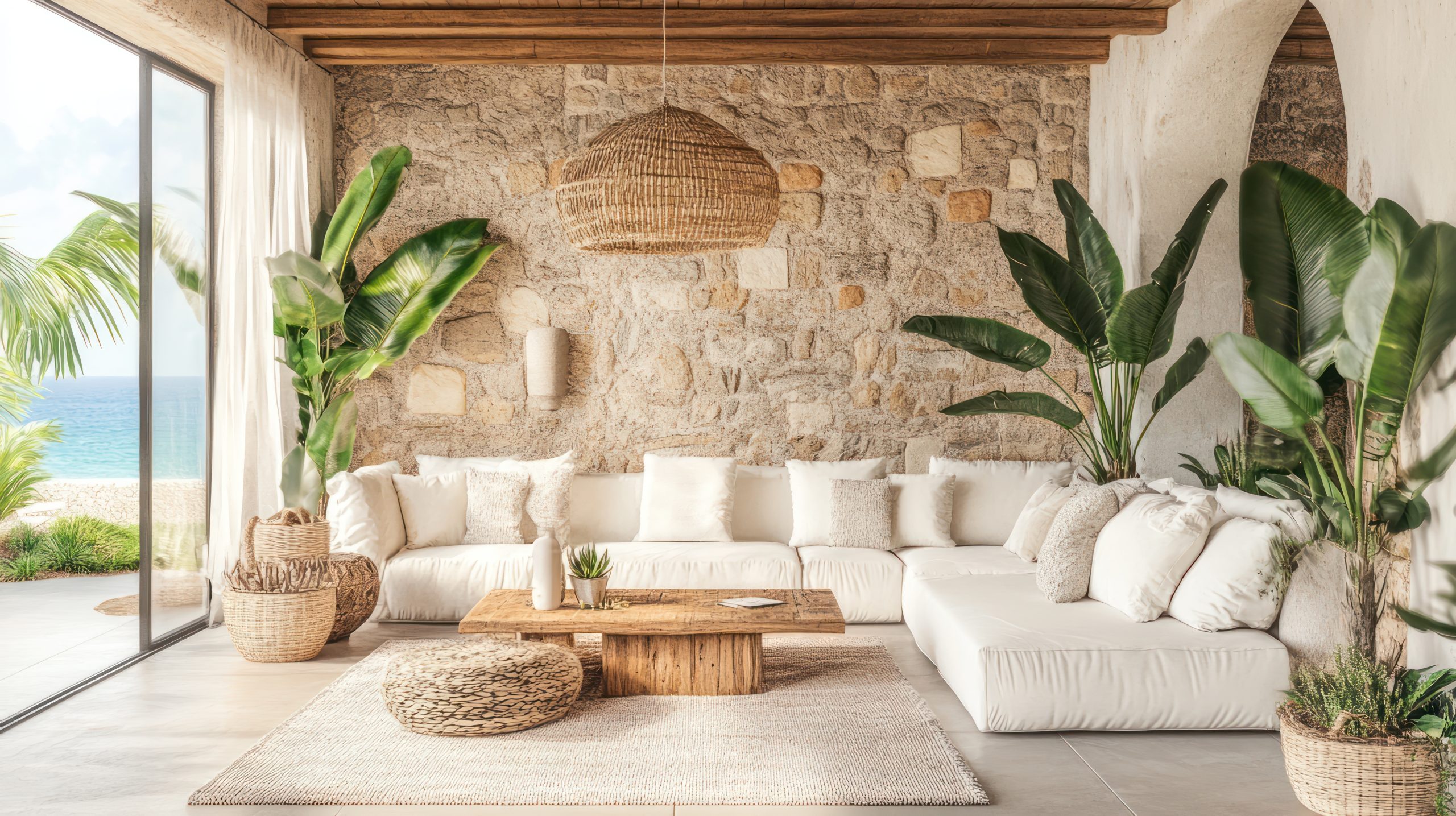
Pattern Play:
Signature tropical patterns:
- Palm leaves
- Botanical prints
- Animal prints
- Tribal motifs
- Geometric patterns
- Natural textures
- Floral designs
- Island-inspired motifs
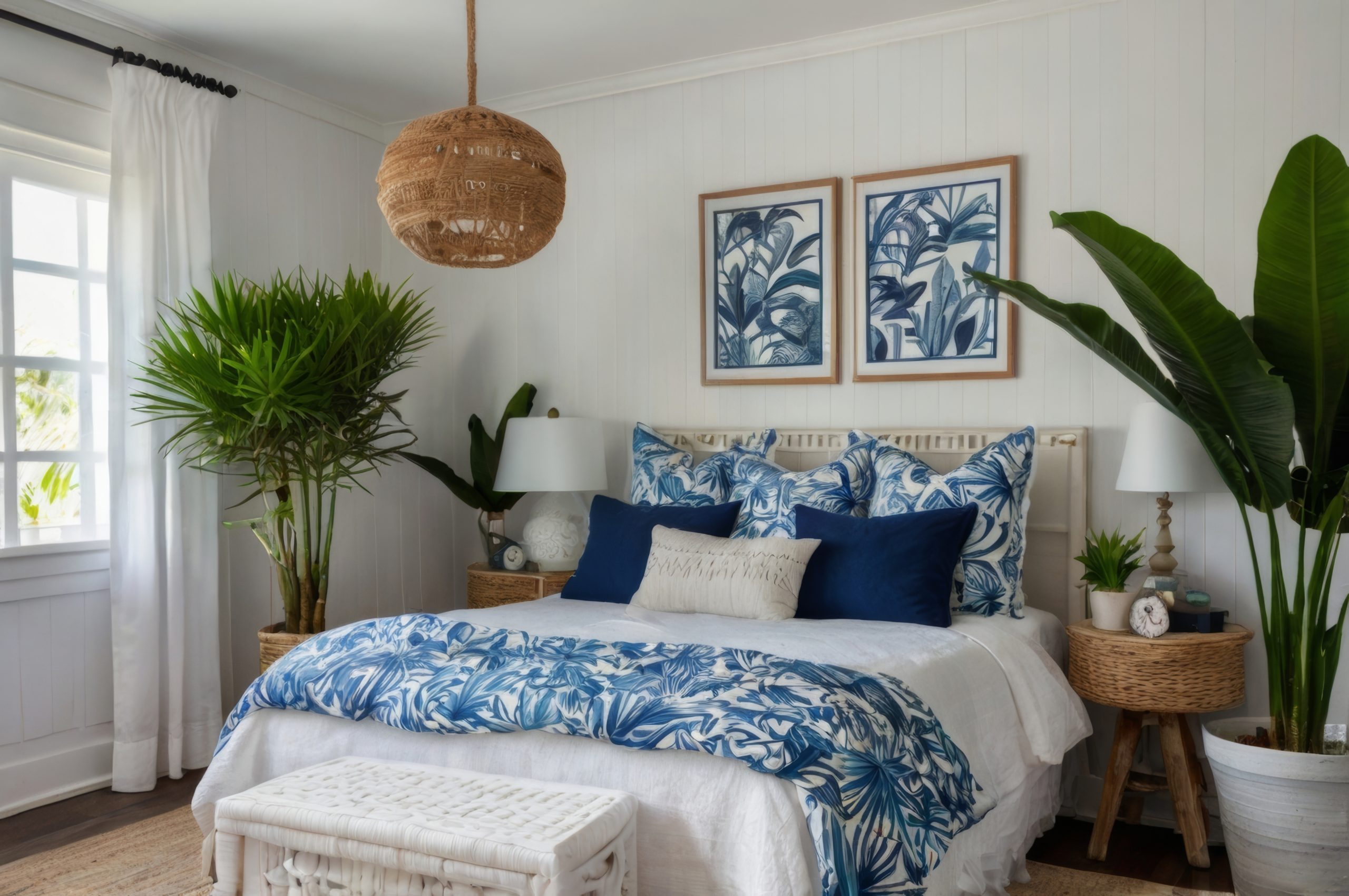
Essential Decor Elements:
- Live plants
- Natural fibre rugs
- Woven baskets
- Carved wood accents
- Shell collections
- Local artwork
- Ceiling fans
- Water features
22. Japandi
For our final style in our exploration of 22 different interior design styles, let’s discuss Japandi – a beautiful fusion of Japanese and Scandinavian design principles. This hybrid style perfectly combines minimalist aesthetics with cosy functionality.
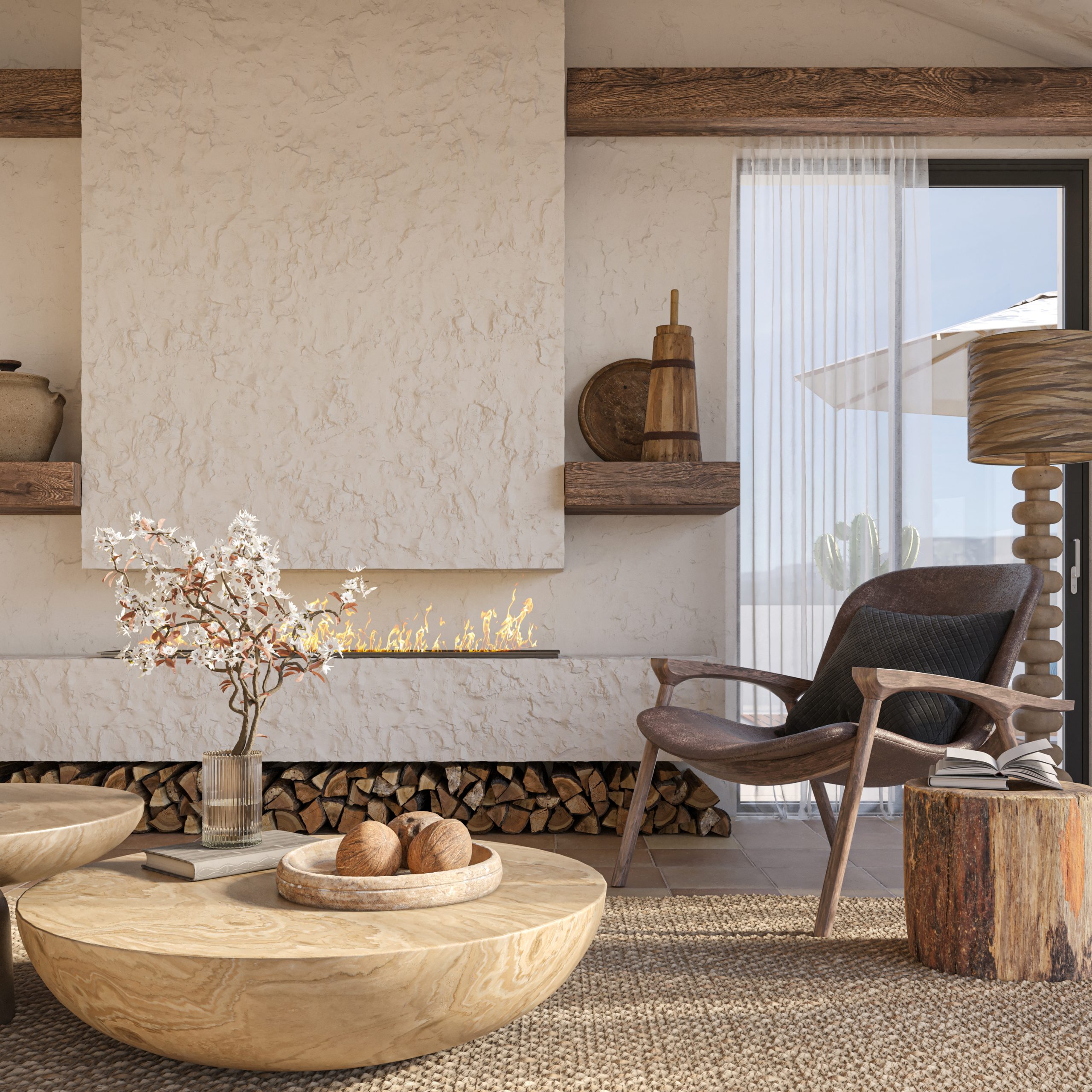
What makes Japandi special is how it marries the warmth of Scandinavian hygge with the minimalist serenity of Japanese design. Think of it as creating the perfect balance between cosy and calm, where every element serves both an aesthetic and functional purpose while maintaining a sense of tranquillity.
Key Characteristics:
- Minimalist design
- Natural materials
- Clean lines
- Neutral colours
- Thoughtful empty space
- Functional beauty
- Handcrafted elements
- Sustainable focus
Colour Palettes: Japandi embraces a refined neutral palette
Primary Colours:
- Warm whites
- Soft greys
- Natural wood tones
- Charcoal
- Earth tones
Accent Colours:
- Sage green
- Pale blush
- Deep ocean blue
- Warm rust
- Muted clay
Materials That Define the Style:
- Light and dark woods
- Natural fibers
- Paper
- Stone
- Linen
- Cotton
- Ceramic
- Bamboo
Pro Tip: When designing Japandi spaces, contrast is key – the style works best when you balance light Scandinavian elements with darker Japanese influences.
Furniture Elements:
- Low-profile sofas
- Platform beds
- Clean-lined chairs
- Minimal coffee tables
- Built-in storage
- Natural wood pieces
- Handcrafted items
- Multi-functional furniture
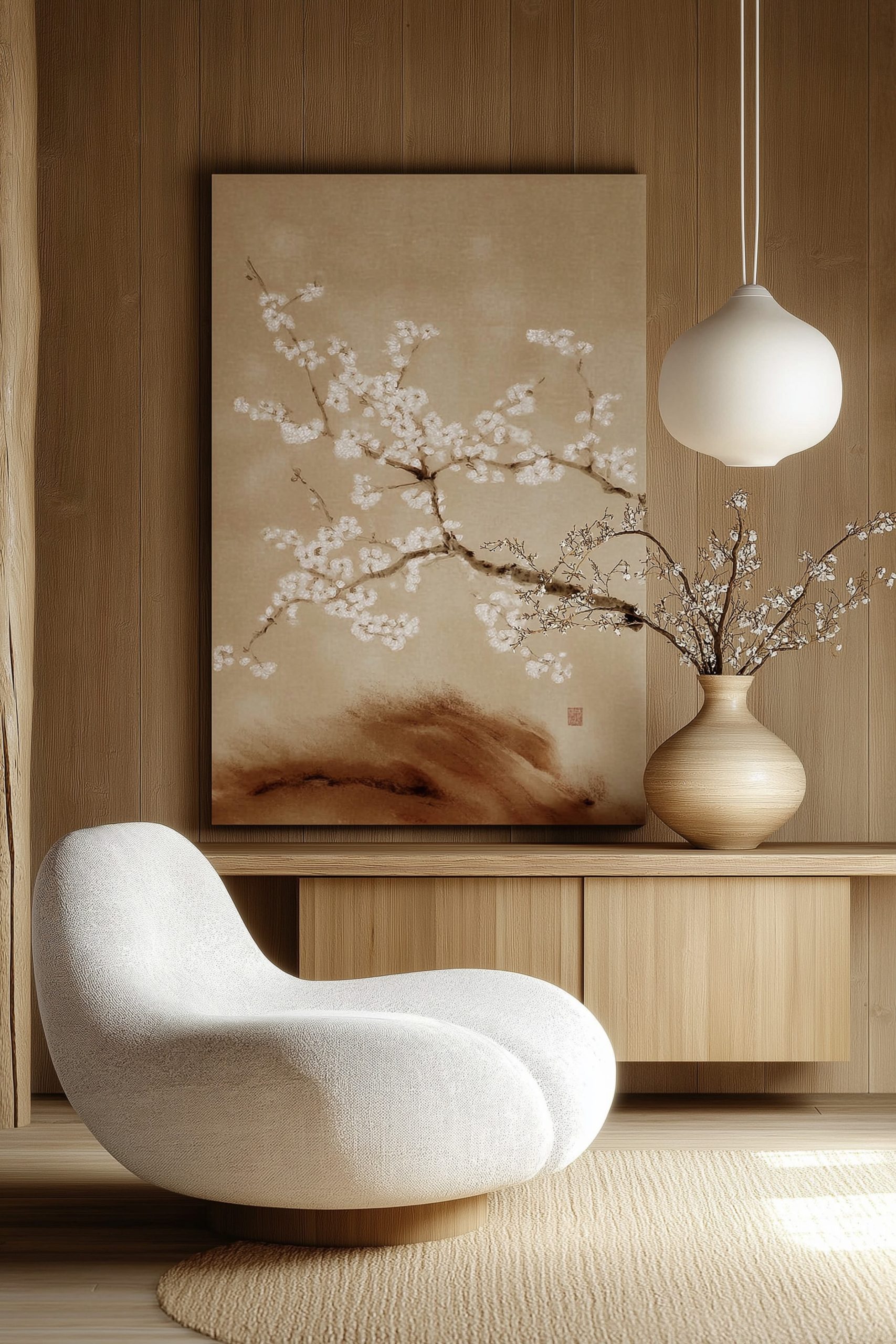
Essential Elements:
- Simple artwork
- Ceramic vessels
- Natural textiles
- Indoor plants
- Paper lanterns
- Woven baskets
- Minimal decor
- Textural elements
Space Planning:
Japandi spaces require:
- Uncluttered layouts
- Functional zones
- Clear pathways
- Purposeful furniture
- Natural light emphasis
- Cosy corners
- Storage solutions
- Peaceful flow
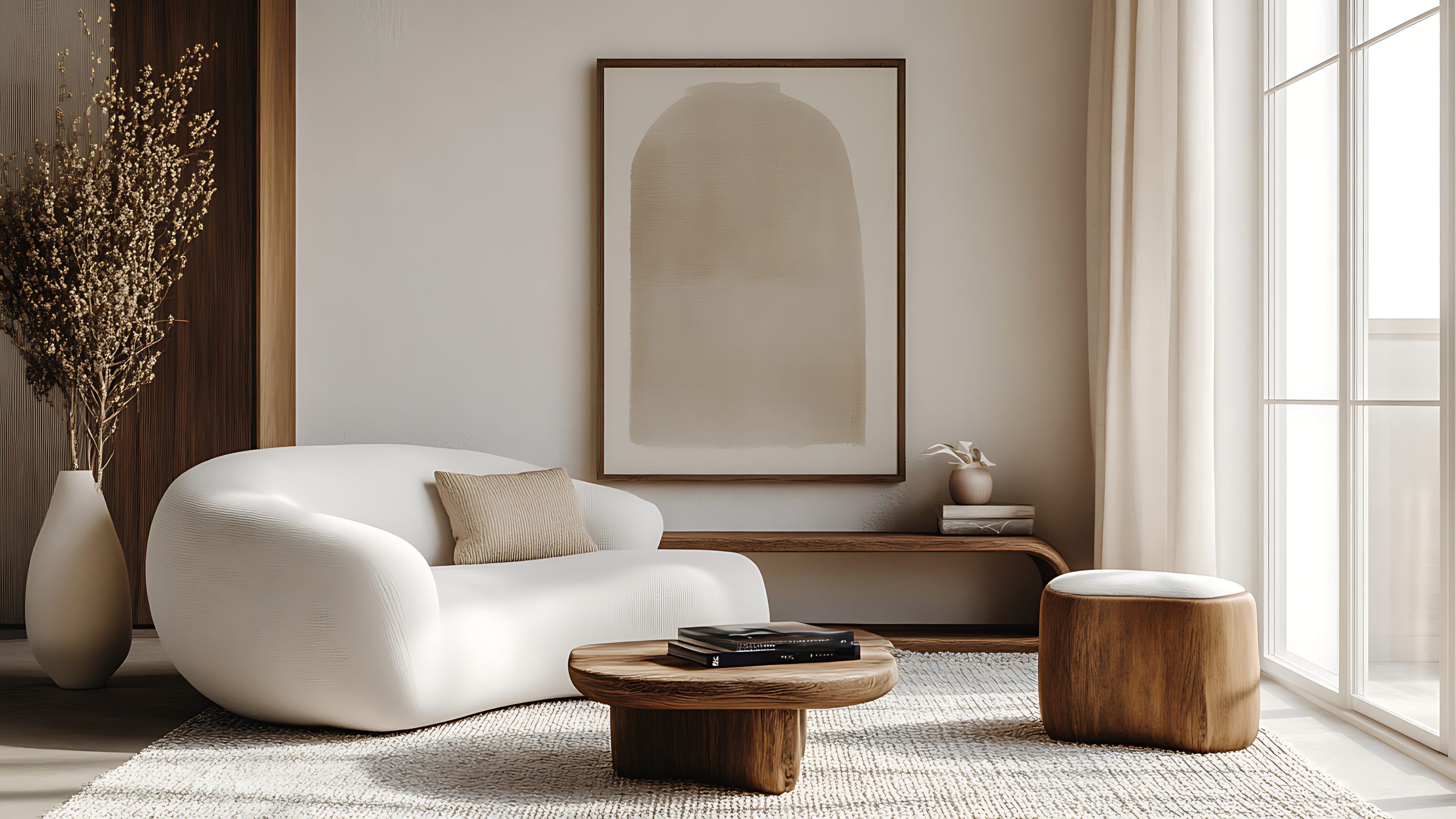
Styling Guidelines:
- Focus on quality over quantity
- Mix light and dark elements
- Layer natural textures
- Keep accessories minimal
- Include handcrafted pieces
- Add warmth through textiles
- Incorporate plants thoughtfully
- Create peaceful vignettes
Common Mistakes to Avoid:
- Over-accessorising
- Using artificial materials
- Forgetting about comfort
- Making spaces too stark
- Missing storage solutions
- Losing cultural balance
The beauty of Japandi lies in its ability to create spaces that are both practical and peaceful, minimal yet warm. It’s perfect for those who appreciate clean lines but don’t want their home to feel cold or uninviting
After exploring these 22 different interior design styles, remember that the perfect style for you might be one of these or a thoughtful combination of several. The key is to choose elements that resonate with your lifestyle and personal taste while creating a space that functions well for your needs.
How to Choose Your Style
Consider these factors when selecting your ideal design style:
- Your lifestyle needs
- The architecture of your home
- Your colour preferences
- Maintenance requirements
- Budget considerations
- Long-term livability
- Personal comfort level
- Family needs
Mixing Different Interior Design Styles
Understanding these 22 different interior design styles gives you the freedom to mix and match elements that speak to you. Here’s how to successfully blend styles:
Basic Principles for Mixing Styles:
- Choose a dominant style (about 70%)
- Add a secondary style (about 20%)
- Include accent elements (about 10%)
- Maintain a consistent colour palette
- Keep proportions in mind
- Consider the flow between rooms
- Focus on quality over quantity
- Trust your instincts
Common Successful Combinations:
- Modern + Mid-century
- Traditional + Contemporary
- Industrial + Rustic
- Scandinavian + Japandi
- Coastal + Modern Farmhouse
- Bohemian + Global
Things to Avoid When Mixing Styles:
- Too many competing elements
- Clashing colour schemes
- Inconsistent quality levels
- Forced combinations
- Overwhelming spaces
- Losing functionality
As we’ve explored these 22 different interior design styles, remember that creating your perfect space is a journey, not a destination. Whether you’re drawn to the elegance of Traditional, the clean lines of Modern, or a unique combination of several styles, the most important thing is that your home reflects who you are and how you live.
Don’t feel pressured to strictly adhere to any single style. The best spaces are often those that evolve naturally over time, incorporating elements that speak to you while maintaining functionality for your lifestyle.


